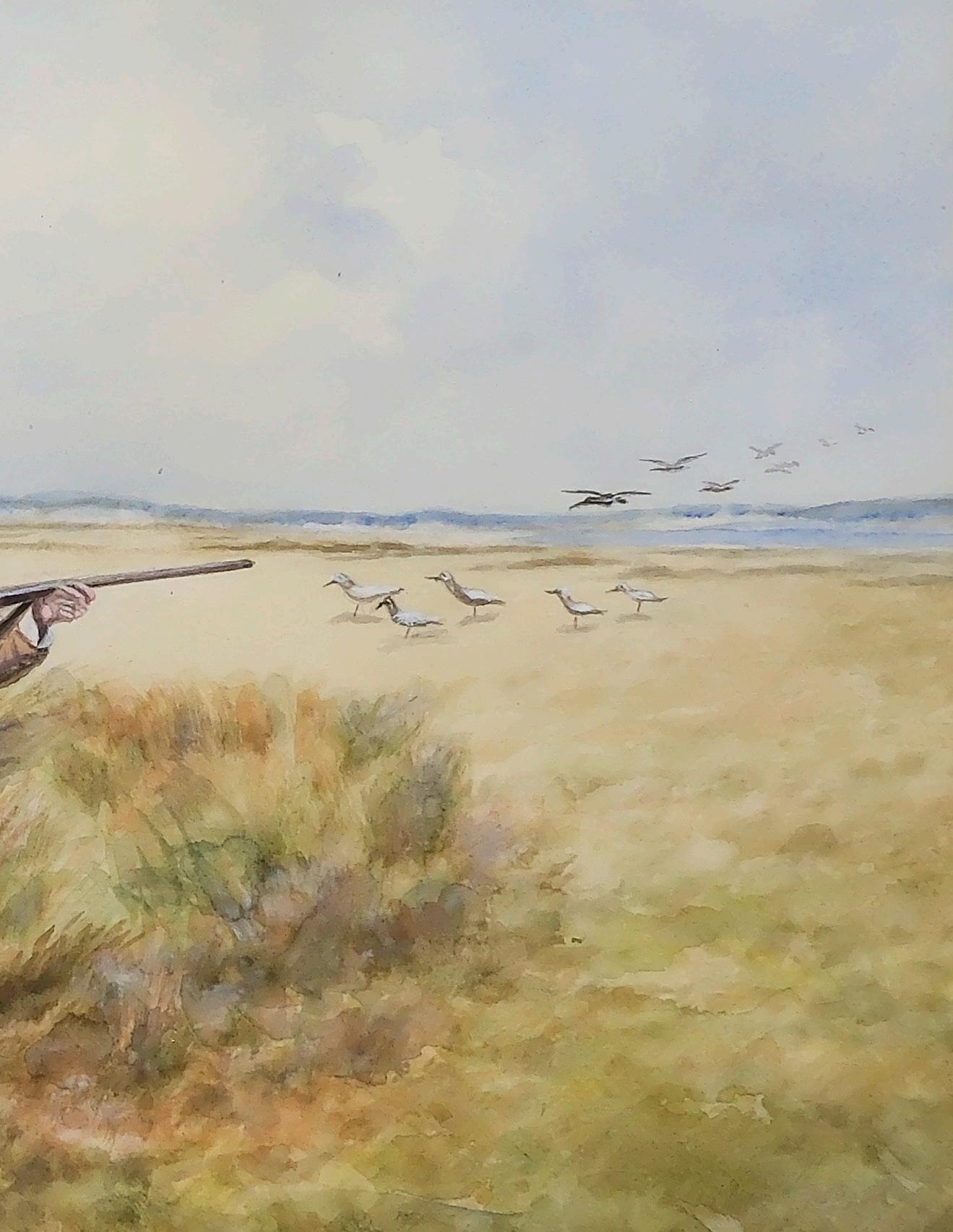

The Ted and Judy Harmon Collection Exhibit at the Havre de Grace Decoy Museum
A passion for collecting the finest Massachusetts decoys for over six decades







The Ted and Judy Harmon Collection Exhibit at the Havre de Grace Decoy Museum
A passion for collecting the finest Massachusetts decoys for over six decades




A passion for collecting the finest Massachusetts decoys for over six decades
Guyette and Deeter are honored to have been chosen by the Harmon family to assist in the sale of their cherished decoy collection, certainly one of the finest assemblages of Massachusetts decoys ever held in private hands.
For Ted, his interest in decoys, especially those from his native Bay State, began in his youth and, since the beginning of their marriage, Ted and Judy’s lives have been centered around family and wooden ducks, geese and shorebirds. The Harmon’s truly loved their decoys and the tales they held. Not every bird in their collection needed to be pristine to be enjoyed. The history of their makers’ lives and the times and circumstances surrounding the individual decoy’s use was an equally important part of the story and added greatly to their pleasure. We have tried to use this same approach in developing this exhibition catalog. In so doing we have borrowed liberally from research done by others and gratefully acknowledge the scholarship of these numerous students, authors and institutions and have listed as many of them as possible at the end of this booklet.
Bill Lapointe
Jon Deeter
Zac Cote



First, my family would like to thank the Havre de Grace Museum, Jon Deeter and Zac Cote for their support of this book and exhibition. We also have to extend our heartfelt gratitude to family friend and author Bill Lapointe for his thorough research and expert writing. Thank you all for making this project a reality.
It’s hard to say exactly when my father’s journey into the decoy collecting world began. Had his father not moved the family to Cape Cod when he was a young boy I likely would not be writing this. The family move when he was just a young boy laid the foundation for his love of the outdoors, and ultimately his appreciation for the art of the decoy.
The Cape Cod my father found was a place of dirt roads, cranberry bogs, freshwater ponds and extensive saltmarshes. Most of it was still wild and largely undeveloped. When fall arrived the summer people shuttered their homes and cottages and the motels closed their doors. What they left behind was an outdoorsman’s paradise. His home town of Osterville was full of upland game and its five saltwater bay s teemed with oysters, clams, fish and ducks. His youth was spent in these uplands, pon ds and bays of shellfishing, boating and hunting. As a young man he could throw his decoys, shotgun and trusty


lab Bridie into his old Willys Jeep and hunt any of these places without a worry. There were many nights at Sandy Neck in the duck camps as well as trips to Maine to hunt Merrymeeting Bay and Swan Island. Dad always preferred shooting over decoys with his faithful black lab Bridie by his side. Certainly, this is w here his first appreciation for decoys began.
On one trip to the Great Marshes in Barnstable, not far from where we eventually grew up, he found a Mason standard grade black duck under an old, dilapidated gunning shack. It was of course devoid of most of its paint. As any of the old hunters would do, he repainted it and hunted over it for a few years. He kept that bird for almost sixty years and to this day we still have the “cornerstone” of his collection!
So began my father’s lifelong passion for collecting decoys. Over the years he and my mother traveled throughout the country to decoy shows and auctions where he bought, sold and traded, always looking to “tuck” away a few things for his personal collection. This passion led to him opening his own auction business, Decoys Unlimited Incorporated. The business operated for over thirty years and allowed him to continue learning and sharing his knowledge with his fellow collectors. In time his personal collection grew to represent many of the finest New England shorebi rds and decoys in the country. Decoys from his personal collection have been exhibited at the Heritage Museum and Gardens, Peabody Essex Museum, The Riverfront Museum of Peoria and Massachusetts Audubon, among others.
This book represents many of the best and most important Massachusetts decoys my father acquired during his fifty plus years of collecting. It is also a chronicle of the men that made them, where they were from and how they lived. Our family sincerely hopes that you enjoy looking and learning as you turn through the pages of this unique history. It is a fitting tribute to my father’s lifelong passion for collecting and the importance of these decoys and the men that made them.
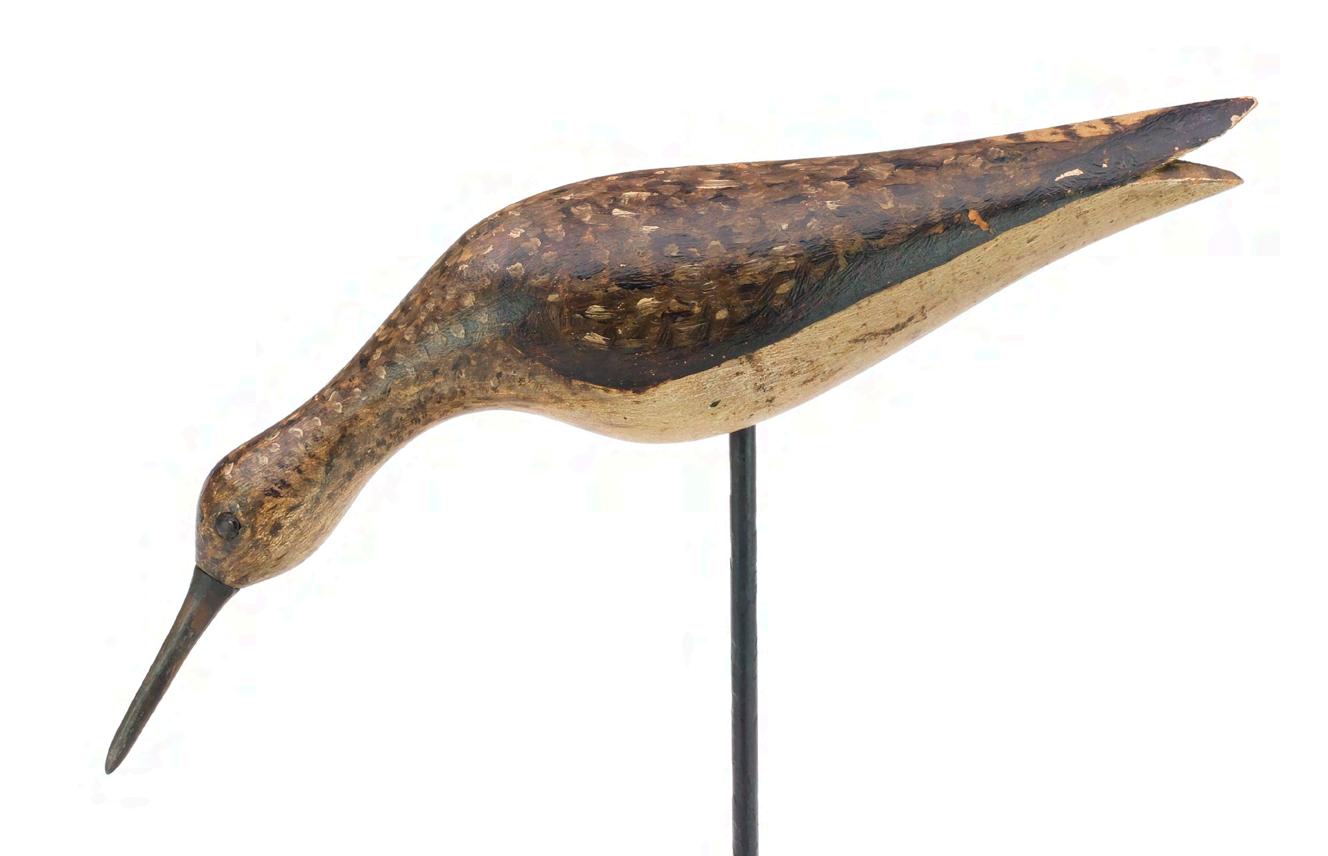
Enjoy!
- Steven Harmon

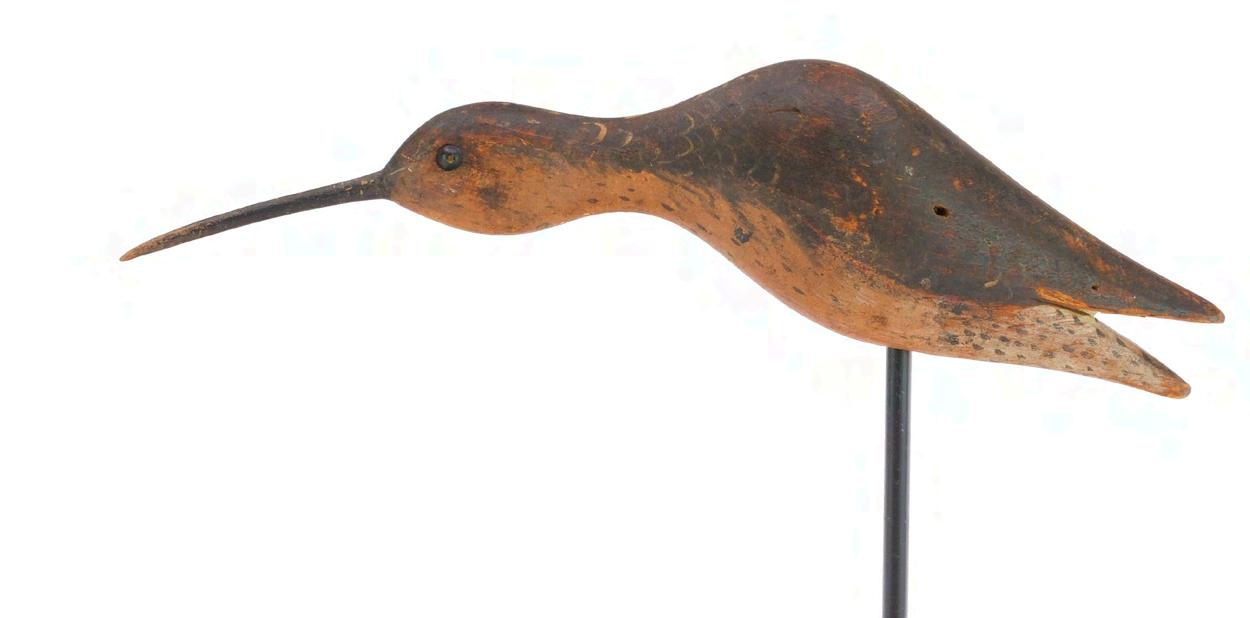
Fundamentally, the hunting of ducks, geese and shorebirds in Massachusetts is no different than pursuing them in any other part of North America. There are, however, some aspects of the hunt that somewhat distinguish the State from other areas. Some of this may be due to its physical location on the migration route(s) of the various species. Eiders, at least during the “golden age of shotguning”, were rarely found much further south than Cape Ann at the northern end of the State. Likewise, species such as the canvasback, so very prevalent and popular in the Chesapeake, were considered rare visitors to Mass. If Massachusetts was to have a State duck it would undoubtedly be the black duck and, perhaps, more decoys were carved for that species than any other. Other waterfowl were also found in abundance, Canada geese were plentiful, provided great sport and were excellent table fare. Scoters were abundant and, so, most decoys found for them today, came from Massachusetts. On Cape Cod, in particular, mergansers were seen in numbers and, although of questionable culinary value by some, many extremely fine decoys meant to attract them were carved. Typical Yankee frugality also entered the carver’s decision making when it came to making a decoy. Why carve a bird for mallards, if they would be easily drawn to a replica of a blackduck and, similarly, goldeneyes would get most other divers to, at least, swing by the rig. Shorebirds of many species were plentiful in great numbers from north to south and the State possessed acre upon acre and mile upon mile of favorable marsh, meadow and beachfront that attracted the birds.
In terms of the decoys, there existed a great deal of diversity. There was no set “school of carving”, and everyone felt free to express their own design ideas. The birds tended to be solid with a some notable exceptions. There were a few unique designs such as Joe Lincoln’s singular “self-bailers” and the canvas covered method
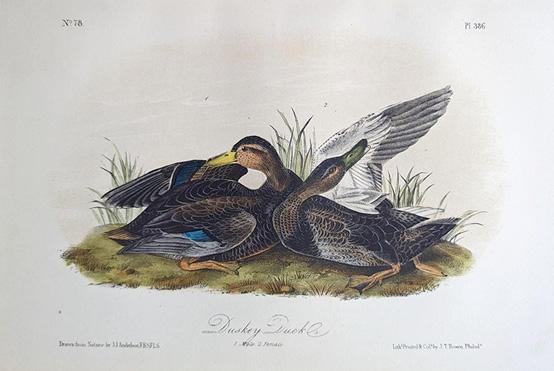
of construction which saw some popularity on a regional basis. Some areas favored the use of keels while others did not. The heads were mounted both directly onto the body or mounted on a slight neck shelf. The hunters favored slightly oversized birds, many of which featured some form of carved wing detail. With the exception of gunners on the North Shore leaning towards the use of skull boats, there was no distinctive watercraft in widespread use, such as New Jersey’s well known sneak boats. Most hunters simple utilized whatever was the locally accepted design for a small, rugged skiff. More so than those for ducks and geese shorebird lures were commonly hollow carved, and hunters tended to favor a split tail design. Because the shorebird decoys had to be carried some distance, weight was a consideration, and “flatties” were very common.



Residents of the Bay State hunted what was available, first for food, then monetary profit and, finally, sport. They simply developed hunting methods that were best adapted to the game being sought. This resulted in activities such as the practice of line shooting for coot and the development of highly specialized camps for specific species, such as Canada geese and brant.
Massachusetts, like all states, has firmly drawn boundaries. Needless to say, these have little effect on the movement of birds. The marshlands and beaches on the State’s northern border blend seamlessly with those
in adjoining southern New Hampshire. Likewise, the salt ponds and other habitats along the southern border continue into and mesh with those in abutting Rhode Island. Just like the birds, the human hunters at both boundaries of the State influenced, and were influenced by, their counterparts immediately across the State lines.
Finally, Massachusetts has a proud and distinguished reputation for conservation. The State has produced many of the most influential individuals at the forefront of wildlife management and habitat protection, and this heritage continues to this day.
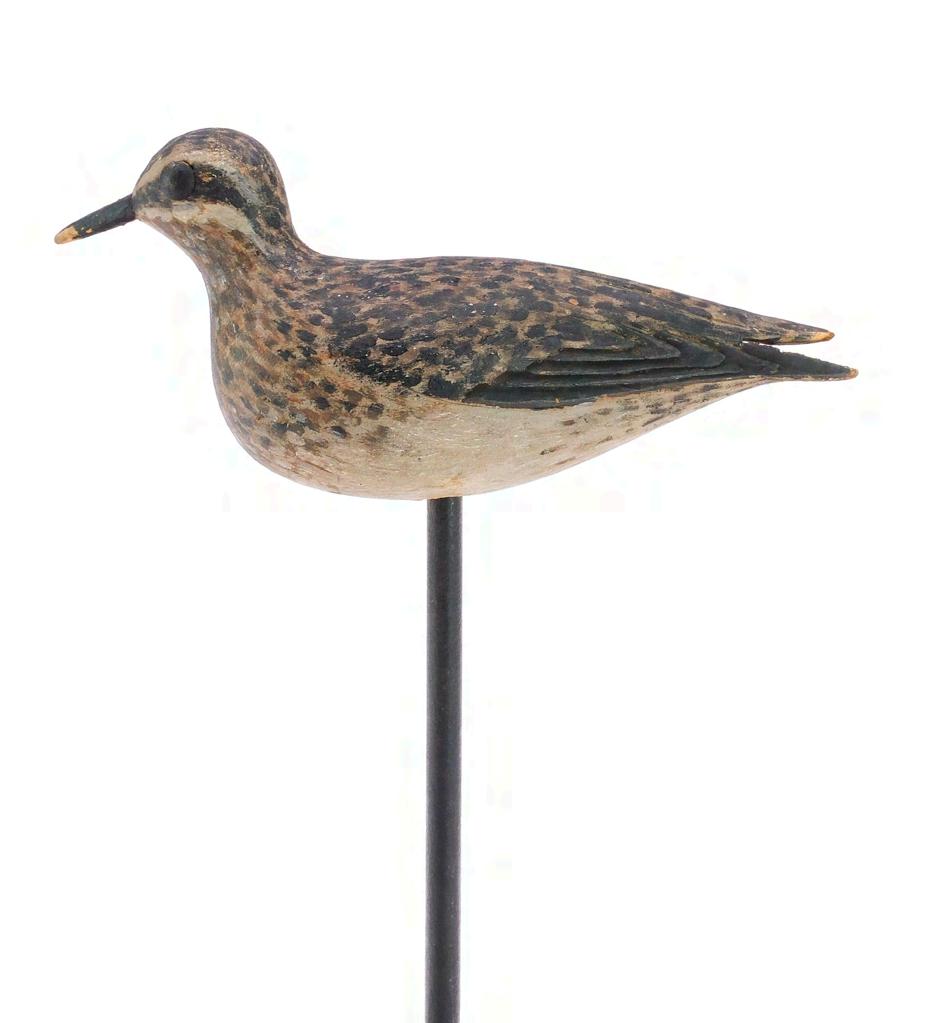



The land mass that we know today as Massachusetts cannot be well understood without a brief mention of the glaciers and ocean currents, both of which played pivotal roles in forming the area. Roughly 12,000 – 15,000 years ago the last of a number of mile high sheets of ice advanced southward. This ice required immense volumes of water in order to form and the state’s shoreline was as much as 400 feet lower than it is today. As the ice advanced, its incredible weight ground down the tops of mountains to the north and absorbed this material either within itself or, pushed it up, bulldozer like, along its advancing face. This can be clearly seen in the piles of earth that are today’s Nantucket, Martha’s Vineyard and Elizabeth islands. The States most notable landform, Cape Cod, clearly marks the southernmost extent of the most recent glacial advance. The ice would also be instrumental in forming the ultimate path of the area’s rivers, the locations of its many swamps, and the formation of so-called “kettle ponds” on the Cape and elsewhere. The ice is also directly responsible for depositing the tons of materials needed for the hundreds of miles of New England’s iconic stone walls.
Once the basic shape of the land was developed, major ocean currents, one flowing down from the north and another, even larger, flowing up from the south, carried suspended sediment that would ultimately settle out and result in the formation of major barrier beaches. In turn, these beaches would allow for the development of vast marshlands on their leeward sides. Most notable of these can be seen today in northern Mass in the area of Plum Island, on the Cape with the Barnstable Great Marsh as well as those marshes along the outer arm of the peninsula and, finally, on the south coast in the area of Westport and Dartmouth. Sand -spit islands both large and small can also be attributed to these ocean flows, notably Monomoy on Cape Cod. These wind and water borne shifting sands continue to shape the shoreline of Massachusetts today.
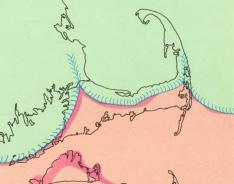

Most people are aware of Massachusetts and its place in history. The story of the pilgrims landing in 1620 is known to every school child in the country. The menu served at the first Thanksgiving may well have included the native cranberry as well as some sort of waterfowl. As the population began to grow, settlement began to rapidly radiate out from Plymouth. The state’s northernmost town, Salisbury, had been settled by 1638 and Westport, to the south, (originally part of Dartmouth) was settled in 1652.

Population growth and the expansion of towns was not without incident. In 1675, animosities and other disputes with the local indigenous people, the Wampanoags, over land ownership reached the boiling point. Metacomet, (the son of chief Massasoit who had initially befriended the English) staged a bloody two-year war with the settlers with devasting results to both sides. The colonists would ultimately prevail, but at the expense of 600 of their own lives. Seventeen white settlements were destroyed, and fifty additional settlements damaged. The native tribes suffered an even worse fate, being practically wiped out. King Phillip’s war, as it was known, was the bloodiest conflicts (per capita) in all of U.S. history.
The road forward continued on its bumpy journey. Internal religious conflict had always been an issue. Roger Williams was banished from the colony in 1636 “for holding four dangerous (religious) opinions at variance with official policy” and he and a group of followers left to establish what was to become today’s Rhode Island. In 1692 – 93, in the town of Salem and neighboring communities, religious hysteria would result in over two hundred people being accused of witchcraft, resulting in the death of around 25 innocent members of the community.
On the local and regional level, political unrest would occupy the lives of the residents for the next few generations. Land disputes would ultimately be resolved, establishing the boundaries of today’s towns and even the current State lines of much of the rest of today’s New England. Internationally, all are familiar with the wellknown stories of the “Ride of Paul Revere” and “The shot heard round the world” resulting in the ultimate split from England and the formation of our country.

Religious and political conflicts becoming somewhat resolved, economic growth could resume. Early on, Plymouth, due to its shallow harbor, lost its prominence as Boston became the colony’s seat of government, business, education, and the arts.
The glaciers were not overly kind to New England, including Massachusetts. Literally billions of stones, both large and small, covered the thin soil as they were deposited due to the melting of the ice. Traditional crop production was tedious at best and people either planted the few crops that were suited to the existing soils or resorted to the sea. Favorable ports, ranging from those on Cape Ann to the North, to Westport on the South coast, all developed large and profitable fleets plying the rich offshore fishing grounds. Towns such as Nantucket and New Bedford would gain world prominence as centers of the whaling industry. Other towns would develop their own niches as centers for a wide variety of industries, particularly shoe making and textile mills. Many citizens prospered and some became extremely wealthy. Leisure time and financial security meant that hunting for sport could be enjoyed, and this required decoys. Massachusetts carvers responded by producing some of the very finest decoys ever produced in North America.
Conservationist
The roll of Massachusetts men and women in the formative years of what we might refer to today as the conservation or environmental movement cannot be overestimated. Many of the State’s early sportsmen and sportswomen were also avid amateur naturalists/ornithologists and, fortunately for us today, many wrote profusely, and many kept detailed diaries or journals. As early as 1854, Concord, MA born Henry David Thoreau (1817 – 1862) published his influential “Walden or A Life in The Woods”. Of the turn of the century sportsmen/naturalists, perhaps the best known would be Dr John C Phillips (1876 – 1938) who wrote extensively in both sporting and scientific publications. He also had the means by which to privately publish so many of the books that we enjoy today which documented the sporting life of the times. He was not alone in his zeal. The Nuttall Ornithological Club, the first of its kind in the country, was formed in Boston in 1873 with William Brewster (1851 – 1919) as its first president. Brewster was, as so many of the ornithologists of the time, a Boston gentleman of means with an insatiable curiosity about the natural world. From 1876 through 1883 the club published its own journal, “The Bulletin of the Nuttall Ornithological Club” which recorded many of the early waterfowl collecting trips of club members. In 1883, the Bulletin was handed over to the newly formed American Ornithological Union (AOU) who continued publication under the name of the “AUK”.
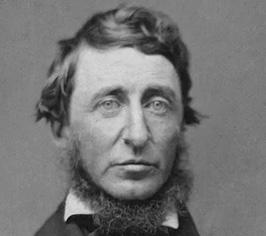
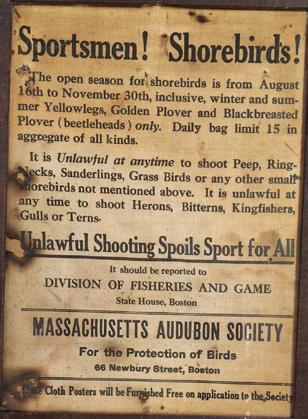


In 1896, outraged by the wholesale destruction of birds for the millinery trade, two wealthy Boston women, Harriet Lawrence Hemenway and her cousin Minnie Hall, formed the Massachusetts Audubon Society, the first of its kind in the country. The ladies possessed important connections to Boston society and, perhaps more importantly, their husbands had similar influence with other wealthy Boston businessmen. The group soon drew support from the wives of influential Massachusetts sportsmen, such as Mrs. John C Phillips and others. Their husbands, in turn, were responsible for attracting other Boston hunter/sportsmen to the cause. Men such as George Henry Mackay and Harvard professor Charles Sedgewick Minot (1852 – 1914) served as early directors.

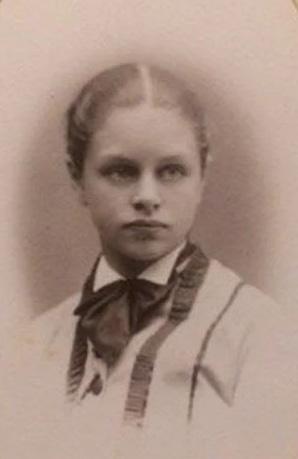


The formation of Mass Audubon fueled the creation of numerous other ornithological clubs throughout the state. These clubs were extremely popular with both birders as well as sportsmen and artists. The Essex County Ornithological Club could be considered typical. It boasted among its many members, men such as John C Phillips, carver extraordinaire Fred Nichols (1854 – 1924) of Lynn and noted Salem sporting artist, Frank W Benson (1862 – 1951).
Harvard University was the preferred institute of higher learning for the Massachusetts elite. Among its repertoire of talented professors was Louis Agassiz (1807 -1873). His zoology courses were extremely popular and decoy carver Newton Dexter (1838 – 1901), of Rhode Island’s Gardner/Dexter decoy fame, accompanied him on a collecting expedition to Brazil in 1865 as the trips head marksman. Similarly, in 1876, Massachusetts Institute of Technology professors Edward Charles Pickering and Samuel Hubbard Scudder joined with other Boston based academics to form the Appalachian Mountain Club to encourage mountain exploration and preservation in the northeast. Again, this was the first group of its kind in the country. It was at institutions such as Harvard and MIT that many of the State’s wealthy sportsmen not only received their education


but also formed lifelong associations with other, similarly trained individuals. The so called “old boy network” was very much alive and well. These were the men that traveled to prestigious hunting clubs on the Chesapeake and further south, and these were the people who had memberships or were invitees to the best of the Massachusetts hunting opportunities. Many of these individuals would become patrons of Elmer Crowell and send him on his meteoric journey to become the father of American bird carving.
Through the 19th and 20th centuries, Massachusetts continued to play an active role in the conservation of our natural resources. In 1944, The New England Forestry Foundation was founded in Littleton. In the 1950’s, Duxbury’s Olga Owens Huckins had turned her property into a private bird sanctuary. When she noticed many of the birds on the property were dying after the arial sprays for mosquitos, she contacted a person she knew who wrote for the U.S. Fish and Wildlife Service to see what could be done. That person was Rachael Carson who penned the 1962 epic book, “Silent Spring”, which ushered in the beginnings of a national awareness of the dangers of pesticides. These are only a few of the many stories of Massachusetts Sportsmen/ Naturalist that have had a positive impact on conservation nationwide

“Upon ye beach they spied great multitudes of birdes of manie kindes, they being there to pick up ye wormes and little fishes. They ha bills wch they thrust into ye little holes in ye sand and pull up ye fat wormes with great relish. Ye beach birds are verrie shy and quick a-wing but our sportsmen, nevertheless do bring down great plenty for their own use and if need to supply their plantations”.
(Obediah Turner, Lynn, MA 1638)
Shorebirds were actively hunted in Massachusetts from a very early date. Initially, regardless of the above author’s reference to “sportsmen”, the pursuit would have been solely for sustenance. Did the colonists simply ambush the birds or were the indigenous people already using basic decoy forms? Obviously, we can never be certain, but at some point, again presumably very early, the shorebird decoy emerged in Massachusetts. We have to assume that these initial attempts at mimicking a live bird would have been very simple creations, likely a form of basic root head construction. Development probably advanced slowly, after all, there were a multitude of necessary daily activities that would occupy all of the early settler’s time and energies. At some point, likely in the 1700’s, life became a little easier and there were the very beginnings of something that resembled free or leisure time and the decoys that actually looked something like a real bird may have begun to emerge.

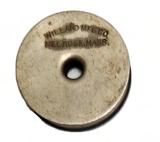

By the early 1800’s, with the rapid growth in population numbers, especially in the cities, the market hunter en tered the scene. Game of all sorts was targeted, includ ing shorebirds. The birds were shot by family members for their own consumption and any excess could be readily sold through local markets. Others pursued the birds purely for profit. There are numerous records of shipments of huge quantities being iced down in barrels and shipped to markets in Boston, Providence (RI), and beyond. Noted Massachusetts ornithologist, Edward H Forbush, reported that on August 29th, 1863, between seven and eight thousand golden plover and eskimo curlew were killed on Nantucket and Tuckernuck and that “- - - all the powder and shot on the Island was expended and the gunners had to send to the mainland for more” . As abhorrent as this may seem today, this was a widely accepted practice that provided income for many rural families and the birds were considered fine table fare, appearing on the menus of some of the
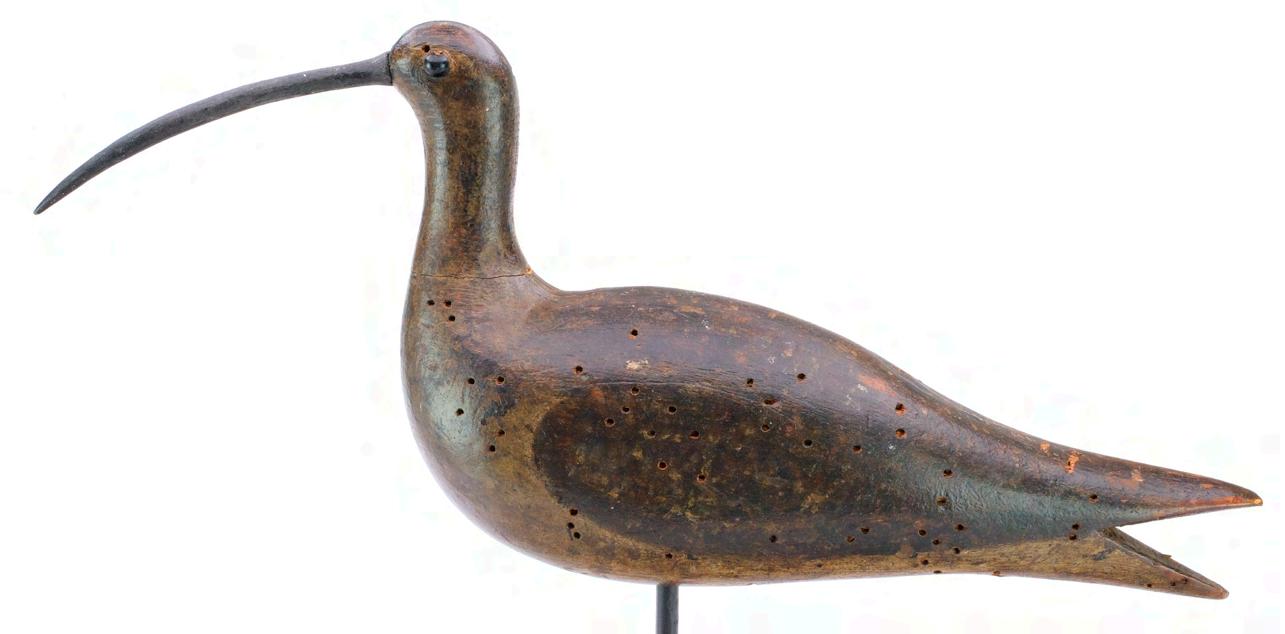

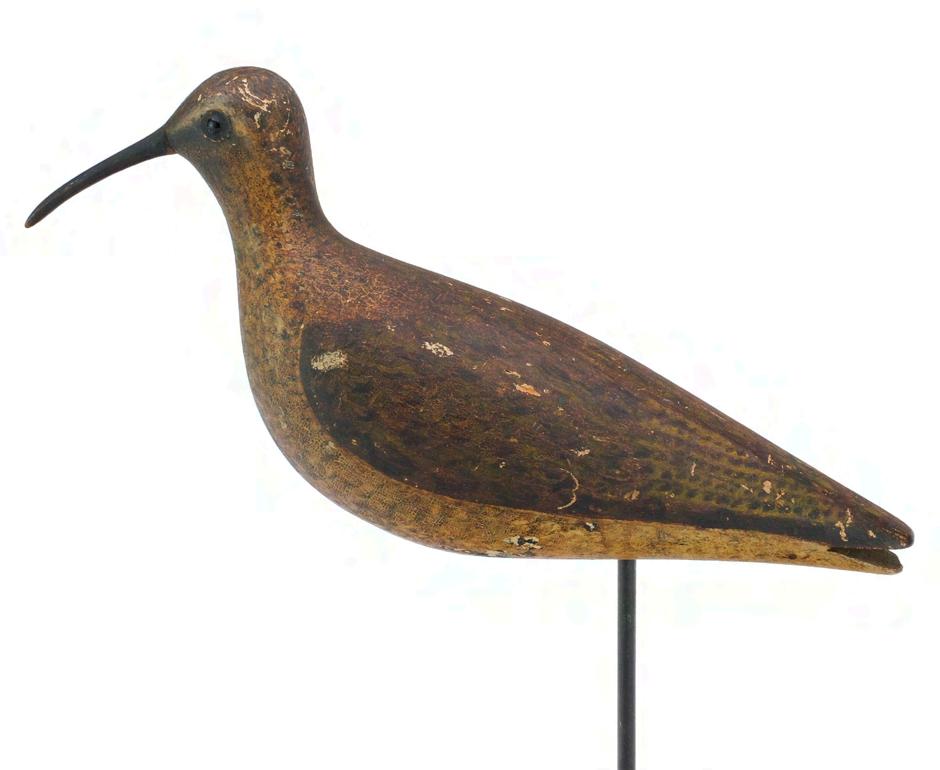
By the mId to late 1800’s the sportsman would rivel the market hunters in the hunt. These individuals certainly had the time and resources to make or purchase decoys of better and better quality. This was not unique to Massachusetts. Certainly a few carvers of distinction emerged at other locations along the coast, notably on Long Island, New Jersey, and Virginia. What would set Massachusetts apart, however, was the number of carvers that went far beyond what would have simply sufficed to lure the birds to the gun. As Elmer Crowell himself once commented, “_ _ _ yellowlegs were so stupid they would decoy to a sock on a stick”
Competition among the hunters would have inspired some to produce decoys that were more lifelike and superior to those used by others and, thus, some extremely fine carvings were created. These individuals not only advanced the painting of the birds, but they produced probably the greatest number of decoys in poses that went far beyond the basic and simple erect, straightahead position. Keen observers of the living birds, the carvers produced birds that were running, feeding, preening, sleeping or gazing to the right, left, or upward. Some even attempted to impart life into the carvings with wings that would flap when activated by a string, or birds that would gently bob and sway in the wind.

This desire to more closely mimic the live bird was probably due to a number of factors. Most notably, shorebird hunting was extremely popular. Many species of the birds were drawn to the extensive favorable habitats that the State possessed. The Cape and Islands, in particular, jutted out to sea and intersected the migration routes of many of the birds. Presumably, better decoys would draw in more birds, but that alone would not be sufficient cause to produce some of the carvings that were executed. Certainly, for some, the carvings provided an outlet for suppressed individual artistic leanings or a latent creative talent. The one thing that undoubtedly influenced many of the carvers, either knowingly or otherwise, was the upsurgence of interest in all aspects of nature study and ornithology throughout the State. Bird clubs, both large and small, could be found ranging from the halls of Harvard to church and grange meeting rooms from north to south. Avid gunners and carvers such as John C Phillips and Fred Nichols on the North Shore were active members of the Essex County Bird Club, George Henry MacKay of Boston was an early director of the Audubon Society, Charles Safford became the first game warden on Plum Island and Joe Lincoln and Gordon Mann on the South Shore were active members of the local horticultural society. The subjects were considered important enough to be included in many school curriculums statewide and many of Elmer Crowell’s sets of miniature carvings were destined for classrooms or libraries. As a more practical matter, these were the days when travel relied on horseback or on foot. Weight and bulk were concerns, especially as the rigs got bigger and bigger. To address these issues, decoys carved to an eggshell thinness were created as were thin flatties. Some creative individuals experimented with lightweight materials such as paper mâché. The lightweight, collapsible “tinnie” was created in Boston by the firm of Strater and Sohier in 1874 and became extremely popular. What resulted from all this interest and creativity were shorebirds of a quality and variety not equaled in any other part of the flyway.


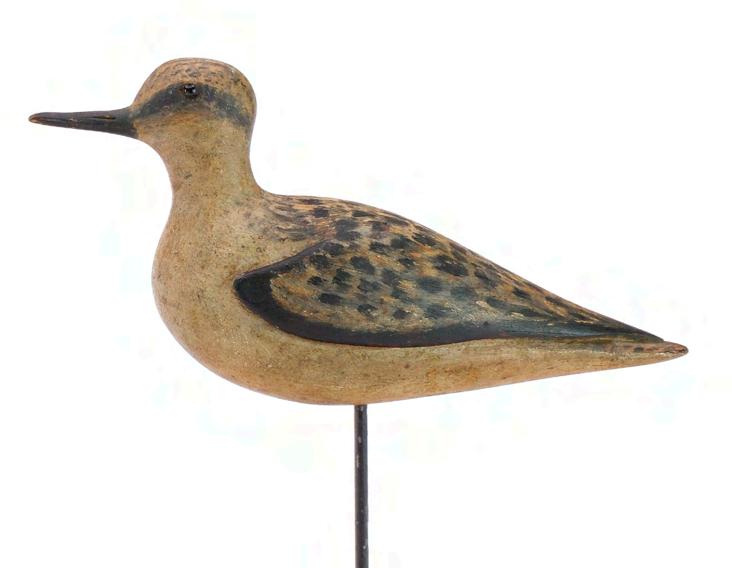
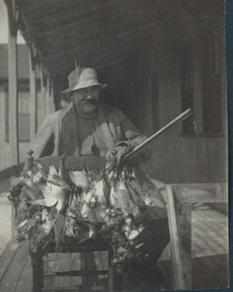

Decoys for a wide variety of species of shorebird were carved, ranging from the tiny sanderlings and sandpipers (collectively referred to as peeps) to the large willets and curlews. Some species, such as ruddy turnstones, were seldom carved while others, such as plovers, yellowlegs, and dowitchers were produced in abundance. As one would expect, decoys found in any particular area would be indicative of the live birds that frequented that region. Carvings meant to represent golden plover and eskimo curlew for example were most prevalent from the outer Cape to the Islands, especially Nantucket and its two smaller neighbors Tuckernuck and Muskeget.
The birds themselves would arrive in the State at staggered times between late spring and early fall. The two migrations of yellowlegs, for example, did not coincide. The lesser yellowlegs, or summer yellowlegs, would typically appear in mid July and depart by late August, while the greater, or winter yellowlegs, would arrive in late August and, in some years, linger into November. This was contrary to many of the duck and goose species which occupied the gunners from fall through the harsher winter and early spring months. This meant that the shorebird hunter did not need to face uncomfortable weather conditions to be successful. Quite the contrary. The typical shorebird hunt more closely resembled a pleasant day at the shore where the birds were hunted in a comfortable, leisurely fashion and the term
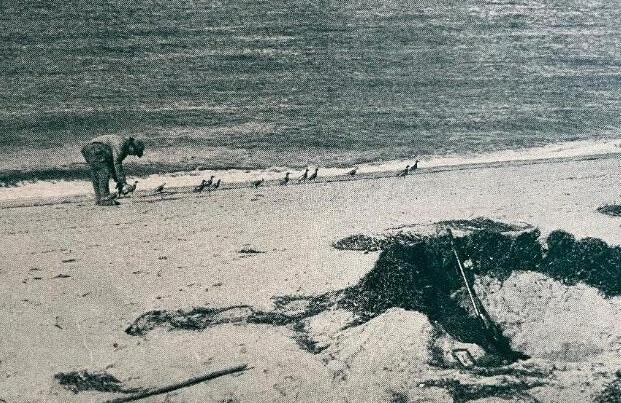
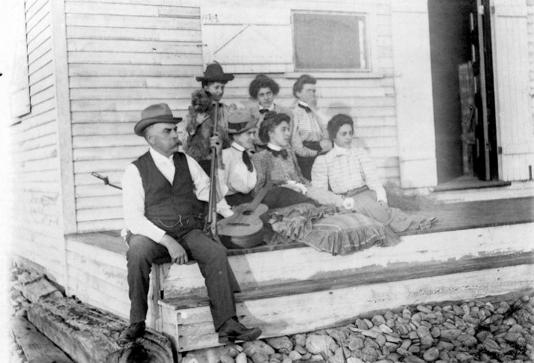
“The genteel sport” best described the pursuit. Certainly, some women hunted ducks and geese in the typical manner, but far greater numbers would have been seen waiting for the whistle of an approaching bunch of shorebirds. Husbands took their wives and fathers took their daughters. Writing in the September 1880 issue of “Scribner’s Monthly”, South Coast Dartmouth summer resident, Alice Wellington Rollins, penned: “ Nor shall you be confined to the silent companionship of flowers and leaves - - -or the white throated plover falling as easy prey to your gun”.
Contrary to the common image of a singular gunner, comfortably crouched behind a few sparse twigs on a sandy beach, a variety of blinds were employed to conceal the hunter. Yes, that simple assemblage of twigs would occasionally be employed but, more commonly, shallow pits were dug in the sand. These would be located along the “wrack line”, that area where the waves deposited loose rows of seaweed and small ocean debris. This placed the hunter as close to the water as possible and made it easy to disguise the pit by ringing it with handfuls of the surrounding seaweed and flotsom. This type of blind would be employed when pursuing those birds that were, truly, beach birds – the peeps, dowitchers and their brethren.
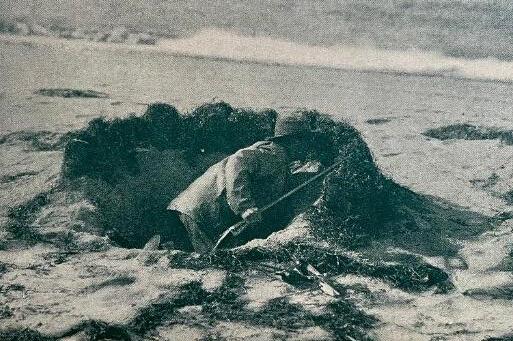


Those species more attracted to the marsh, such as yellowlegs, would usually encounter more elaborate “brush blinds” built on small hummocks in the marsh or, occasionally, a hunter concealed in a sunken barrel (hogshead) on the marsh itself. These barrels were effective but also involved almost daily bailing out.
Where golden plover and eskimo curlew were the targets, such as on the outer Cape and Nantucket, the birds were hunted on the upland moors where they would be found feeding on insects. The hunters would often purposely burn over an area prior to the birds arrival to encourage fresh grass to grow and entice a healthy insect crop. Here pits, again, were employed, and care taken to remove what was dug out so as to make the hides less conspicuous. On Nantucket, the remnants of a number of these are still to be seen today on the moors. As one would expect, there were no hard and fast rules when it came to the hunt, and blinds were adapted to whatever the surroundings required. The majority of the time, these would hold no more than one or occasionally two hunters but there were instances where rigs were combined to accommodate groups of hunters allowing for a larger decoy spread.

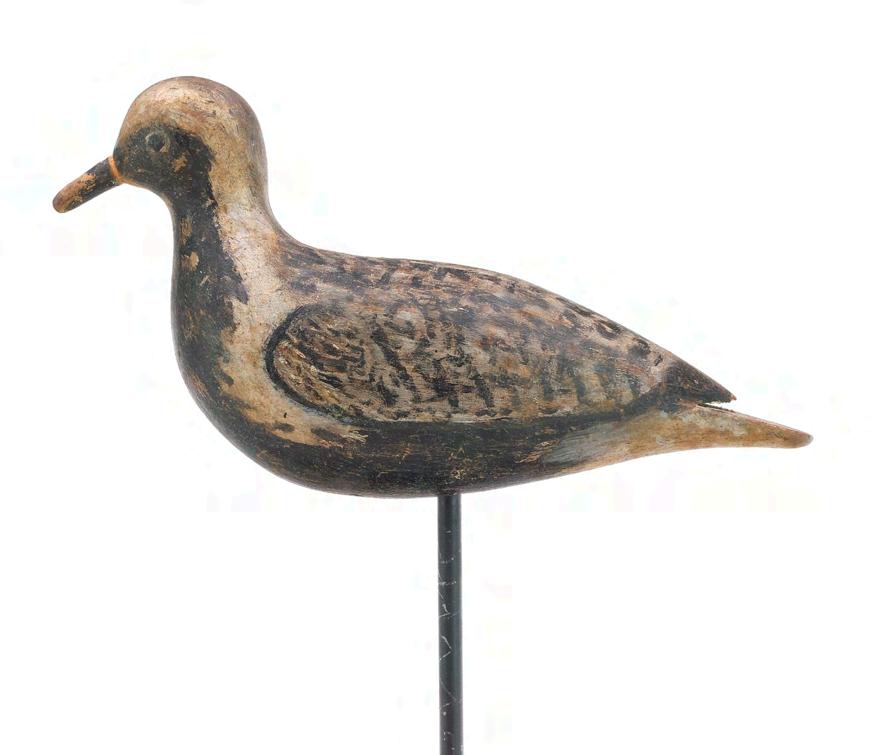


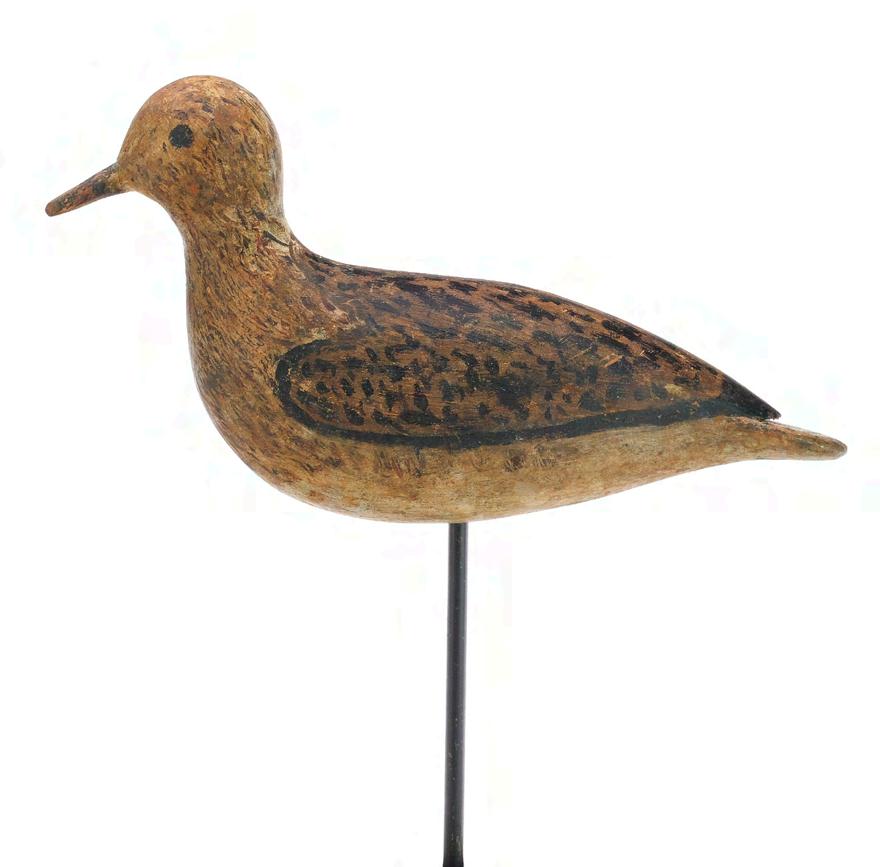


Occasionally, when the birds would not decoy, a few more adventurous spirits would creep along the beach and attempt to ambush groups of feeding birds as they moved down the shore. An article printed in a December, 1906 issue of “The Outing Magazine” goes so far as to suggest that the hunter sew large leather pads on their shoes, much like a smaller version of a snowshoe, to aid in working across the soft sand as well as sewing the legs of one’s trousers to the shoes so the sand would not find its way in during the ambush.
Certainly, shorebirds were hunted from north to south in the State, and decoys of distinction were created in all areas. Just over the border in New Hampshire, George Boyd produced some “finely carved and nicely painted” examples, many of which were sold in Boston sporting goods stores. On the North Shore, outstanding carvers such as Thomas Wilson and Fred Nichols, produced lures that would be the envy of the many ornithologists that frequented the area. On the north fringe of Boston, Melvin Gardner Lawrence produced an almost indestructible array of birds that were a joy to look at. On
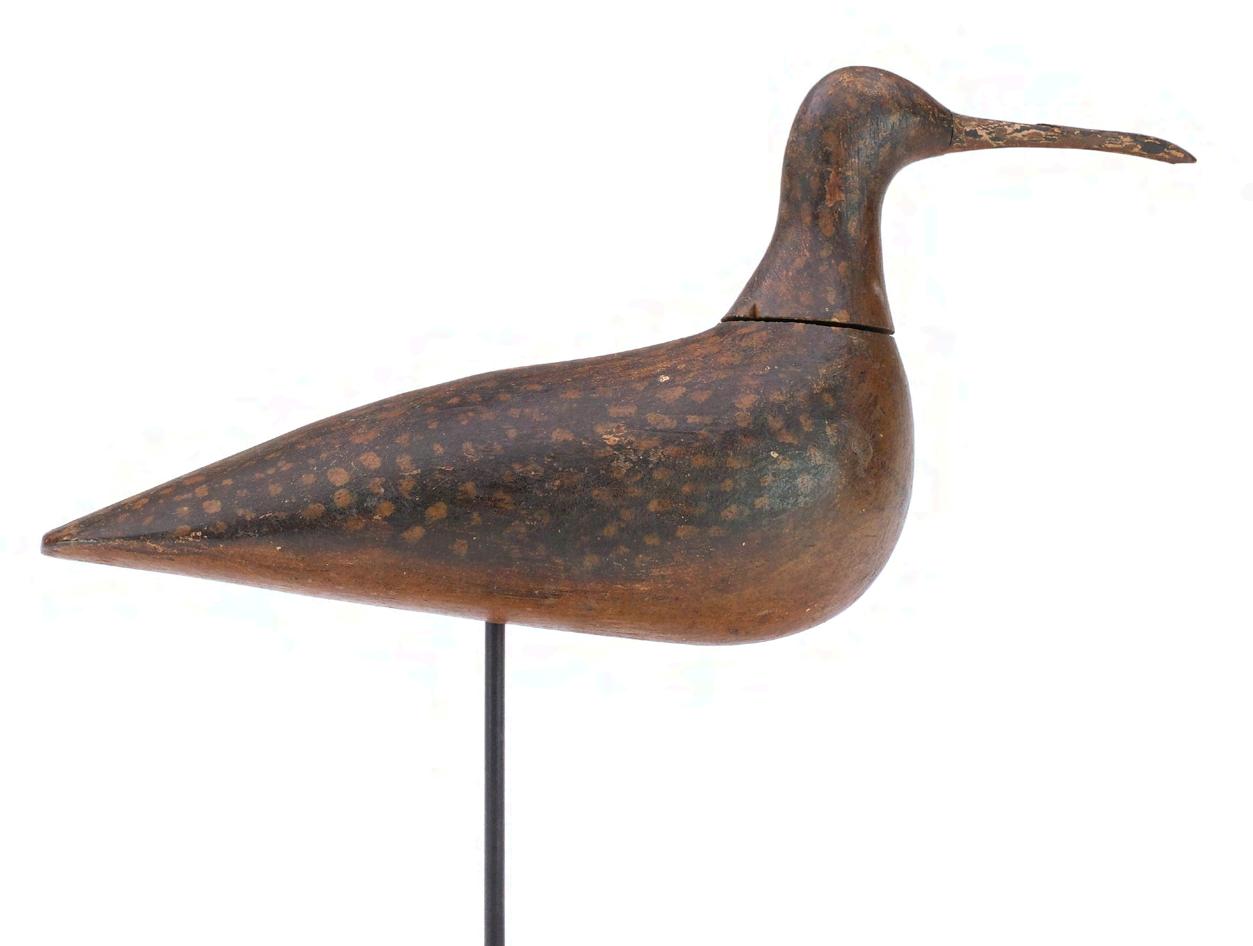


the South Shore, commercial carver Joe Lincoln filled orders for a great number of hunters from both Massachusetts and beyond. Close by, Lothrop Holmes carved and painted decoys that today grace the shelves of the finest collections in the country. The Cape probably produced the greatest number of carvers, mostly anonymous, but native son, Elmer Crowell is one name that stands out in decoy fame. On the Islands, names such as Folger, Coffin, Starbuck and others are common and each produced delightful decoys that bear the distinct handiwork of family members. The South Coast seems to have lacked any singular luminary yet was host to untold anonymous carvers that produced some very notable decoys. As with the New Hampshire border to the north, the South Coast hunting areas merge with those of neighboring Little Compton, Rhode Island. Carvers such as the Sakonnet Point team of Clarence Gardner and Newton Dexter produced birds that were appreciated and were the inspiration for many decoys from the Westport, Ma area to the entire eastern shore of Narraganset Bay.

Most of the birds themselves were quite gullible. They were easily drawn to the decoys and responded readily to the commercially available shorebird whistles. Their population numbers slowly began to diminish, and some, such as the eskimo curlew, are now considered extinct or nearly so. Massachusetts began to regulate the hunting season for the birds at least as early as the late 1800s but did not establish any bag limits. The Federal government intervened in 1918 and curtailed the hunting for most species of the birds, but a few, such as yellowlegs and some plovers were still legally hunted until 1928 when, finally, all legal shooting ceased.
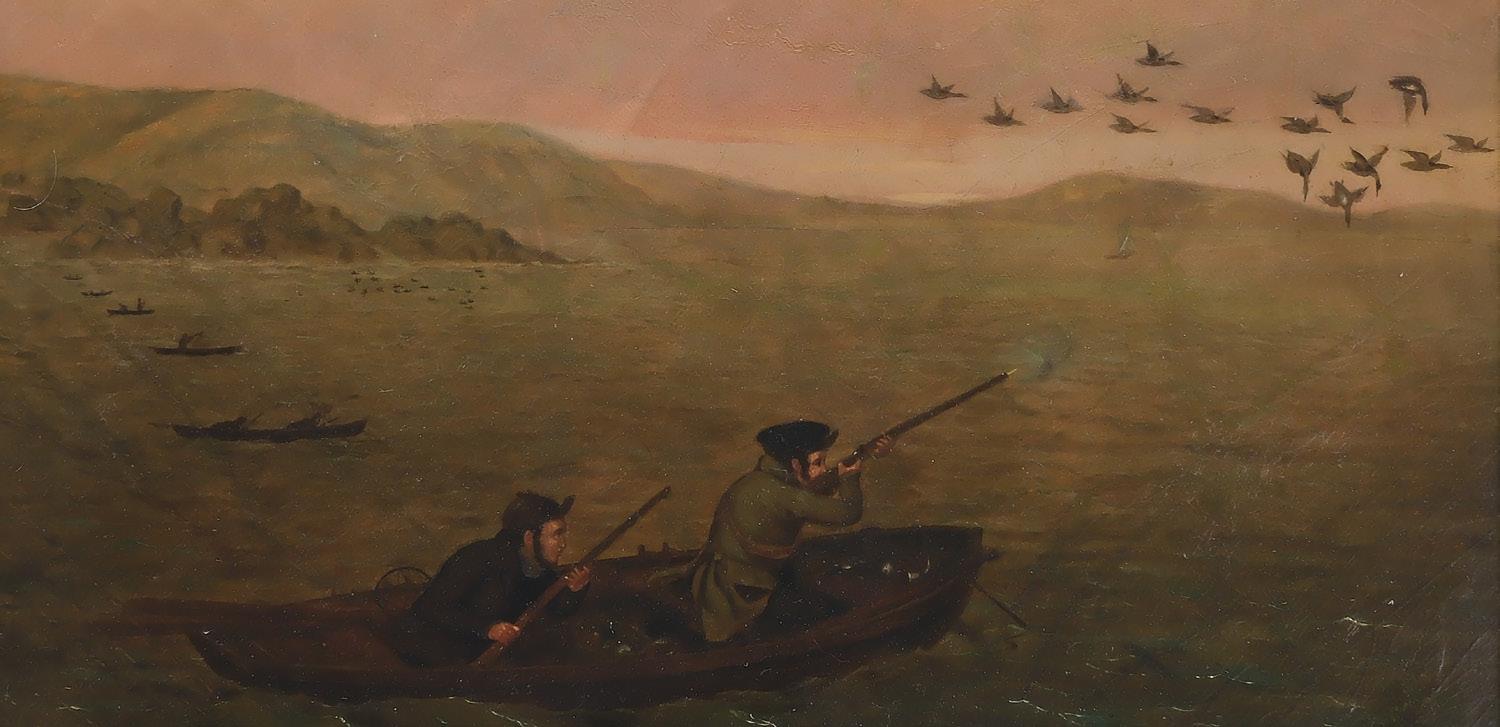
In Massachusetts, the three species of Scoters (Melanitta spp), black, white-winged and surf, were practically all grouped under the heading of “coot”. Not to be confused with the much smaller freshwater coot or “mud hen” (Fulica spp), the birds were common migrants along the northern Atlantic seaboard on both their fall and Spring migrations. They presented ready targets for those so inclined to pursue them. However, as noted by Van Campen Heilner in his 1939 “A Book on Duck Shooting”:
“But if you really want to shoot coot, then you’ll have to go down east to Massachusetts where coot shooting is a tradition. It’s just as much a tradition as baked beans and clam chowder, hot apple pie and Parker House rolls, as New England as the lobster and the cod”. (Heilner)
All three members of the group are heavy bodied birds, with thick layers of fat and feathers to shield them from the frigid North Atlantic. They will rest offshore and fly closer to land where they dive to depths to feed on
Points of land that jutted out to sea afforded the hunters the opportunity to launch their boats and bring the birds into accessible range. Once the migration started, one or two men would set out from shore in a small dory or flat bottom skiff and anchor themselves at a distance that would, hopefully, place them and the birds on the same path. As more groups of hunters arrived, tradition dictated that they would take up a similar position perpendicular to the coast at a safe distance from boats already on scene. On certain days, this “line” may have extended as far out as a half mile to a mile or more from shore and have up to twenty or more boats aligned parallel to one another. Thus positioned, the group presented a united gauntlet over which the scoters must pass. It was taboo to fall “out of line” as the scoters may think of this as a “hole” and give those shooters a perceived advantage. Usually a stray “accidental” or “wild shot” would bring the offending party back into line.
Coot shooting occurred along the entire coast of the State, but it was particularly popular on the south shore from Cohasset to Plymouth. Bags were often immense




The birds lack of caution often meant that the hunt could be accomplished almost as a type of pass shooting. On most days, however, it was felt that decoys should be employed to increase the chances of success. Elaborate carvings were not needed as the birds would toll to just about any dark shape on the surface. Eventually, the majority of gunners settled on a design that was light, easy and very effective and the “coot nest” was developed. These nests consisted of groups of two simple scoter silhouettes mounted on a single or double pair of parallel boards. Each group (with identical silhouettes) was mounted on gradually longer and longer sets of separation boards so that 5 or 6 could be conveniently attached to one another with about 6 feet of rope and stacked within one another to form a single group of a dozen or so shapes. Usually, each dory would anchor out between one and four of these nests in a string, either directly in front of or directly behind the boat, although there was no set standard. On the North Shore for example, around Cape Ann, the string of silhouettes was set in a “J” shape looping around the rear of the dory. To gain the initial attention of the birds at a distance, the nest(s) may or may not, have been accompanied by six or so full bodied floating decoys. As odd as it may seem, if the birds were not immediately aware of the decoys, waving a hat or gun case in the air would normally get their attention. The boat itself was anchored with a float attached to the line. When it came time to retrieve a downed bird or chase a cripple, all one needed to do was unclip from the float and tie up again upon return without always pulling the anchor and resetting.
The actual hunt was usually difficult even under the best set of conditions. As with other forms of duck shooting, the best days were often those with the worst weather. Off the Massachusetts coast this traditionally would have been accompanied by a sea swell of varying heights with a wind chop on top of that. Add snow or rain to the picture and you have a scenario where both the hunter
and the hunted are in a constant state of motion with less than perfect visibility. Not only did the birds present a trying target, they were tough to kill. It is often said that the hunters could actually see pellets bouncing off the birds (probably at a distance) and a mere two or three pellets would not bring them down. Large size shot and ten gauge guns were pretty much the norm. If a bird was crippled, it would almost instantly dive when it hit the water and, being excellent swimmers, not surface again for fifty yards, only to dive again. Writing in a 1925 edition of “Field and Stream” Frank Hatch wrote, “I am sure that coot were designed for the special benefit of the manufacturers of gun powder and shells”.
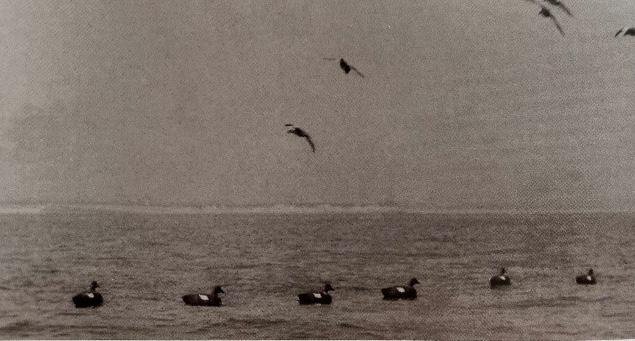
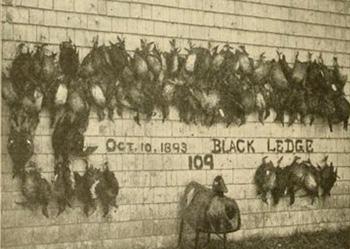
Every author of every article on scoters or coot shooting, universally comments on the bird’s reputation for being marginable table fare with many claiming them to be unpalatable at best to totally inedible. Common tongue in cheek recipes usually read something like “bake on plank then eat plank ” or “ boil with an anvil and when you can pierce the anvil with a fork, remove scoter - - - “. By the same token, and often in the same article, reference is made to “ wonderful meals at the end of the day of a plate of steaming coot stew” . Massachusetts State ornithologist, Edward Howe Forbush, reported in 1929 that “ - - - scoters are killed and eaten by people living along the coast, where the woman know well how to prepare them for the table ”. Noted Taunton Ornithologist, and avid gunner, Arthur Cleveland Bent wrote that the “ - - - the young of the year or the grey coot ” when first arriving from their northern breeding grounds “ are fatter, more tender and less strongly flavored - - - “. There must be some truth in Forbush’s statement for when the sale of game was legal, scoters could be found in the Boston markets and, as shown in Dr Starr’s “Decoys of the Atlantic Flyway” a large sign hung in front of Henry Phillips’ fish marke t in Brant Rock (Marshfield) advertising “Coot For Sale Here”. They a pparently must have had a local following but this was certainly not the universal opinion.
When in pursuit of the coot, other species of waterfowl would also be encountered. On the North Shore, the occasional eider was a possibility and everywhere, one was likely to be surprised by a swiftly passing pair or small darting group of long-tailed ducks. The flights were once huge, and reports of kills of over one hundred on a single tide were fairly common, even on Nantucket and on Narraganset Bay. These handsome birds suffered the same reputation as the coot when it came to their culinary desirability, perhaps even more so. Most were killed, solely in the name of “sport”. In 1929, Forbush reported that: “ Thousands of these handsome ducks are shot annually along the New England coast, and the dead and wounded allowed to drift away on the tide or picked up merely to be shown as trophies and afterwards left on the wharf or thrown away ”. One has to wonder why decoys were constructed specifically for them, as they would toll to the coot decoys. Fo rtunately for the collector, however, a small number of decoys were made, and these now represent some of the finest and most desirable decoys from the State.



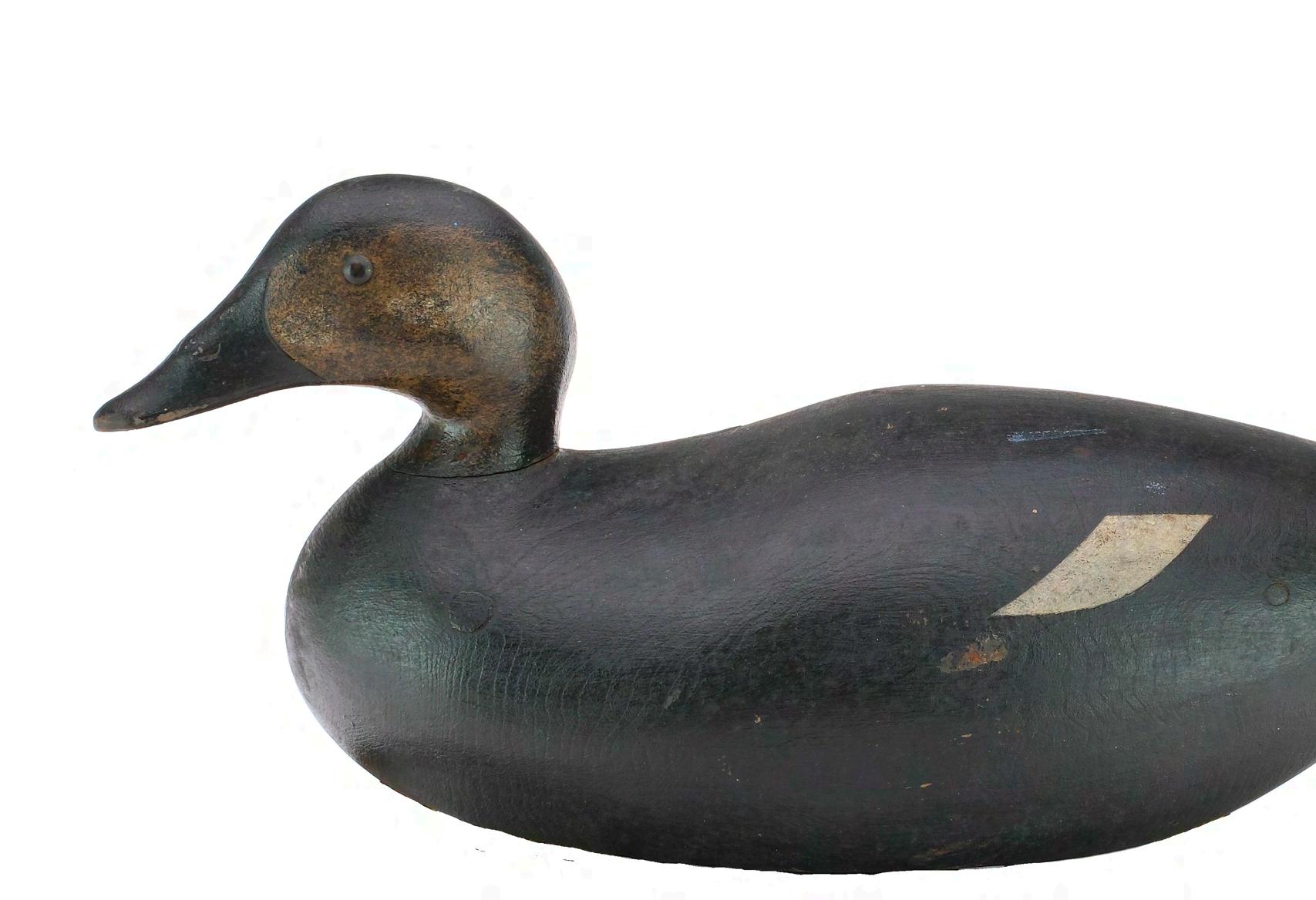
On the South Shore, probably the area where cooting was almost a religion, one of the predominant industries was that of shoemaking.
While large factories were built that employed great numbers of the population, the shoe industry relied heavily on piece work, done by individual cobblers working out of small, so-called “tinker shops” or “ten footers” at their homes or farms. Obviously, shoe making required skills in cutting and sewing leather and accurately applying numerous small tacks. In addition, in the towns immediately along the coast, the age of sail was still in vogue. Canvas sails often needed to be sewn anew or repaired. Wooden boats had to be built and ribs bent to form their hulls and, finally, wooden hoops needed to be steamed to form the frames of the numerous local lobster pots (traps). All these skills, a knowledge of working with hand tools, the ability to sew heavy cloth, a familiarity with how to steam wood to make it bend and the competence with hundreds of small nails and tacks led to a breakthrough in local decoy design.
Out of necessity, the full-bodied decoys for coot were

placed across the body of the decoy. In the case of the “slats” the supports ran the length of the bird. By covering these longitudinal members, the decoy assumed a much more life-like form while still offering the opportunity to construct a large (in some cases very large) light weight decoy. While no one can be sure if the canvas coot decoys led to the construction of the goose decoys or the other way around, the result was a widely used, highly successful, technique. Occasionally this type of

As with any other form of decoy, some men were simply more talented or fastidious than others. While many individuals utilized this type of construction, four that did exceptional work were Massachusetts’ Joseph Lincoln of Accord village (Hingham), Lothrop Holmes and Clarence Bailey of Kingston, and George Boyd of Seabrook, NH, just over the State line. Each of these men achieved a level of perfection in their work that distinguishes them from any and all of their counterparts.
This canvas over frame concept was occasionally used elsewhere in the country such as in the Carolinas. In these instances, however, the construction technique was different, normally utilizing a combination of wire and twine to form the backbone over which the canvas would be stretched. It is probable that this represents a form of convergent evolution where a similar solution to a problem was adopted independent of any knowledge of its use elsewhere.
Compared to the all wooden decoy, many of the canvas covered birds have suffered from the ravages of time or storage under less than ideal conditions. Finding one in excellent original condition today, by one of the best makers must be considered rare.

Addenda 1
“April 9th, 1860 Correspondence of the (New Bedford) Standard – “A GREAT DAY’S SHOOTING”.
Westport, Sat. Evening Mr. Editor:---Agreeable to my promise, and in accordance with your wishes, as implied in this day’s paper; I have learned the particulars relating to the events of this day’s shooting. In order to be fully posted up, your humble servant left home in the good boat Paquachuck, at 3 o’clock, repairing to the gunning ground, and was on the ground, some five miles from the wharves, at early dawn, witnessing all that transpired. There were thirty-five boats, all armed and equipped except your informant’s. As my object was mainly to see the sport, which I could not have done as well in engaged in shooting, I thought best to take no shooting iron. The whole number of fowl obtained 723, the largest number ever killed in a single day by our men. Fourteen boats obtained 79 fowl. These were manned by men less skilled in shooting than others. Twenty-one boats took 644; six of the twenty-one took 305. Mr. Charles Soule, the veteran sportsman, came in high hook, as we term it, having obtained 65. William Soule took 55, Capt. Benj. Gifford and P.G. Wing, 53’; Capt. Geo. Manchester took 48; Capt. E.P. Brightman 44, and Mr. Christopher Davis, 31. It is worthy of mention that Capt. Barney Gifford, who has passed his three score and ten years, was early on the ground and obtained, notwithstanding his great age, thirty-seven birds. This aged man resides at Hicks’ Bridge, 9 miles from the old cock, at the place where most of the fowl were killed. He must have left home in the small hours of the morning, as he was among the first on the ground, perhaps by the first dawn of day. He left home and returned the same day---eighteen miles travel. Had the wind blown on shore instead of off, no doubt 2000 birds would have been taken. Seven-eights of these fowl are what we call Pishaug, called by most persons in other places Coots. It is estimated that 50 lbs. of powder, 200 lbs. of shot and 3000 caps were used, at a cost of $20. The fowl, at the price here, will amount to $100, and the weight, one ton or 2000 lbs. There was at least two thousand shots made.”
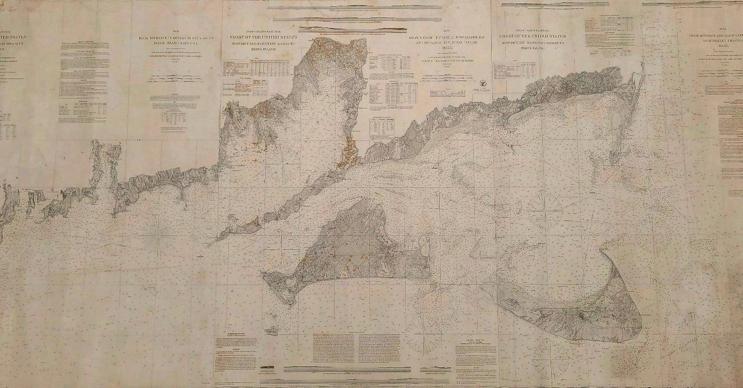

No large clubs such as those commonly organized throughout the South, Chesapeake, Illinois River and Canada existed in Massachusetts. Rosters of the clubs at all of these locations, however, bear the names of numerous gentlemen from the Boston area who traveled there to enjoy fine gunning for canvasback, mallards and other fowl. The closest thing to these luxurious accommodations on the home front were a few of the elite striped bass clubs that did exist in the State. On the Massachusetts/ Rhode Island line, the West Island Club off Sakonnet Point and, on the Elizabeth Islands, the Cuttyhunk Bass Club and the Pasque Island Club would be typical examples. These clubs were extremely exclusive and catered to the most rich and powerful businessmen, politicians and professionals of their day. While the pursuit of the large fish was certainly the main objective of the members, a certain amount of waterfowling did occur.
In 1864, three men from New York “- - - purchased East and West Islands in the State of Rhode Island with all the buildings and personal property appertaining, formed an Association for Angling and Shooting purposes - - -“ . Thus was born the West Island Club, by far the most elite of all the bass clubs in New England. Members (limited to 30 at any given point) included US Presidents Grover Cleveland and Chester Arthur as well as business titans such as Cornelius Vanderbilt and Charles Tiffany. Numerous members of the Rockefeller Family and
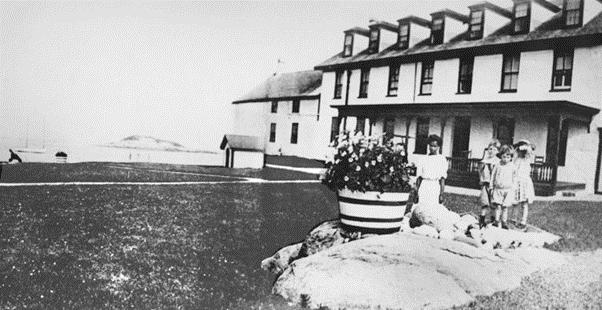

noted sportsmen such as J.P. Morgan, John L Cadwalader and others often appear on the guest registers. Ultimately occupying eight buildings, accommodations were lavish, complete with private butlers, maids, cooks and waiters. Like all of the clubs, guests would have their own “chummers” who would bait the “stands” (fishing platforms), often with lobster. West Island members were so wealthy and influential that they had a private telegraph line installed to the Island so they could be kept abreast of daily stock reports. When the US government wanted to install a lighthouse on the Island, members were able to have the location of the beacon changed to another island nearby. The club records, now stored at the Newport (RI) Historical Society, list only the daily take of striped bass, but members would have certainly taken advantage of the fine shooting which the Island afforded. Wealthy Boston based East India Merchant, George Henry MacKay documents his numerous visits to the West Island Club between 1869 and 1892 where he and friends returned nearly every April in pursuit of the northern bound spring flights of scoters.


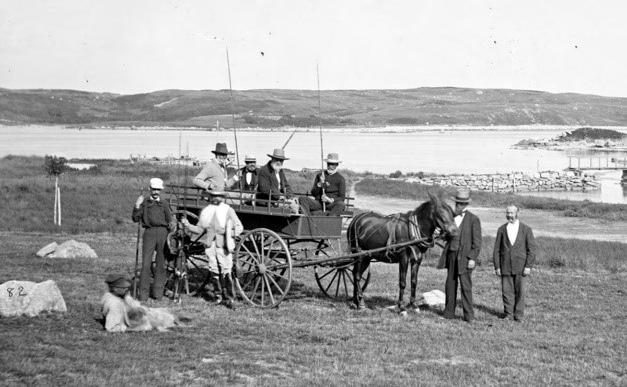

Certainly, one of the most famous of the bass clubs was The Cuttyhunk Bass Club which was founded in 1864 by members of the West Island Club seeking additional fishing ground. Located at the tip of the Elizabeth Island chain, which stretches southwest from Woods Hole, Cape Cod, the members enjoyed some of the finest bass fishing to be experienced anywhere on the coast. Like the West Island Club, membership was selective and included some of the most influential and powerful figures of the day. President Theodore Roosevelt was president of the club between 1901 and 1909 and William Howard Taft then assumed control of the club from 1909 to 1913. As with the West Island Club, members did not want for comfort. Rooms were well appointed, and meals were sumptuous. Each guest maintained their own liquor cabinet where fine wines and spirits were stored. An 1883 article in “Sport with Rod and Gun”, when discussing the club states: ”We hear, too, the notes of the upland plover, wildest of all game birds - - - - . A little later in the season, large flocks of golden plover will stop on their way south and make it lively for the grasshoppers - - - “ . One does not need much imagination to assume that, when the fishing was slow, the club members would have set out decoys in the moors for the migrating birds.
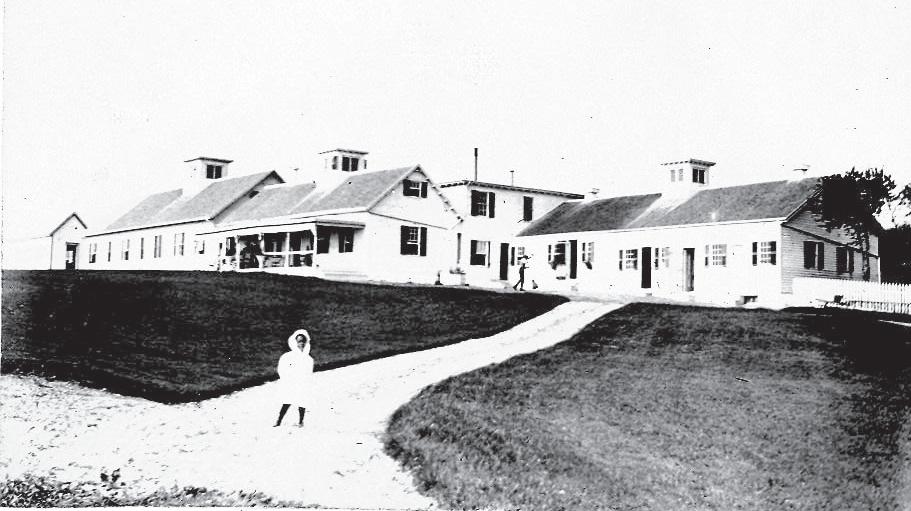



Seeking the company of their wives, or simply female companionship, the Pasque Island Club, was founded in 1866 by disgruntled members of the Cuttyhunk Club, where females were not allowed. There are newspaper articles from 1900, reported by the club, that indicate a female nurse from Fall River (MA) who was summering on the Island accidently shot herself while plover shooting. She was attended to by Dr A.L. Pidge of Philadelphia and well-known New Bedford (MA) hunter Dr E.R Sisson. Since the club owned the entire 853 acre island, and, as one author has commented, “their control over the shoreline was unyielding” , one can rightfully assume that the unfortunate woman and her attending physicians were hunting shorebirds while staying at the Club.


“Camps”
Untold hundreds of private duck camps once existed in the State. These camps were typically the domain of small clubs comprised of a few individuals that banded together to secure somewhat private hunting areas or, at least, ready access to such. The size of the camps ran the gamut from small houses with a few bedrooms, kitchen and living area to rustic one room cabins, some best described as shanties or mere shacks. Accommodations ranged from comfortable to merely adequate, but in all instances, certainly met the needs of the owners after a cold, wet and windy day afield. These buildings were usually located on a favored point or island adjacent to a pond, swamp or marsh that afforded good hunting. These were extremely common in the days of the wooden decoy and would have been familiar sights the entire length of the State and every popular gunning area saw multiple camps. The Cape, due to its relative remoteness, was dotted with these small buildings which served as hunting quarters during the season and as summer retreats when the birds were not flying. The camps differed from the “stands” in that the shooting area(s) were usually separate from the camp itself and the overall operation was far less complicated or involved. Normally, if live decoys were used at all, the flock would have consisted of simply a few ducks.








For those who did not have access to one of the numerous “camps”, a number of hotels sprang up at favored gunning areas to cater to individual visiting sportsmen. Often these would also offer guiding services as well as boats and decoys. These hotels could be found at all the major hunting areas from Plum Island in the north to Westport in the south and, as with the camps, these establishments offered various levels of accommodations.
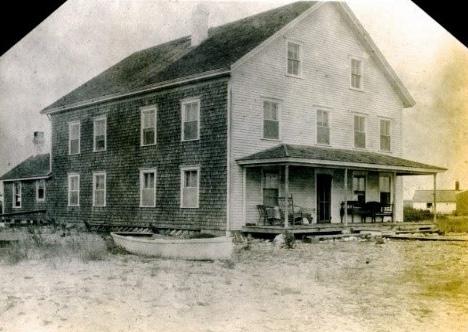

Frederick Burden Head established a hotel on East Beach in Westport in 1876 to cater to hunters. He once boasted “As many as 150 hunters roomed at my house (in a season) in the early years when ducks and other fowl such as loons and quail were plentiful…I shot as many as 86 ducks in one day and shipped them to the markets in New York and Boston.”
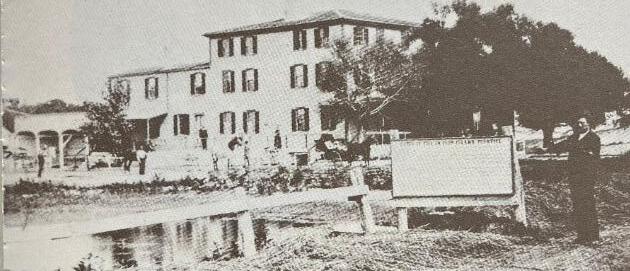




As early as 1806, a group of businessmen banded together to build a bridge to Plum Island on the north shore and constructed a hotel there to house the workers. This was expanded over the years to a more elaborate edifice and was a favored destination for gunners who were attracted to the area.
Affluent Bostonian Charles Ashley Hardy knew the Cape well, for he had traveled frequently to the area on hunting trips since his youth. Confident that others would share his passion for the Cape, he encouraged a group of fellow investors to create a rustic hunting lodge in the quaint fishing village of Chatham on the outer arm of Cape Cod. In 1914, his Chatham Bars Inn opened and was immediately successful, attracting equally wealthy sportsmen to the area for the outstanding hunting and sailing it provided. Hardy went on to become one of Elmer Crowell’s earliest admirers and patrons and he was instrumental in introducing Crowell to similarly minded individuals. Expanded multiple times over the years, The Chatham Bars Inn remains today as one of the Cape’s most luxurious destinations.

These exclusive clubs, small camps and various hotels served the needs of the hunters not fortunate enough to live within easy traveling distance to good hunting. These were a necessity at a time when transportation was not as easy and convenient as it is today. Trips from Boston, Providence and beyond to the Cape or other rural areas would have been long, arduous undertakings often involving train or steamboat travel. Once one arrived at a favored destination, stays were usually for multiple days or perhaps even weeks. Fortunately, these were also the days when one could reasonably expect to enjoy good sport, in a pleasant, unspoiled environment, well away from the demands of his or her daily routine.


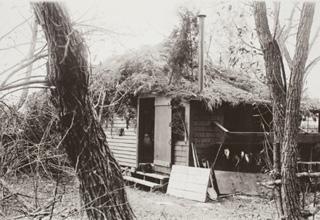


“ The stand gunner is, to say the best of him, a picturesque creature teaming with pond lore and weather wisdom, half goose, half philosopher. At worst he is a lazy, Rip Van Winkle sort of chap, carrying about with him a disdain for all things modern, and not improbably a taste for drink. As a rule he is harmless, though more or less frowned upon by upland shooters of a more sprightly and progressive type. His long suit is patience, and he lives from week to week hoping for a big storm which never arrives, or a great shot that he will surely pull off if he lives long enough. He sees many things as he leans over the board fence of his blind, things that happen in nature only at rare intervals, and he has some tall stories of remarkable happenings, many of which are true”.
(Dr John C Phillips 1928)
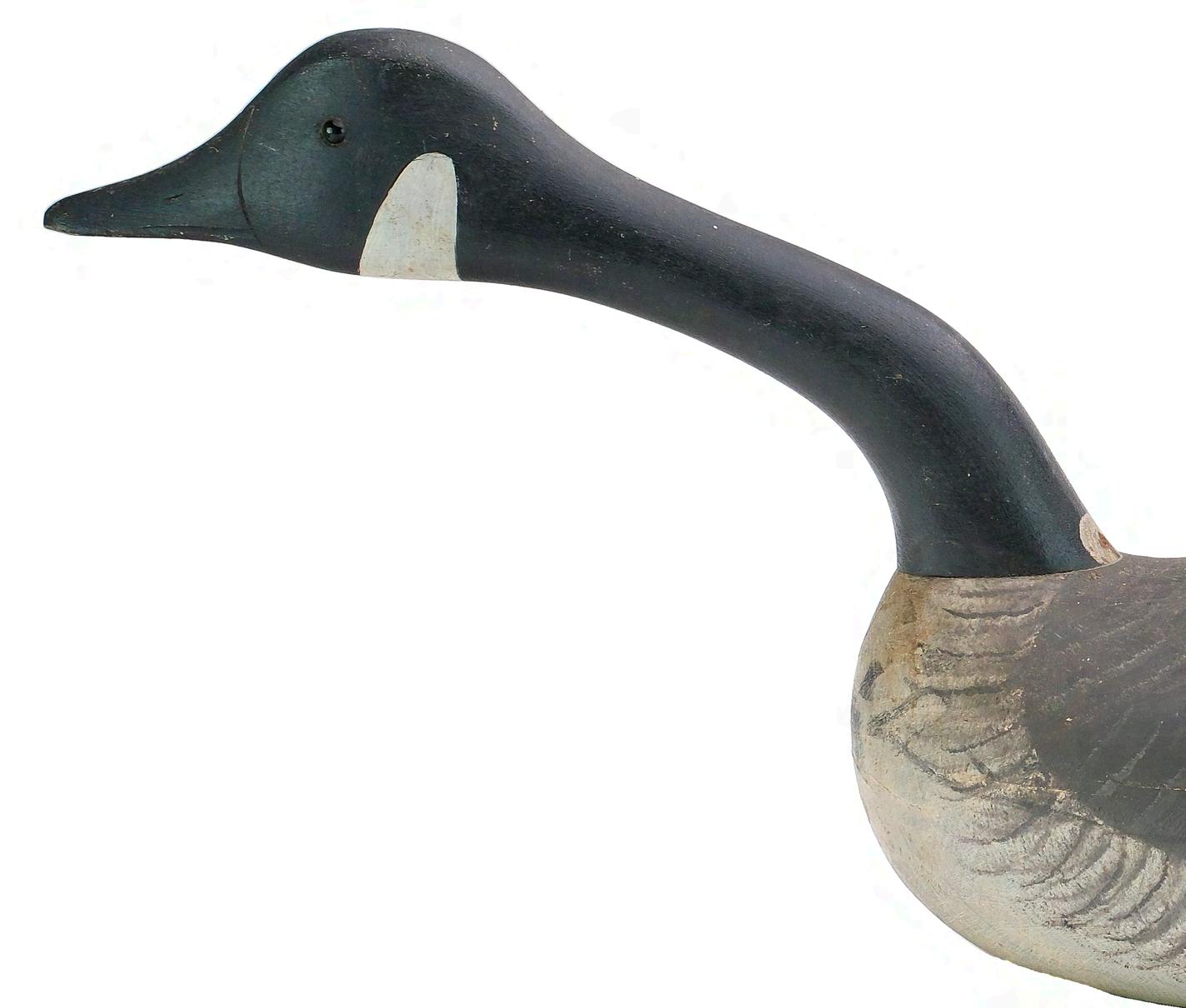




The “Gunning Stands” were considered unique to Massachusetts and the areas immediately adjoining in southern New Hampshire and southeastern Rhode Island. The primary purpose of the stands was to attract and harvest the migrating flocks of Canada geese, although all other species of passing ducks and shorebirds were also shot if the opportunity arose. They were located on large inland ponds, coastal salt ponds, favored marshy points or, occasionally, built directly on the beach. These were elaborate affairs consisting of a good size clubhouse/camp with sleeping, cooking and living areas, usually large enough to house six to eight hunters at a time. This was connected, either directly or indirectly via a covered alleyway or camouflaged “tunnel” to a “breastworks”. This structure varied in length, occasionally reaching perhaps over one hundred feet long, and served as the blind which would shield the hunters from the birds. There was no set design standard for this whole operation and the breastworks may or may not have been a roofed affair. These two core structures were augmented with additional storage buildings for equipment, wooden decoys and pens for the all-important live decoys.
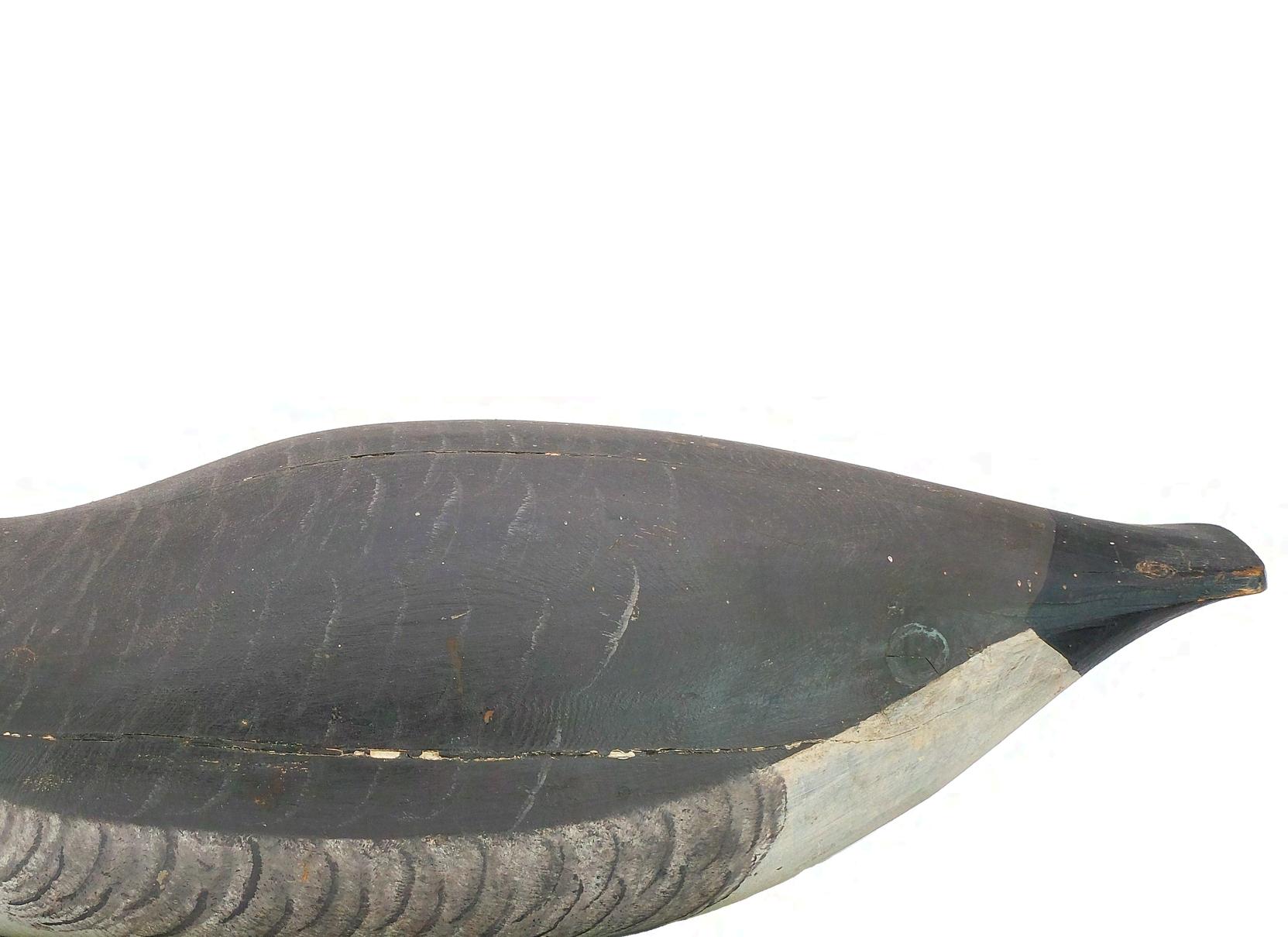
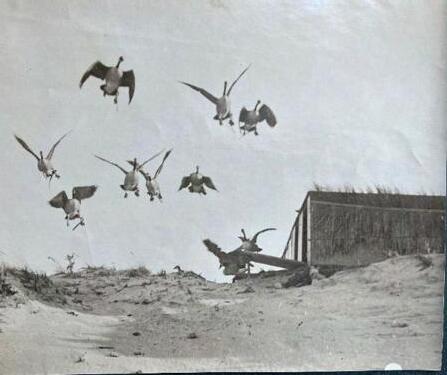


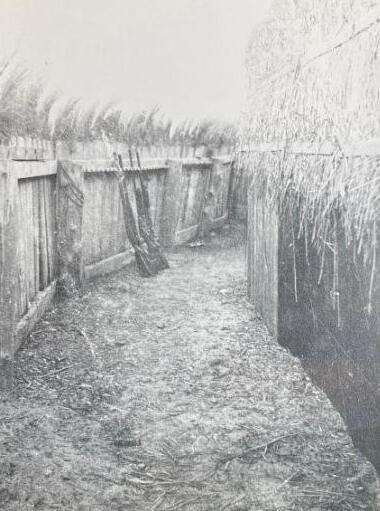

Sizable flocks of tame geese were the key ingredient to the success of the stands. The birds could have been obtained from the wild during molting seasons or they could have been purchased from commercial dealers. Mated pairs were separated into “flyers” and the “beach team”. Other stands favored separating the young from the parents into the two components (see addenda 1). All were labeled in some fashion, usually with leg tethers, to be able to identify them from their wild counterparts and not be accidentally shot, although this did regularly occur. John C Phillips once wrote a poem titled “Crowell’s Lament” where he recalls when the famous carver inadvertently killed one of his own live decoys. If a readily available and highly visible “beach” for the geese did not occur in front of the stand, one would be constructed, usually in the form of an irregular wharf type structure just above the waterline. These “beaches” were always sand covered so as to make the live decoys more visible from the air. The beach team was staked out in front of the breastworks in the area designated for them and the flyers were kept in a separate pen, either imme diately adjacent to the breastworks or, close by. Occasionally they would be staged in a tower. When a live flock was spotted, the flyers were released, either by pulling a string on the pen door, or, in more elaborate setups, by flicking an electrical switch to release the birds. O nce their mates were circling above, the beach team would begin to (hopefully) call aggressively and the flyers would then return to the beach.



This operation was aided by the use of extensive baiting and the flyers were usually withheld food on the day of the hunt so that their hunger would help insure their return to the beach. The number of live birds at the stands usually numbered between 50 and 100 depending on the size of the operation, but a particularly large stand in Plymouth County is known to have utilized between 300 and 400. In addition to carving his own decoys, Jim Look’s stand and guiding operation on Martha’s Vineyard would have been a typical operation (see addenda 1).
As an added attraction, large numbers of wooden decoys played an equal role in the deception. Often times these were grossly oversized “loomers” which were anchored out and left to remain for the entire season to serve as a visual attractor. Other wooden lures were arranged on large triangles in groups of three. These triangles were often attached to a pully line system where the ropes could be pulled, and the decoys would appear to be swimming in towards the beach. There were also one or more “range markers”, floating wooden decoys, set out to mark the 35 or 40 yard mark from the breastworks when the time came to call the initial shot.
The entire operation was not an affair to be taken casually. The camp needed to be maintained and the live geese housed year-round. Each year the breastworks, camp and adjoining structures needed to be newly brushed in. This required bringing in fresh material, either native vegetation or beachgrass from other areas so as not to denude the area of the stand. In addition to a caretaker, a “head gunner” was needed to serve as lookout/guide. This person was also the one responsible for determining when to call the all-important initial group shot. This multi gun barrage was first taken at the wild birds on the water and then additional loaded guns kept behind the blind were quickly put to use for a follow up shot at birds in the air or to dispatch cripples.

The stands were only occasionally the domain of a singular owner. A few very wealthy individuals such as Dr John C Phillips at his Wenham Lake property maintained their own stands and controlled the visiting guests. More commonly, the stands were maintained by small, tight knit clubs such as Joe Lincoln’s famous North Shore Gun Club on Accord Pond in Hingham. In terms of human convenience and finish, the operations ran the gamut of from simply crude to quite luxurious (see addenda 2).

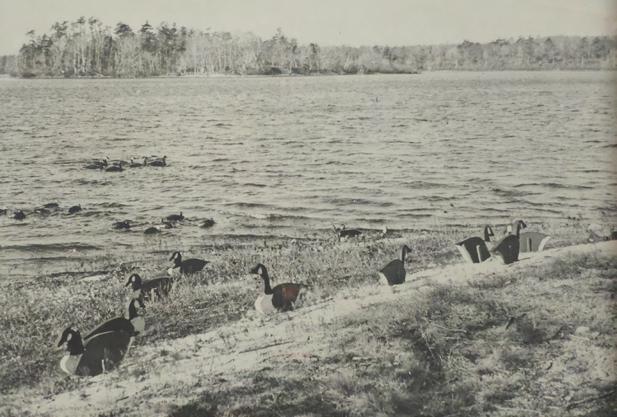

Elmer Crowell was considered one of the very finest of the live bird trainers, stand caretakers and head gunners. He was J.C Phillips private caretaker as well as serving in a similar capacity at the “Three Bears “camp of Charles Ashley Hardy, Loring Underwood and G Herbert Windeler on the Cape. In addition, he was often called upon to visit and gun at numerous other operations from the Rhode Island to the New Hampshire borders.
When discussing the Gunning Stands, one first usually draws a mental image of the live goose decoys and this was certainly the focus. The stands also maintained live duck decoys, and these were practically universally black ducks, although English callers could also be used. The goose beach was traditionally separate from the duck beach.
We are fortunate that a number of authors wrote period accounts of these stands. Russell Scudder Nye in his 1895 “Scientific Duck Shooting in Eastern Waters” describes a small stand in today’s Hyannis on Cape Cod. William Hazelton in 1916 described their operation briefly in his “Duck Shooting and Hunting Sketches” and Dr. John C Phillips penned an excellent period record of his knowledge of the Massachusetts stands between 1898 and 1928. In his “Shooting Stands of Eastern Massachusetts”, he reported that he felt that the tradition of the Stand first appeared south of Boston in the area of Bridgewater and Rockland where the shoe industry was the predominant source of income. Local cobblers worked on a piece work basis out of their homes and thus they were able to bring their work with them to the stands. Otis Foster, writing for the “Massachusetts Waterfowlers Association” in 1906, stated that there were stands operating on Oldham Pond on the South Shore as early as 1864.
Over the years, individual stands came and went but by 1928, Phillips felt that there were between 180 and 190 in the State, but he was certainly not aware of them all. In his book, he does Include those in neighboring southern New Hampshire, but he does not record known stands in the Dartmouth/Westport area in the southeast part of the State, nor known stands in adjoining Little Compton, RI. He notes far fewer stands north of Boston than the areas to the south or on the Cape and Islands.
Phillips estimated that in 1928 there were between 5000 and 6000 live goose decoys in use in the State, in addition to a little more than half that number of duck decoys. These numbers include just the total for registered stands and not individual small casual blinds. The registered stands were supposed to report their annual bags to the State, but this was voluntary, and many operations were suspicious of reporting particularly large kills, so trimmed their reports while others, in order to appear more successful than they actually were, padded their numbers. Phillips states that he felt there was definitely more trimming than there was padding. Accurate or not, the State records the total number of geese shot at the stands to average about 4200 per year, with poor years numbering about 2500 to 3500 and good years upwards to 8500. Black duck kills averaged about 15,000 per year.
The outlawing of live decoys in 1935 put an end to the Gunning Stand in Massachusetts and the 1938 Hurricane virtually erased all physical evidence of practically all of the stands located in coastal areas.
The method of training utilized by James Look (1862 – 1926) at his stand at West Tisbury on Martha’s Vineyard would have been typical. It was recorded by a writer for the New York Times who interviewed George Magnuson in 1967. Magnuson had worked as a 19-year-old assistant for Look.
“Jim had more than 30 pairs of Canadian geese when I arrived. Their wings were clipped and they nested around the pond. When the eggs hatched out in late spring, Jim would walk up to the goose and gander and goslings with a handful of corn meal. In a few minutes some of the goslings would be eating out of his hand. These were the birds that would become flyers. The other less tractable goslings would become members o f the beach teams, geese that were staked out in front of the blind. But some would eventually be found unsuitable for this purpose also. A beach team member had to stand naturally at his stake. If he flopped around and tried to tug free, he was banished to a pen where his antics wouldn’t jeopardize the hunting. Each flyer team, and Look usually had 12, was a family unit made up of goose, gander and goslings with broods usually running from 4 to 10. In late summer when the goslings were able to fly, their training began. They were given no food for several hours, then released from their pens. The mother was caged at the entrance to the pens and the father staked out on the beach. After a short flight, the young birds would respond to their parents’ cries and their own hunger and return. This family bond functioned without fail for the first year, but few flyers w ere amenable to a two year stint” Look charged each of his paying hunter s a fine of $10 for any of his tame birds they accidentally shot.”

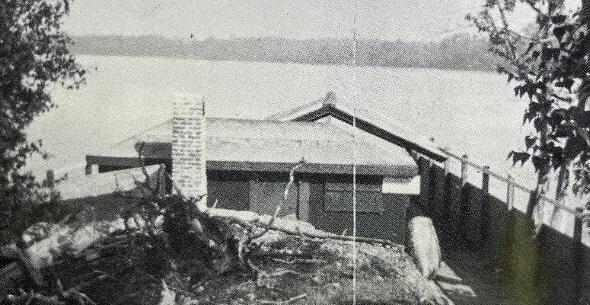

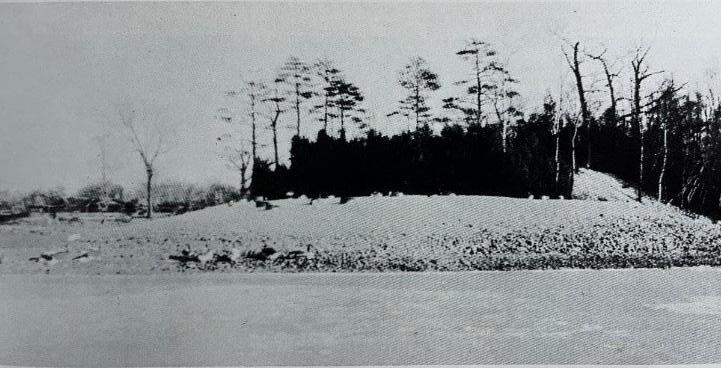
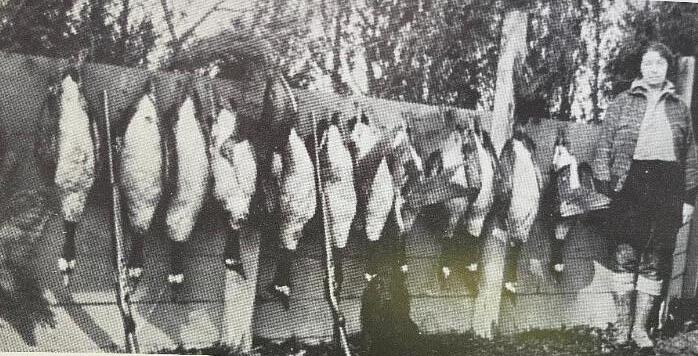
The Birch Point stand on Canton Resevoir was established c1865 by F.B. Jones and expanded upon annually untill shooting ceased in 1935. Initially a mere shack, the first camp was constructed by hand digging a huge cut into a hillside to accommodate the construction of the camp, and the excavated material provided the fill needed to construct a b each which extended practically around the entire point.
For most of its existence, Birch Point was a male only organization, as were practically all the stands. By about 1915, F.B’s sons, Fred E and Tom, ran the camp. When Fred married, his wife insisted on going to the camp and shooting as did the wife of another member, Mrs Walter Smith. This saw the transformation of the stand from a rather shabby operation into one of the more lavish in the State. A new beach was built which was surrounded by a camoflaged concrete wall and the camp and breastwor ks were totally rebuilt, complete with all the comforts of a second home.
As related in the log of the camp ”Many here were who said right out loud that a gunning stand was the last place in the world for a woman to locate herself”. “But - - the ladies came just the same and, wonder of wonders! No longer did the - - - men have to live a week on one can of corned beef, no longer did they have to sweep floors and make be ds, no longer did they wonder how long the dishes would hold out before they were dirty enough to heave in the lake, and no more did the married members of the camp shiver during the long cold nights”. “As for the gunning, they could shoot as well as any of us - - - “.



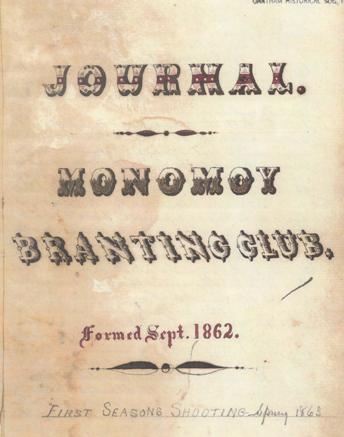
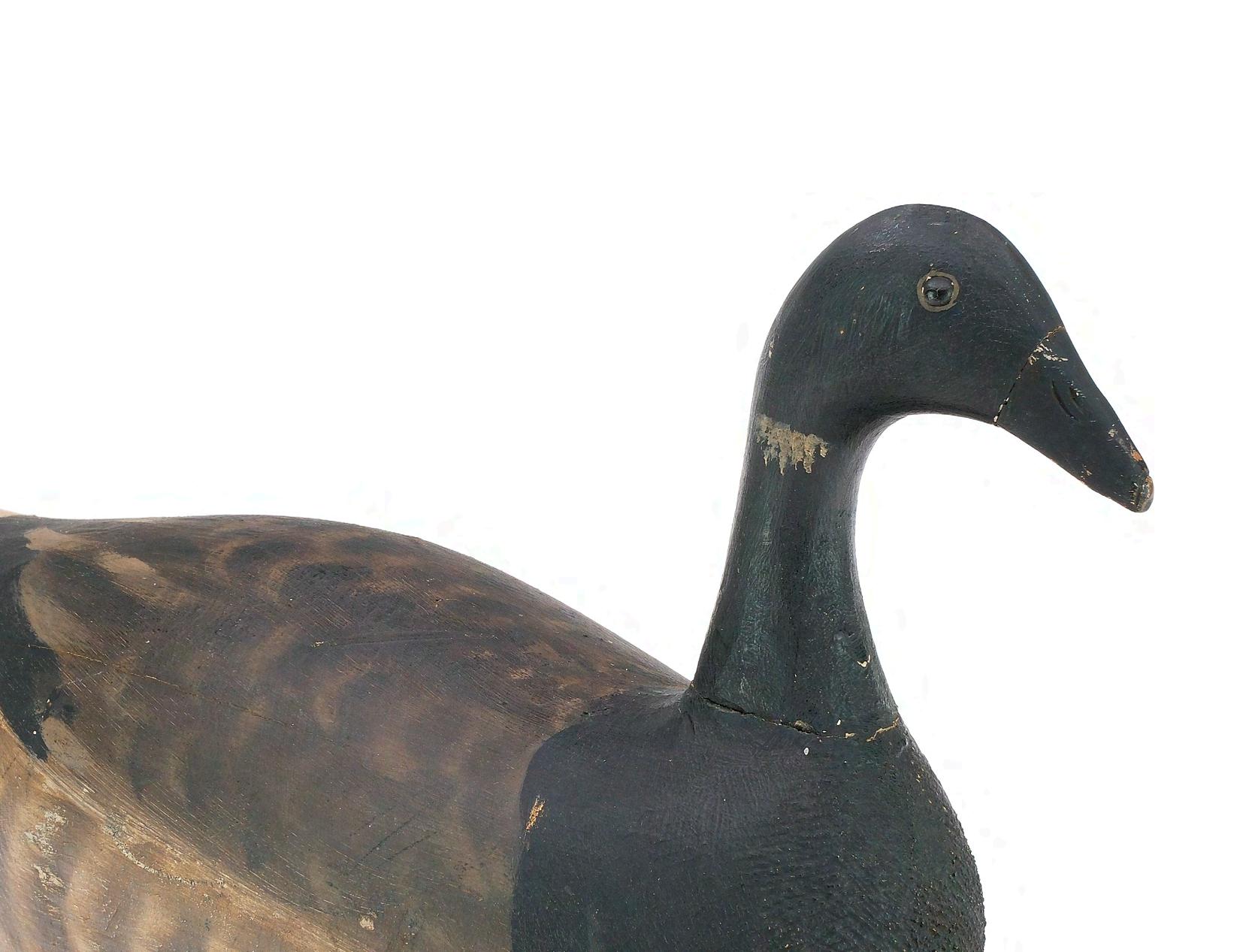
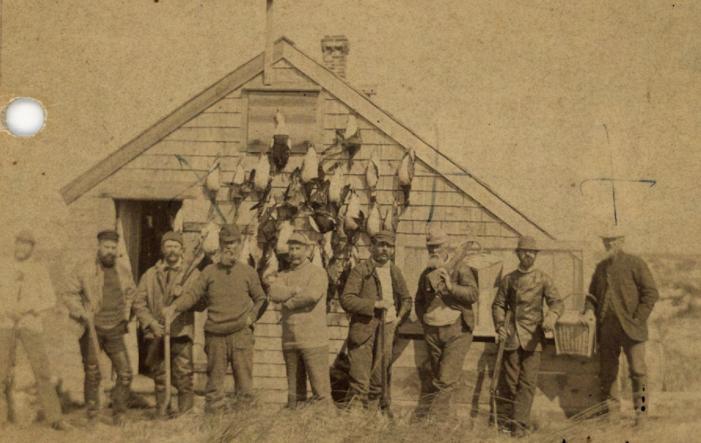


Located off the southern end of Chatham on the outer arm of Cape Cod lies Monomoy. Basically a long sand spit washed up by ocean currents, a great storm in 1887 breached the peninsula and resulted in what is now an eight mile long island surrounded by shifting underwater bars. The area has always drawn waterfowlers and, over the years, an array of small, private duck camps have occupied favored spots on the island. One unusual feature of Monomoy is that it attracted large numbers of migrating brant (Branta bernicla) on both their fall and spring flights. The birds were drawn to the area for its lush beds of eel grass (Zostera marina) which the birds readily fed upon, resulting in their developing a reputation as fine table fare. It was these small geese that drew the attention of both local gunners and sportsmen from as far away as Maine and Connecticut. In the early part of the 1800’s, accommodations near the island were sparse and simple at best. Eventually small groups of men banded together to form clubs for the exclusive purpose of hunting the birds. In many ways these clubs were similar to the famous goose stands throughout the State and in many ways they differed. The two most famous and long standing of the brant clubs were the Monomoy Branting Club and the Bristol Branting Club, both located near the northern end of Monomoy on Shooters Island and Inward Point.
Fortunately, the Monomoy Club kept excellent records and they, as well as a number of period photos, have survived to document its history. Founded in 1862 by four locals or “resident “ members, and fifteen affluent men from the greater Boston area for the expressed purpose “ - - - to associate ourselves together for the purpose of branting at Chatham, Cape Cod under the name of the Monomoy Branting Club ”. The twelve articles that comprised the “Rules and Regulations” nicely outlined the operation of the club. Basically, the nonresident members were to be assessed equally to build and furnish a new shanty large enough to accommodate at least eight persons, purchase a suitable boat, boxes and all necessary implements except guns and gunning apparatus. In return, one or all four “residents” (Alonzo Nye, David B Nye, George Bearse and Washington Bearse) would be present at the club for the entire branting season which would run from the 1st of March to the 1st of May. Alonzo Nye (1823 – 1899) was to serve as general manager and he and the three others were to serve as guides and caretakers of the club as well as all of its boats, boxes, decoys and facilities. They were required to “ supply good and sufficient food for the members ” in addition to doing all the cooking and cleaning and “ looking generally after the welfare and comfort of the nonresidents ”. In turn, they could use all of the club facilities “ free of charge ” and “ have the privilege of inviting a friend ”. The nonresident members agreed to limit their time at the club to no more than 10 times per season, pay a fee of $1.00 per visit, and “ to arrange among themselves that no more be at the shanty at any one time than what it could accommodate ”. They, too, could invite a friend who would pay the same $1.00 per day and all nonresidents and guests would be entitled to “ an equal share of all the game bagged while he is at the shanty” . The remainder of the regulations related to the democratic management of the club where no new members could be admitted without a 2/3rds vote of the membership and members could also be expelled by a 2/3rds vote. The manager, also acting as president and treasurer, could charge assessments upon the membership and he would “ keep an account of all monies as well as a daily log of the “number of ducks killed, the weather, and club members present ”.
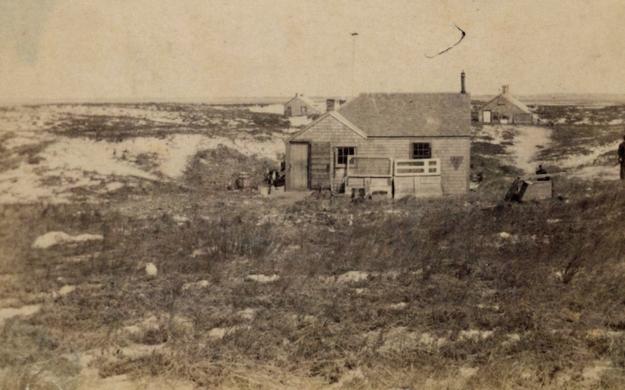


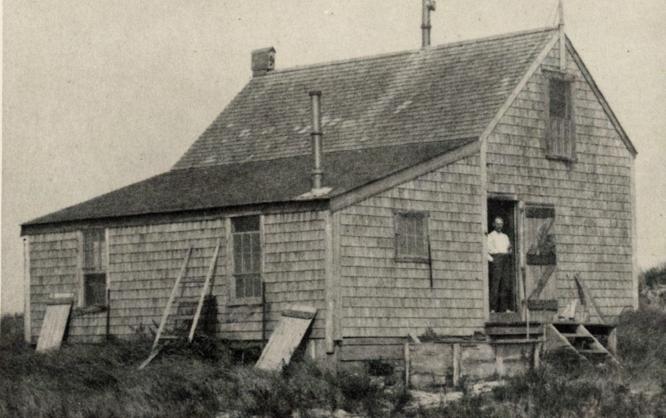

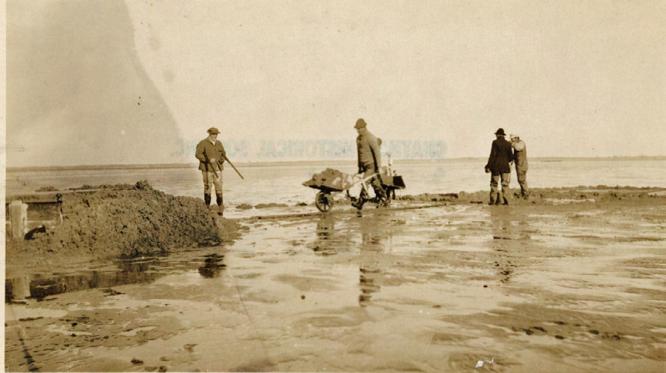
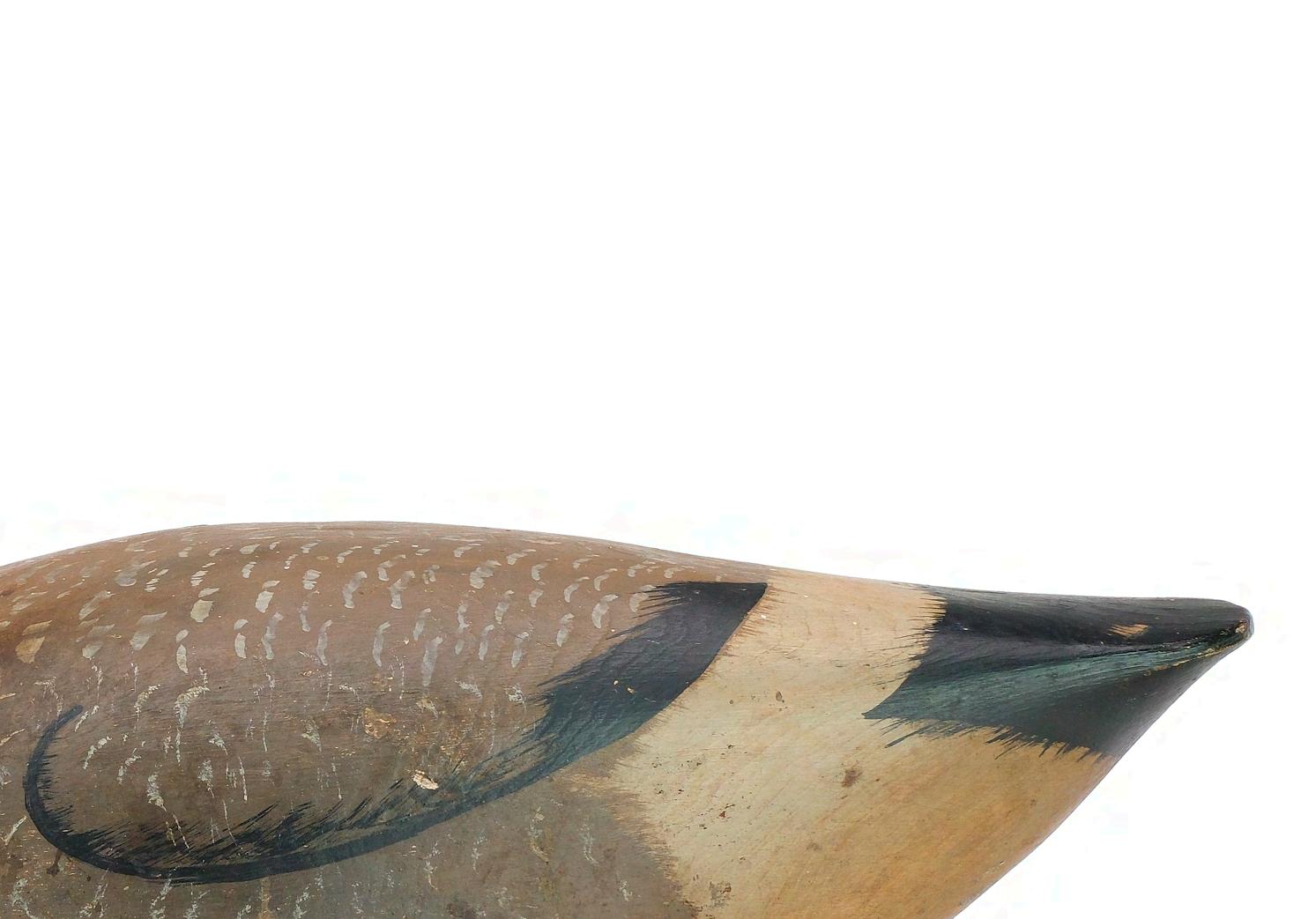
The early shooting at the club was exceptional. In the first yea r of operation, it is recorded that 375 brant were killed by one group of members in nine days and, in that same year, “ single shots which bagged from thirty to forty birds were not uncommon ”. As late as 1890, there are reports of “ stopping 17 brant with one discharge ”. Initially, decoys were not widely used, and pot shooting was common. When shooting on the wing became popular, live decoys were employed. These normally consisted of a few wing clipped birds that could be forced to “ call and flutter ” when a string attached to their legs was pulled. Wooden decoys appear to have been introduced about 1880 and, by 1896, the live decoys had nearly gone out of use. Whenever possible, the first shot was always taken on the w ater. A variety of wooden decoys were used at the clubs, most with a unique style named after the club. The most famous of these were a large number carved by none other than nearby artist A. Elmer Crowell.
The membership would change multiple times over the years and new facilities would be added. Yearly meetings were held in Boston and many names well known in today’s decoy community, such as John C Phillips and Harry V Long, often were guests. One Joshua Nickerson recounted his visit to the club in November of the mid 1920’s. The rules by that time had been amended so that members “ were assigned to occupy the facilities in groups of their own choosing for a week at a time ”. At the time of his visit, “ the camp consisted of at least three buildings located on a small hillock of hard ground on Shooters Island ” at the northern end of Monomoy. The main building consisted of a kitchen and dining facility while the other two were primarily bunk houses.
The daily operation was now under the control of a local manager (Will Gould) as well as an assistant manager and cook. All shooting was done from sink boxes. These were wooden structures roughly 6’x4’x3 ½’ sunk into holes dug in the marsh or shoreline at or below
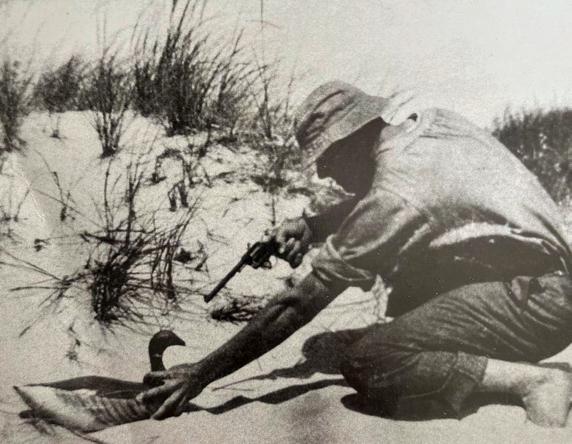
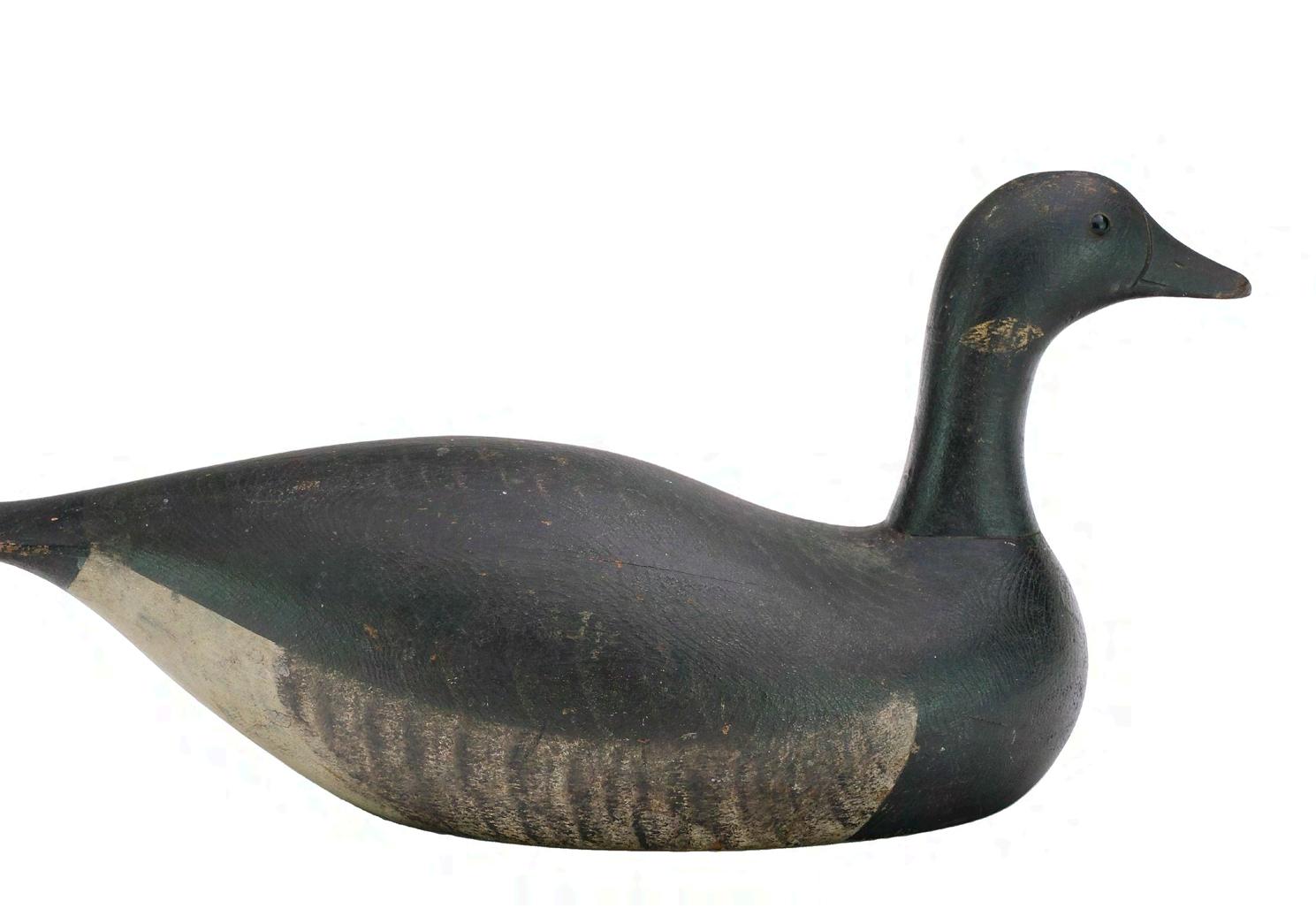

These would normally have to be bailed out prior to their being occupied and would often become unusable as the tide rose, thus ending the shoot for that day and necessitating a wade back to firmer ground.
The Monomoy Brant Club was not alone on the outer Cape. Others existed that were shorter lived or, unfortunately, not as well documented. In 1886, the Monomoy Club merged with two smaller clubs, the Providence (Rhode Island?) Club and the Manchester (New Hampshire?) Club under the name of the parent Monomoy Club. Formed at roughly the same time as the Monomoy Club was the Bristol Club. This group’s buildings existed within eyeshot of the Monomoy holdings and was its biggest and longest lasting competitor. Like Monomoy, Bristol attracted a number of noted sportsmen and naturalists from throughout New England. Artist and taxidermist William H. Hoyt of Connecticut and Florida as well as noted Harvard trained ornithologist, Arthur Cleveland Bent of Taunton, MA, as well as many other sportsmen of note were members. On the mainland of the Cape, just west of the Island, was the Marlborough Brant Club. This was formed in about 1899 by five men, all residents of Marlborough MA, just west of Boston. Like the Monomoy and Bristol Clubs the accommodations at the Marborough Club would probably be considered somewhat spartan by today’s standards but the shooting, clamming, quahoging, and fishing were strong draws for a group of urban businessmen.
Until 1909, the vast majority of the shooting at the clubs was done in the spring. After that date spring shooting was abolished by law in Massachusetts and gunning was now restricted to just the Fall, resulting in greatly reduced bags The eelgrass which the brant greatly favored was decimated by a disease in 1931 and 32 (Wasting disease), and the birds were forced to seek alternate sources of food, greatly diminishing their attractiveness as table fare.
Storms and the never-ending shifting sands of the Cape would ultimately take their toll on the club structures. By the 1940’s, structural remnants of the Monomoy and Bristol Clubs could still be seen on the beach but, by the 1980’s, their location was hundreds of yards offshore under the breakers of Chatham Bars. A hurricane in 1944 saw the Marlborough Club shanty washed off its piers and it was reportedly last seen floating down Bass River. Today, most of Monomoy is a part of Monomoy National Wildlife Refuge which was established in 1944.



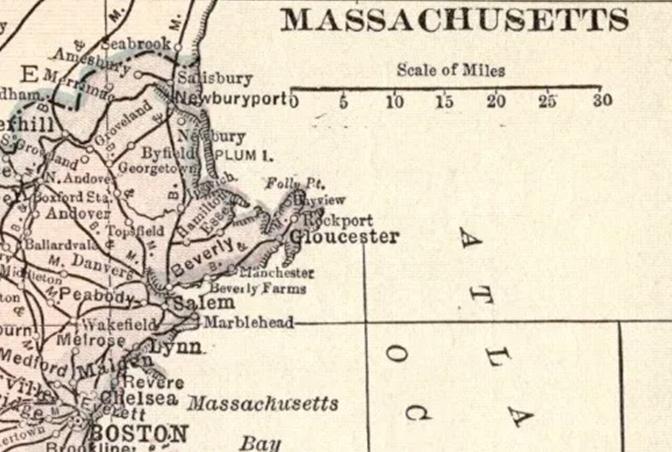
The “North Shore” extends from Salisbury on the north to Boston Harbor on the south. It is roughly bisected by Cape Cod’s lesser sister, Cape Ann. This rocky headland was known for its quarries, boatbuilding, lobstering (home to the famous “motif Number 1”), and offshore fishing fleets. To the north of Rockport an d Gloucester, lie the marshes of Salisbury, Newbury, Ipswich, Rowley, Essex and what is, unquestionably, the jewel of the areas duck hunting grounds, Plum Island. These vast salt marshes join with those of Seabrook in southern New Hampshire and are home to the famous Massachusetts soft shell clam. South of Cape Ann lie smaller, yet still important, marshlands bordering the town of Marblehead. Beverly was the home of some of the best known “Gunning Stands”, including that owned by Dr. John C Phillips at

Fortunately, the unique beauty and environmental importance of the area has long been appreciated, and much of the beach and marshlands fell under the jurisdiction of the Parker River National Wildlife Refuge in 1941.


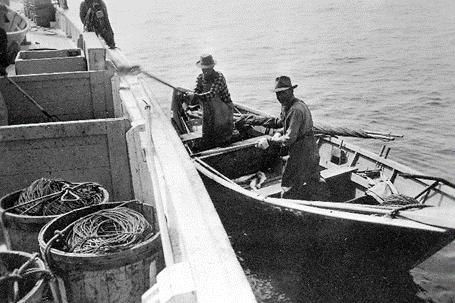



1879 - 1959 |
Fred Baumgartner was born on the North Shore, in Salem, MA. In the 1880 census, his Swiss born father, Phillip, listed his occupation as “Master Carbuilder” (aka carriagemaker). These woodworking skills apparently rubbed off on Fred who, by age 21, was living with the family in Worchester, MA and working as a laborer in a chair factory. Moving to Newburyport by 1902, he found work as a boatbuilder, and he would list either boatbuilder or carpenter/boatbuilder as his occupation for the remainder of his working life. On his WWI draft registration (1918), he stated that he was working for Wm H Morse and Co on Merrimac St. in Newburyport, and he remained with that firm through at least 1925. He never m arried and, for most of his life, boarded with the family of his brother-in-law.

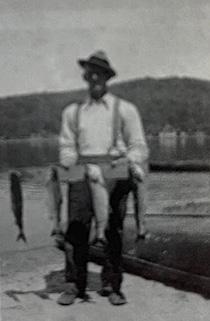
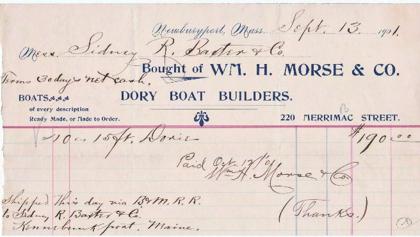

Baumgartner was an enthusiastic sportsman and became friends with a similarly minded neighbor, Charles A. Safford (1887 – 1957) who lived a mere two blocks away from where Fred worked on Merrimac St. Safford was a trained silversmith and machinist who, by 1930 listed his occupation, like Baumgartner, as “builder – boat shop”. Reportedly the two men shared a woodworking shop on Merrimac St, so it is conceivable that they worked for the same boat builder. The two men worked off of the same patterns so their decoys are remarkably similar. The main characteristics that differentiate the work of the two men are that Safford, in addition to solid body decoys, would be the only one of the two to occasionally employ a woodworking method known as “scabbing”, where multiple pieces of wood would be joined together to produce the finished decoy. Baumgartner on the other hand, only carved solid body birds. The other defining characteristic is that Baumgartner’s decoys tended to be somewhat flat sided while Safford’s were more rounded. Paint patterns are similar, and both can be found with glass eyes and bill carving, while some of Safford’s omit the eyes and carving. Both can be found with roman numerals on their bases, and both may show evidence of being mounted on triangles. The two friends built neighboring gunning camps on Plum Island and, undoubtedly, occasionally hunted together. Both men carved only a very limited number of decoys and any example of their work is considered scarce.

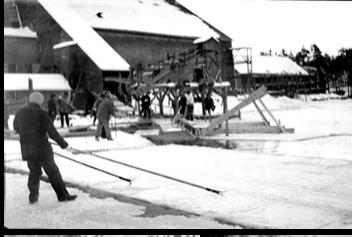
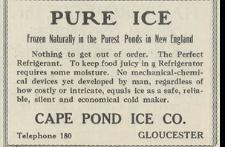
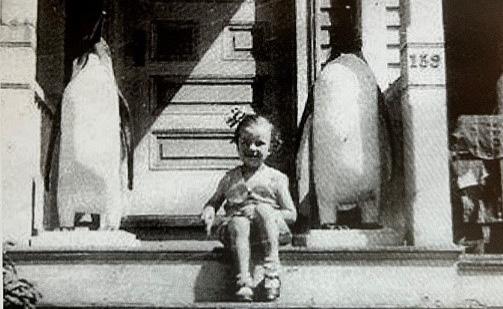

By the 1800’s, Gloucester, located near the top of Massachusetts’ North Shore, had earned its hard-won reputation as one of the premier fishing ports in America. Its schooners and their dories would venture to the Grand Banks and beyond, returning with holds brimming with codfish. As one would expect, many of the industries in town catered to the needs of the fleet. Hart’s father, Francis, was a fisherman, but his son choos e not to follow in that dangerous occupation and, by the time Charlie was 17, he was boarding at the home of ice dealer William A Homans and working “at (an) ice house” (presumably Homans’ “Cape Pond Ice Co”).
It is unknown how or when Charlie left the ice business and acquired the skills necessary to become a Stone Mason, but this was his listed occupation from at least 1890 through 1940 when he would have been 77 years of age. In 1900 he married Anette Appleyard and, by 1910, the couple had three children (Robert, Charles Jr and Grace). Since at least 1903, he conducted the mason business out of his home at 159 Essex Ave. in Gloucester where he would remain for his entire life.
He enjoyed hunting and carved a variety of hollow and solid decoys for his own use. Reports indicate that he also offered some for sale through a prominent Boston store. He carved mostly black ducks, the preferred local target, and he also carved a limited number of other species such as teal and, later in life, whistlers. Perhaps his crowning achievement was a singular, incredible, standing black duck with flapping wings which was prominently displayed in the window of a local hardware/sporting goods store. His working decoys are considered among the finest to be carved on the North Shore.
After Rear Admiral Richard Byrd’s expedition to the Antarctic in 1928-30, Hart became infatuated, some might say obsessed, with penguins. By his own admission he carved over 1500 of the flightless birds in all the species known to him. These ranged in size from a few inches to monumental models measuring around four feet tall and meant for mantel or porch decorations. Many of these were sold out of his home which, by 1935, had gained the local reputation as “The Penguin House”. One of his proudest moments came in 1935 when he presented Admiral Byrd with one of his carvings.
He lived out his final years in the family home with his younges t child, Grace, listed as head of household and he being recorded as “unable to work”. Artistic to the very end, one of his final works was carving his own headstone and corner markers that adorn his grave in Beechwood Cemetery, Gloucester.

The stylish decoys bearing the brand of “S.A. Fabens” have been sought by astute collectors for years. Of the few, isolated examples known, most have been found on the north shore of Massachusetts. The brand was eventually traced to a Samuel A. Fabens of Marblehead. However, it is not known with any certainty if Mr. Fabens was the carver of the birds or simply the owner of the rig.
Mr. Fabens was born in Salem, Massachusetts, the son of Captain William Fabens and his wife Sarah (Hughes) Fabens. In 1948, he married Mary G. Wilson and the couple would raise a large family of at least six children. Samuel was to eventually become a very successful seafarer and the family, along with up to two Irish “domestic” girls, resided for much of their lives at 14 Washington Sq. in the adjoining seafaring coastal community of Marblehead, Massachusetts, about eighteen miles north of Boston.

Samuel followed his father in a life on the open seas. Barely in his teens, he made his first voyage as “Cabin Boy” aboard his father’s ship the “Tarquin” and by the very next voyage he had advanced to the rank of “Mate” on another of his father’s vessels. He was to spend his entire working life on the oceans of the world as a “Captain” and “Master Mariner”, traveling to numerous exotic ports. Between 1834 and 1850, he made sixteen voyages on the ship “Ariosto” owned by Samuel and F.H. Grey of New York, sailing to St Petersburg, Havana, Antwerp, Rio de Janeiro and New Orleans. In 1850 – 1851, he was part owner of the bark “Wessacumcon” sailing to San Francisco via Chili, Honolulu, Calcutta and St. Helena. In 1852, he supervised the building of the ship “Golden Eagle” in Medford, MA and from 1853 to 1856 he made voyages in her to China, San Francisco, Callao and France. From 1858 to 1860, he was in command of the clipper ship “Challenge” from New York to San Francisco, Hong Kong and China. Finally, in 1862 and 63, he commanded the ship “Ganges” to Calcutta and London. From the 1870 census until the time of his death, he is listed as a “retired sea captain”.
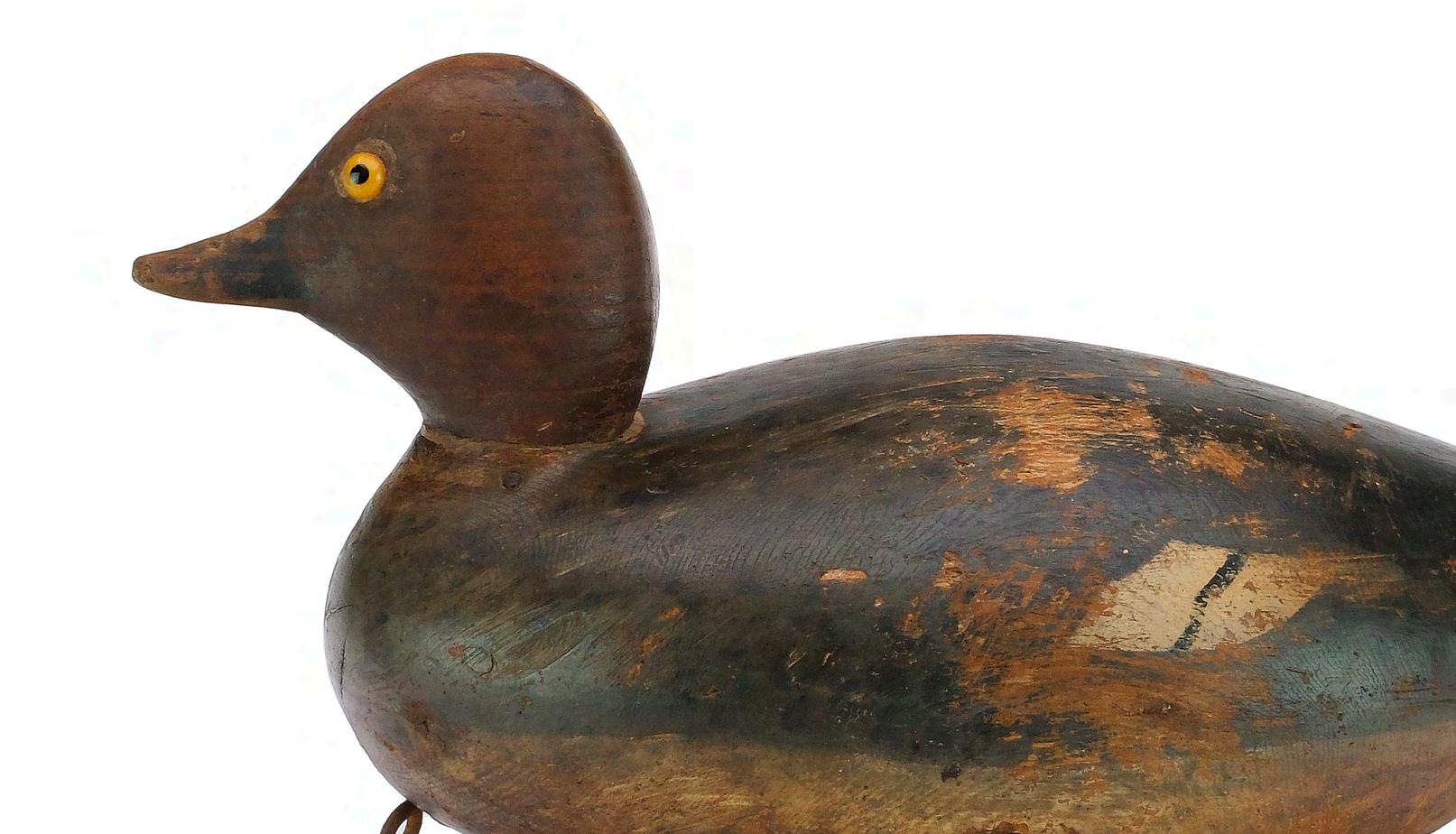
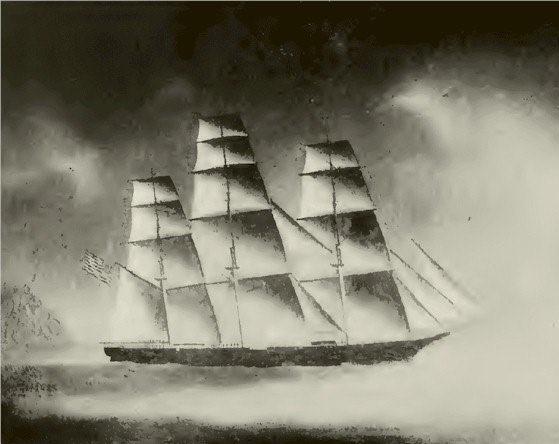

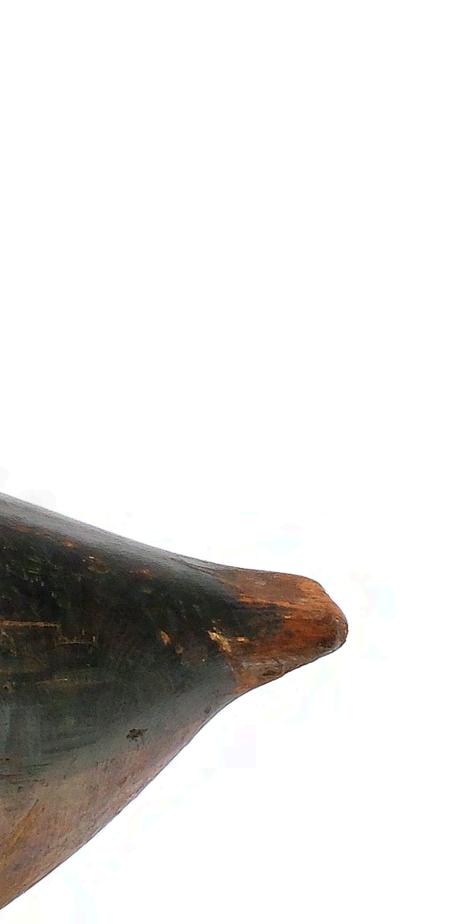
His obituary states that “he was greatly interested in the affairs of that Town (Marblehead) and his voice was heard in many Town meetings. He had served on the board of overseers and as surveyor of highways” . Some writers have stated that, upon his retirement, he served as a “trial justice” but this is not verified in the available historical documents.
As discussed at the onset, the question remains as to the actual identity of the creator of the decoys branded with the Captain’s name. He (Fabens) must have been, at least, capable and interested in woodworking. An article in the Fitchburg (Massachusetts) Sentinel states that one Roby Fletcher, while serving with Captain Fabens aboard the “Golden Eagle” in 1892, made, among other items, “a pair of rosewood planes for the Captain”. He also gifted “a rosewood spectacle case with silver hinges that was a marvel of fine workmanship which he (Fabens) still carries” . Perhaps Samuel used these planes along with other tools to craft his own decoys or, Fletcher or some other craftsman aboard one of Fabens ships made the decoys to assist the Captain.
The decoys attributed to Samuel Fabens apparently consist of only a small rig of birds for his own use and all surviving examples must be considered rare. There are known examples of scoters, mergansers and a few goldeneyes. All exhibit a level of craftsmanship and seaworthiness that speaks to the maritime heritage of their maker.
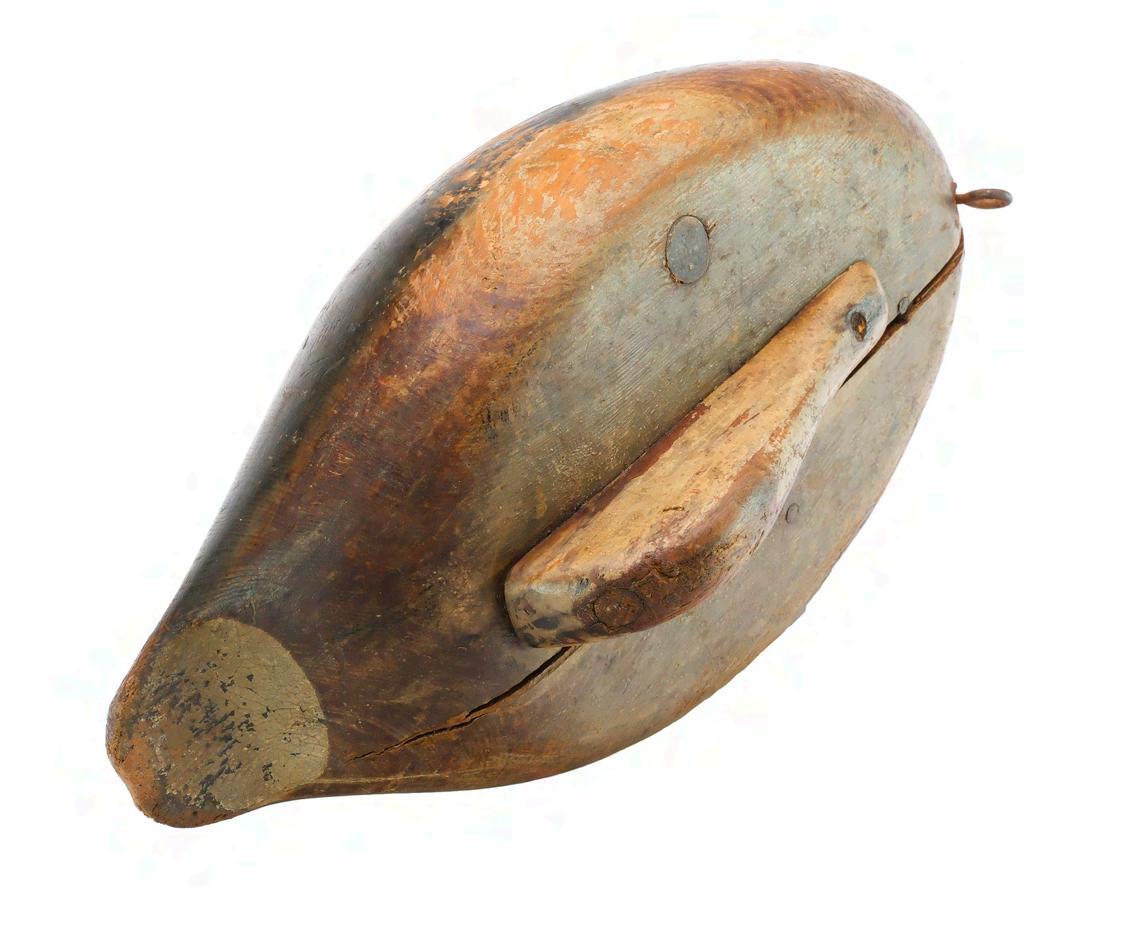
Captain Samuel A. Fabens cast off his lines for the last time on January 31, 1899. He is buried in Marblehead at (appropriately) the Waterside Cemetery in that town.
1866 - 1936 | Various North
MA and Portsmouth, NH

Twenty three year old Sarah Butman already had her son when, in 1869, she married shipbuilder Thomas C Wilson Sr. in Essex, Massachusetts. It is unclear what transpired early in that marriage but it appears that her young son, Tom Jr., lead a difficult childhood. By 1880, he is found in the records as attending school while living with his grandmother, Irene Butman, as a “boarder” in the home of William and Lizzie Wait in Ipswich. By 1889, now grown and on his own, he found employment in Ipswich as a “railroad brakeman” and married Canadian born Ellen (“Nellie”) Arnett. One year later, he was living on “the Neck” in Ipswich working as a “fisherman”. In 1896 the couple had a daughter, Elizbeth (“Lizzie”) and by 1910, he had switched occupations again, this time working for the State (MA) in some capacity in “Fish and Game”. For the next thirteen years both his employment and residence shifted every few years, wavering between “boatbuilding”, “painting”, “shoemaker” and “dog fancier”. During those years he moved back and forth between the North shore towns of Salem and Beverly. About 1925, he had finally settled down to being a painter and, by that date, had moved the family across the State line to nearby Portsmouth, New Hampshire at the mouth of the Piscataqua
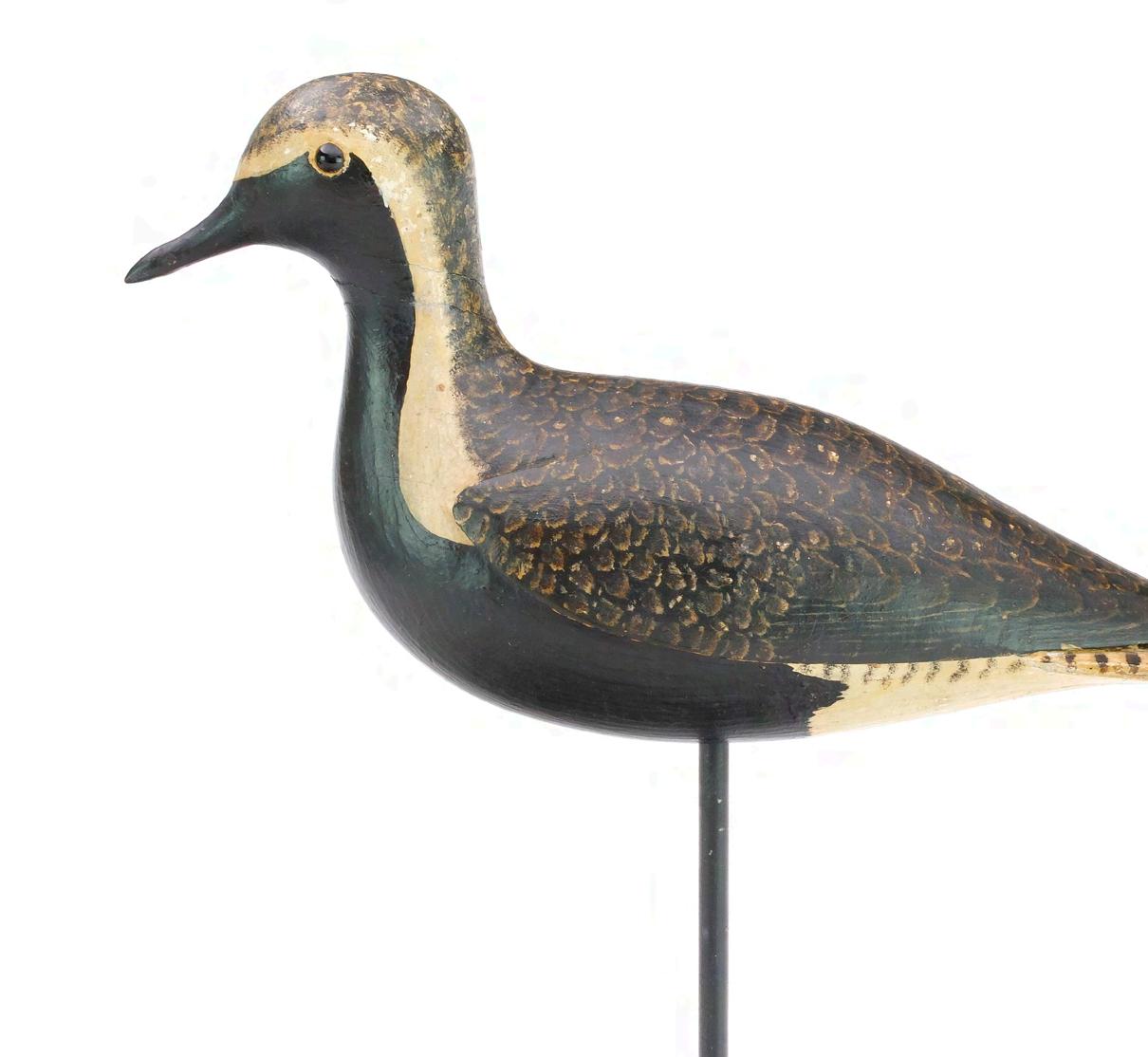


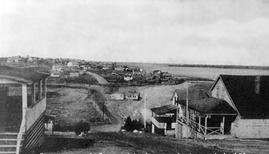
River. Still working as a painter, he made a final move in 1935 to neighboring Newington, New Hampshire on the State’s “Great Bay.
His obituary mentions that he operated a “hunting lodge” in Ipswich which would likely have been around the turn of the century. It is not known if he actually owned a lodge or simply ran a guide service out of his home or one of the numerous existing hotels on and around Plum Island at the time. Dr John C Phillips notes that between 1898 and 1905 he (Phillips) shot out of the “Wilson – Simpson” blind which was:
“ - - - built by Tom Wilson on a little drumlin in the marsh about one-third mile from the Ipswich Poor Farm. - - - I have shot a few ducks out of this place myself when staying at Tom Wilson’s place at Eagle Hill, Ipswich Neck- - - .”
The house (blind) was of cement and sunk into the gravel mound. It was supposed to be water tight but I remember it as a damp, clammy, and very uncomfortable hole.”
Phillips notes that yellowlegs were shot at the Ipswich blind which “ made the pot stink ”. For a period prior to 1916, Wilson ran a large stand on Great Bay in New Hampshire which was later taken over by “Ote” Ingalls of Ipswich. Wilson had moved permanently to New Hampshire by the mid 1920’s and shorebird hunting for yellowlegs and plover was still legal until 1928, so it is feasible that some of the shorebird decoys carved by Wilson were actually fashioned in New Hampshire.
Verbal tradition claims that he gunned for the market and, while certainly a viable possibility, this cannot be documented. Likewise, it is a long-standing rumor that he was the figure portrayed in Frank W. Benson’s etching “Old Tom”, but this is not the case (the etching was based on Tom Nickerson of Eastham (Cape Cod), MA). As his obituary notes, he was a lifelong, ardent sportsman who sadly, yet almost fittingly, met his end on a foggy, cold March day on the clam flats of New Hampshire’s Great Bay.

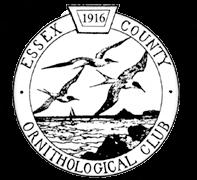
1854 – 1924 |

Born to Henry and Elizabeth (Betsy) Nichols. Fred attended the English and Classical School of the Mercantile and Arts Academy in Lynn. By 1875, he was living at 9 South St and married nineteenyear-old Phoebe Stowers. Together they raised four children. A lifelong resident of Lynn, other than when he got married, he never left the street of his birth only moving over the years between numbers 11, 13 and 15 Essex Court. Today, his grave can be located in the Pine Grove Cemetery, only a short distance from his ancestral home.
Fred witnessed many changes to Lynn during his lifetime. For the first two thirds of his life, the town would have still been considered basically rural and he would have had ready access to the nearby forest and fields to the west of his home. Lacking large amounts of marshland, Lynn possessed a long, relatively undeveloped,
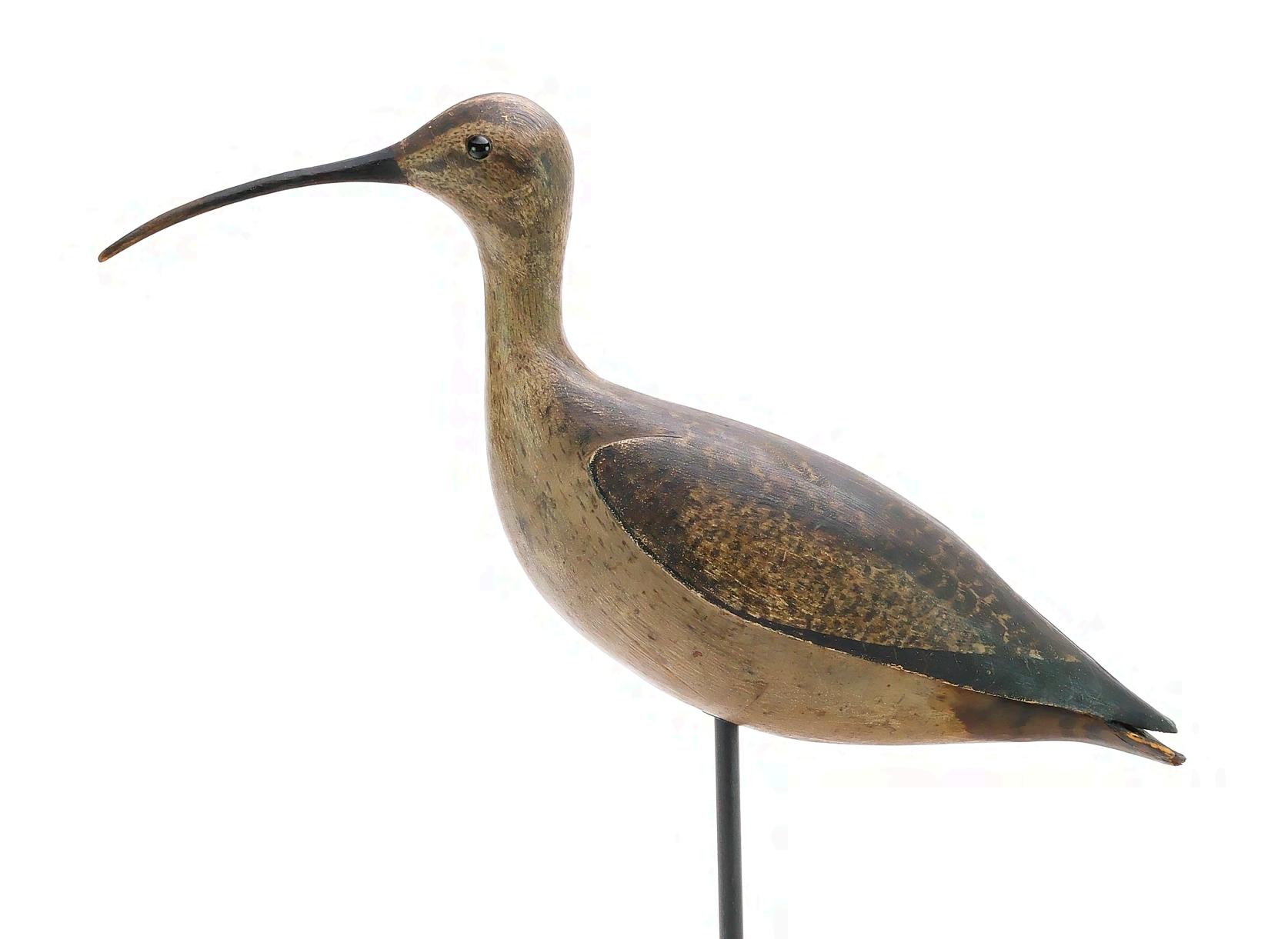


Beginning around the turn of the century, this commercial activity prospered and continued to expand. This, along with improved transportation and a connecting railroad to Boston, saw the town blossom into an urban bedroom community of the nearby state capital, complete with a bustling, automobile filled, downtown district. Fred must have been well aware of the changing landscape, and he eventually gave up his family’s trade of blacksmithing and horseshoeing and entered the shoe industry, working for the Emerson Shoe Co at 405 Union St in the central business district. He remained in this line of work to about 1916. From that date until his death, he dabbled in real estate – a wise move considering the fact that the town was still rapidly developing and becoming engulfed as a fashionable suburb of Boston.
Fred was a lover of music and a passionate birder. He was an active member of the Essex County Ornithological Club along with noted sportsman John C. Phillips, artist Frank Benson and other passionate outdoor persons of the day. He knew his avian subjects well and used this knowledge to create some of the most sculpturally majestic shorebirds ever carved in Massachusetts.
Note: Although traditionally attributed to the hand to Fred Nichols, for the sake of historical accuracy it should be noted that some collectors feel that he was not the creator, and they were actually carved by another, anonymous, north shore maker.

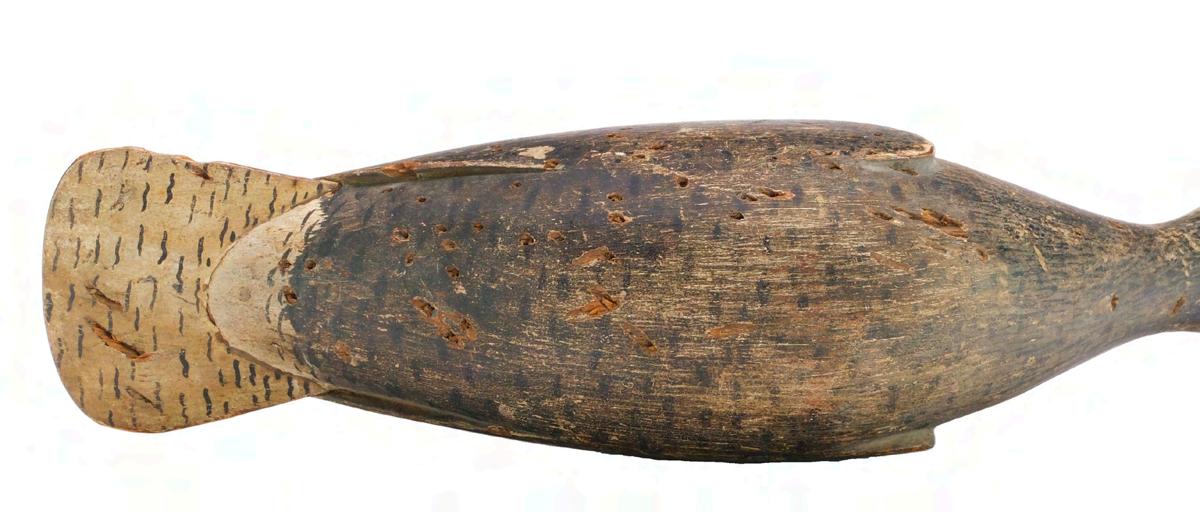
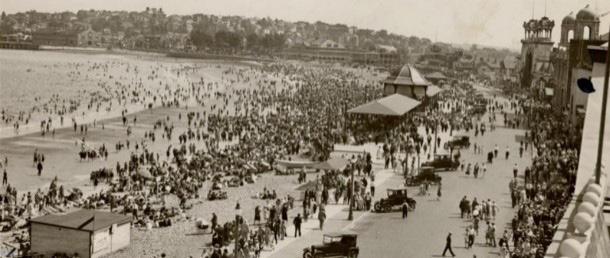
Son of a physician, Lawrence spent his youth in Boston and, as a young man, found employment as a clerk in a number of local stores. In 1900 he was able to secure a position as manager at the State (beach) bath house in Hull, immediately south of Boston. In 1903 he married Maine born Josephine Izzard, but the couple never had any children. He must have prospered in his managerial position at the beach for, in 1908, he was transferred to the large and newly designed Revere Beach and its bathhouse north of Boston, where he would spend the remainder of his working career. The couple never owned their own home and chose to board with various family members and/or residents of Revere. He had three brothers and the four boys and their physician father were able to enjoy hunts to the north in both Maine and New Hampshire and to establish a family camp on a bluff overlooking a pond in the Punkhorn section of Brewster on Cape Cod only a short distance from the shop of A.E. Crowell. These days afield could not have presented a more dramatically different environment in which to experience the outdoors than what Melvin faced every day in Revere. Revere was a popular suburb of the rapidly expanding Boston with its associated sprawl and development. Open space was a rarity and the crowds, especially in the summer, were overwhelming. The open beaches, marshes and meadows of the Cape must have been a welcome respite for men who enjoyed the out of doors.
The presence of a small number of exceptional shorebirds now credited to him, has been known by the decoy community for a number of years. At some point in the 1950’s, pioneering collecting Dr George R Starr became aware of a rig of 7 that had been discovered in Truro on Cape Cod. Two of these

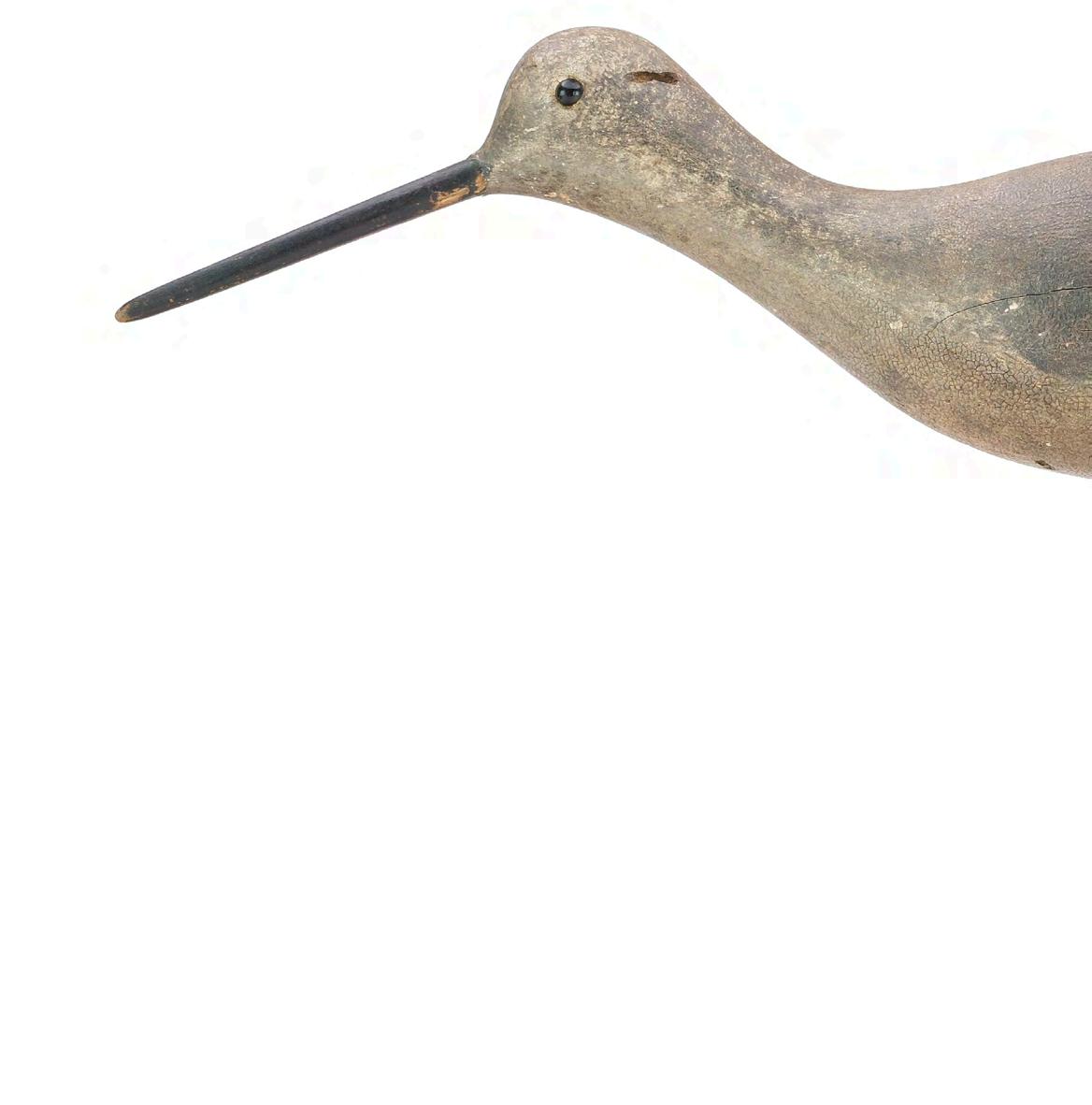

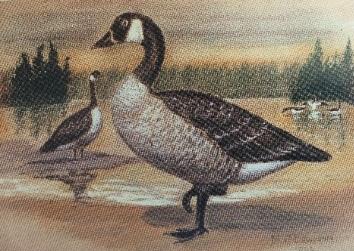
are pictured in fig 33 of his “Decoys of the Atlantic Flyway” The maker was unknown but their exceptional form and paint was erroneously attribted, by many, to the work of Elmer Crowell – high praise indeed. Eventually, a fortuitous tip and meeting by Ted Harmon c1997 established the maker and his story began to emerge.
Lawrence’s construction technique and painting was phenomenal for its day. He had a degree of artistic ability as evidenced by a small number of pastels that he executed in 1904, and this talent was not wasted on his shorebirds. Hardwood is not as easily worked as is the more common choice of pine or cedar used in most decoys but, due to its resistance to breakage, this was this material he chose for his birds. The construction and alignment of the bills, both on his uprights and sleepers, as well as the stout but accurate carving of the tails, also lent a degree of indestructability to his creations. It has been estimated that about 2/3rds of his carvings were sleepers and the remainder were posed as uprights or runners. He is known to have made very few decoys, perhaps just a single rig, and these were for his personal use. When these were deployed on the beach or moor, they would have presented a superb and convincingly lifelike and content attraction to incoming live birds.

Advanced collectors have always sought out the few of his carvings that have rarely become available. Dr. Starr has declared them “ . . . a fine example of imaginative design . . . “ . Respected Cape Cod authority Ted Harmon has written that Lawrence “Unwittingly, due to pride of craft and tremendous artistic ability, . . . left a legacy of beautifully sculptured bird decoys” Gigi Hopkins, when writing for the Museum of American Bird Art at Massachusetts Audubon, describes his work as “beautifully crafted” and presenting “ brilliant design ”. Fortunate today are those who can enjoy examples in their personal collections.

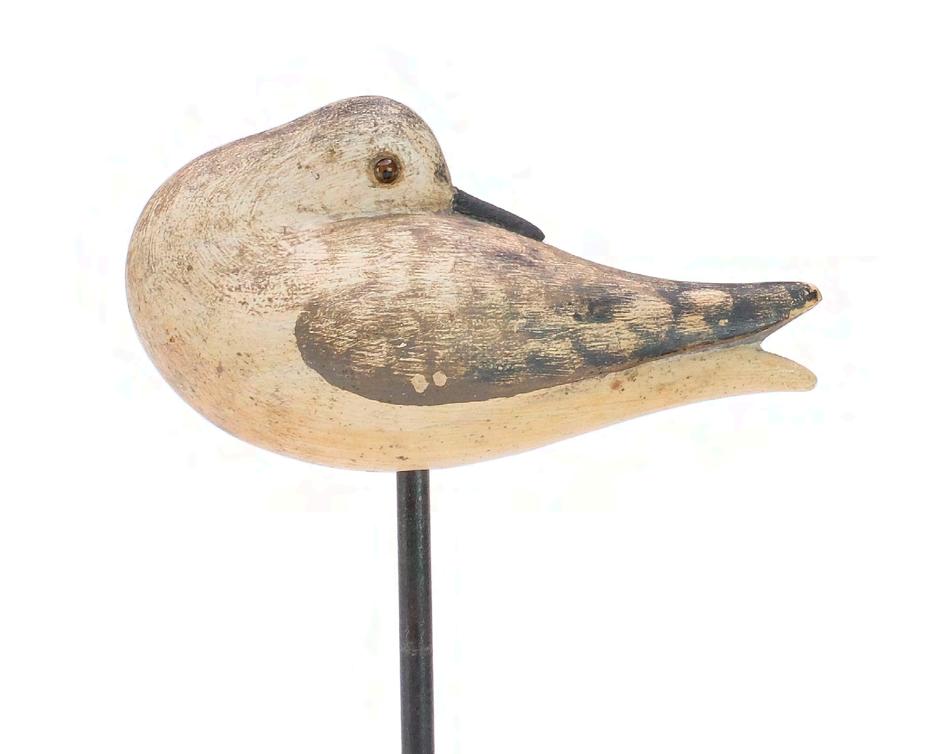
Melvin Gardner Lawrence is buried, along with his wife, in her family’s plot in Pine Grove Cemetery in Dresden Mills, Maine.



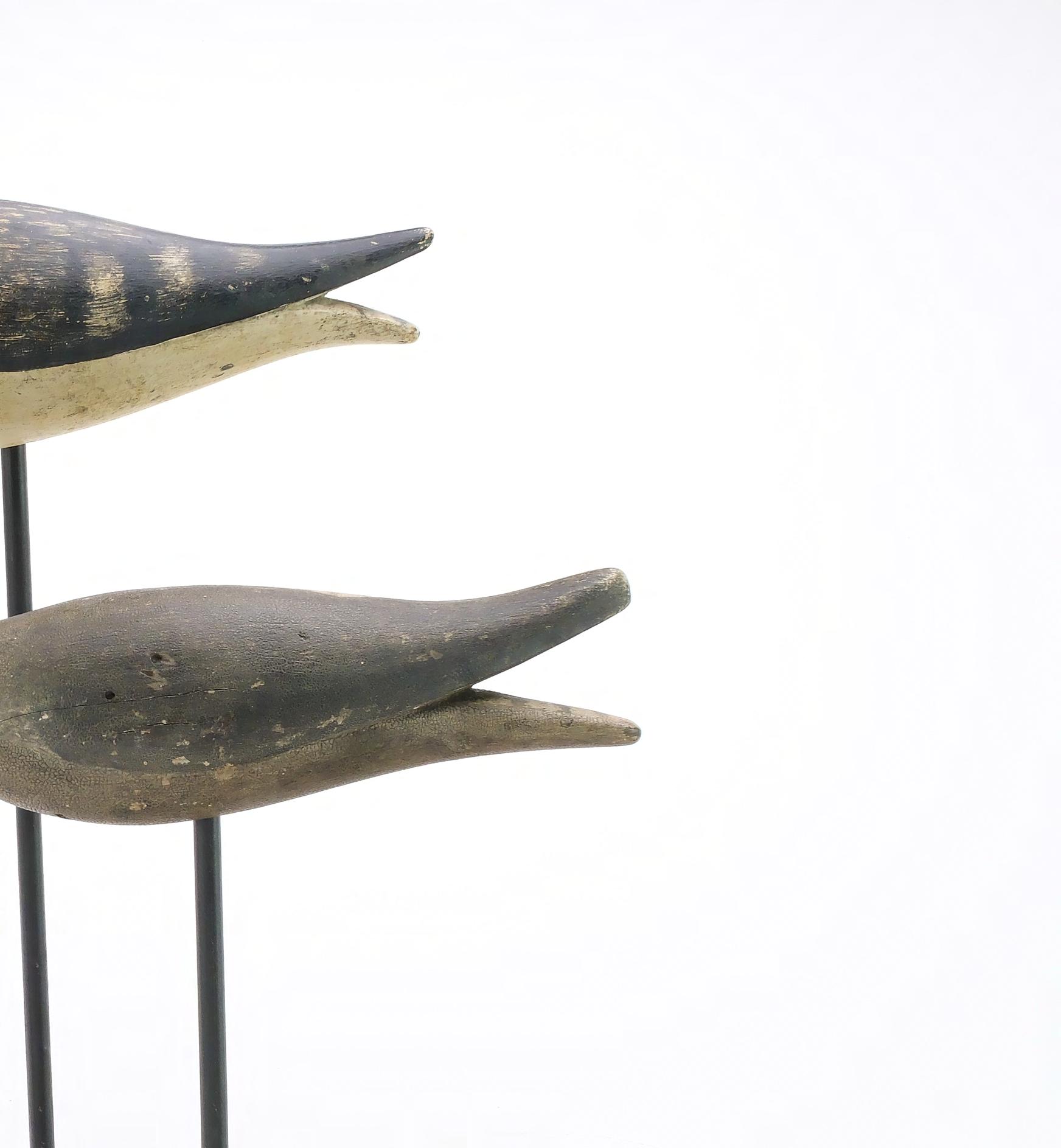
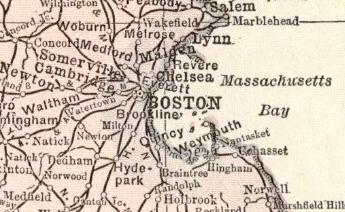
At the time of initial settlement, Boston was far different than it is today. The vast majority of the area was a region of extensive salt marshes at the mouth of the Charles and Neponset rivers. Fingers of land jutted out into the marsh, and the harbor was dotted with islands, both large and small. Undoubtedly, the region was rich in waterfowl of all sorts. As Plymouth lost its prominence as the main harbor in the Colony, Boston assumed the lead and never looked back. Almost from the start, the marshes were seen as an encumbrance to growth, and extensive filling began. This continued pro -







gressively through the late 20th century until today, only a few vestigial remnants of the original landscape and its avian residents can be seen, notably in the Boston neighborhood of Dorchester. In its later years, this decline was documented by the distinguished State Ornithologist Edward Howe Forbush (1858 – 1929) who wrote that, “in 1897 – numbers of golden plovers were shot on the Back Bay marshes of Boston but, by 1905, they were a thing of the past”.
The fact that thousands of people lived and worked in this congested urban environment did not mean that many still yearned for the sporting life. Undoubtedly, some carved decoys but most of these have been lost to time or have been mislabeled. A very few examples have been identified such as those credited to the hand of Stephen Badlam (1822 – 1899), but such documentation is rare.
What this meant was that Bostonians, from an early date, would have to travel to enjoy their sport. This would have been a somewhat tedious and expensive undertaking in the 1800’s and early 1900’s. Superhighways were nonexistent, and accommodations thinned as one distanced himself from the city. The very wealthy or privileged could afford the luxury of second homes. Men such as Drs Phillips and Cunningham, and professionals and businessmen such as Harry V Long and George Mackay, either built estates in what was, then, the country, or they possessed the means to travel at their whim to favored sporting destinations or private clubs both within and beyond State lines. Here they could retreat, relax, and be surrounded by good hunting and fishing opportunities. Others, less affluent, would travel and stay at local homes or hotels, while some would build much smaller and far less pretentious “camps” on local ponds or marshes, with the Plum Island area, the South Shore, and the Cape and Islands being favored locations.

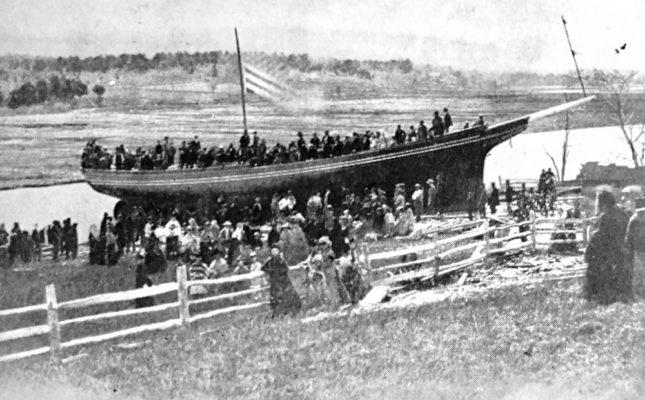
The south shore covers the area from Boston, south to the base of Cape Cod. Roughly at its center lies Plymouth, as well as the well-known towns of Duxbury and Kingston, mentioned so prominently in Doc Starr’s early “Decoys of the Atlantic Flyway”. Due to Starr and fellow pioneering collector, Winsor White, this is probably the best documented region of the State.
A number of rivers of varying size and length flow across the coastal outwash plain and empty onto Cape Cod Bay, and most of these have sizable areas of salt marsh associated with them. Notably among these would be the North River around Marshfield, Hanover and Scituate. Like Plum Island to the north, a few large barrier beaches exist, such as those at Marshfield and Plymouth, and direct shorefront beaches, both sand and cobble, stretch across the entire length of the coast.
Economically, the shoe industry was a major source of income for many, as was shipbuilding, fishing and lobstering. These trades used a variety of skills that leant themselves to the construction of the canvas covered decoy. Understandably then, the area from Cohasset in the north to “The Gurnet” at Plymouth Harbor was the focus of the coot shooters and many of the decoys employed in this exciting pursuit originated from this section of the coast.

The cranberry is native to Massachusetts. The plants thrive best in areas of deep organic soils and large amounts of sand are needed for a successful crop. The South Shore, as well as Cape Cod, are the regions where its cultivation flour ished. Huckleberry, red maple and Atlan tic white cedar swamps were common in these areas and provided ideal conditions for construction of the bogs. The berries also require large amounts of water for adequate growth and the commercial bogs were always associated with a freshwater pond. These swamps and ponds were natural attractors for ducks and geese, and it was many of these, as well as other larger ponds that existed throughout the area, that were responsible for the bulk of the State’s gunning stands being located here.
The South Shore produced many of the State’s well-known carvers as well as many lesser known, or anonymous. Certainly, the best known was Joseph Lincoln of Accord village in the town of Hingham. Joe’s home and gunning stand, literally on the outskirts of Boston Harbor, illustrates the somewhat undeveloped nature of much of the area at the time. This lower portion of the State, with only a few notable exceptions, was slow to see development and, with the exception of small enclaves of sum mer residences, it retained a rural nature until the early to mid 20th century.



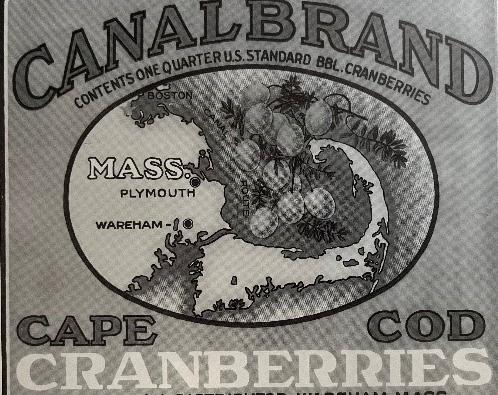
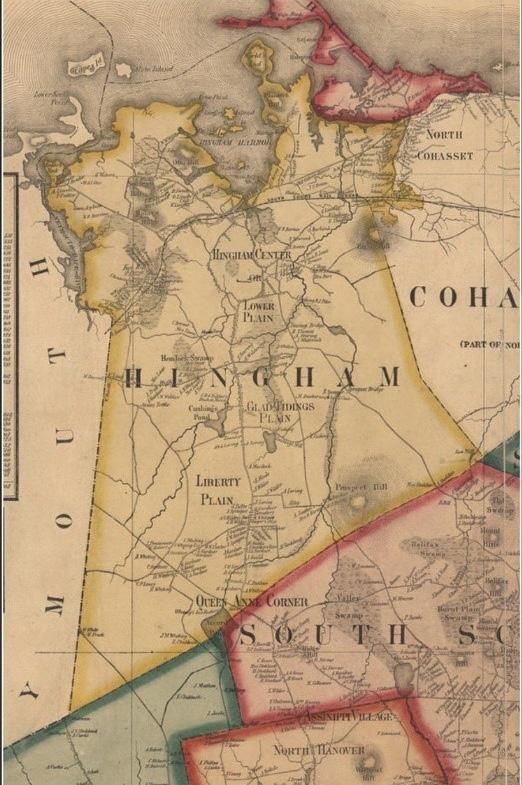
Joe Lincoln never left the home where he was born on Gardner St, in the Accord section of Hingham. As a young man, from about 1880 through 1895, he, like many others in the area, worked in a shoe factory or he occasionally worked on a piece rate basis out of a small 10’ X 12’ “tinker’s shop” behind his home. After his father’s death, he lived with his mother and brother, Wilbur, who worked as a farmer and/or raised poultry on the family homestead. By 1910 through the early 1920’s, Joe was a “carpenter” and he was remembered by his neighbors as being extremely talented when it came to building or repairing almost anything from furniture and boats to clocks.
He was a life-long, avid hunter and his home was conveniently situated directly on the shore of Accord Pond. It was here in 1904, that he became instrumental in the operation of the North Shore Gun Club. This group, like ones before it on the site, maintained one of the famous Massachusetts shooting stands, utilizing live decoys as well as numerous carved blocks. The complex consisted of a comfortable club house, an elaborate, long blind, storage sheds and live bird pens. John C Phillips in his “Shooting Stands of Eastern Massachusetts” states that “ Relative to its size, I think that more fowl have been shot in this pond than any other in the State ”. Joe had been making decoys for his own use since 1885. He expanded his production to include carving birds for friends and club members,
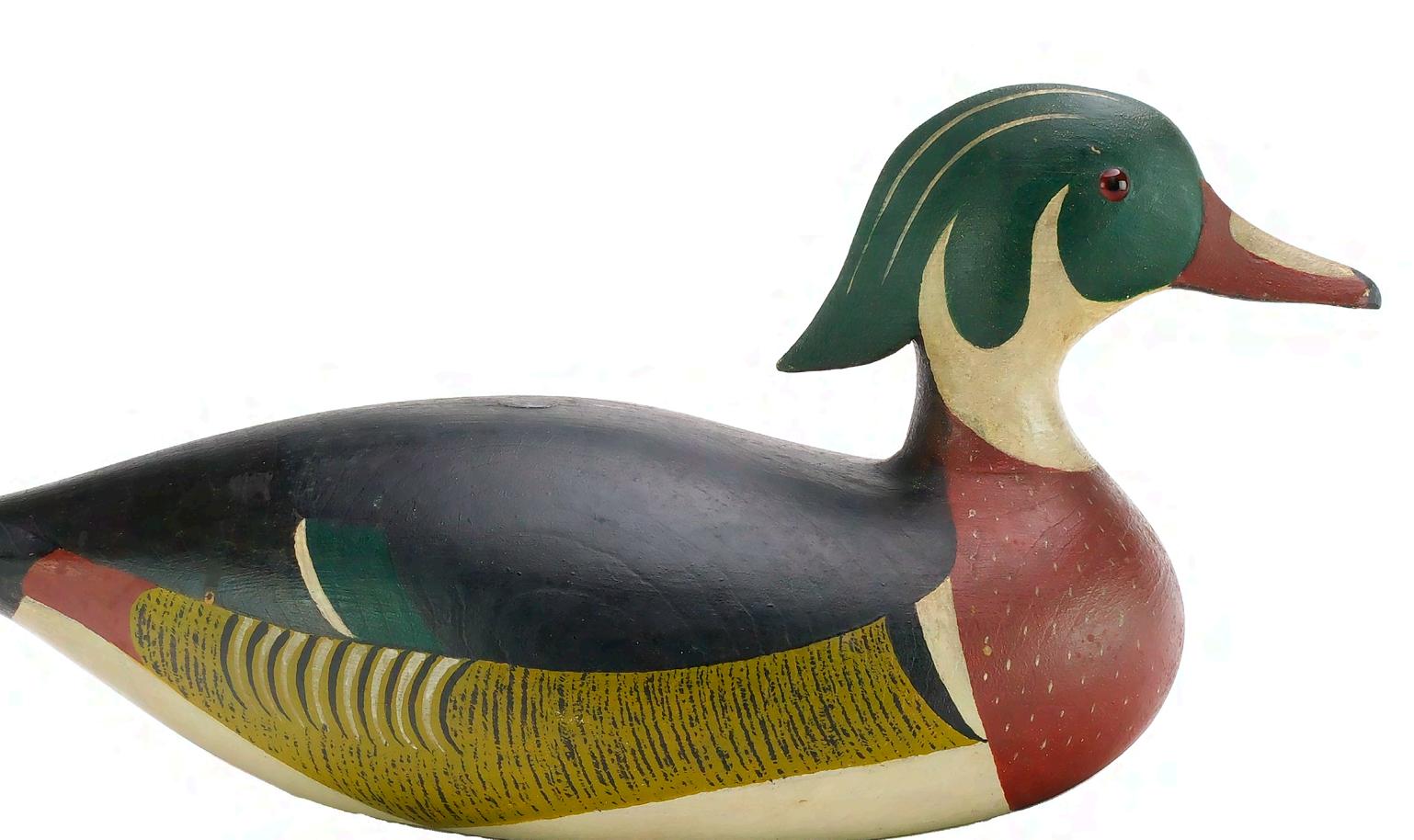



which eventually would spread his reputation far beyond Accord Pond. A 1918 article in a Boston newspaper recognized him as one of only two (commercial) decoy carvers in the State (the other being Cape Cod’s A.E. Crowell). Demand for his decoys became great enough that by the early 1920’s, he is listed in the Town Directories as “Decoy Mfg” and this would be his trade for the remainder of his working life. All of his decoys were produced in or, weather permitting, in front of his tiny “tinker’s shop” at his home. His business cards advertised his work locally, while contemporary articles about him in numerous periodicals spread his fame beyond the State’s borders. As late as 1933, he staged an elaborate exhibit in the annual Boston Sportsman’s Show.
His work inspired a number of local carvers, such as Gordon Mann (1871 – 1958) of nearby Rockland and Charlie Thomas (1886 – 1946) of Norwell. The Lincoln influence can be clearly seen in the work of both men. Joe’s decoys are elegant in their simplicity. There were no wasted knife or brush strokes. As a minimalist, he captured the essence of the live bird as few others have on the Atlantic coast. The range of his work included solid, as well as hollow (1 known) decoys, as well as canvas over frame models, and his unique “self-bailers”. His relatively few miniature carvings are tiny replicas of his working decoys.
Always considered young for his age, in 1931, at 72, he married a local schoolteacher, Mary Shute, and the pair apparently enjoyed a happy marriage in the home in which Joe was born. When Joe died, he was cremated and his ashes are buried, along with Mary’s, in Accord.



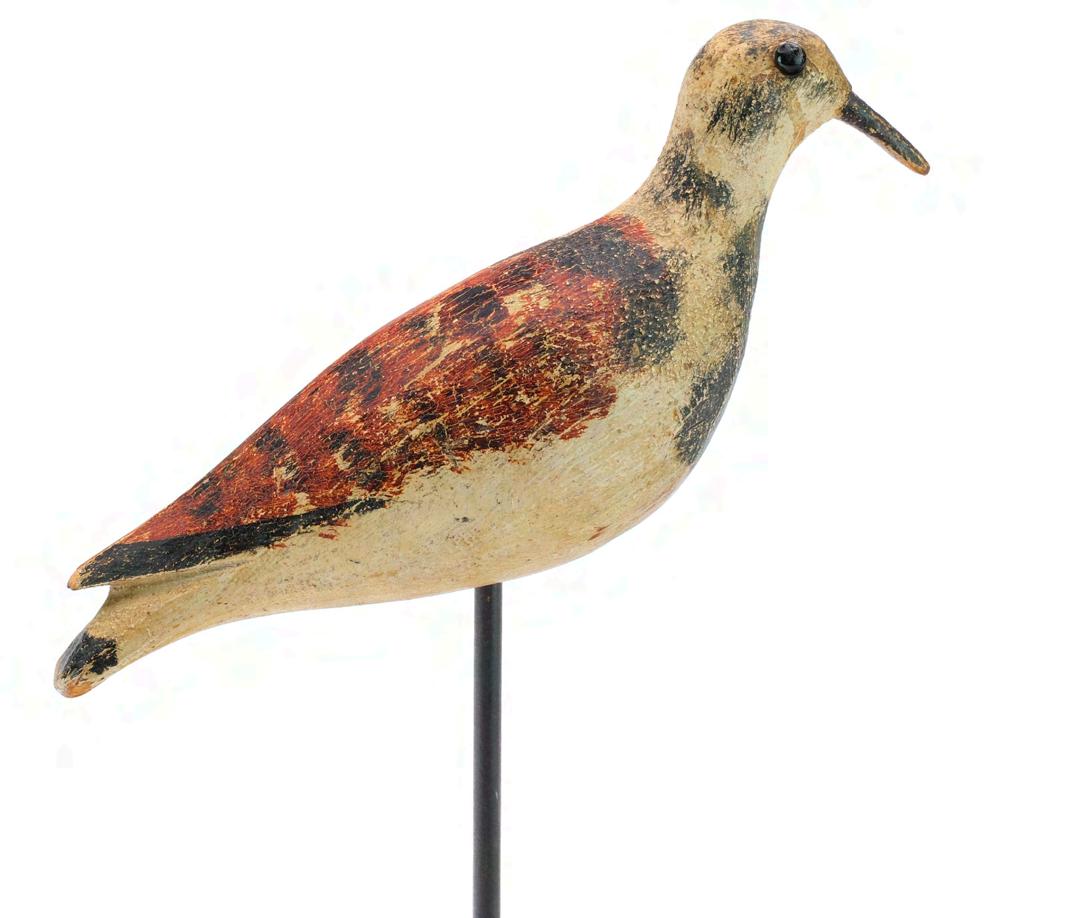


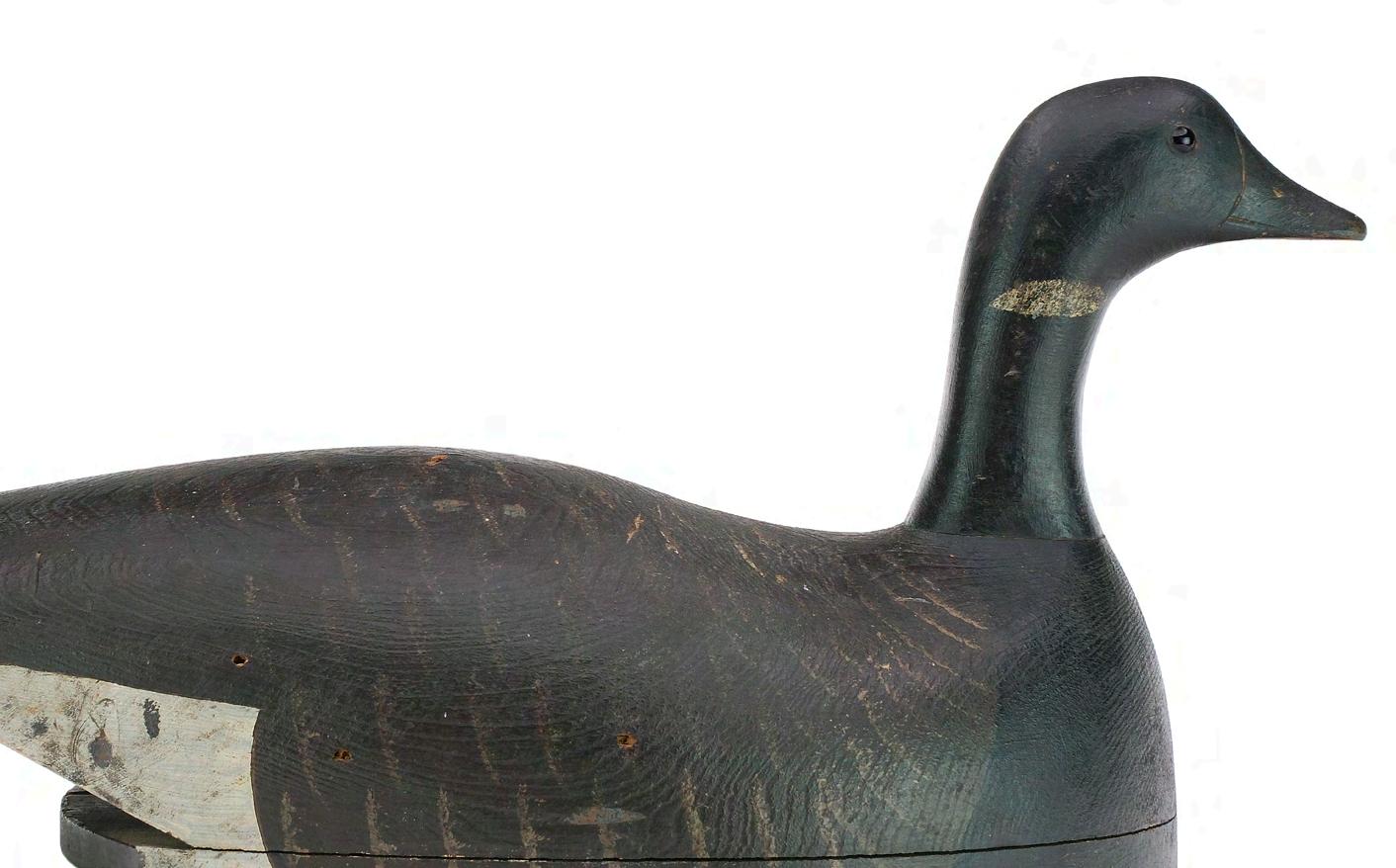

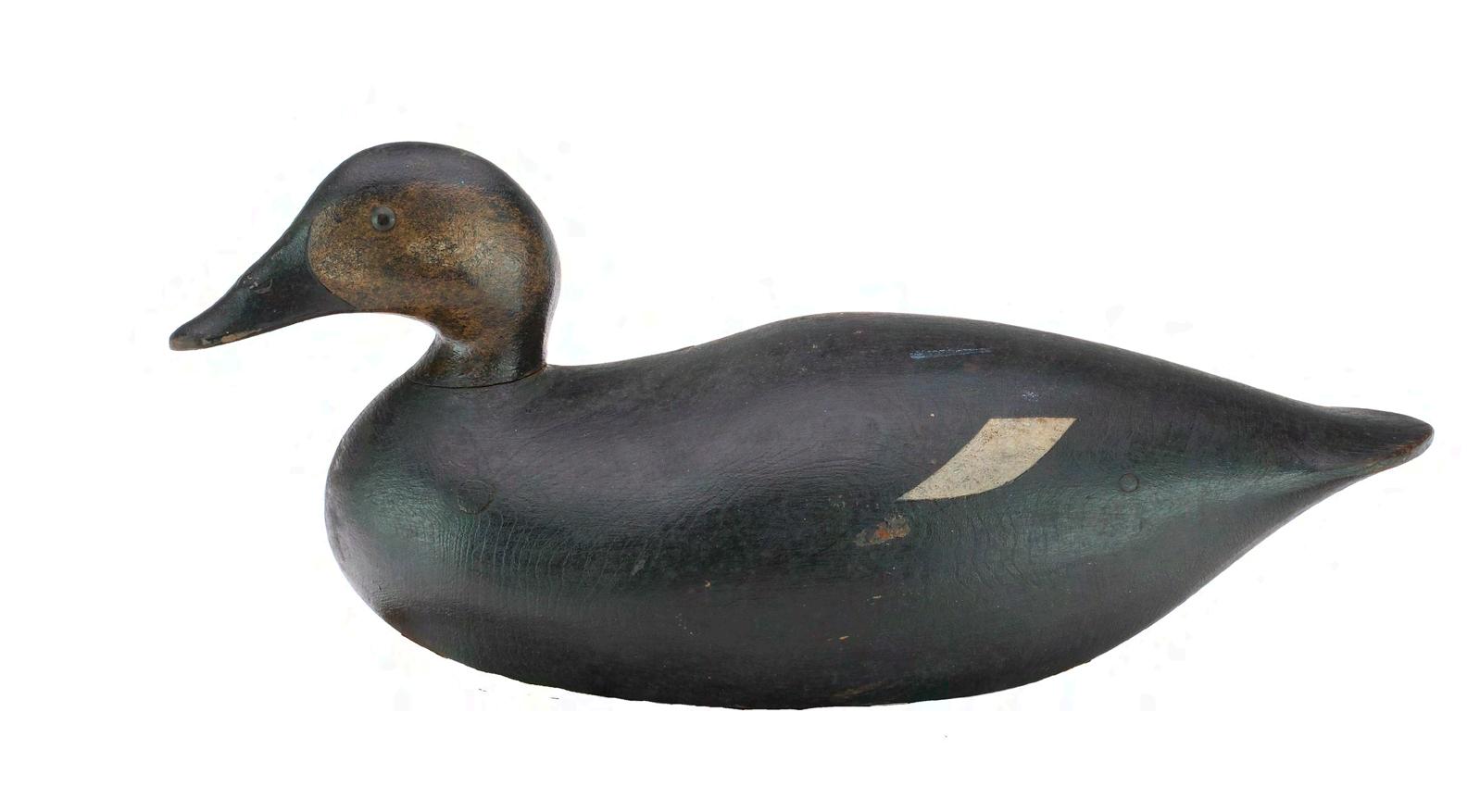



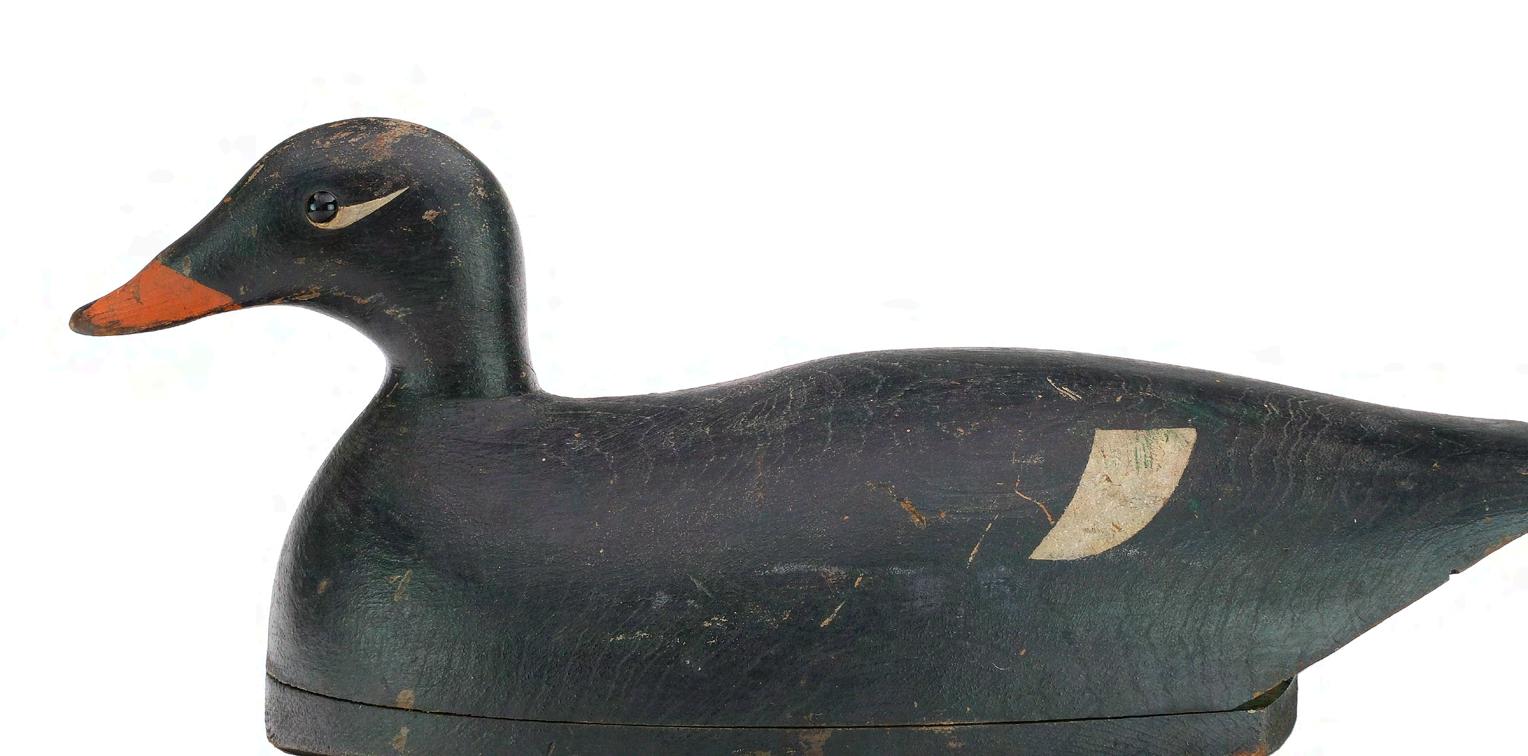
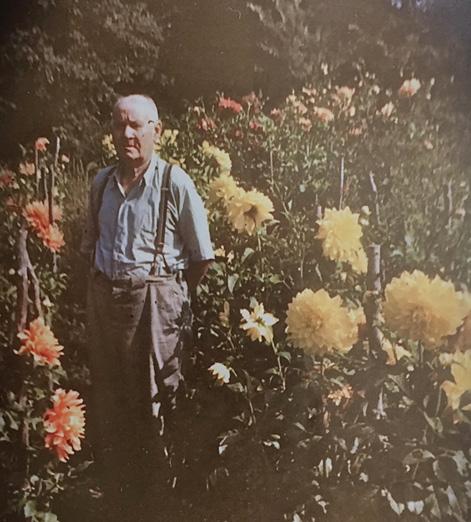
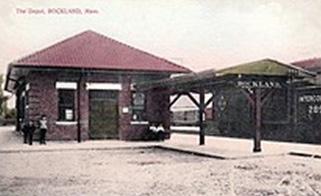

Born in Abington to Josiah and Charlotte Mann, Gordon, like so many other young men of his generation, grew up in a family of shoemakers. By the age of 25, he was working as a “motorman” for the Rockland branch of the New York, New Haven and Hartford Railroad. The railroad certainly must have appealed to him for he would stay with the Rockland branch for the remainder of his working life, retiring as a “head freight clerk”. His employment was only interrupted briefly when, in 1898, he served in the army during the Spanish American War.
In 1899 he married a local girl, Edith Maude Dill. They temporarily lived with her parents and, in 1903, had a son who, tragically, was stillborn. They would never again have any children, although acquaintances remember the couple as always liking neighborhood youngsters.
His hobby was raising competition dahlias, and he had multiple beds of the flowers, as well as large vegetable gardens at his home at 3 Pleasant St where he and Edith lived from at least 1910 until their deaths. This passion for horticulture is very likely how he came to make the acquaintance of Joe Lincoln who shared his interests. Lincoln’s home in Hingham was only 2 miles or less from Mann’s, and the two could have made the trip from one home to the other on their bicycles very easily. He enjoyed fishing for striped bass and is known to have made several types of wooden lures for friends. He also enjoyed hunting and is known to have shot with Lincoln. He made decoys both for himself and a few others, but his production was not large. Neighbors recall that his wood shop was on the second floor of the barn behind his home. His decoys were strongly influenced by the work of Lincoln and examples of black ducks, scoters, mergansers and a few rare mallards are known. The main distinguishing mark on his decoys is the carved wing detail with overlapping primaries that he incorporated into most of his carvings. Doc Starr describes him as “ - - - a very fine craftsman and a stickler for any detail that would improve his work ”. His crowning achievement can be seen in an outstanding group of about 6 standing black ducks, which would rival the work of any carver on the coast. With advancing age, he made fewer working decoys and spent his time producing a number of lamps which utilized his unpainted black duck decoys. These can be distinguished from his working carvings by always having roman numerals carved into the bottoms, the reason for which is unknown. Towards the end of his career, he carved a number of scoter decoys which severely lacked the quality of his early birds. These were intended for the souvenir market.
His wife died on Feb 10th of 1958 and Gordon lived for only 3 months longer. They are buried in Mt Pleasant Cemetery, directly across the street from their home.

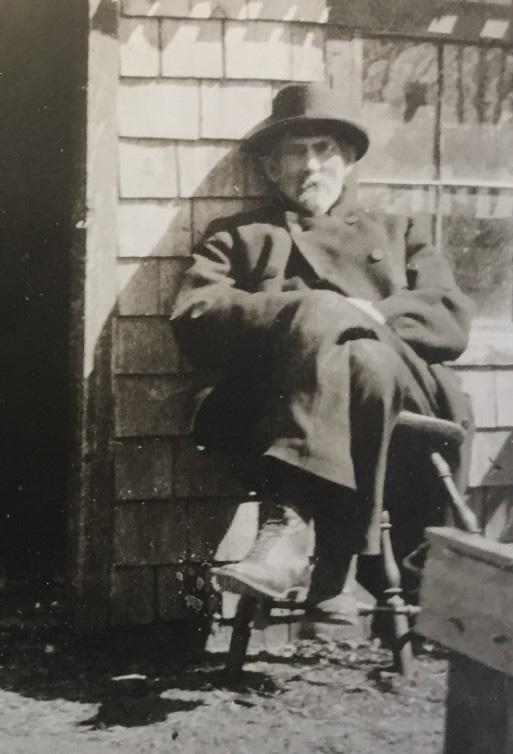
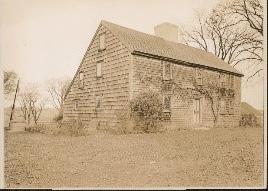

Lothrop Holmes holds two very important distinctions. He is the earliest, well documented carver from Massachusetts and, he produced some of the most coveted decoys ever carved on the south shore. His mergansers are universally acclaimed as representing the finest examples of their kind from any region and, likewise, his canvas covered oldsquaws (long-tailed ducks) are recognized icons of design, utilizing this unique type of construction.
He was a simple, untrained, hardworking, individual from the rural seaside community of Kingston. The Holmes name is an early one in Town records. Originally known as the north section of Plymouth (of Mayflower fame), a petition was signed to have it cut off as a separate Town, which occurred in 1726. Two of the signers were Isaac and Joseph Holmes. In Lothrop’s time, the area was still steeped in the sights and memories of it’s early Pilgrim fathers.
Lothrop Holmes was born in Plympton, MA, about eight miles from coastal Kingston. As a young man, he worked in the local iron foundries. He married Elizabeth Howland Hunter in 1848 and, in 1854, the couple bought a small “half Cape” house on Main St. in Kingston. Their time here was brief and, in 1855, the couple moved to Providence, Rhode Island where Holmes spent the next decade living in the city and working in the nearby Phenix Iron Foundry. In 1870, Holmes’s mother died, and he inherited the 115-acre homestead farm in Plymouth. Over the years, the couple had four children, but all died young. With no children to inherit the family farm, the property was sold, and Holmes and his wife returned to the small Cape in Kingston. The property was located on Main St, adjacent to the Evergreen Cemetery and, at age sixty-two, Holmes was appointed to the position of trustee there. He served in that capacity for the next nine years and for one year (1893) he served as Evergreen’s superintendent. The house was within comfortable walking distance to the Jones River, which bisects the Town. This gave Holmes ready access to the nearby marshes and tidal flats as well as an easy route to nearby Kingston Bay and its abundant waterfowl.
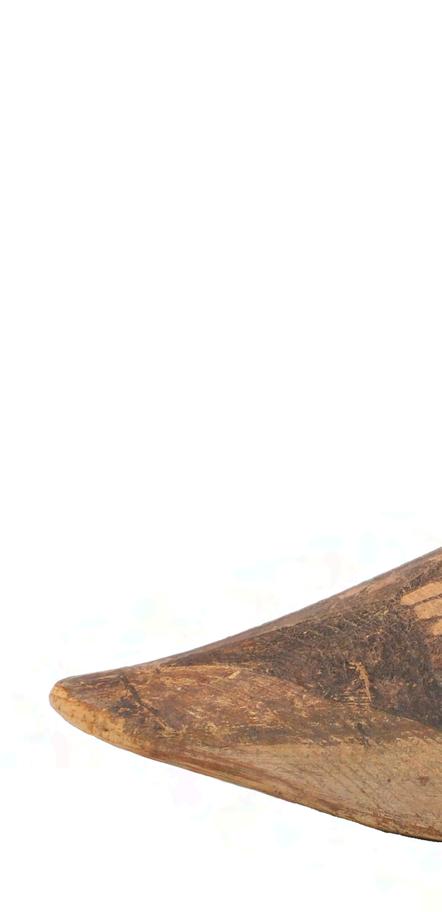

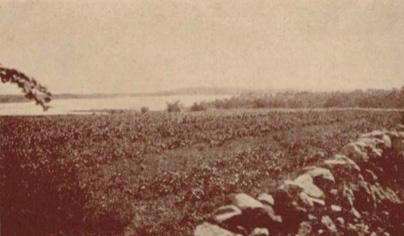
Holmes appears to have favored hunting sea ducks (mergansers, scoters, and old squaws) in the fall and winter and shooting a wide variety of shorebirds in the spring and late summer months. Yellowlegs, plovers, ruddy turnstones, and a plethora of other species would have been drawn to the prime habitats around late colonial Kingston. These would have been inviting targets, needing only the most rudimentary of decoys. Holmes, however, had a deepseated artistic urge that compelled him to go far beyond what would have been necessary to merely attract the gullible birds. Surely, shorebirds were carved by others prior to Holmes, but it was he who elevated the form to its pinnacle. His paint was exceptional, and his smooth, flowing, designs resulted in a decoy far above the norm of the day. Most of his birds were carved in the traditional upright, standing pose. A very small fraction, however, were presented in a feeding or running posture which would have lent a remarkable sense of realism to the rig. These feeders must be considered among his best, as well as rarest, shorebird carvings. His exceptional shorebird decoys set the standard by which future Bay State carvers would be judged.
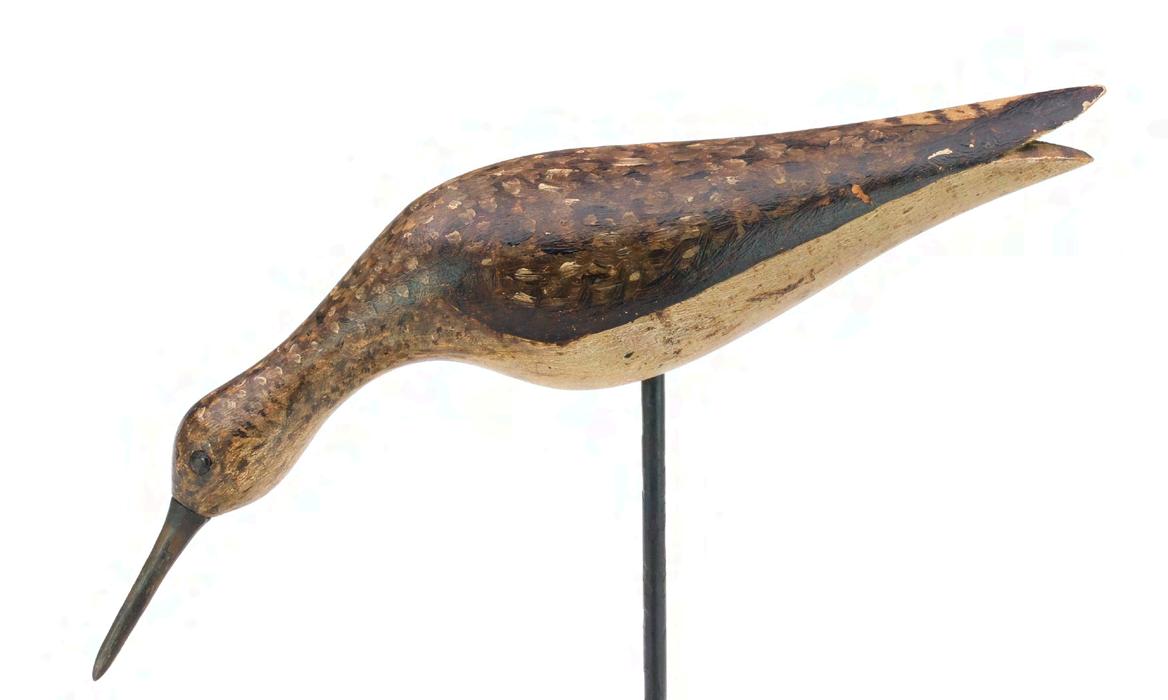

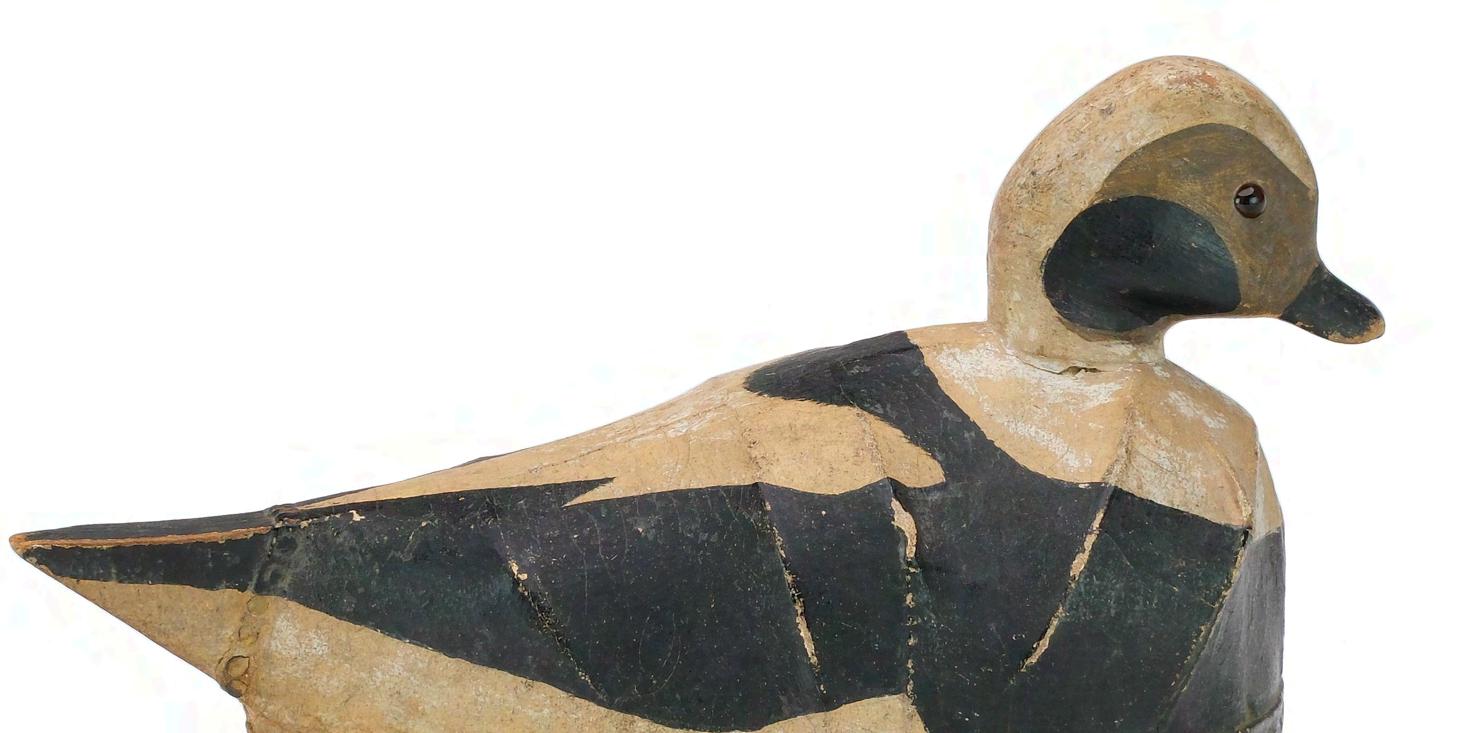

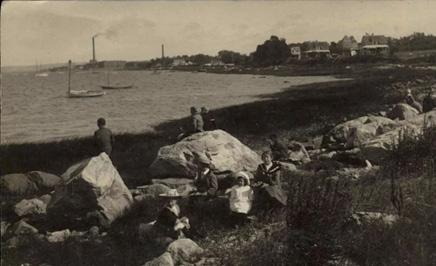
The coastal community of Kingston has a long and proud history dating back to the early days of the Pilgrims. Originally the northern part of Plymouth, it was the home of the first governor of t he colony, William Bradford (1590 – 1657). It was here that Clinton, the son of a cranberry grower, would live almost his entire life.
After graduating from the local high school, he apprenticed with a local civil engineer, and this would be his trade for all of his working career. By 1912 he gained membership into the Mason’s where he listed his occupation as surveyor and, by 1914, he was a junior member of the firm of Bailey and Keith in nearby Plymouth . In that same year, he married a Plymouth woman, Helen Cushman Hathaway, and they eventually had five children but, sadly, two sons died in infancy. After the marriage, Clinton left Kingston for a brief period, working in 1918 as a civil engineer for the Arthur J. Patton Co in Waterbury, Connecticut and then, in 1920, as a civil engineer for a utility company in Warwick, Virginia. By the 1930 census, the family had returned to Kingston and, by 1936, Clinton was employed by the civil engineering firm of Delano and Keith in Plymouth, eventually becoming a partner in the company.
The family resided at 7 Center St and Clinton was very active in the civic affairs of the Town. He was interested in history and was a founding member of the Jones River Historical Society and the Pilgrim Society of Plymouth.
Keith’s place in decoy history rests with his finely crafted can vas over frame scoters, and his astonishing mergansers. These are meticulously crafted and, according to early authority, George Starr, were patterned after the work of Kingston native, Lothrop Holmes (1824 – 1899). Keith would have been only 12 years old at the time of Holmes’ death and, according to Gigi Hopkins, Holmes had been suffering from dementia at the time, so the elder craftsman undoubted did not “teach” Keith how to fashion decoys. How Keith became aware of Holmes’ work is uncertain, but the influence, especially that seen in the mergansers, is unmistakable.
His wife died in 1974 and Clinton passed away less than one year later. They are buried in the Evergreen Cemetery in Kingston.
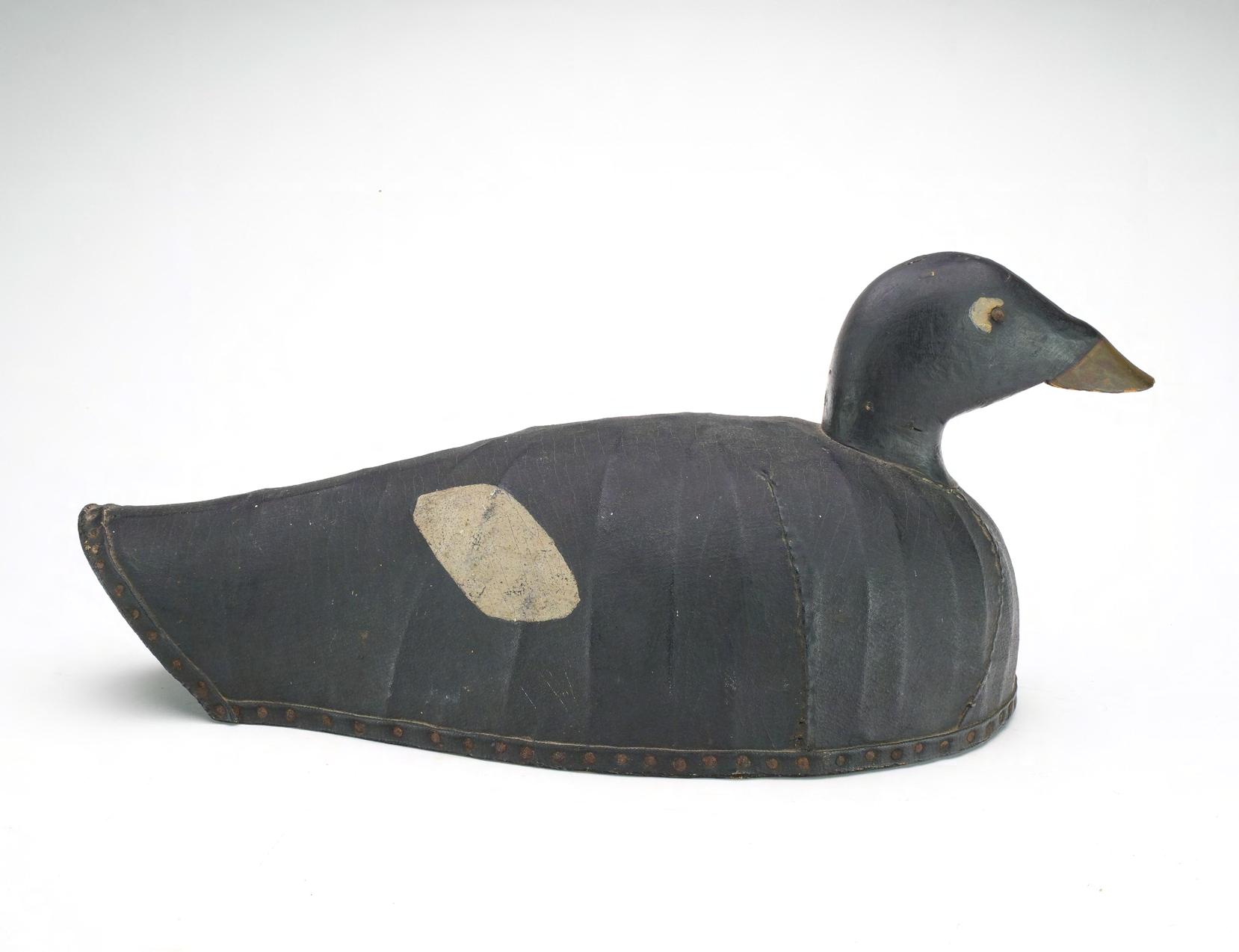
Elisha Burr 1839 - 1909
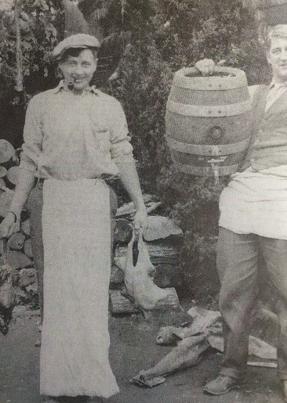
Carl Burr 1884 - 1961

The Burr family is almost synonymous with the coastal town of Hingham, Massachusetts. Family members were among the initial residents of the town and played an important role in its history dating back to pre-Revolutionary War days. Early family members were farmers and craftsmen and these occupations and skills were passed down through the generations. Like others in the small town just south of Boston, Burr men became expert at producing small storage boxes (known as pantry boxes), firkins, canteens and other practical wooden objects.
The carved wooden decoys produced by the family, likewise, served a very practical purpose, enabling the gunners to attract shorebirds, ducks and geese to within range of their guns. Long familiarity with woodworking made the production of these objects a task easily accomplished and the Burr family shorebirds, in particular, are considered among the finest carved in the Bay State. No one knows for certain when the first Burr family member fashioned their first shorebird lure. There were a number of Elisha’s and Eliza’s in pre and post-revolutionary Hingham but it is well known that Elisha (1839 – 1909), the patriarch of the branch of the family
Russ Burr 1887 - 1955
Alston Burr 1910 - 1979

that concerns us, had practiced, and some would say perfected, the craft within his lifetime.
The mid to late 1800’s saw some of the most widespread shorebird hunting in the State. The shooting remained popular through the early 1900’s but was (fortunately) largely curtailed with legislation in 1918. Limited hunting for a few species such as yellowlegs and plovers remained legal through 1928, when all shorebird shooting was finally outlawed.
Elisha Burr, then, was able to hunt these birds for his entire life and would have been very familiar with carving and using decoys to attract them. His two sons, Carl and Russ, also could have legally shot shorebirds until they were 44 and 41, respectively. Russ had no children but even Carl’s son, Alston, (6’6” and nicknamed “Shorty”) could have legally gunned for the birds until his 18th birthday. Both Carl and Russ are well documented as being active hunters and it is very likely that “Shorty” would have accompanied his father afield on more than one occasion. Both brothers undoubtedly learned to hunt from Elisha. Carl kept a hunting diary which recalls days at his camp on Cape Cod where he guid -
ed for sportsmen from Boston. Russ, too, kept a log from his earliest days afield through the 1920’s in which we find him traveling to “Third Cliff” in Scituate (near Hingham) “to shoot shorebirds”. Russ maintained a ‘shooting stand’ (camp and blind) on Trip Hammer Pond which is documented in John C Phillips 1929, “Shooting Stands of Eastern Massachusetts” and the family is known to have enjoyed hunts there (apparently accompanied by a cold keg of beer on occasion).
There has been a standing debate as to which family member carved which shorebird decoy. There are brands for “E. Burr” and C. Burr”. Does the “E Burr” identify decoys carved by Elisha? Does the “C. Burr” imply that Carl carved the birds that carry that brand or did he alter his father’s brand from an “E” to a “C”? Russ’s diary makes it clear that he hunted shorebirds over decoys. Did he carve these decoys or use his father’s rig? One long standing theory is that all the clan members carved shorebirds using the traditional family pattern developed by Elisha. To complicate matters, there are similarities between Russ’s duck and few geese decoys that have led some to believe that Russ carved all the shorebirds and the brands are purely rig or ownership identifier s. The debate continues, but has in no way diminished the fact that the Burr family produced and hunted over shorebird decoys that must be considered Massachusetts classics.
After shorebird hunting was outlawed, Russ, in particular, went on to make a reputation for himself as a carver of excellent miniatures, following in the footsteps of Lincoln and Crowell. Alston, too, followed in the family carving tradition and produced miniatures which are not as refined as those done by Russ.


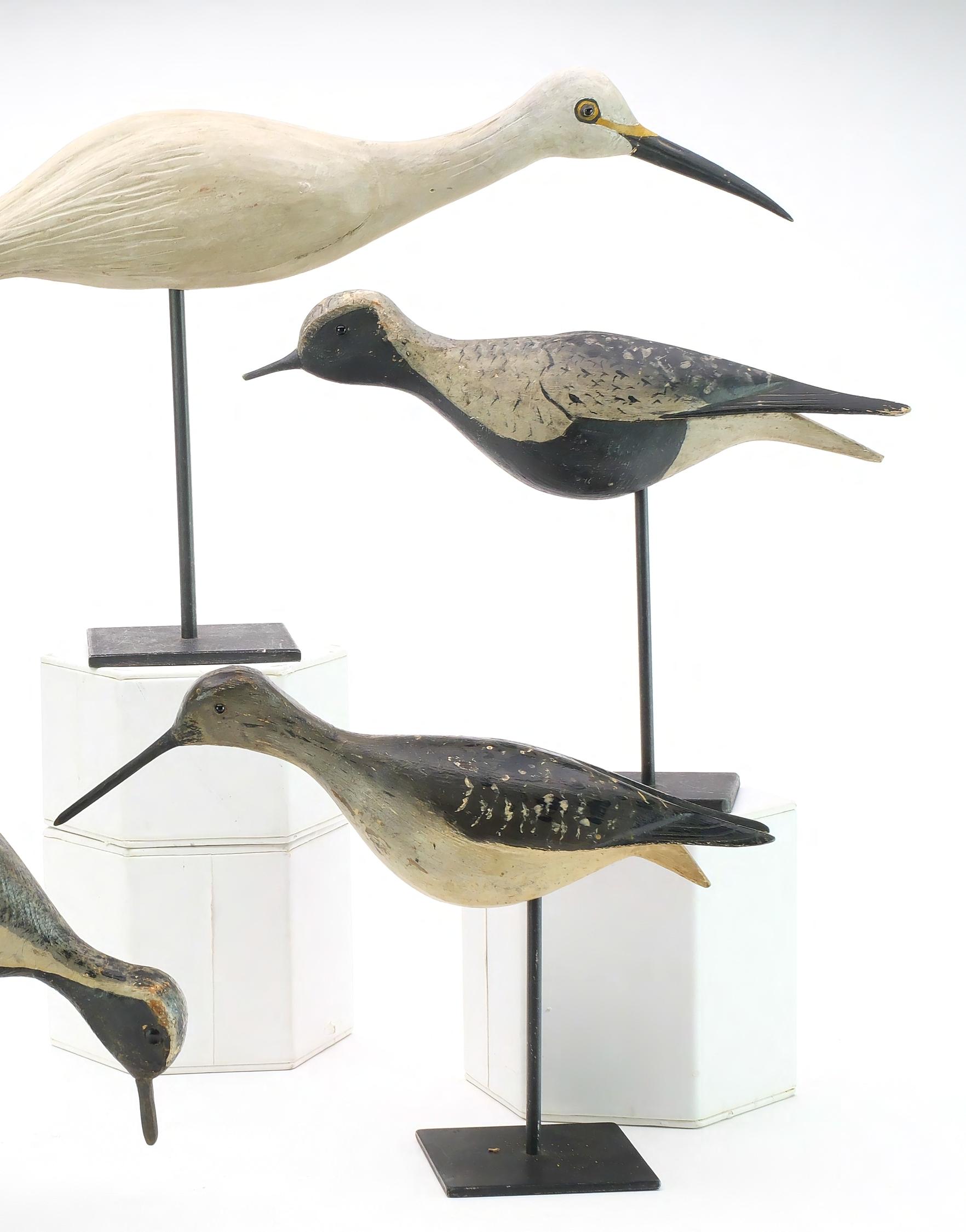

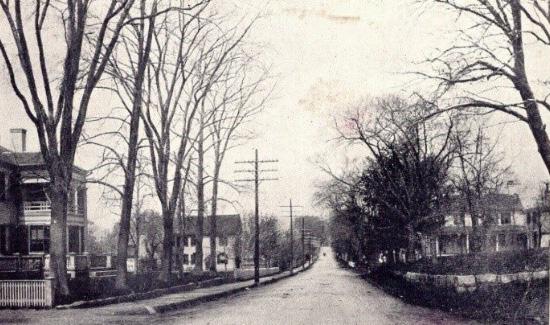
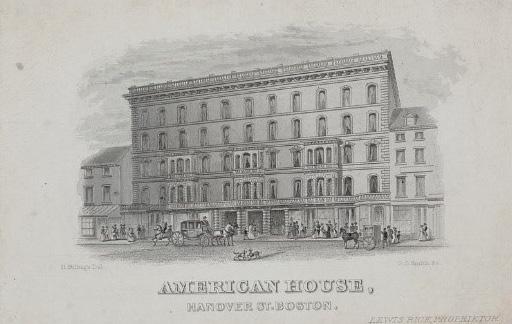
When the original colonists arrived in Plymouth, they were required to remain together for seven years. At the end of the term, land along the coast was allotted to the settlers for farming. Each man was given 20 acres for himself and an additional 20 acres for each member of his family. Thus, the coastline from Plymouth to Marshfield was parceled out and the settlers began to move away from Plymouth. Originally called Mattakeesett meaning “land of many fishes” by the native Wampanoags, the area that was to become Duxbury became home to notable, familiar names, such as John Alden, Capt. Myles Standish and William Brewster. In 1637 the land on which they settled was incorporated as the second town in the Colonies. This area, directly on the shore of the Atlantic, about 35 miles south of Boston, would become the life-long home of direct Mayflower descendant, David Goodspeed.
Dr. Starr discusses Mr. Goodspeed in his “Decoys of the Atlantic Flyway”. He relates that Goodspeed, in about 1890, “made himself a fine set of Quandies (oldsquaws)”. Starr goes on to describe Goodspeed as having worked as a bartender at the old American House in Boston and that he was apparently very sensitive about this occupation and never mentioned the nature of his work, but always left Duxbury dressed like a banker and spoke of “ going to business ”. This would have been c1900 for, in actuality, Goodspeed held a wide range of occupations throughout his lifetime. These included: mariner, carriage painter, flagman for the railroad, printer, poultry farmer and cook in a lunchroom. In 1893, he married Lucy Cummings and the couple spent almost their entire lives on Washington St. He was a member of the Mason’s and was somewhat active in town affairs. He helped organize the 250th Anniversary of the town in 1887. He served as constable in 1907 and 08 and was superintendent of the alms house in 1906 and 07. He and his wife are buried in the Mayflower Cemetery in Duxbury.


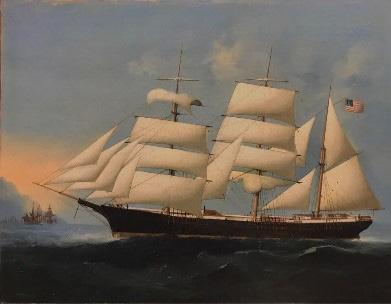

Clarence’s father, Capt. Frederick C Bailey, was employed in the China trade. His wife was Helen Mary Peterson, and she would often accompany him on his trans ocean voyages. On one of these trips to the port of Hong Gong in 1882, while aboard the ship Nehemiah Gibson, she gave birth to a son, Clarence.
Upon returning home, the family resided in Kingston where Clarence graduated from the Massachusetts Nautical Training School in 1900. In 1908 he married a Duxbury girl, Albertine Darling, and the couple had four children, a daughter and three sons. Clarence and Albertine’s home was located at 149 Summer St in Kingston, where they resided from at least 1918 until the time of Clarence’s death.
For almost fifty years, both Clarence (he seldom used the name Ichabod) and his brother Fred were Boston Harbor Pilots, guiding large commercial vessels into Boston harbor. Clarence would eventually captain three different pilot boats, “Liberty”, “Louise”, and “America”.
Both brothers made decoys, but it was Clarence, the perfectionist, who gained fame with his expertly crafted, canvas over ash frame, “loomer” geese. His uncles in Kingston owned a business that produced sails for the maritime industries and scraps were always available to Clarence. Likewise, the steaming of the ribs would have been a familiar practice to someone who had experience with ship building or lobster pot construction. To his young bride’s dismay, her husband announced that the kitchen table was to be the location for the construction of these huge tollers. He also made a small rig of old-squaws (long- tailed duck) that were locally referred to as “Quandies”. Bailey believed in oversized decoys and, like his huge geese, these were no exception. They are carefully hollowed from below to reduce weight and increase buoyancy. Each is unique, not only for their life-like head positions, but because all are painted slightly differently. When asked about this by Dr. George Ross Starr he replied:



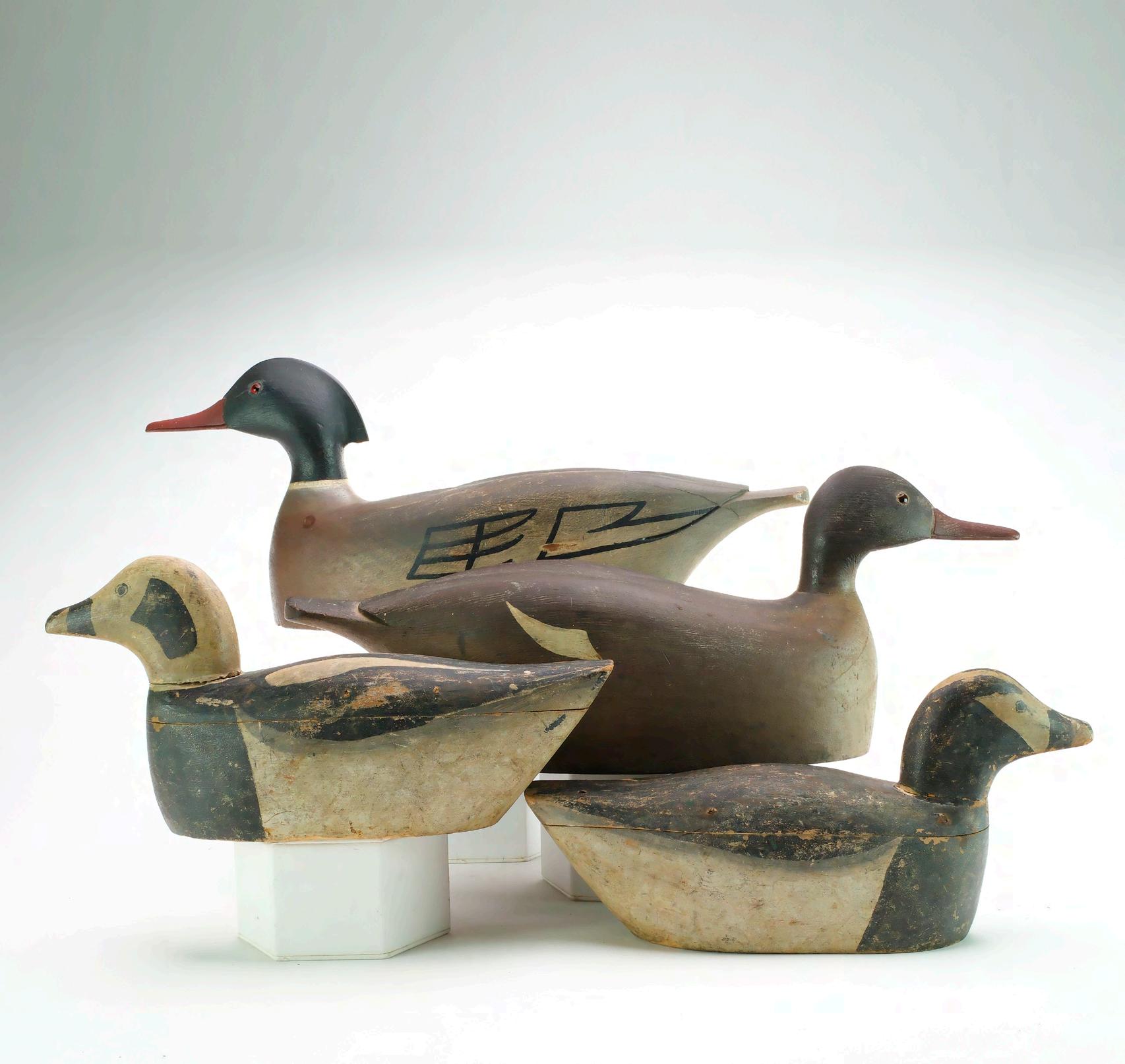
“As near as I know, the quandy is the only bird – or leastwise the only duck – where the feathering actually differs from bird to bird. We old fellas have shot a lot of ‘em in our time and that’s the one thing we do agree on”
Kingston was the epicenter for some of the finest canvas over frame decoys produced on the South Shore. Clarence’s neighbor, Clinton Kieth (related by marriage to Clarence), and the elder Lothrop Holmes also mastered this type of decoy construction. Bailey’s and Kieth’s birds are very similar right down to their unique method of anchor line attachments. Solid decoys by Bailey are few and these large tollers must be considered quite rare.

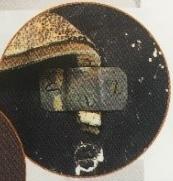
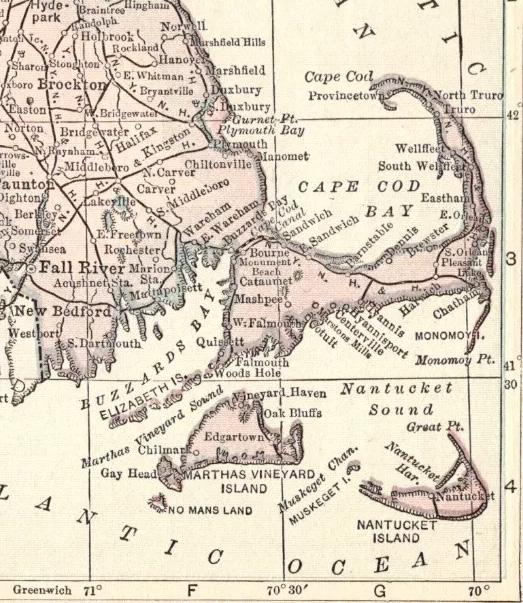

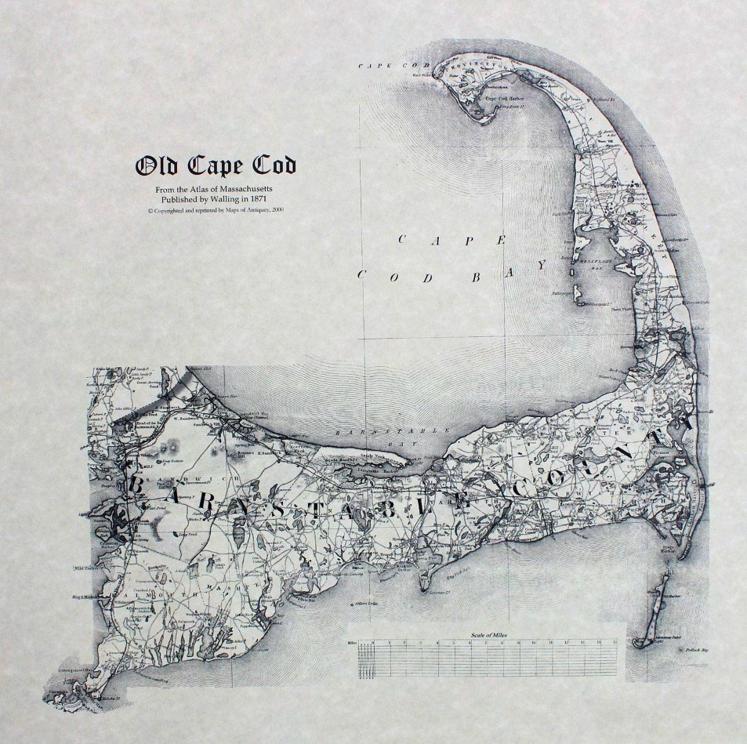
Perhaps nothing is as emblematic of Massachusetts as Cape Cod. It received its iconic name after it was visited in 1602 by explorer Bartholomew Gosnold who saw “the great stoare of codfysshes” offshore. Likewise, he is also said to have named Martha’s Vineyard after his daughter due to the large number of grapevines he saw ashore. With a width of between 1 and 20 miles, the sandy neck of land that comprises “the Cape”, extends 65 miles into the Atlantic. It was here on Nov 11, 1620, after a grueling 66 day trip across the ocean, that the Pilgrims first set foot on North American soil when they landed at today’s Provincetown Harbor. Due to a lack of natural resources in the immediate area, they crossed Cape
Cod Bay and made their permanent home at today’s Plymouth in December of that same year. With time, some hardy souls found their way back to the peninsula and settled, first in Sandwich in 1639, and populating the outer cape by 1646. Within a relatively short period, the newcomers stripped the land of its forest for building material, fuel and to make way for European style agriculture. Farming the sandy soils proved to be challenging and many residents sought their fortunes from the sea.




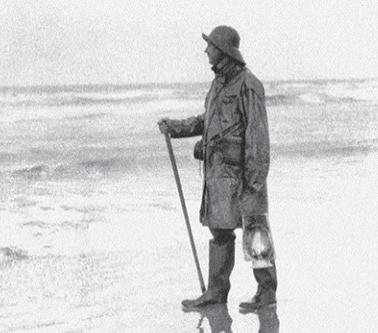
On the outer Cape, like other exposed coastal areas, shipwrecks were commonplace due to fierce ocean storms and shifting undersea shoals. The government responded by building numerous Life Saving Stations at given intervals along the beach and many men found employment in the Life Saving Service. In addition, many eagerly entered the “wrecking” trade where substantial profit could be realized from salvaging the stranded ships and rescuing their cargos. With their intimate familiarity with the sea and its birdlife, it was these early farmers, fishermen, guides, life savers, and wreckers, among others, who created many of the Cape’s finest decoys.
For many years the remoteness of the Cape limited travel much beyond the local villages, and the area retained its rural character far longer than towns on the mainland. This remoteness also attracted sportsmen from off cape to enjoy the unspoiled hunting opportunities that were rapidly being degraded near Boston and the other developing towns in the State. By the 19th century, Cape residents recognized the increasing demand for short term visitors and they began to actively encourage tourism. By 1848 the first train from Boston reached Sandwich and, by 1878, it’s rails had been slowly extended all the way to Provincetown. This vast improvement in transportation, coupled with an increase in hotel and private accommodations, resulted in larger and larger numbers of people being drawn to the area to enjoy its cool, clean air, beautiful beaches, and its vast hunting and fishing opportunities. Clubs and camps were established and the demand for guides and decoys increased.
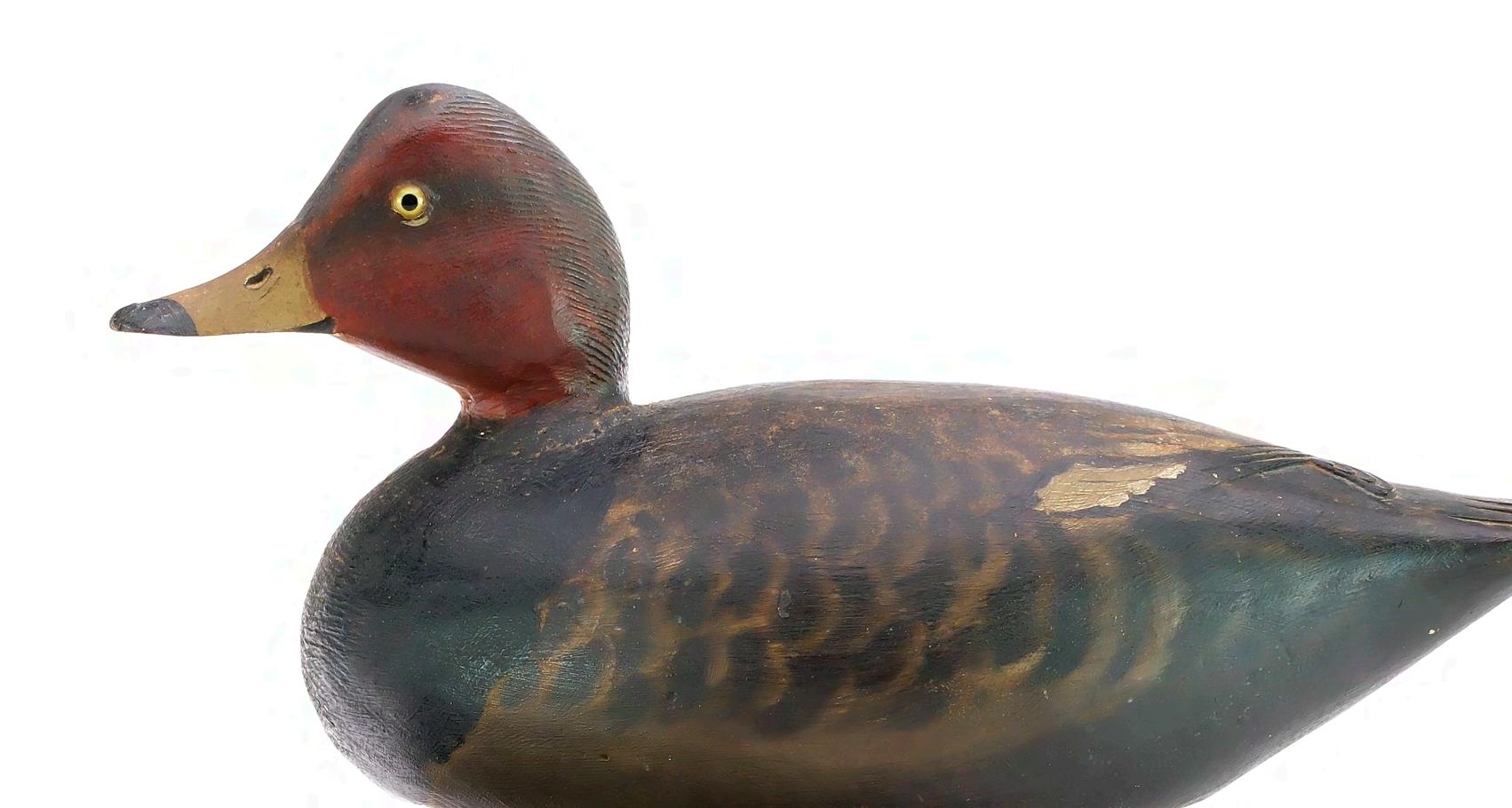
Jutting far out into the Atlantic as it does, the entire Cape and its neighboring islands intersect the migratory paths of a variety of waterfowl. Both land masses were fringed with open beaches which, in turn, attracted a variety of shorebird species. On the Cape, these beaches were interspersed with numerous small salt marshes, and a few of notably larger size. Barnstable Great Marsh located approximately at the midpoint of the Cape, was a particularly favorable location. On the outer Cape, the marshlands around Chatham and Orleans quickly became popular with gunners and, on the south side, the area between Osterville and Woods Hole attracted great numbers of both the birds and the hunters. Inland, the Cape is evenly sprinkled with numerous ponds, both large and small and these, too, attracted and held both ducks and geese.
Certainly, the most well-known and widely appreciated carver from the Cape was A.E Crowell. He and his son, Cleon, produced a multitude of decoys for both local and distant hunters on a commercial basis. The Nickerson’s of Cotuit and Falmouth were also well-known commercial carvers as were a small number of others of lesser renown. As it is with the rest of the State, the majority of the Cape’s decoys were destined for small, private rigs and, while some are from known hands, many are, sadly, anonymous creations, some of which are of exceptional and unmatched quality.


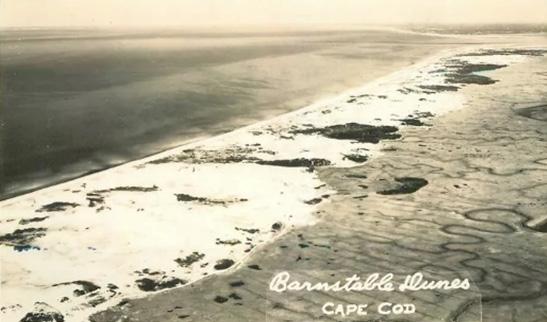

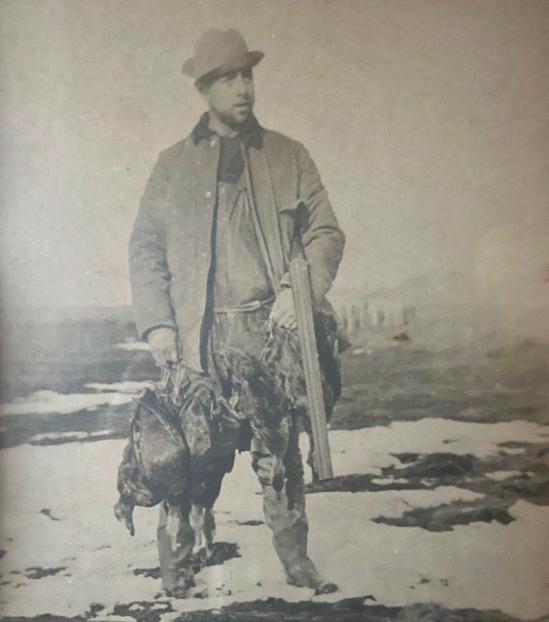
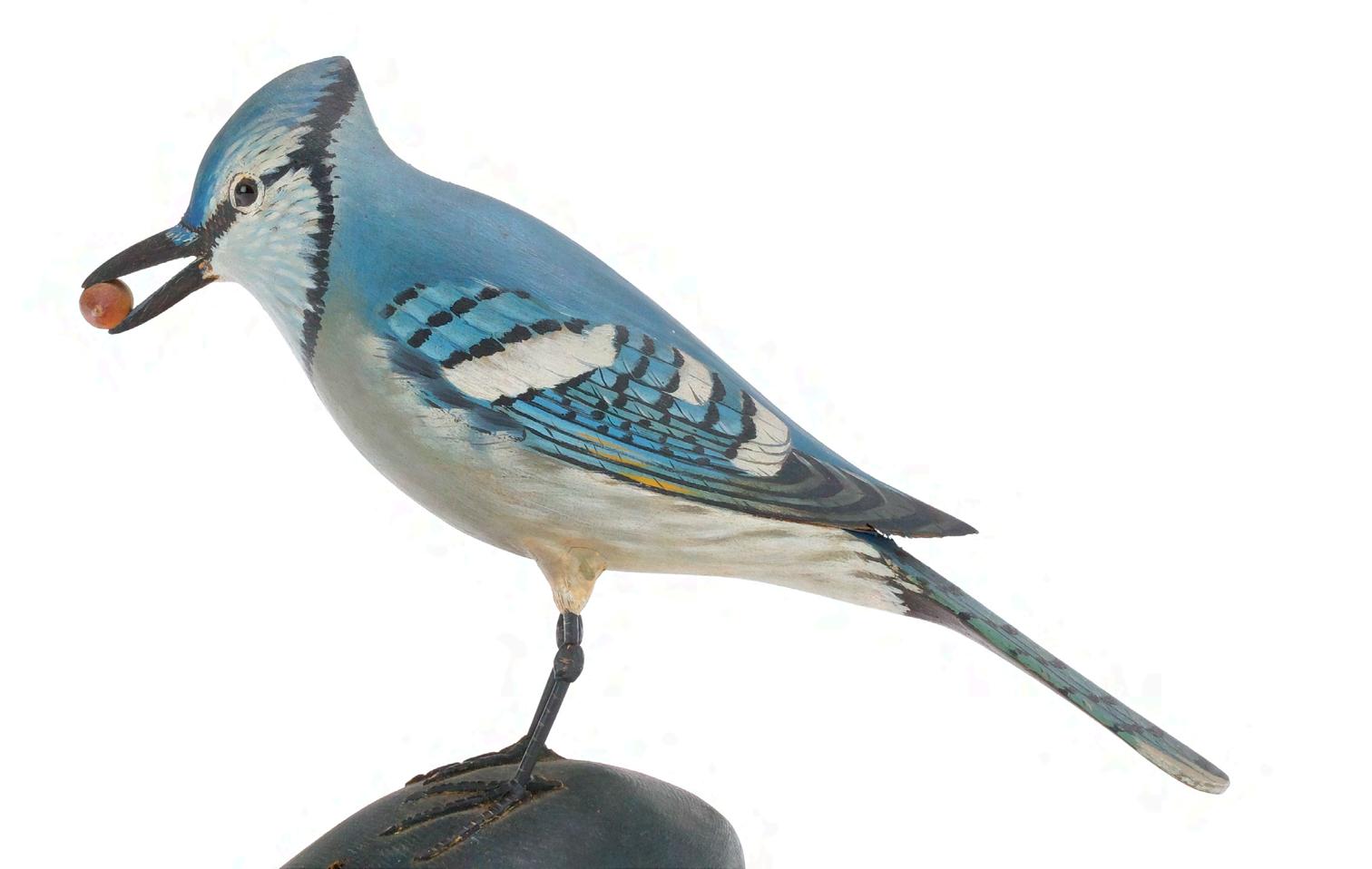
Certainly, the most celebrated carver from anywhere in the Bay State, more has probably been written about Elmer Crowell than any other decoy carver. His work was a particular favorite of the Harmon’s, and, over the years, they have handled some of his most iconic pieces both working and decorative, as well as perhaps thousands of his miniatures. Both Ted and Judy are among the top students of Crowell and, having studied both his life and his decoys for decades, are considered two of the foremost authorities on the man. Crowell carvings from their private collection have been the focus of numerous exhibits nationwide and have been featured on the pages of several scholarly references and popular publications as well as being chosen multiple times as the subject of the Massachusetts Migratory Waterfowl Stamp. Many of the Harmon’s personal decoys are singular examples of their kind and represent Crowell at the pinnacle of his creative genius.

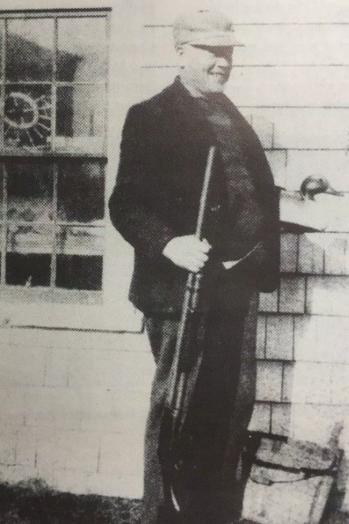
“But although the crude, old time decoy still is used, it is no longer necessary to use him. The modern wooden decoy, if he is intended to look like a goose, does look like one. If he is intended to look like a duck, like a duck he looks. And, I believe – yes I am sure – that, in our part of New England at least, the credit for this change from a caricature to a portrait is due to one man, Elmer Crowell”.
(1935 J.C. Lincoln “Cape Cod Yesteryears”)


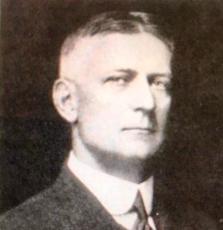
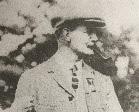


Elmer started to carve his first decoys as early as 1876 when he proclaimed “At fourteen my father bought a large tract of land on the south shore of Pleasant Lake in East Harwich. I had only six live decoys that first seas on. I made nine block decoys and put them off about thirty yards in the lake” . This was to be the start of a long and fruitful career that would, ultimately, earn him the title of “Father of American Bird Carving”.
Until the 1890’s Elmer, like his father, listed himself as a “M ariner”, a common label on the outer Cape at the time. From the 1900 census through at least the 1920 federal record he states that he was a “cranberry farmer”. What does not seem to appear in any genealogical record is that he was also a well-known market hunter and an exceptional trainer and handler of live decoys. These two skills brought him into contact with a number of wealthy sportsmen who sought him out to manage their private “Gunning Stands”. These operations required a full-time manager during the lengthy hunting season and, fortunately for Elmer, this schedule fit rather well with his cranberry farm ing.
Wooden decoys were certainly well-known during Elmer’s younger years and, in fact, one early author states that at an early age “He had made hundreds of decoys and he had orders to make more” . At some point around 1905, however, he pondered, “Why not make some good ones and charge accordingly” His creativity unleashed, he made birds with heads turned in a variety of poses, used better eyes and accurately imitated their natural plumage and coloring. When finished, he shipped the order to a wealthy customer explai ning why the amount of his bill was considerably greater than his former bills had been. “The result was that almost immediately, he received orders for more decoys of that kind from that customer and more and still more from that customer’s friends” . Starting around 1898, these early affluent customers would inclu de such well known names as John C Phillips at his Wenham Lake and Oldham Pond stands, “The Three Bears”, Charles Ashley Hardy, H Windeler and L Under wood at their stand on Pleasant Lake and Horatio duMont at his Cliff Pond stand. As his fame and influence spread, the number of stand locations and names ex panded to include a long list of influential men from New Hampshire to the Massachusetts - Rhode Island border, including names such as Cunningham, Nickerson, Long, Williams, Willard, French and scores of others.

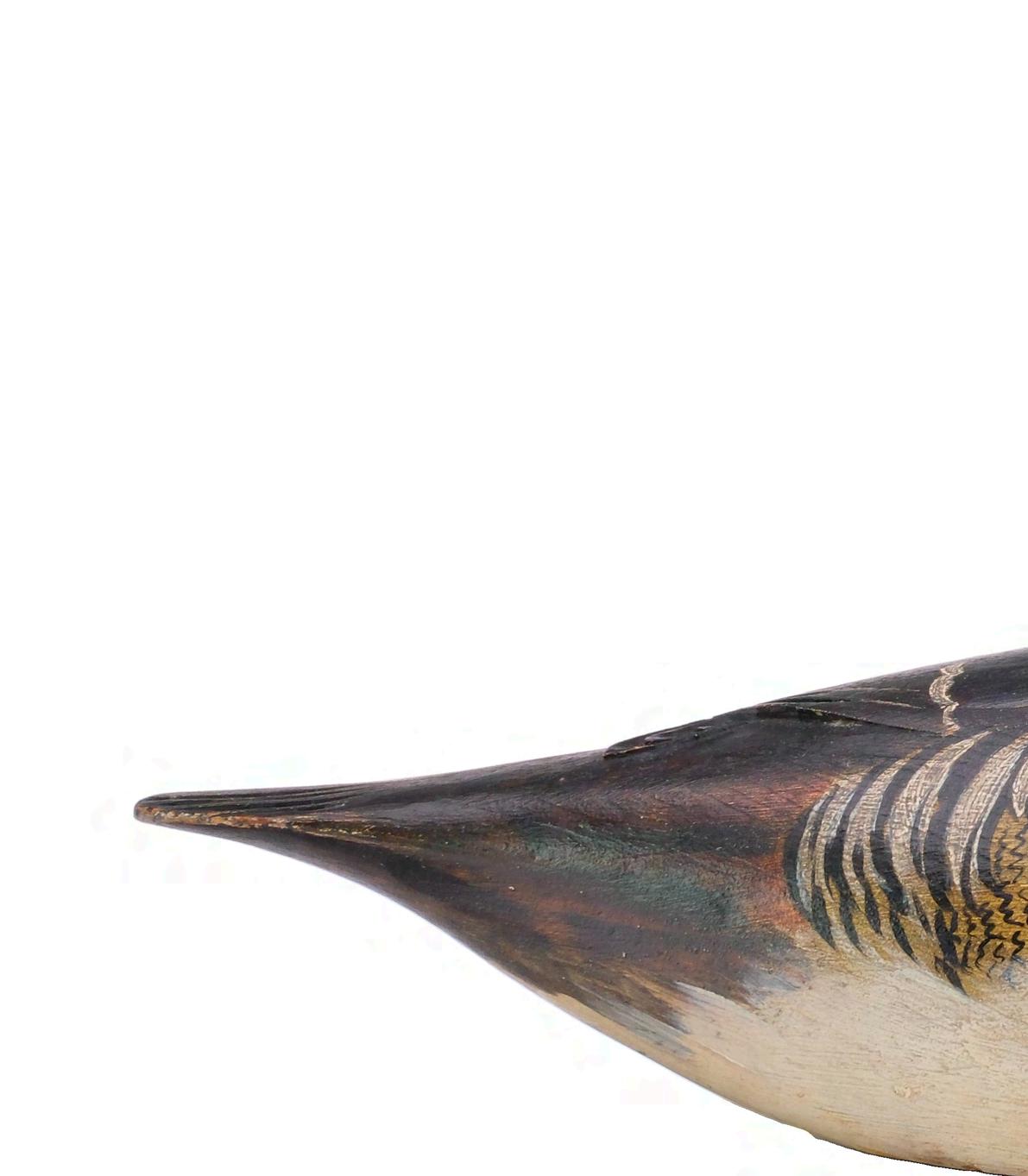

These patrons demanded (and could afford) the finest of hunting accoutrements, including decoys, and it was for these individuals that Elmer produced some of his very finest carvings. These exquisite early works, however, were labor intensive. By 1920 demand for his decoys had become explosive. Crowell was now listing his occupation as “manufacturer of decoys”. The increased workload forced him to eliminate much of what made these early carvings so special, and he was compelled to simplify his designs. His groundbreaking early works are best exemplified by his so called “chip carved birds”. These were only made for a very short period of time around 1905 - 08 and were destined for only a select group of his very best customers. Some, undoubtedly, were treasured items, left to adorn a favored mantel place. Most, however, were actually gunned over and it is extraordinarily rare to find examples in pristine, original cond ition.
At the time of Elmer’s death, his fame had spread nationwide with his obituary being printed in distant locales such as Minneapolis MN, Washington DC, Bangor Maine, and others. A deserving tribute.
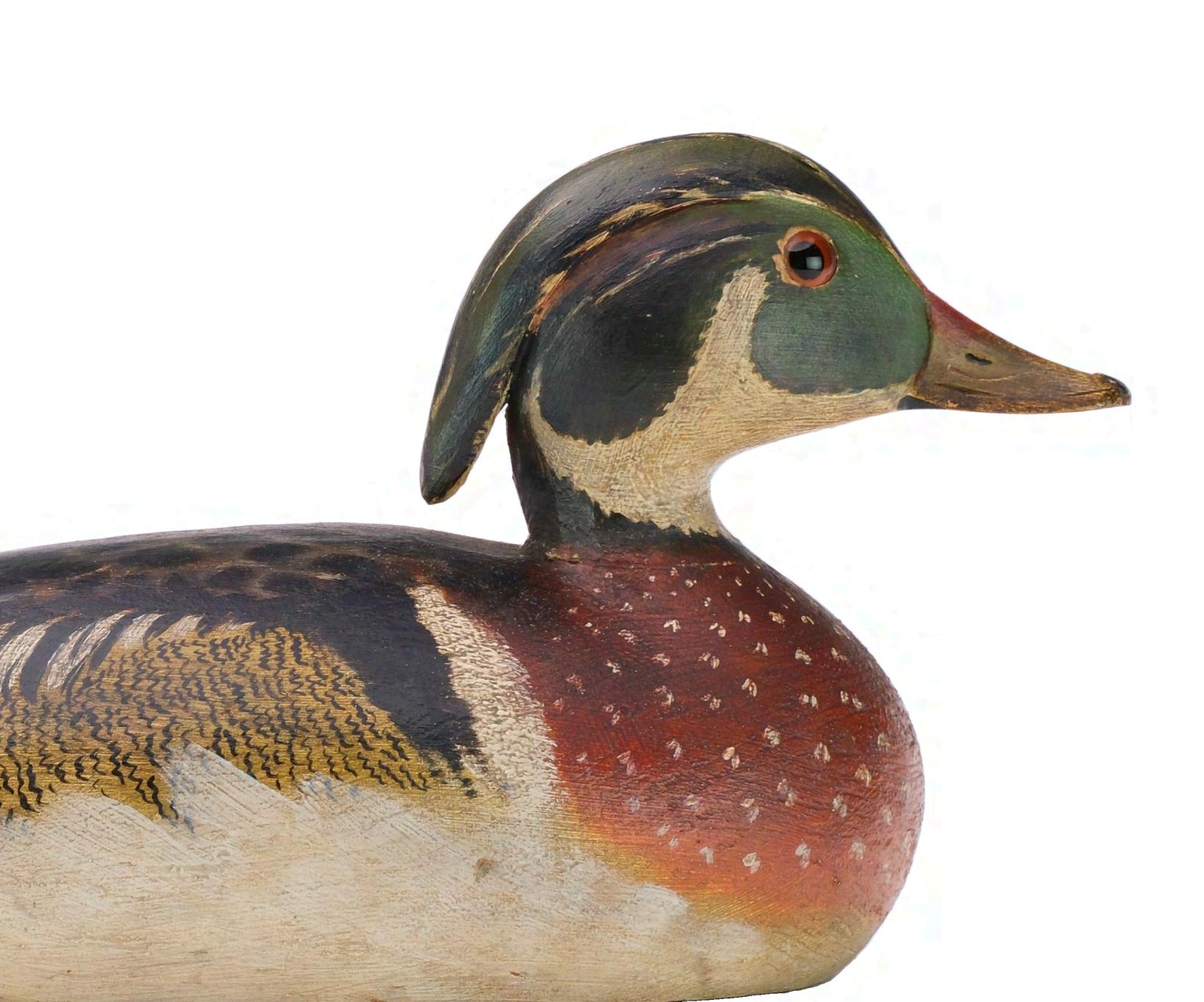

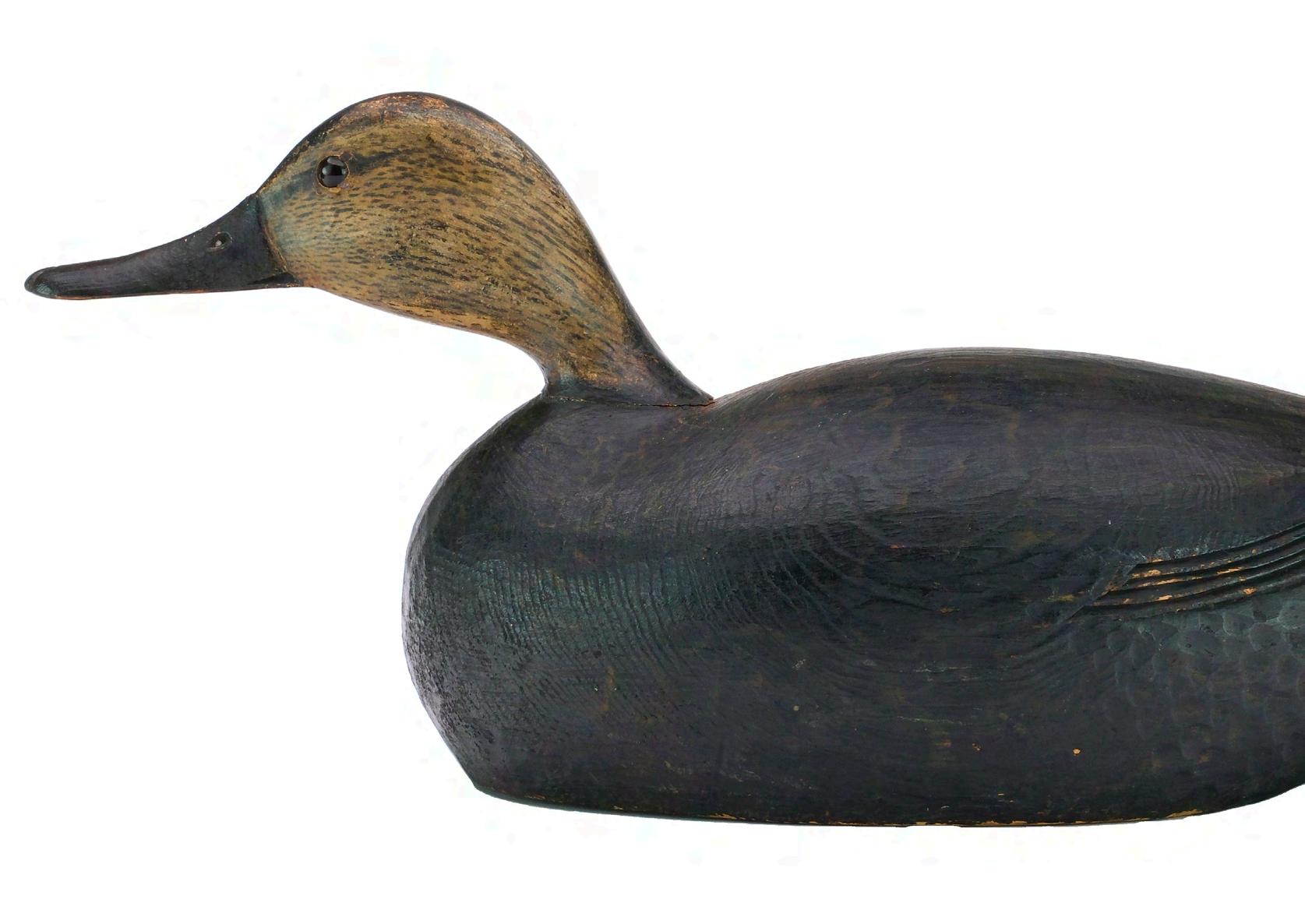




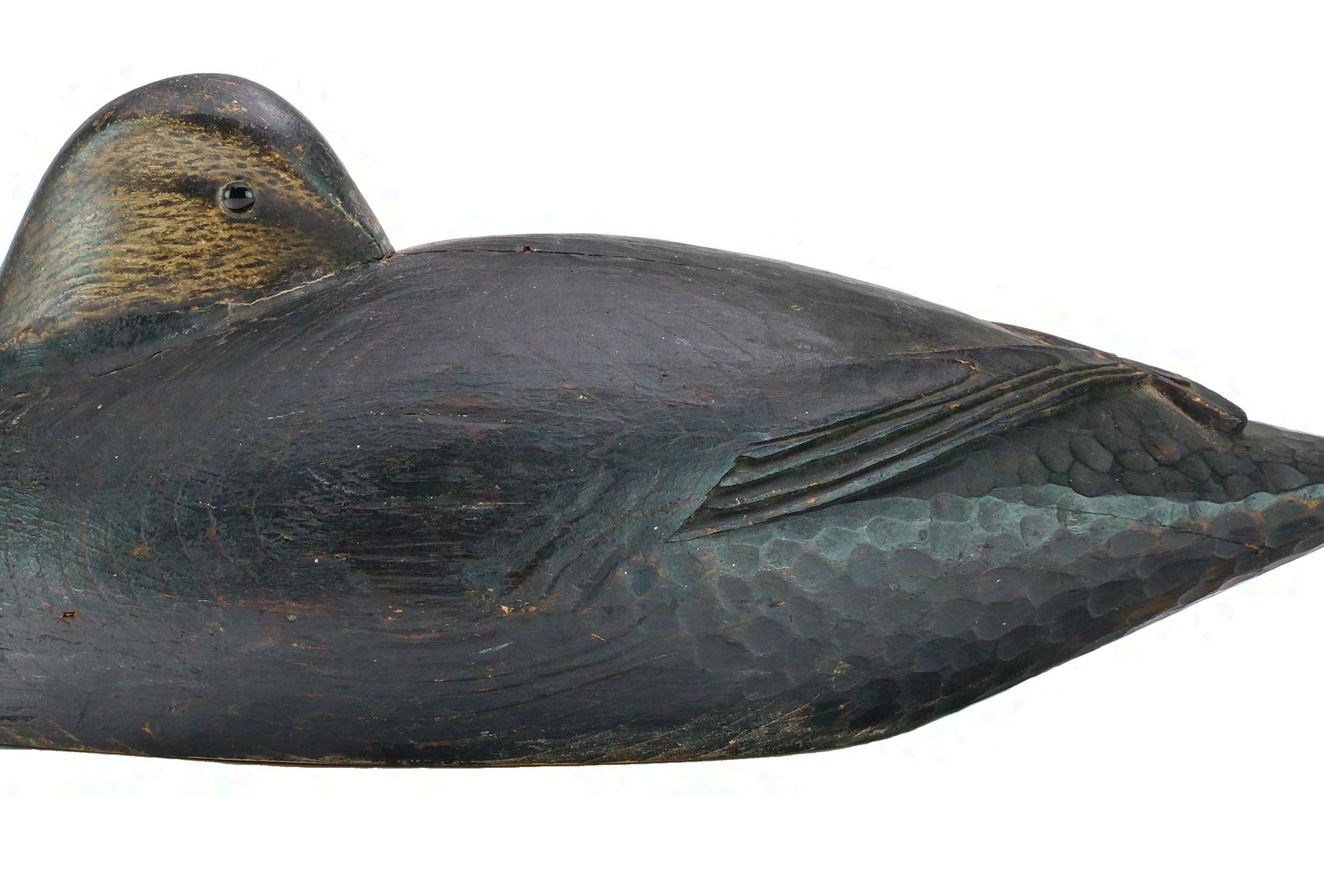
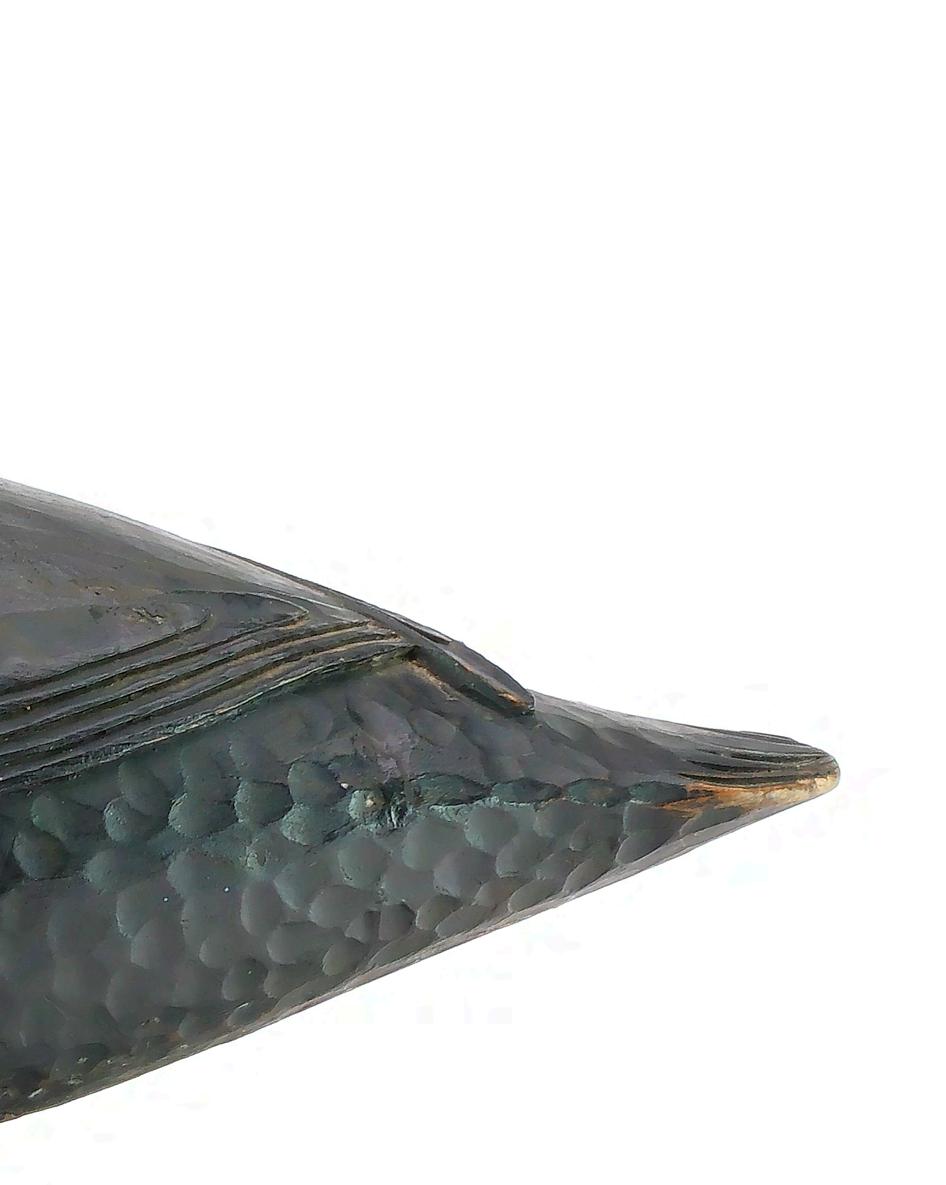
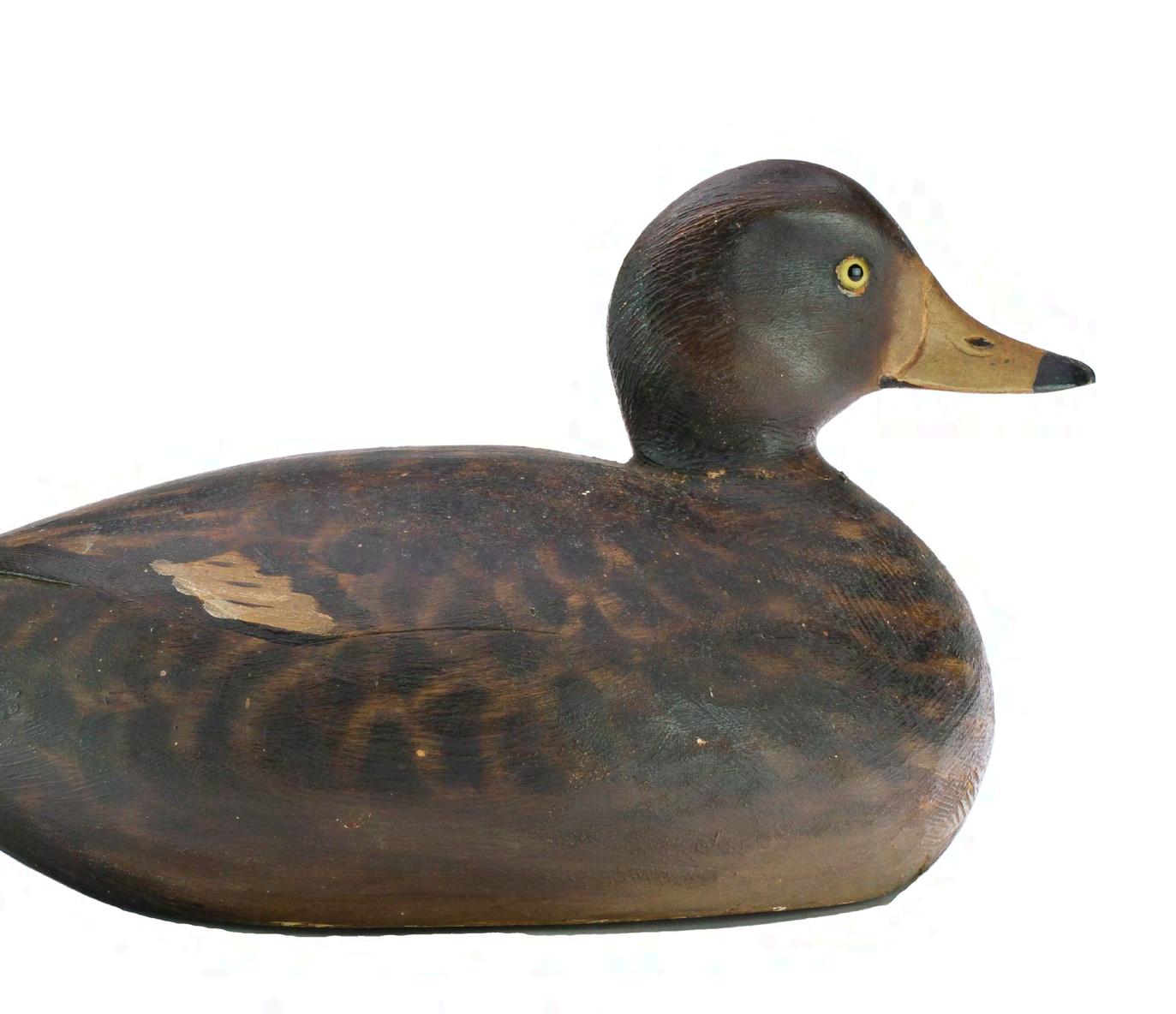




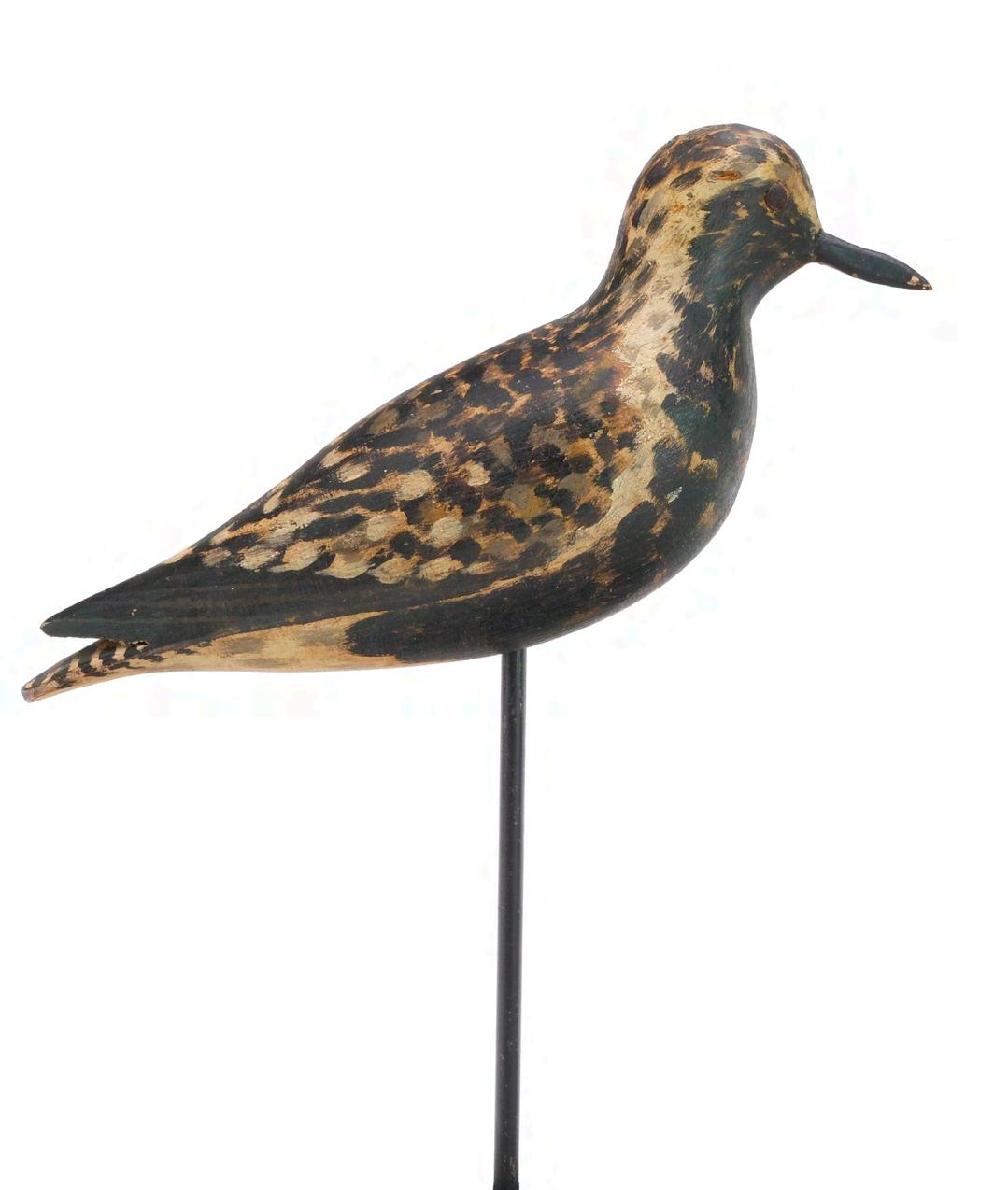
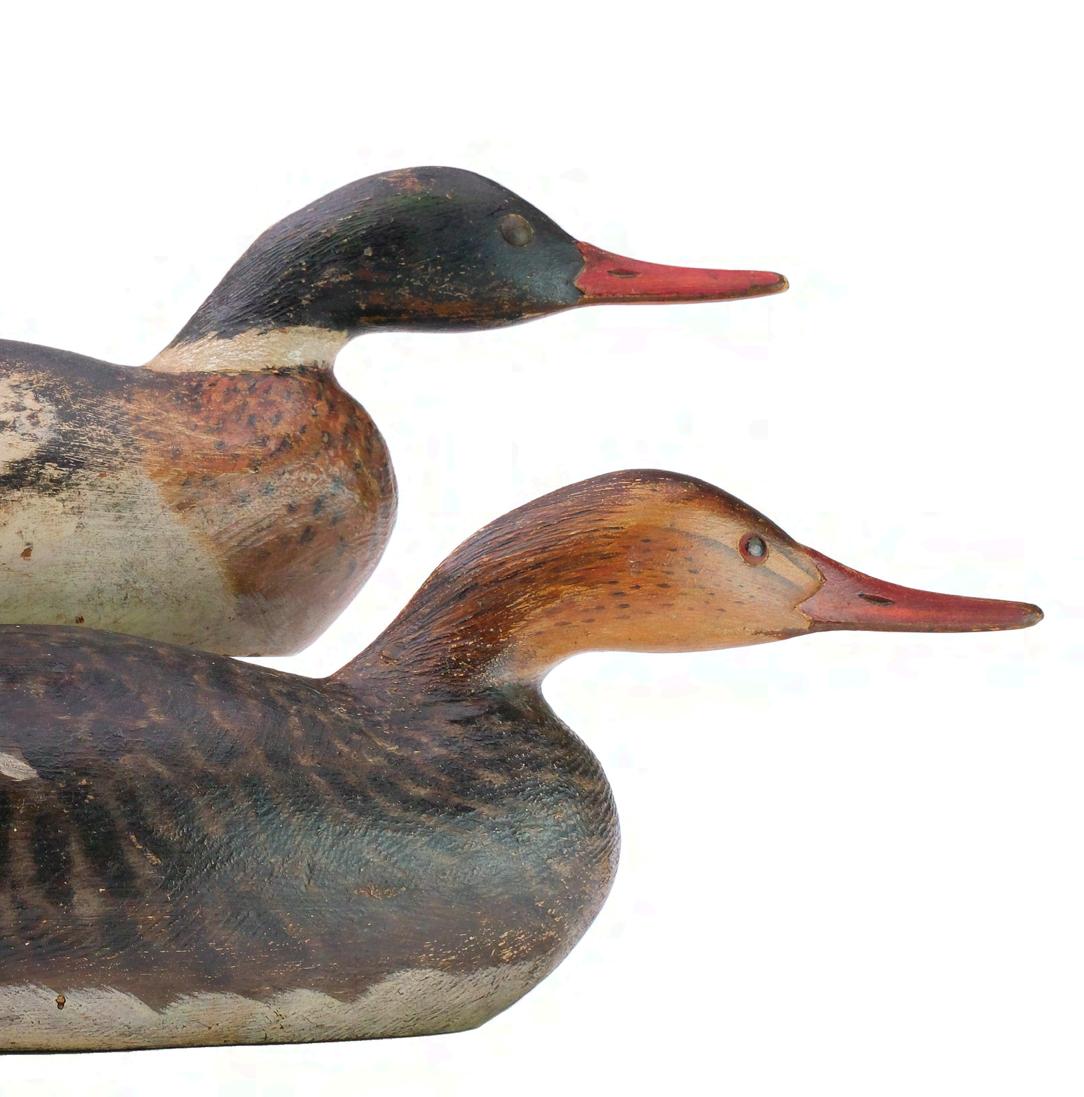
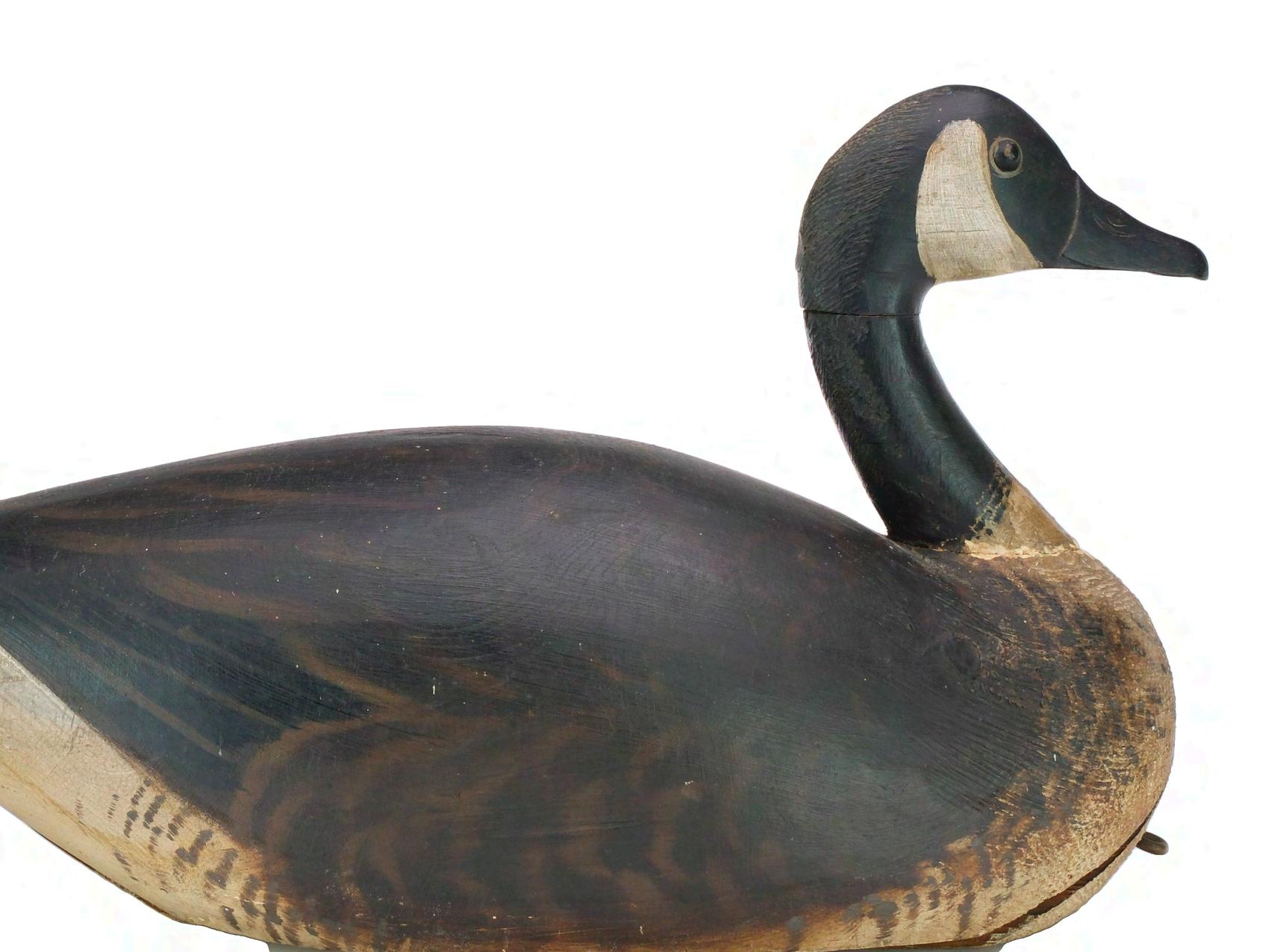
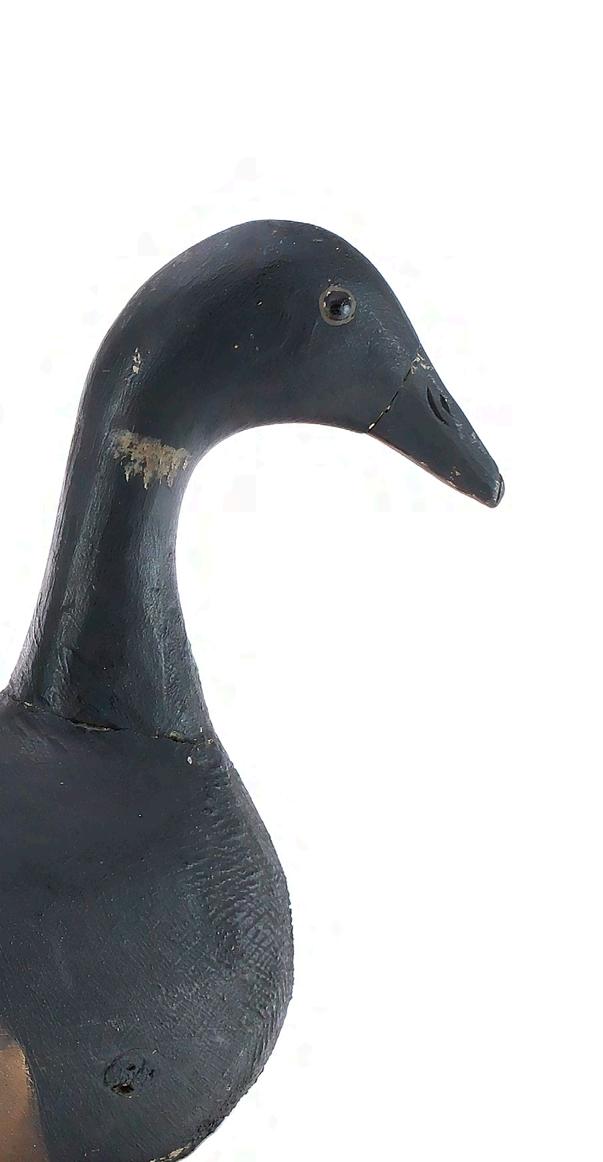


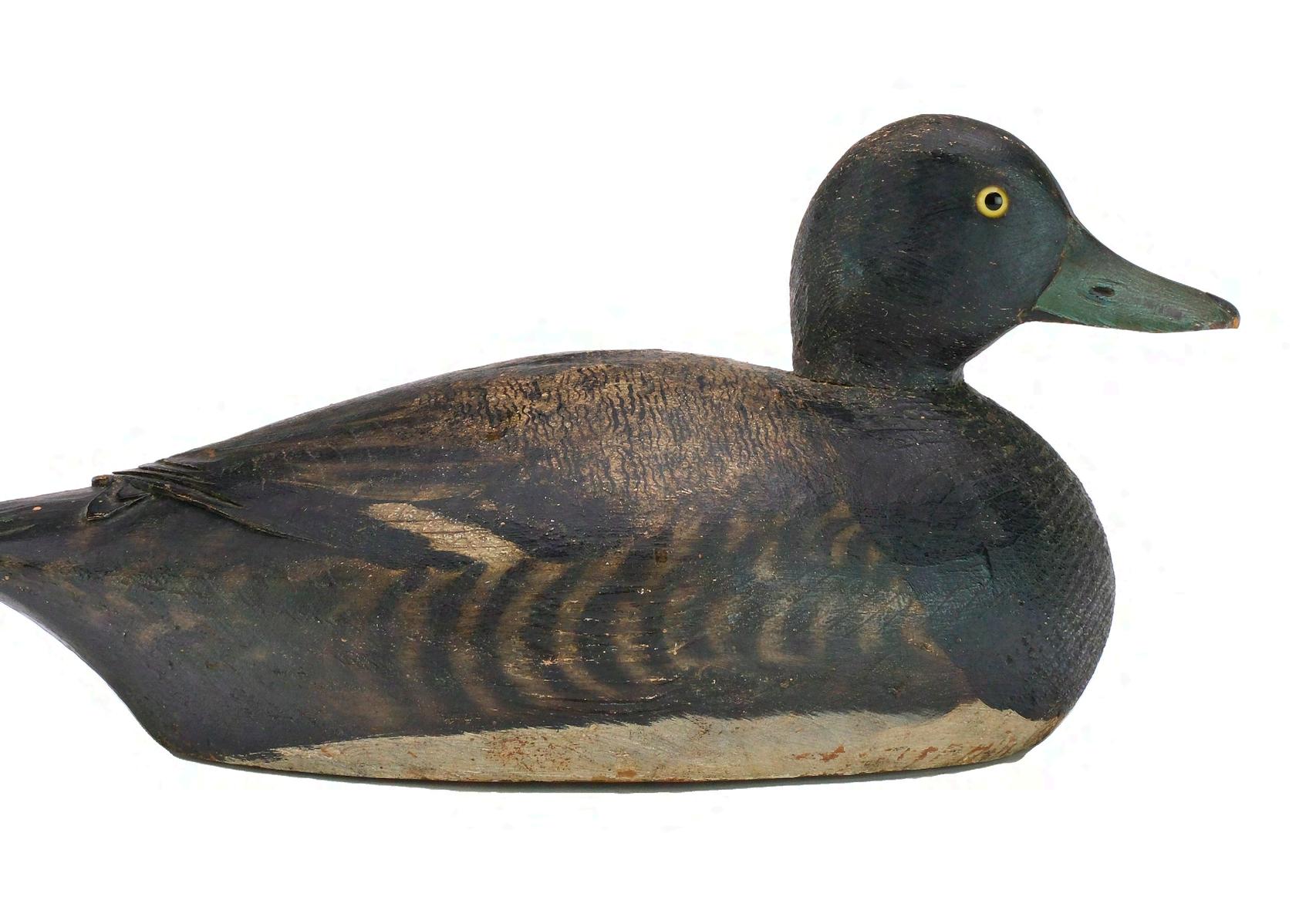
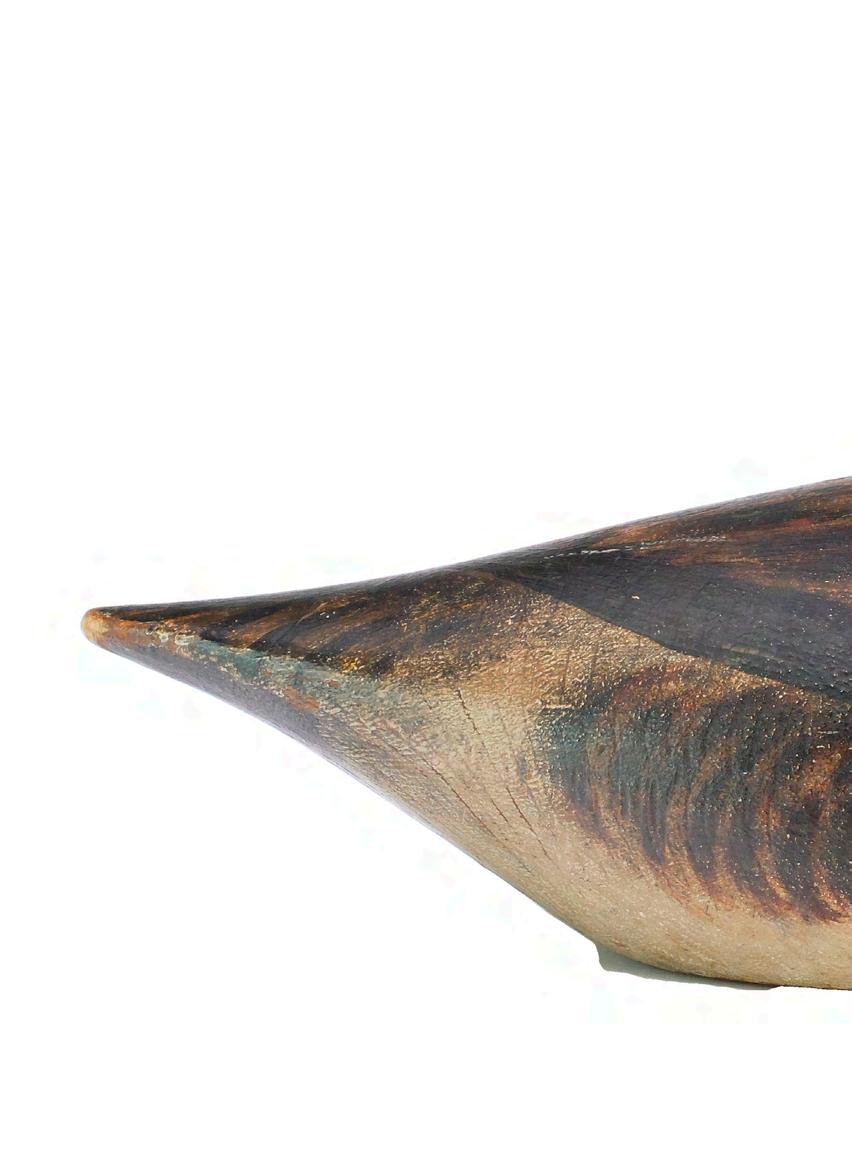
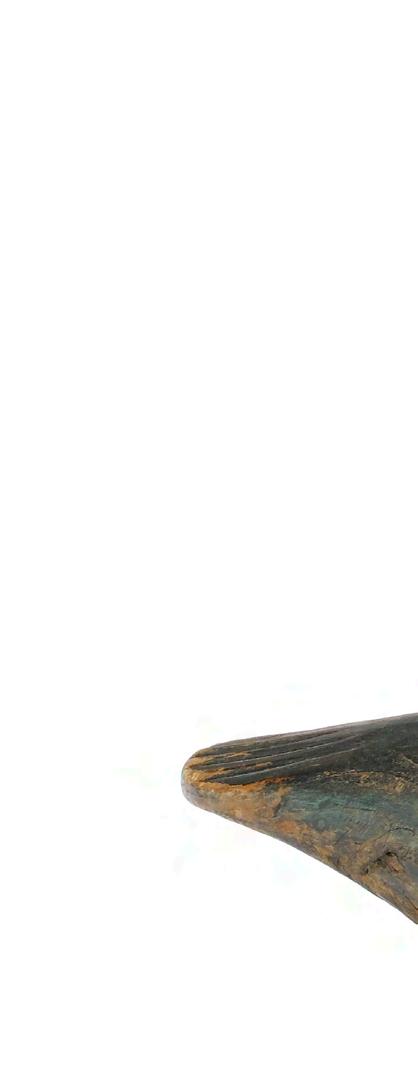
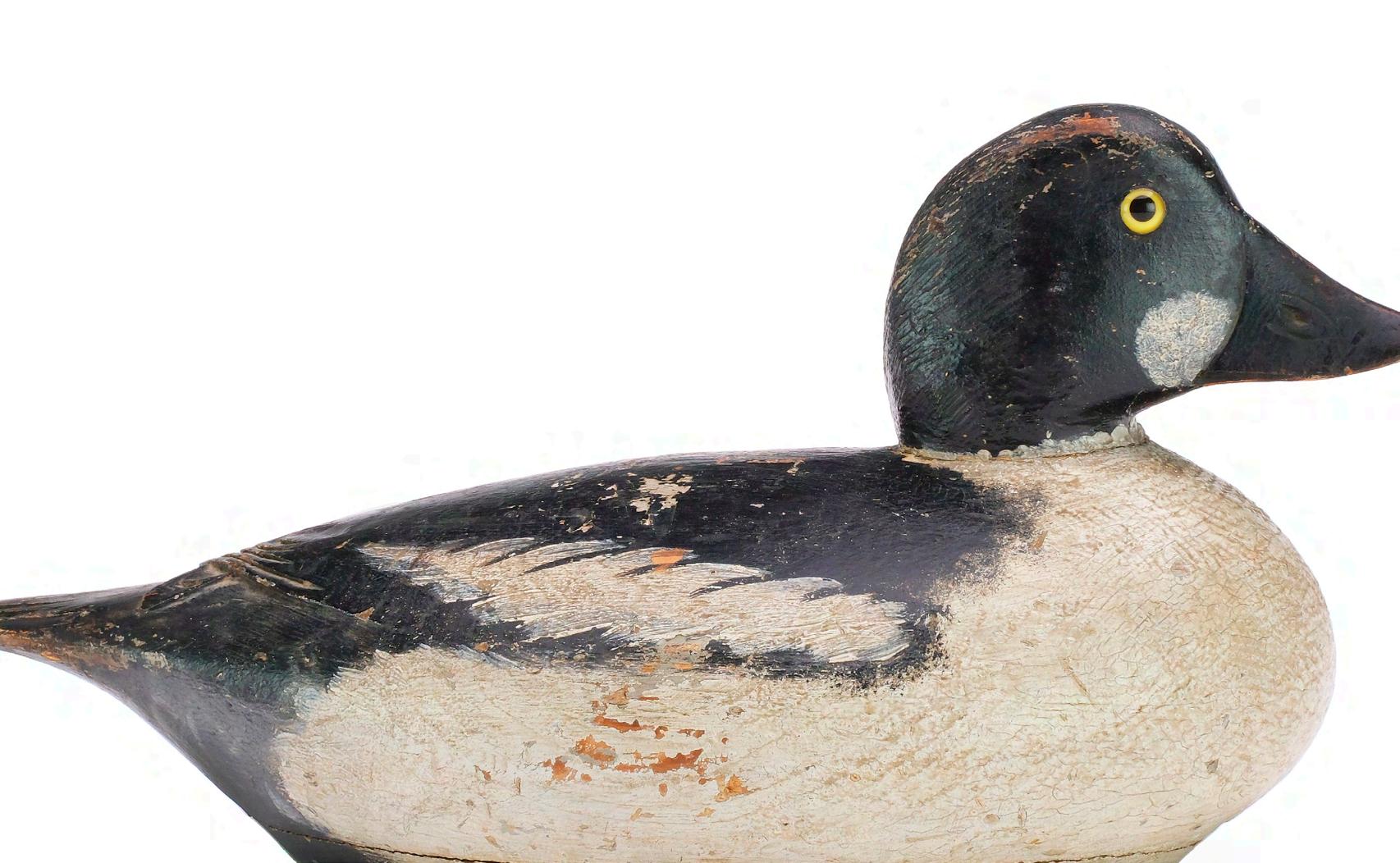




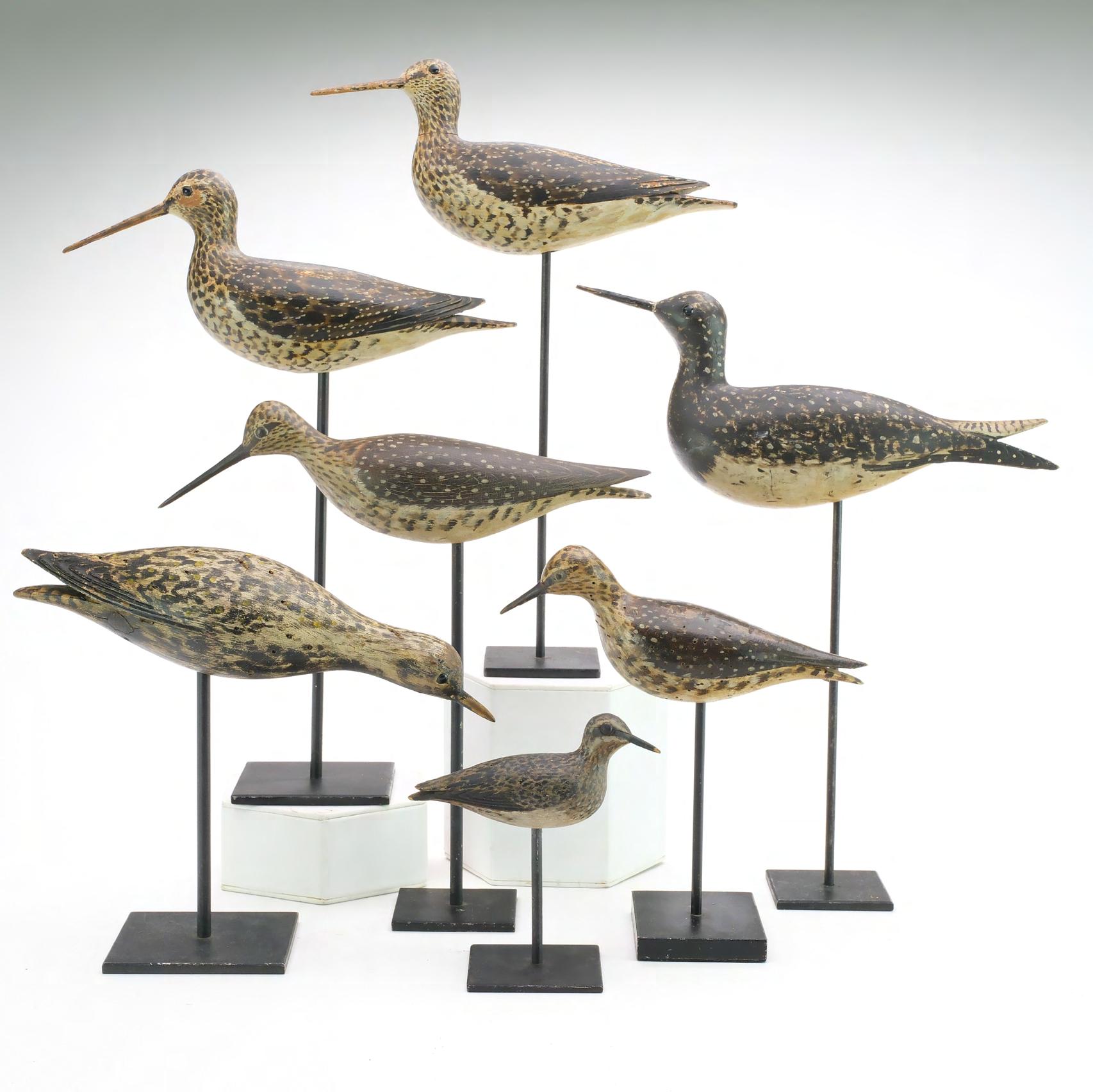
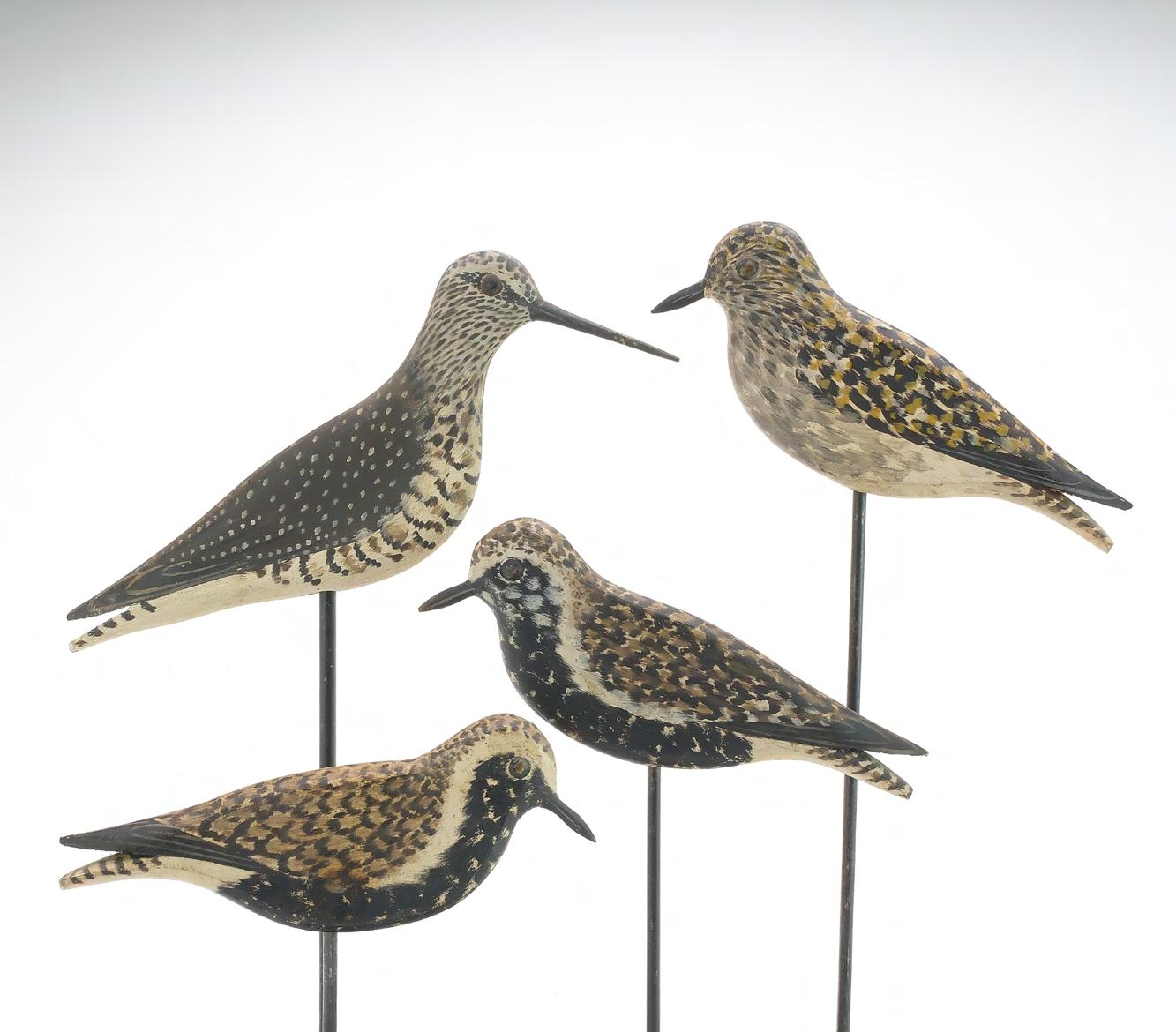
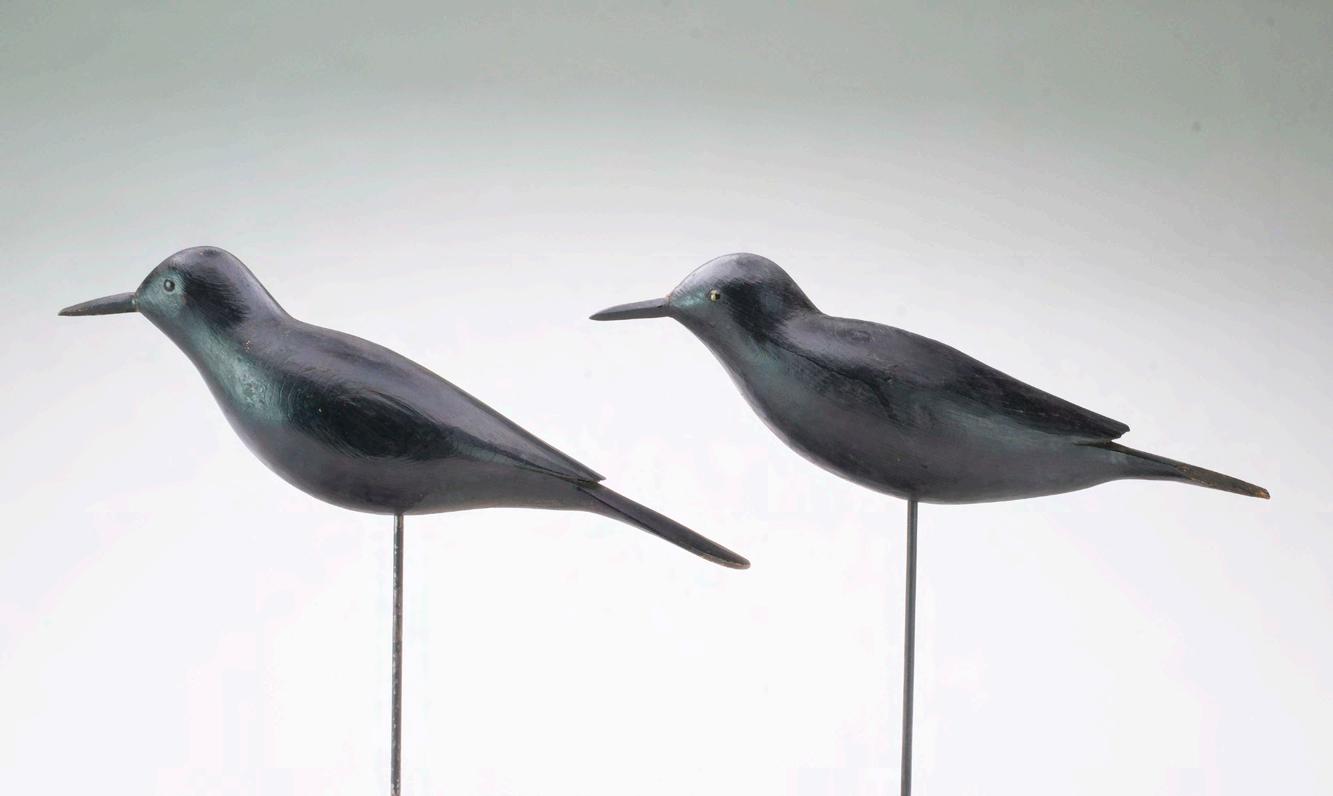
William C. Chipman (1822 – 1900) and Isaac K. Ch ipman (1826 – 1901)

Located at the base of Cape Cod, Sandwich was a quiet, remote, working community in the early 1800’s, with a simple economy based largely on farming and fishing. This was all to change dramatically when, in 1827, wealthy, Boston-born Deming Jarvis visited the Village on one of his numerous hunting and fishing excursions to the area. He saw in the surroundings what others did not, a vast network of forests. He was interested in establishing a glass factory, an industry that required large amounts of wood to produce the immense heat needed to make glass. Sandwich was close to Boston by water and there was abundant marsh hay with which he could pack his glass. The area also offered another major advantage. Soon, a canal would be built across the base of the Cape, which would allow him to economically ship his goods to distant markets. His vision resulted in the construction of the Sandwich Glass Works, a firm that provided unprecedented employment opportunities, wealth, and prosperity to the Town far beyond what it had ever imagined.
Two men who came to enjoy this growth and success were brothers William and Isaac Chipman, descendants of Elder John


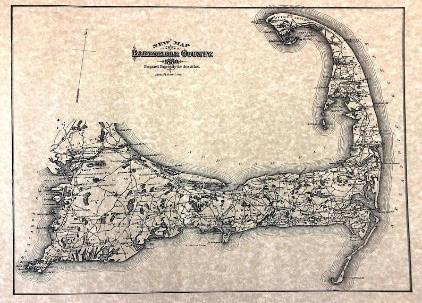
Initially, both ran wood-working mills in the Spring Hill section of Town but, by the time the 1858 Sandwich business directory was published, they were listed as operating a “Sash and Blind Mfg.” located near the Town Hall in Sandwich Village. The rapid growth of the Town, coupled with their skills and business acumen, allowed both brothers to marry, raise families and become successful. Isaac maintained a home on Main St in the Village, while it is believed that William resided on what is now Chipman Lane. By 1870, Isaac had real estate valued at $4000, a sum significantly above that of his immediate neighbors. In the 1880 census, William supported his wife and four children, as well as his bachelor brother Samuel, his aged mother and a domestic servant. William also had the leisure time to develop a series of pools near his home in The Spring Hill section of Town, where he grew rare pink pond lilies for his own enjoyment and sale. (see note 1)
The brothers enjoyed shorebird shooting and, fortunately for them, the plentiful Sandwich shoreline and its vast marshes provided ideal habitat for a multitude of species. The tiny “peeps” must have been particularly plentiful in the area, for a number of decoys for them have been documented as originating from there.
Being accomplished woodworkers, it is not difficult to imagine that, with their skills and ready access to the tools at either their woodworking mills or at the Sash and Blind plant, they had little difficulty in fashioning their delicate, exquisitely hollow decoys. Isaac’s son, Edmund, was a decorator at the glass factory and he is likely the source of the cobalt or cranberry glass beads commonly used as eyes on the Chipman decoys. The lightness of their carvings and the flex allowed by their traditional two wire legs, undoubtedly allowed the decoys to gently sway and bob in a slight breeze. This subtle movement coupled with their delicately painted plumage must have been a siren to their live passing brethren. Of all the many fine examples of shorebird decoys to emerge from the Cape, the work of the Chipman brothers must be ranked among the very best.
Note 1: It has previously been written that the brothers were pattern makers at the glass works but this cannot be documented.

There seems to be some minor confusion regarding Preston’s date and place of birth. A well-researched chapter in “Massachusetts Masterpieces” by Gigi Hopkins states that he was born to Stillman and Zilpha Wright in Pocasset in 1863. That birth date is confirmed by his headstone and Preston himself, lists his place of birth as Pocasset on his marriage record. On the 1865 State Census, his parents stated his birth as 1862. His official Massachusetts birth record, however, records his entrance into the world as occurring on November 17th, 1861, in the Town of Sandwich.
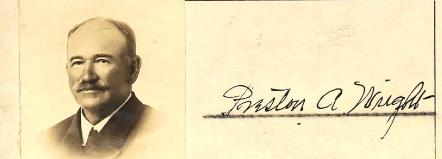
When he was twelve, Preston’s father passed away and, by 1880, the young man was living as a boarder at the home of his uncle, Noah, in Sandwich, and employed as a molder. Ms Hopkins’ research indicates that Preston attended Harvard Medical School for three years but, due to ill health, had to reside briefly in Arizona. He then reappears in the Massachusetts’s records when, in 1906, he married Teresa Morris Daniels on the Cape. He was 42 and she, 22. At the time of the nuptials, Preston was employed as a boatbuilder. By 1910 he was a “carpenter – boat builder” and the couple was living on West Bay Road in Osterville, an address they would keep for the rest of their lives.
Preston made a significant career change in 1917 when he began to Captain the large yacht “Betty R” for Commodore Edward Clark Crossett who summered in Osterville. In the 1920 census, Preston lists himself as “Yacht Master – Private party”, and Clark, himself, wrote in 1923 that he foresaw Wright continuing to captain his boat “indefinitely”. Reportedly, Wright may also have served as Captain for President Grover Cleveland who had a summer residence, “Grey Gables” in nearby Bourne, overlooking Buzzards Bay at the base of the Cape. The President was an avid hunter and he and Preston gunned together on more than one occasion and the family proudly retains a silver flask and set of glasses that were gifted to Wright by Cleveland “- - - in gratitude for their many shared hunting trips”.
Adele Earnest had supposedly heard of the captain’s decoys but was one of the first to actually see them. In “The Art of the Decoy” she recalls her visit with Preston’s wife after his death. Her remarks are worth repeating in part, here.

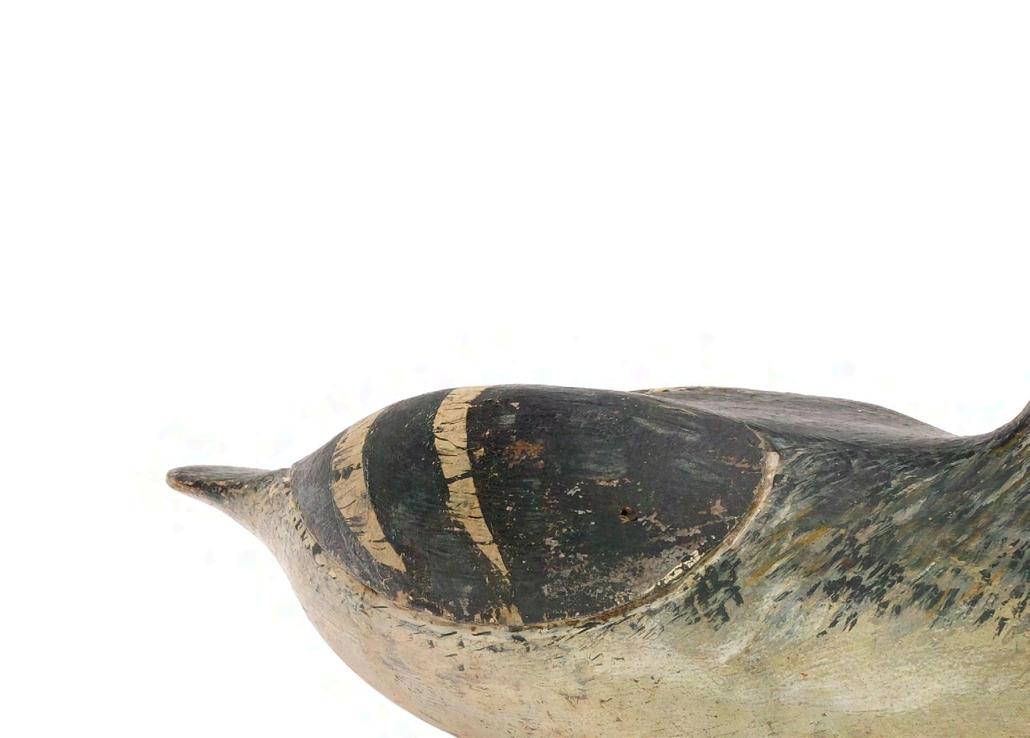

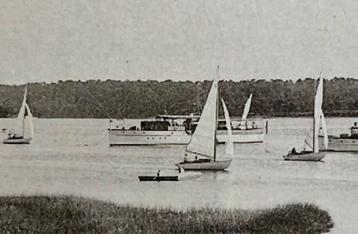
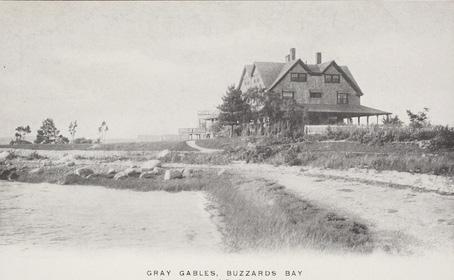

“ - - - her daughter was at once dispatched to the cellar to bring up ‘that old clothes basket’. “She (Teresa) talked about the captain, his pride in the birds, and how hard he had worked over them.- - - In the spring, he carefully selected the wood - - - - . Then in the fall, when his boat was beached, he began his ‘inside work’.” She describes how the body and head were meticulously fashioned and assembled “with all the neatness of a cabinet makers skill” . Each decoy was carefully painted and “The finished carving was wrapped in an old sailcloth and put away until spring”. “Before the mergansers saw action, they got a trial run in the rain barrel. If the birds kept an even keel and looked lifelike in the barrel’s waves the captain ‘lowed they were ready to go over’”
One interesting comment that Teresa made to Adele was that the wooden patterns for the birds were “saved from one season to the next – and from father to son” . Were the patterns passed down to Preston from his father, Stillman (d1875), and did one or more of Preston’s sons carry on the family tradition? Obviously, we will never know, but what assuredly remains are a small number of some of the very finest and most exceptional carvings ever to emerge from “The Cape”.
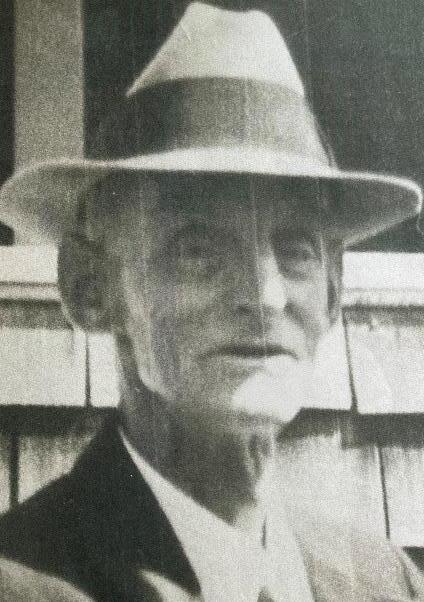
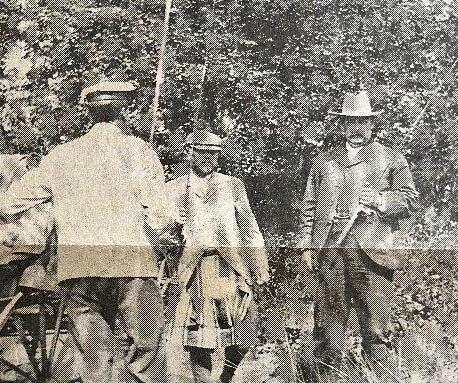
The Nickerson name is an old and prestigious one on Cape Cod. The family patriarchs, William and Anne Nickerson, first arrived in the Massachusetts Colony in 1637 from Norwich, England and, by 1657 they were among the first settlers of Yarmouth, and then Chatham, on the Cape’s outer arm. The family is best remembered today by the Nickerson State Park in Brewster, once the 1900-acre private hunting preserve of Samuel Mayo Nickerson (1830 – 1914).
Luther’s branch on the family tree can be traced to his parents, Luther B and Viola Nickerson. His father was born in Barnstable on the Cape but, by the time of Luther M’s birth, the family was living in Northampton (MA), roughly in the middle of the State. By the turn of the century, young Luther was working as a conductor on the Street Railroad in Northampton and was still employed in that capacity when, in 1905, he married recent Canadian immigrant, Eva Louise Ramsay, in nearby Springfield, MA.
Luther and Eva relocated to the Cape, and, by 1910, they were living in the village of Cotuit in Barnstable, and Luther was working as a laborer doing odd jobs. By the time he registered for the WWI draft, the family had moved to Lake St in Cotuit, and they would live there for the remainder of their lives. Armed only with an 8th grade education, Luther worked briefly as a bookkeeper for F.M. Nickerson. From the time of the 1920 through the 1930 Federal censuses, he worked as a house carpenter and as a caretaker for a private estate, apparently retiring by the time of the 1940 census when he would have been 65. Research by Ted Harmon indicates that he also worked at additional various jobs such as fishing and boat building.
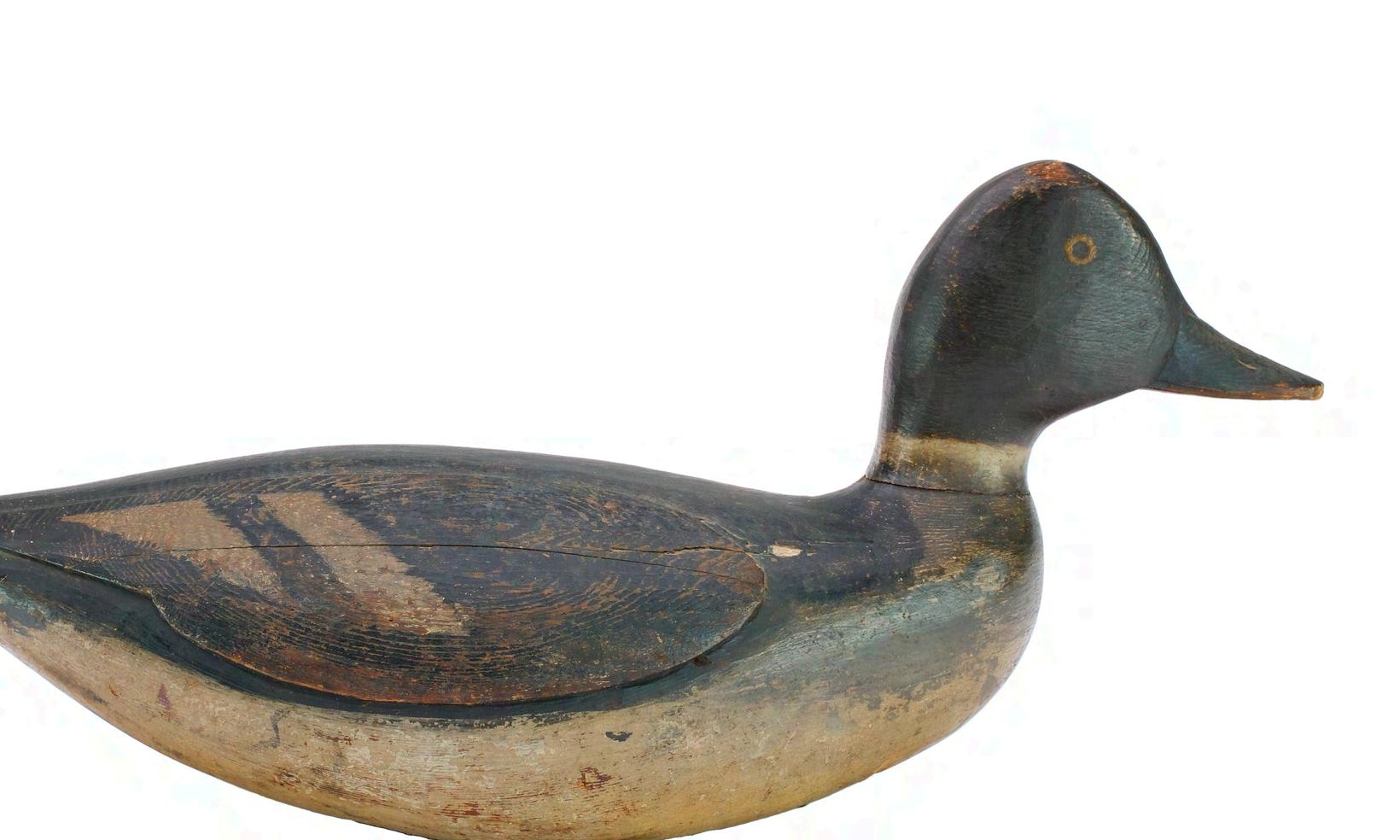

Luther’s home on Lake St was only about one quarter of a mile from Cotuit Bay, and a short distance from Popponesset Bay, which afforded him and his neighbors some fine shooting. According to his grandson, Steven Luther Nickerson (1947 – 2020), a carver himself, Luther’s first decoys were made about 1900, but this is probably in error. We can assume that he began to carve soon after his arrival in Cotuit c1910 and, again, according to his grandson, he continued to carve until about 1945, six years before his death. His lifelong production has a wide range of estimates, stretching from 500 to 1000 decoys. Certainly, if either of these numbers are correct, one would have to believe that he carved a fairly significant number for sale to others. The vast majority of his carvings were either mergansers or goldeneyes, with only very few black ducks to round out the mix. His decoys are characterized by clean, flowing lines, many with rounded bottoms and incised wing carving but, with a carving career spanning about 35 years, it would be reasonable to assume that his carving style may have undergone some changes over time.
Luther was one of the Cape’s more prolific carvers and his influence can be seen in the work of a number of his contemporaries in the Cotuit/Osterville area. His grandson once related to Ted Harmon that his grandfather, Luther, did carve occasionally with a Shirley Edson Nickerson (1881 – 1967) (a male) but there does not appear to be any direct relationship between the two men. In Steven’s obituary there is a line that he (Steven) “ - - - will be the last of Nickerson decoy makers ”. This comment would certainly imply that other family members may have also carved and, perhaps, used or modified family patterns, but if true, the identity of these individuals is unknown.
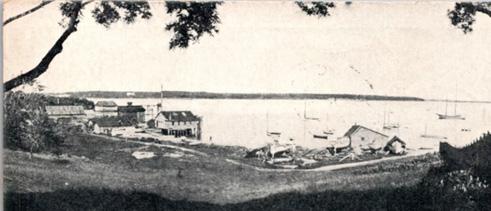

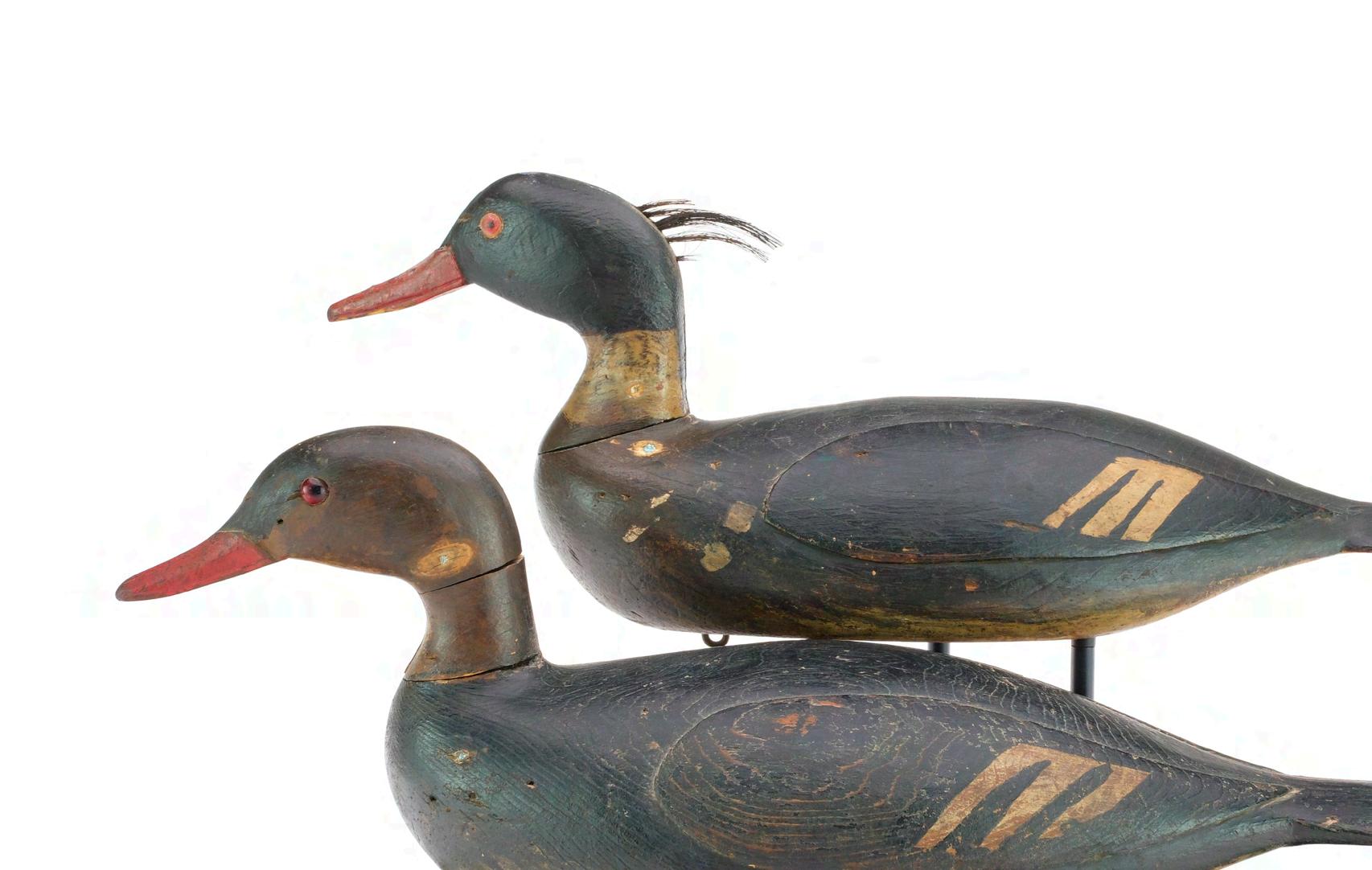
Like so many great decoy rigs, collectors are left to lament the lack of documentation surrounding the maker of these wonderful shorebirds. Their existence has been known for many years. Doctor George Starr had a superb example of a sicklebill curlew in his pioneering collection and that decoy is pictured in color in his 1974 reference. He wrote that he found the bird in a home in Duxbury (MA) but the carver was unknown stating; “- - - its history moved out with the original tenants of the house” . Ted Harmon noted in his 2011 auction catalog where that very decoy was sold, that the “Fox” attribution was so named because “- - - early examples were collected directly from the Fox family in Chatham (MA)” . Over the years examples have surfaced with both “FOX” and “A. G.


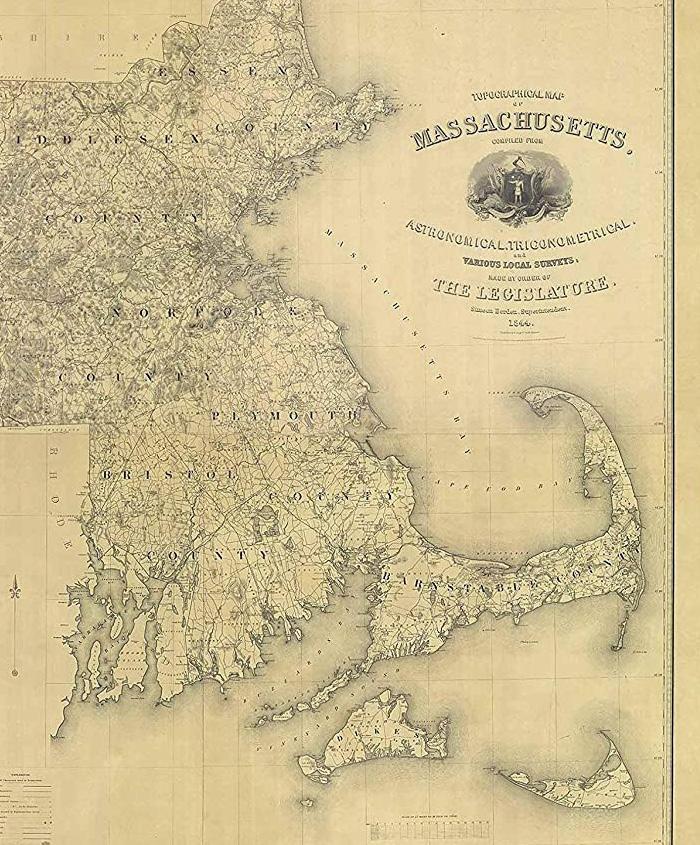
We do know that the members of the rig depict both curlew and golden plover. Both of these species would have been more common on the outer Cape. The plover’s migration route took them offshore and they would often be blown ashore or sought food and refuge on the outer Cape or on the Island of Nantucket. Dr John C Phillips in his “Wenham Lake Shooting Record and the Farm Bag” does not record ever shooting a curlew at either of his Wenham estates nor at his stands on the South Shore near the Plymouth/Duxbury area. We also know that the rig of shorebirds attributed to him did contain curlew decoys and that Phillips did hunt on the Cape, especially in Chatham. This would seem to point somewhat in the direction of the Chatham attribution for the point of origin or use of the rig but is certainly not a definitive indicator.
The fact that only a few examples are known would indicate that the rig was a small one and probably only intended for one’s personal use. Known rigmates are usually in exceptional condition suggesting very careful handling by a gentleman/sportsman who shot over them only occasionally and at his leisure. They were most likely used in the latter half of the 1800’s since curlew were considered rare in Massachusetts by 1900 at which time the State ornithologist considered them to be threatened with extinction.
The quality of the carvings cannot be faulted and rightfully places them among some of the very finest of all the shorebirds carved in Massachusetts. Dr Starr, in discussing his example, proudly proclaimed: “ This is the kind of decoy a collector dreams of ”. Rigmates have been included in exhibitions of “Massachusetts Masters” or “Massachusetts Masterpieces” by both the Ward Museum and the Massachusetts Audubon Museum of American Bird Art. An example is included in the collection of the American Folk Art Museum in New York and a handful are in select private collections throughout the country.
First settled in 1659, Nantucket, or “The Faraway Land” as translated from the local Wampanoag language, is 30 miles off the south coast of the Cape. It is of medium size, being about 14 miles long and 3 ½ miles wide. The Island and County of Nantucket also encompasses two smaller islands to the west, Musgegat and Tuckernuck. The earliest settlers had hoped to earn their livelihoods not as fishermen but as farmers and shepherds on the grassy isle dotted with ponds, and an absence of large predators. This proved to be a better idea in concept than in practice. As the flocks grew in size, and the farms increased in numbers, it became obvious that the Island was slowly being transformed into a windblown wasteland and the residents were forced to turn to the sea. Whales were abundant near shore and the natives taught the English how to harvest them for their valuable oil which was in demand worldwide for lighting and other uses. Apparently, the English were quick learners and, by 1760, the islanders had virtually exterminated the local whale population. They began to build larger and larger ships and venture further and further from shore. These vessels were equipped with onboard tryworks (stations to boil the blubber to render the oil) and could remain at sea for long periods at a time. By 1776, the fleet had reached the edge of the artic circle, the west coast of Africa and the Falkland Islands. The Nantucketer’s also began to become specialists in the pursuit of the sperm whale, the most dangerous to capture and the most profitable. By 1820, Nantucket had the most whaling ships of any port in the country and its economy was entirely dependent on the pursuit of the leviathans. Unfortunately, the Nantucket harbor was plagued with numerous shifting shallow sandbars which limited the size of the ships which could navigate the channel. In

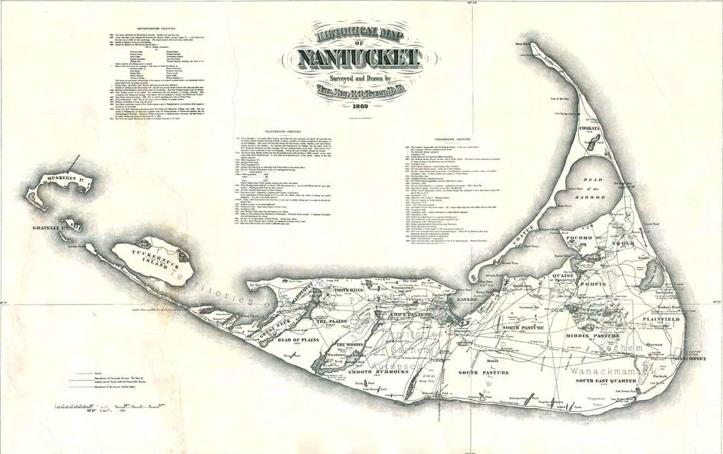
1846, a great fire destroyed most of Nantucket town and its wharfs and dealt a staggering blow to its whaling industry. Meanwhile, on the mainland, New Bedford was slowly gaining in the number of whaleships calling the port home and, by 1823, it had surpassed the number of Nantucket vessels and it’s fleet would only continue to grow. With the arrival of the railroad in 1840 and easier access to Boston and New York markets, whaling had made New Bedford the wealthiest city in the world.
With the decline and ultimate demise of the whaling industry on the Island, Nantucket fell into a period of decline. On a more promising note, the once numerous sheep had kept the vegetation at a sub climax, grassland and moor stage. This, in turn, made the Island an ideal resting and feeding ground for migrating birds, especially golden plover and eskimo curlew. These flocked to the grasslands in sometimes astonishing numbers and the Islanders responded by carving some of the very finest decoys for these two species. The shorebirds not only provided necessary income but a welcome deviation from a diet heavily reliant on mutton and fish. Likewise, the increasing numbers of visiting hunters provided additional revenue from their need for accommodations and guiding services.


With the passage of time, affluent residents on the mainland began to note the “quaintness” of Nantucket and began to flock to the Island for a summer retreat. Today, the community is considered one of the most prestigious and wealthy in the State.
Identifying decoys from Nantucket has always been particularly problematic. From the whaling days through the early 1900’s, many of the old families were of Quaker descent and a handful of names predominated. Folger’s, Coffin’s, Starbuck’s, Hussey’s, Macy’s, Swain’s, Mitchell’s and a few others filled the directories. Most of the population was centered around Nantucket Town and many were interrelated. Many of the decoy patterns were



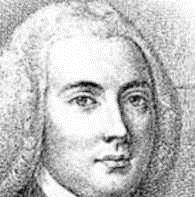
The Folger family on Nantucket dates to the very earliest European settlement on the Island. Peter Folger (1617 – 1689) and his brother arrived in the area of today’s Boston in 1635 aboard the ship Abigail as part of the “Great Puritan Migration”. In 1644, he married an indentured servant girl, Mary Morrill, whom he had met on the crossing, and they soon settled on Martha’s Vineyard where he taught the local natives and transcribed their language. He was one of fourteen tradesmen invited by the original proprietors to settle on Nantucket and work in their designated trades in exchange for a half share of the Island. Folger brought valuable talents as an interpreter to the Indians, miller, and surveyor. Peter and Mary had a large family of eight children. His youngest child, Abiah (1667 – 1752), was to become the mother of Benjamin Franklin.
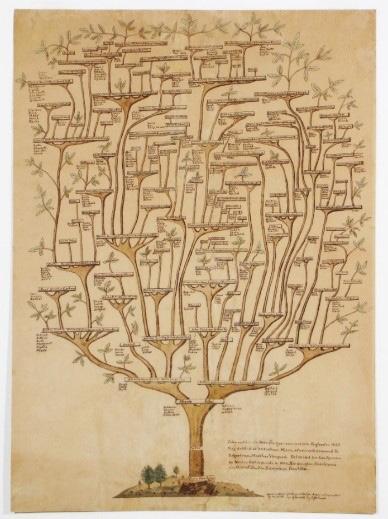
Like the Husseys, Coffins, Starbucks, Macys and a handful of others, the Folger family grew exponentially on Nantucket and the name is well represented on the Island today, with sites such as “The Folger House”, “Folger Avenue”, Folger Lane”, Folger Road”, Folger Court”, “Folger Hill”, Folger Marsh”, and “Folger Creek”, to name but a few. Peter’s many contributions to the Island are recognized today with a stone monument at the location of his home. As one can imagine, family names were often repeated and tracing individual lines of descent can be extremely difficult, if not often impossible.
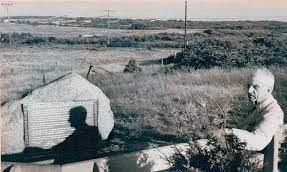
Many of Nantucket’s shorebirds, including those by the Folgers, date to an early period in Nantucket’s history, a period that coincides with dates when the golden plover and eskimo curlew were extremely prevalent on the Isle. Records from the period illustrate the great flights and the slaughter that ensued:
“Three times during that forenoon they were obliged to go down to the pond and wash out their guns. They shot until 3 P.M. and killed enough plover to fill a tip cart twothirds full”.
“All the powder and shot on the Island were expended, and the gunners had to send to the mainland for more”.
The remarkable state of preservation seen on many Nantucket shorebirds may be attributed partially to their use on the moors, seldom being exposed to direct saltwater contact, and careful handling by their frugal Quaker owners, who

1835 – 1919 | Nantucket, Massachusetts
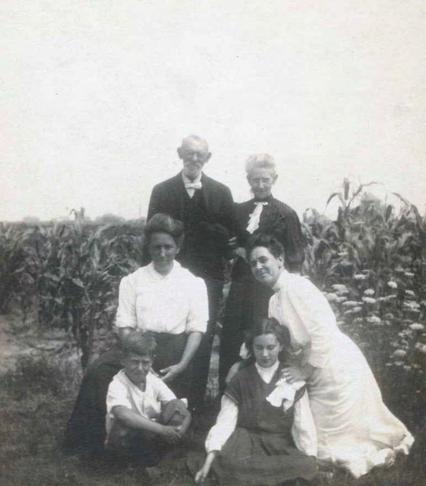
Charles was the son of wealthy whale oil merchant, Henry Coffin, and his wife, Eliza Starbuck. The household was a large one that included Charles’s eight brothers and sisters as well as two domestics. Henry was one of the most influential residents of 19th century Nantucket. He and his brother Charles G, following in the whaling footsteps of their father Zenus and grandfather Captain Micajah Coffin, established the firm of “C.G & H Coffin” and built grand homes for themselves across from one another at 75 and 78 Main St. They owned a number of whale ships, and they were among the last of the Nantucket whaling companies to close its books; its last ship, the “Constitution”, sailed in 1857 and was sold in New York upon its return home in 1863. Henry was proud of his son, Charles F, and had a portrait painted of him which now hangs in the San Antonio Museum of Art. With this background, it was almost inevitable that young Charles would become engaged in business on the Island.
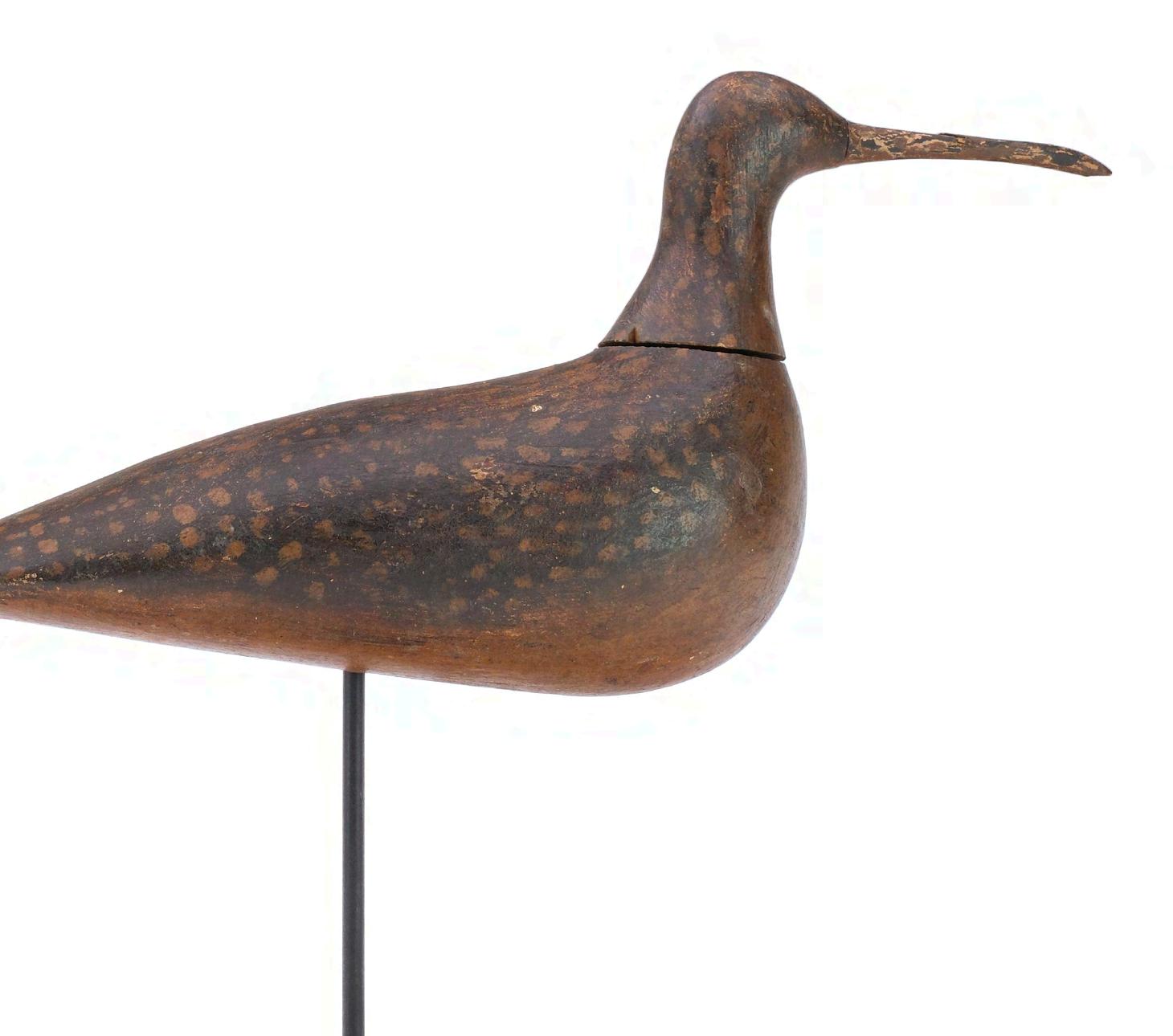
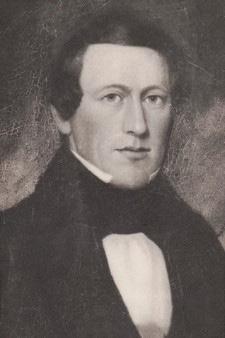

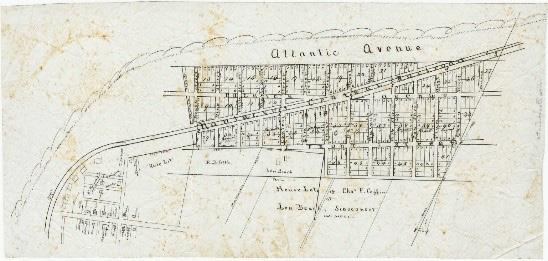

For a short period in the 1850’s Charles set out on his own as a “dry goods merchant” and, in 1859 married Eliza P Gardner, daughter of whaling captain, John Gardner. In 1860 he had property valued at $2500 (the equivalent of almost $90,000 today), a respectful sum for a young, 25-year-old businessman! The draw of the whale, however, must have still been in his blood for, by 1863 when he registered for the Civil War draft, he had transitioned to an “oil manufacturer/merchant”. This would have been about the time that his father and uncle closed the firm of “C.G. and H Coffin”. By 1864, he and his young family had relocated to Boston on the mainland where he became a respected member of the community and a member of the Masons. He listed his occupation as “oil merchant/manufacturer”, apparently working through the last of the whale oil to petroleum transition. By 1900, he had returned to Nantucket and to his early business experiences, this time as a “grocery merchant”.
Charles and his brother, like his father and uncle, were shrewd businessmen. With the slow, but inevitable, decline in the whaling industry on Nantucket, the family recognized the future of the Island as a tourist destination. His father, Henry, had used his wealth to purchase tracts of land along the shore for future development. Likewise, Charles F was quick to capitalize on the idea and he, too, became involved in land development for the summer “rusticators”. By the third quarter of the 1800’s the Coffins were developing plots of land at Siasconset, Sankoty Heights, Sunset Heights and Low Beach.
Charles’ success in business allowed him to enjoy his leisurely pursuits, which included a bungalow on the moors of the Island, where he and the family would spend many happy summer days.


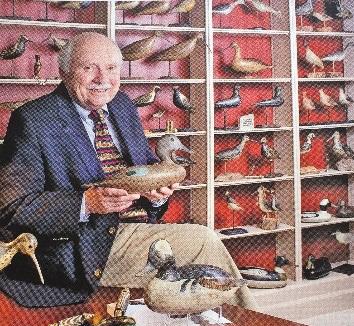
In the early days of searching for decoys, the existence of a small group of wonderful shorebirds surfaced, which seemingly originated on the Island of Nantucket. Reportedly, Bill Mackey and Donald O’Brien managed to track down and purchase fifteen of the seventeen known examples. These decoys were totally unlike anything that had been seen coming from the Island. All were individually crafted, seemingly, without the use of a pattern.
The Quaker heritage and maritime background of the Nantucket residents was evident in the fine craftsmanship of the decoys commonly in use on the Island. Plover shooting was an important part of the life of the islanders and competition was, undoubtedly, severe among hunters. It would seem evident that the hunters with the best rigs would achieve the greatest success. The maker of these decoys chose to make no two exactly alike. Carved wings were either absent, as if tucked close to the body or applied and posed, as if raised or drooping. Heads were depicted as if looking left, right or upward. Overall, the assemblage must have appeared extremely life-like and animated. Today, they are considered to be among the finest examples of this folk form to exist and they are represented in a select few of the very finest collections in America. They were included in, or are currently prominently displayed in, the collections of Mr. Bill Mackey, Dr. James McCleery, Dr. Peter Miller, Dr. Lloyd Griffith, Mr. Donald O’Brien and Mr. Paul Tudor Jones as well as in the private collection of Ted and Judy Harmon.
Like so many exceptional decoys, the identity of the exact maker is, unfortunately, uncertain. Over time, this rig has been assigned various attributions – most recently “Webster”. It can be assumed that due to recent catalog provenance (ie. “Franklin Folger Webster collection”) that this is where the original grouping was acquired from.
1895 – 1980 | Nantucket,
The Folger name is almost synonymous with the Island of Nantucket. The family, along with the Starbucks, Coffins, Husseys and others, were all prominent members of the community during the whaling period. Franklin Folger Webster was born in central Massachusetts but his father died at only age 33 and, by the time Franklin was four he was living with his mother and sister in the home of his grandfather (Franklin Folger) on Nantucket. He married Emily Sykes Boody in 1925 and the couple raised three sons. By 1930. He had relocated to New Jersey and worked for the telephone company there until his retirement when he and his wife moved back to the Island. He eventually moved to Florida but, when he died, his remains were returned to Nantucket and he is buried in the Prospect Hill Cemetery there.
Nantucket is a relatively small, very insular community and the “old families” all knew each other and were aware of most of the activities in town. It is purely speculative, but perhaps because of the Folger family connections, Franklin F. Webster became aware of this rig of shorebirds and made them available to Mackey and O’Brien. If he (Franklin Webster) had actually used the rig it would have been for a very brief time in his early 20’s. His grandfather (Franklin Folger (1842 – 1918)) would have been active in the late 1800’s at the time of widespread shorebird shooting on the Island. Perhaps time and additional research may finally identify the true maker of these shorebirds. Until then, they will be enjoyed by a select few that are privileged enough to have them in their collections.


Incorporated in 1668, Dukes County encompasses Martha’s Vineyard, No-Man’s -Land and the Elizabeth Island chain. With the exception of Cuttyhunk at the tip of the Elizabeth’s, the remainder of the small islands, as well as No-Man’s-Land (Nomans), have always been sparsely inhabited or completely uninhabited and in private ownership. Hunting certainly did occur on the Elizabeth’s, but any decoys that may have been carved there have lost their owner’s names to antiquity.
At 20 miles long by 9 miles wide and roughly triangular in shape, “the Vineyard” is the largest Island in Massachusetts. At only 4 miles off the mainland, it was readily accessible to the early colonists who found the land well adapted to grazing and agriculture. Initially, the Island was well wooded and the climate relatively mild. Soon, villages sprang up at the three “tips” of the Island at Oak Bluffs, Edgartown and Chilmark/Menemsha. The early settlers prospered as fisherman/farmers until the early 1800’s when, like neighboring Nantucket, the residents made a decided shift to capitalize on the profitable whaling industry. Never as large as the Nantucket or New Bedford fleets, the Islanders prospered and many amassed considerable fortunes. This continued until the collapse of the industry in about 1850.
As early as 1835, the Island began to assume it’s reputation as a summer resort, not in the traditional sense but,

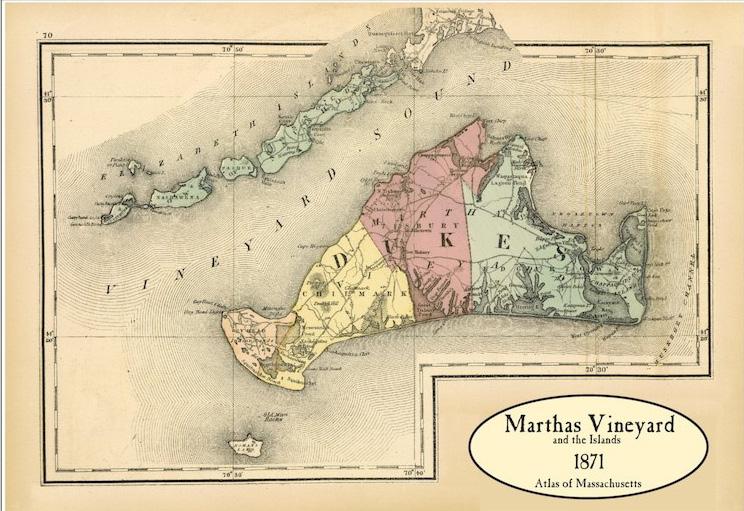
rather, as a religious methodist Camp Meeting location. From the original meeting’s nine tents, the number grew to 250 by 1857. Slowly, returning campers built permanent platforms for their canvas shelters around the central preacher’s tent. Eventually, small, elaborately decorated cottages began to appear and, by 1880, “Wesleyan Grove” was a community of 500 tiny summer homes. As one would expect, these religious visitors soon influenced their secular friends to visit, and Martha’s Vineyard quickly became a widely popular summer destination. These visitors required a variety of services and the economy of the entire Island prospered.
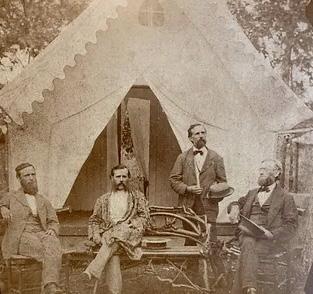
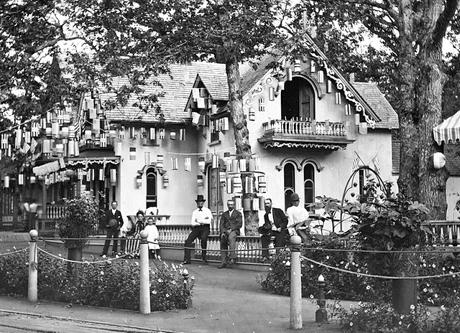

The locals had always enjoyed the harvest of the many ducks, geese and shorebirds that visited the Island and, eventually some of these summer visitors began to extend their stays into the fall and winter months to enjoy the fabulous shooting that the island afforded. The south facing shore in particular, with its numerous fresh and salt ponds, were magnets for the passing waterfowl, including bluebills and redheads (somewhat uncommon elsewhere in the State) and camps, a few more formal stands and simple blinds quickly dotted the landscape.
As elsewhere in the State, the majority of the decoys that were carved were the work of individuals purely for their own use and the rigs were usually small. Some men mentored others, such as Ben Pease’s influence on Keyes Chadwick. Chadwick would gain recognition as the Island’s almost sole commercial carver of note for his duck and geese (brant) and a few Islanders, such as Frank Adams and John Mayhew, are known to have carved shorebirds for sale. Being a relatively small and somewhat insular community, the work of some of the Island’s more accomplished carvers, such as James Look, Frank Richardson and the Mayhew family, can clearly be seen in the decoys of a number of anony mous followers. The better Martha’s Vineyard birds can be recognized by their fine craftsmanship and smooth, flowing lines, and some carry Chadwick’s signature circular inlet weight.


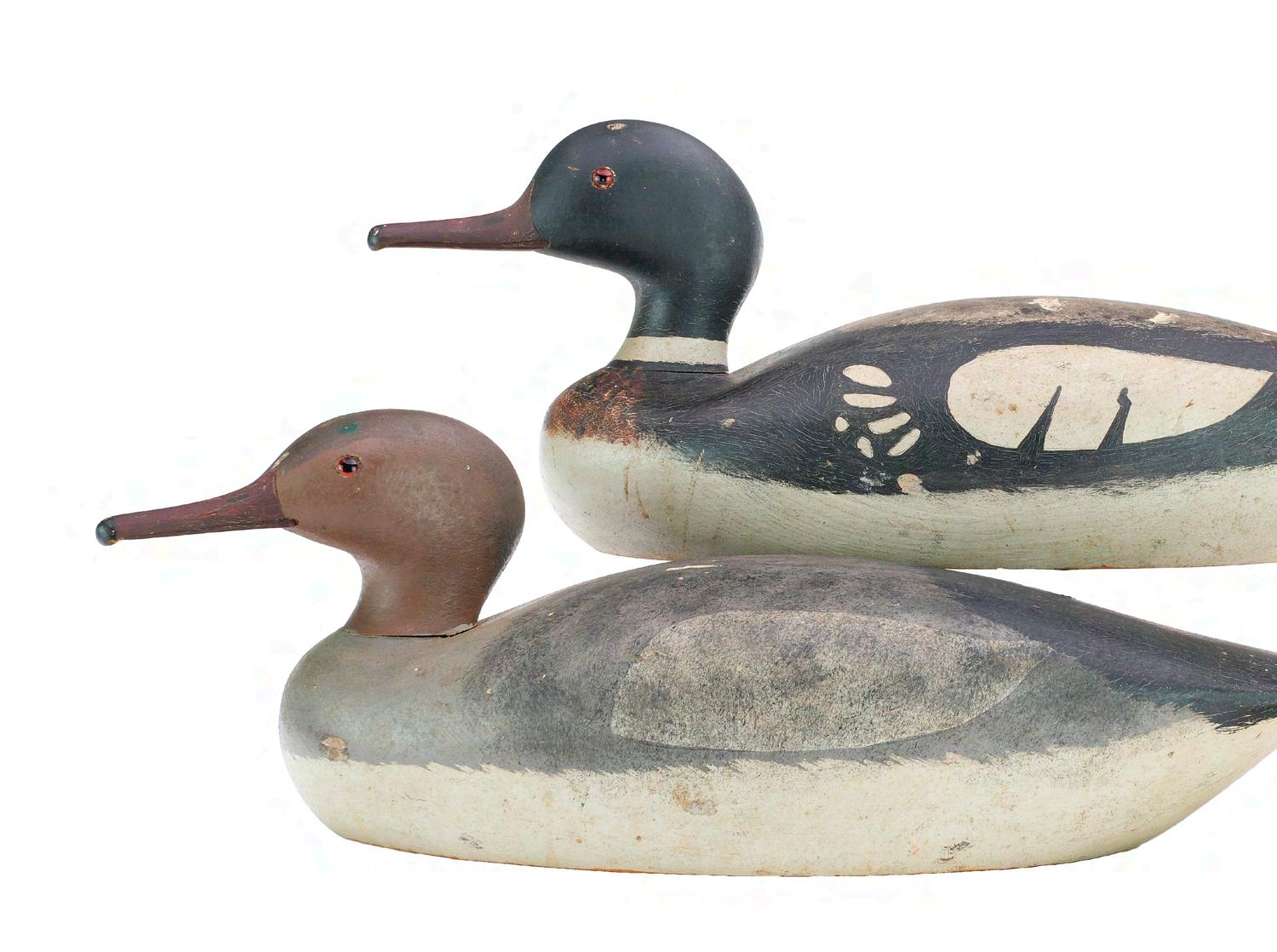
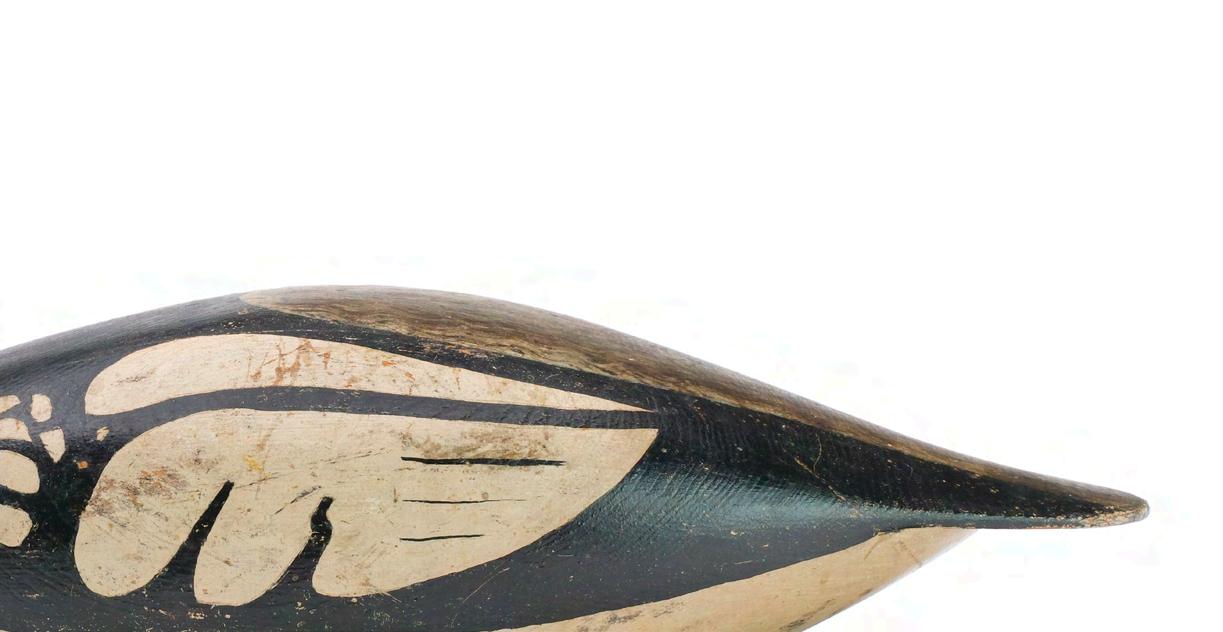
1865 – 1958 | Oak Bluffs, Massachusetts
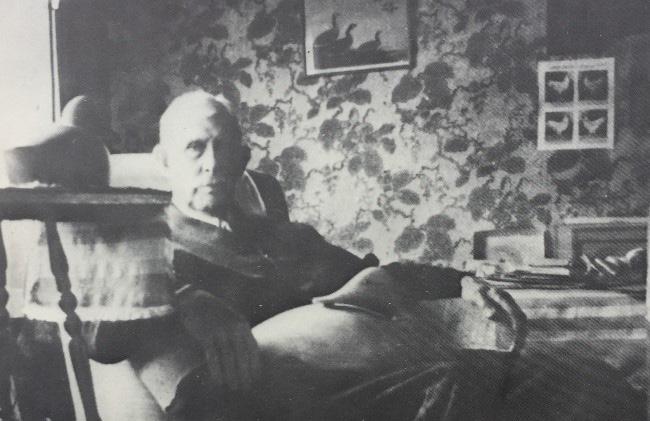
Remarkably, one of the Island’s most famous decoy carvers did not consider this gift noteworthy and certainly not his greatest accomplishment. Rather, his first love was raising poultry.
In Chadwick’s day, the production of chickens was a necessity for meat and eggs, and poultry farms were a common sight throughout the region. Similarly, the raising of “fancy fowl” was a widespread popular hobby and business. After high school on the Island, Keyes attended New York State Agricultural College and returned to the Vineyard to begin his own flock. In 1893, he wed local Chilmark girl, Lydia Stephen Pease, while he worked in Oak Bluffs as a carpenter. He was always fond of chickens. About 1904, his dream seemed to be fulfilled when he was hired by the large Owen Poultry farm at Lamberts Cove in West Tisbury. Unfortunately, his efforts in this regard did not prove sufficiently lucrative and, other than a brief period around 1910 when he worked as a fisherman, for most of his life he relied on his skill as a carpenter and his ability to execute fine Spenserian penmanship to support his family. By 1940, at the age of 75, he was transitioning into retirement, and he listed his occupation as farmer, presumably with a few of his beloved chickens.


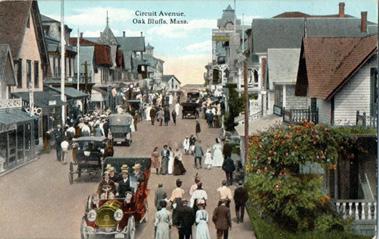

He made his first decoys about 1881 when he was sixteen. When he started to sell his wares, his early work showed the strong influence of his neighbor Ben Smith (1866 – 1946) however, being the perfectionist he was, Chadwick was constantly adapting his patterns to improve the final product. It is estimated that his lifetime production numbered about 2000 pieces, but he may have done more. He and Lydia lived practically their entire wedded lives on Circuit Avenue, just on the outskirts of the religious “cottage city” and very near the ferry landing. His shop was in the basement of his home and when the weather permitted, he would carve under a grapevine in his rear yard.
Chadwick, like so many of the Vineyard men, did some waterfowl hunting but he much preferred following his small pack of beagles in pursuit of the abundant rabbits on the Island. Ham Luce (1905 –1998) hunted rabbits and fished with Chadwick and, like so many others who knew him, remembers him as saying: “ You know – I never wanted to be known as a master carver, I was an expert poultryman” . He and his wife had no children, and they are buried in her childhood town of West Tisbury.



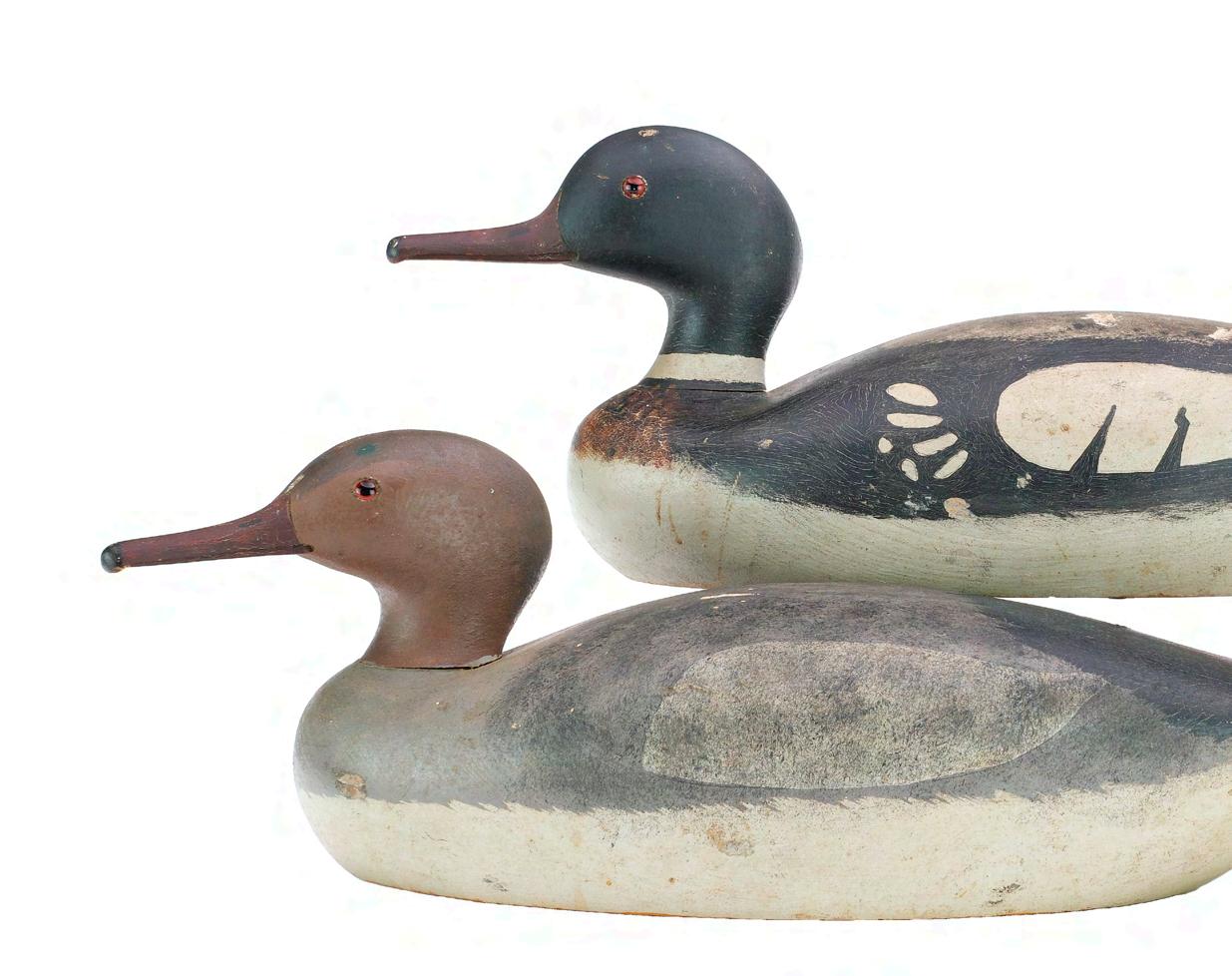


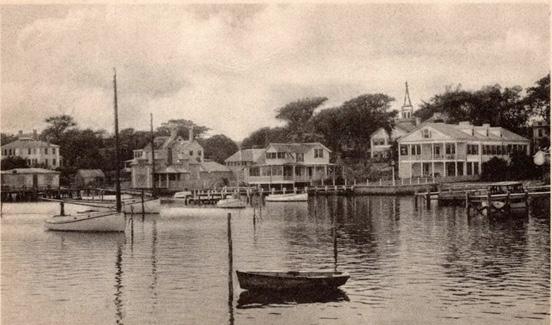
The Pease family have roots that run deep on Martha’s Vineyard. The name first appears in the records when one John Pease acquired a large property in the Mattakeeset area of Edgartown in 1647. The family grew and, in 1866, Charles and Annie Pease had a farm on the small island of Chappaquiddick, located off the very end Edgartown. “As late as the 1870s, there were as yet no summer residents on “Chappy”, no stores and nothing resembling a village, just a few houses, a few farms, a meetinghouse standing bravely atop the highest, scrubbiest hill, and a one-room schoolhouse for white children and the few Wampanoag youngsters who remained ”. It was here that Charles and Annie had their sixth child. The parents officially listed his name as “Warren” and, as late as the 1870 census, he is recorded as “Warren B”. His father died in 1876 when the young man was only ten and, for some unknown reason, from that point onward, through his marriage and until the time of his death, he is listed as “Benjamin W”. and, finally, “Benjamin Warren”.
In 1890, when Ben was 23, he married 22-year-old Annie Baird Currier in Cottage City (Oak Bluffs). He was working as a carpenter at the time, and the young family would remain in Oak Bluffs through the 1900 census when they were living on Circuit Avenue. By the 1910 census, the Pease’s were living in Edgartown, only a few blocks from the ferry to Chappaquiddick. They would remain there for at least the next 20 years while Ben worked first as a carpenter, and then a “foreman/ manager” in an unknown occupation. The draw of his birthplace must have been strong for, by 1930, he was back on his beloved “Chappy” and working as a farmer. He died there in 1938 of a heart attack. He led an


active life as a builder, farmer, offshore fisherman and fish buy er. He served his town for a number of years as Selectman and Assessor. In his obituary, it is stated that “he often said that he lived in the most beautiful place in the world and he felt fortunate to have been so privileged”.
Well known Vineyard carvers Benjamin Smith and Keyes Chadwick were within a year of age of Benjamin Pease. As young men, all three were living in Oak Bluffs and working as carpenters (Pease and Chadwick were living on the same street). In that trade, quality of workmanship is highly valued, and this is refl ected in the decoys of the three men. Pease’s daughter remembers her father and Keyes Chadwick carving together, and it would be only logical that all three men knew each other, possibly hunted together, and were aware of each other’s work. It is known that Chadwick learned the art of carving from Smith, and it is suggested that Pease learned the craft from Chadwick. Each man went on to develop a style uniquely their own. Pease made very few decoys, and he is not known to have ever made any for sale. The bulk, if not all, of his finely styled and finished decoys were for his own use or were made as gifts. A chance discussion in Edgartown between Stanley Murphy (author of “Martha’s Vineyard Decoys”) and Manuel Swartz Roberts resulted in Roberts pulling a lone redhead decoy from the loft of his boat shop and positively identifying it as the work of Ben Pease. Were it not for this singular event, the identity of this extremely talented carver might never have been revealed.

He was apparently very well-liked and respected on the Island. Unfortunately, in the few days between his death and burial, someone thought enough of his decoys to steal them.

Little can be added to the research done prior to 1978 by Stanley Murphy, when he published his “Martha’s Vineyard Decoys”. The only discrepancy that can be found is Smith’s birth date which occurred in October 1865, not 1866. His father was a carpenter in Provincetown on the tip of Cape Cod and Benjamin apparently apprenticed under him as did his brothers. He remained in Provincetown until at least 1880, but disappears from the census records until 1910, when he is found living in Oak Bluffs on the Vineyard and employed as a carpenter. He remained in Oak Bluffs for the remainder of his life employed as an estate gardener and/or carpenter. These seem to be the occupations he worked in when he simply needed money for, during the appropriate seasons, he preferred to work as a market hunter. Murphy paints a rather sad picture of Benjamin. He apparently was somewhat of a loner who had a quick temper and tended to hold a grudge. According to Murphy, “sooner or later he quarreled with everyone - - -“ . He was briefly married late in life but that, mercifully, quickly ended in divorce.
Smith enjoyed gardening and was particularly proud of his orchard. Perhaps it was this mutual interest in agriculture that caused him to meet and befriend Keyes Chadwick. The two men lived very close to one another as well as another Oak Bluff’s carver/carpenter of note, Benjamin Pease. There seems little doubt that it was Smith who mentored Chadwick, for Keyes himself recounts, “He taught me my craft, and there was nothing Ben couldn’t do very well. He was the best”.
Smith carved very few decoys and these are among the most sought after of all the Vineyard carvings. He took particularly good care of his small rig, wrapping each separately before transporting them in straw on a cart to his favored shooting grounds at Sengekontacket, a large salt pond between Oak Bluffs and Edgartown.
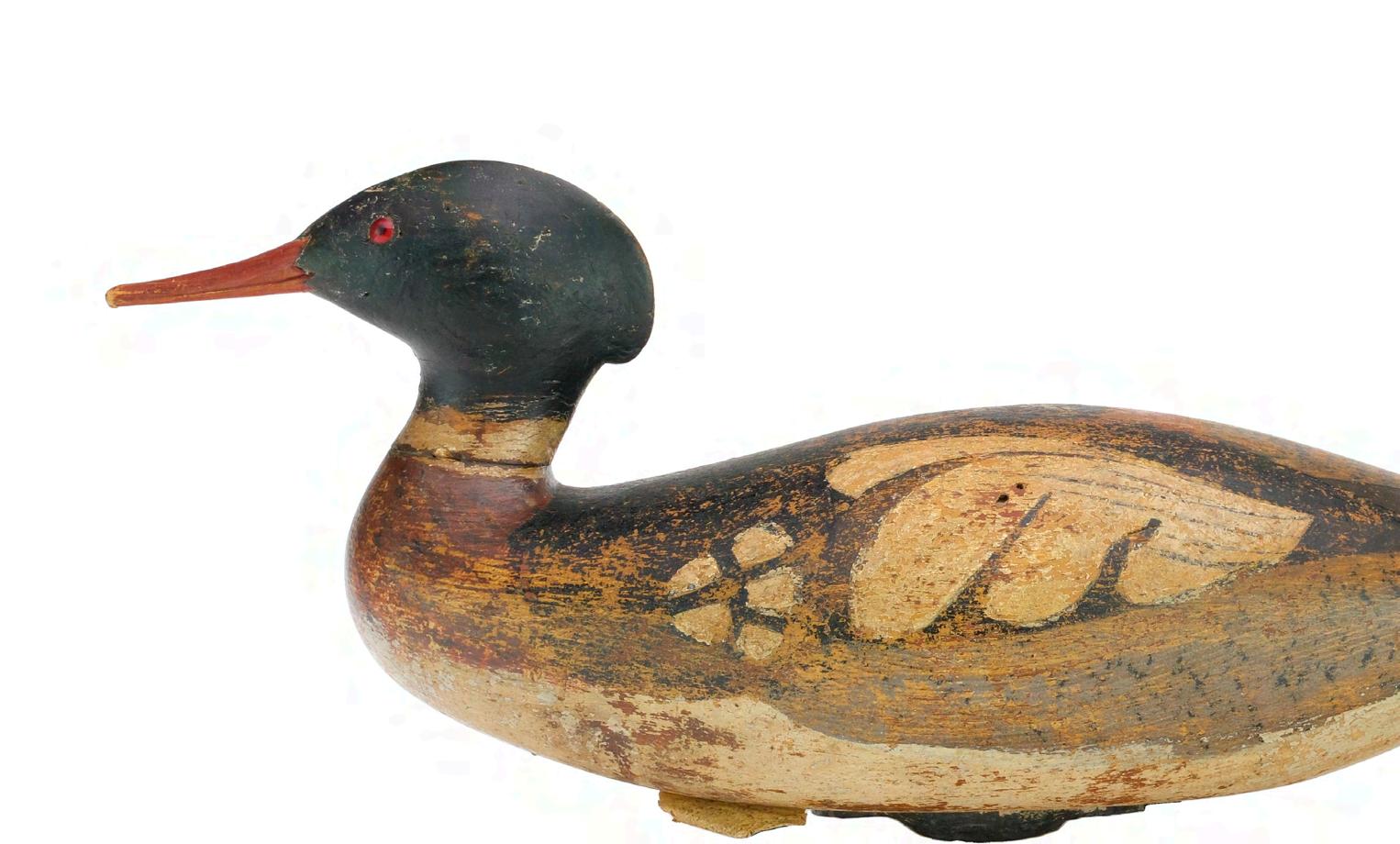
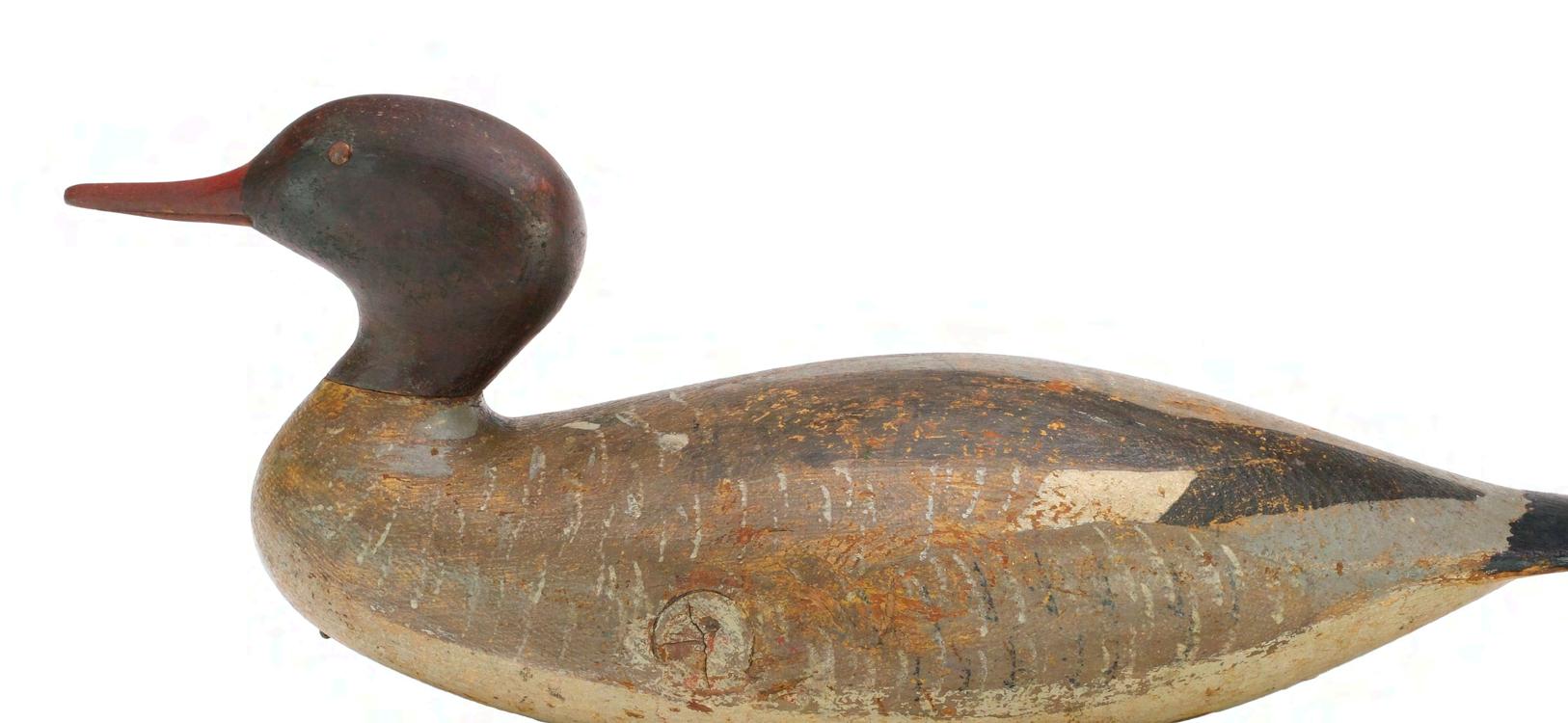
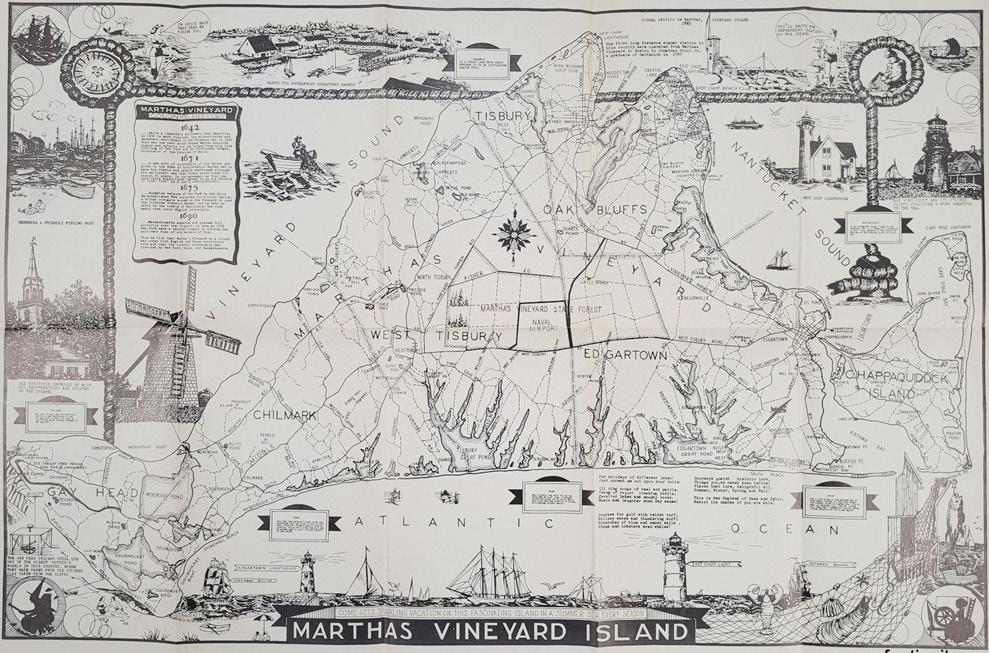
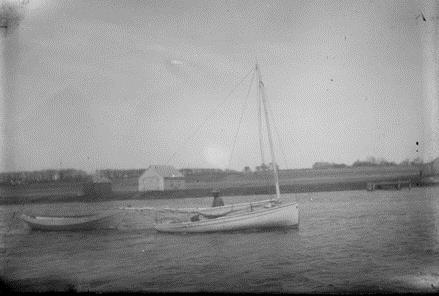

Jim Look was born in Holmes Hole (now Vineyard Haven), on the north shore of Martha’s Vineyard. His father was a prosperous farmer, and Jim followed in his footsteps. By 1885, at age 23, he had moved to Chilmark on the opposite end of the Island where, working as a farmer, he wed 19-year-old local girl Prudence (“Prudie”) L Reed. Sadly, in 1888, they lost their 7-monthold daughter, Eliza, to meningitis and they would have no other children. By the turn of the century, the couple were living in West Tisbury with Jim working as a farm overseer. They must have been rather successful, for they employed at least one “servant”. Their property, directly on Tisbury Great Pond, was quite large, being bounded by Short Cove to the east and Pear Tree Cove to the west. Period photos of the farm depict a tidy setting with large numbers of sheep, goats and chickens. For approximately the next 20 years, Jim worked as a fisherman in the salt ponds, sein ing

Jim had always been an enthusiastic and accomplished hunter. In his later years, he turned this pastime into a very profitable sideline when, in addition to his own property, he leased adjoining lands and opened his home to visiting sport hunters. The guests were housed and fed in his spacious home and, in addition to his multiple individual blinds, he maintained one large gunning stand directly on the Great Pond. He and a manager, George Magnuson, maintained a sizable flock of tame geese for use as “flyers” and as members of the “beach team” at the stand. This was quite the involved operation, complete with an elevated watch tower to spot incoming flocks at a distance and pens for the flyers, the opening of which being triggered by the flick of an electric switch at the stand. As noted in Murphy’s “Martha’s Vineyard Decoys”, an article at the time of his death reported “- - - he became one of the most skillful wild-fowlers that the Island ever had, and, it has been said of him that nowhere in the State could a man be found that was his equal at this sport”
He is said to have used up to 600 wooden decoys at his blinds and stand but only about 200 of these were of his hand, the remainder often being primarily factory decoys supplied or gifted by the visiting hunters. The vast majority of his own decoys are for bluebills or redheads with other species being considered very rare or singular examples. His birds are usually in several coats of paint by Look since the species of the migrating fowl would often fluctuate with the years. Birds that were bluebills one year would become redheads the next, as the need arose.
The Look reputation on the Vineyard did not rest solely on Jim. In 1921, his wife, “Prudie”, along with eight other women, established the “Martha’s Vineyard Hospital Founding Auxiliary”. Prudence raised enough money to outfit the hospital and supplied bedding, hospital gowns, baby clothes, diapers, a clock for the operating room and kitchen equipment.
Today, the original Look farm is a part of the “Short Cove Preserve” and is under a conservation easement. We
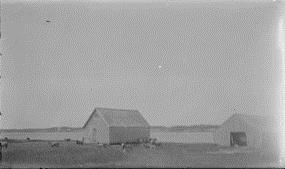


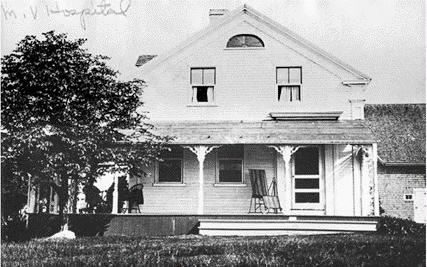
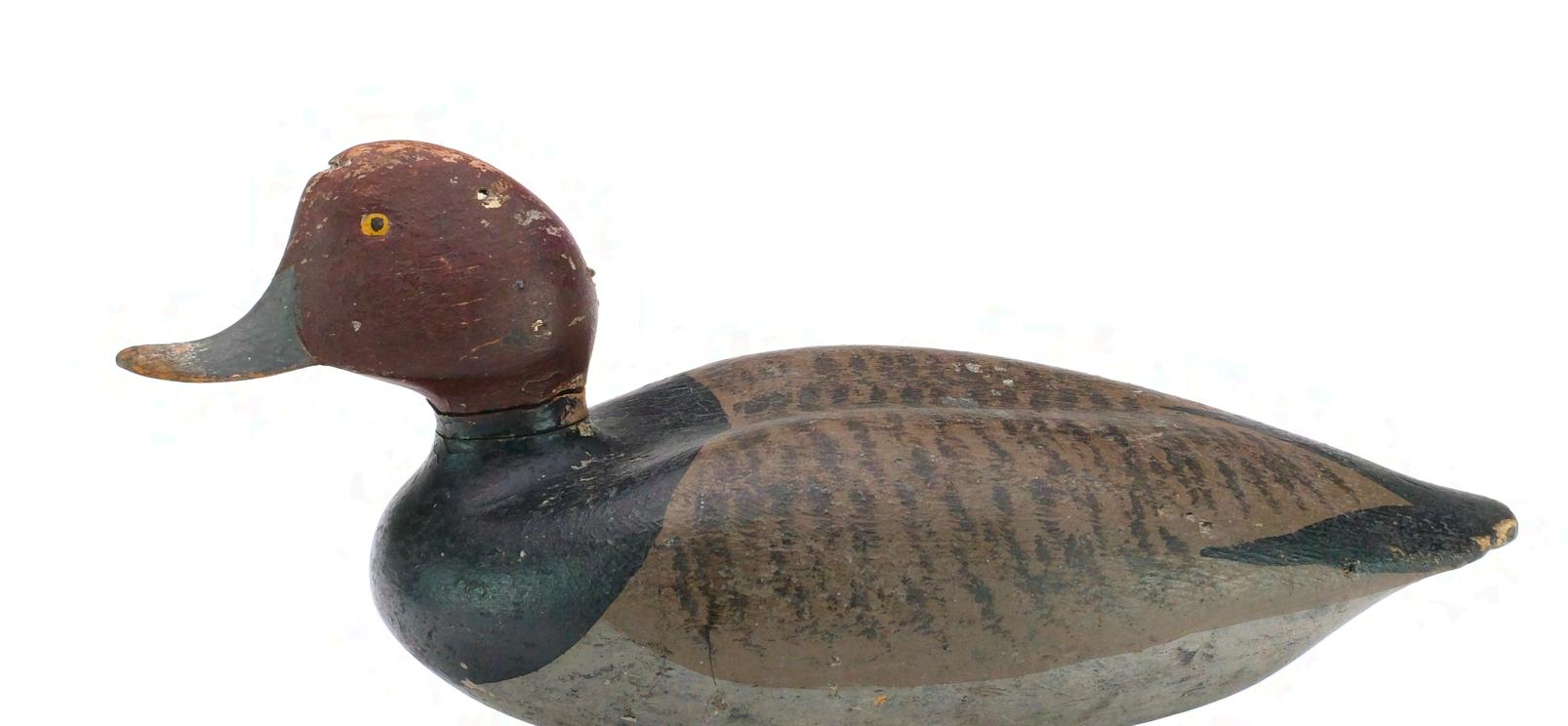

The South Coast stretches from Wareham at the southern end of the Cape Cod Canal to the Rhode Island border. In addition, since it is separated from the rest of RI by Narraganset Bay on one side and Massachusetts’s towns on the north, of necessity, the adjoining coastal town of Little Compton, Rhode Island must be considered a part of the area. Various rivers enter Buzzards Bay such as the Wareham, Weweantic, Mattapoisett, Acushnet, Paskamanset, Slocum and Westport. Each of these have various amounts of associated salt marsh, and all attract waterfowl. The most significant barrier beach is Horseneck which separates the vast Westport marshlands from the open Atlantic. The coast from Dartmouth to Sakonnet Point, RI (Little Compton) contains numerous salt ponds, and these were the location of many of the area’s larger camps and gunning stands.
After the colonial period, the rural sections of the coast were home to the typical fisherman/ farmer and numerous boatyards flourished. In the Westport/Little Compton area, poultry farms proved to be highly profitable. Two large cities predominate. New Bedford’s economy was based, first on whaling and, eventually, ground fishing and scalloping. For many years it was the #1 fishing port by value in the US. Fall River focused on textiles and, by 1860, it was the largest producer of cotton fabric in the United States. In many respects, economically and socially, the South Coast, because of its proximity, relates more to Providence, RI than it does to Boston.

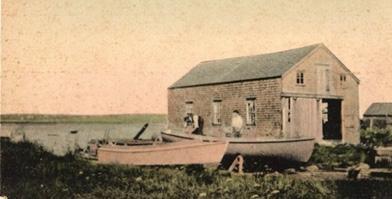
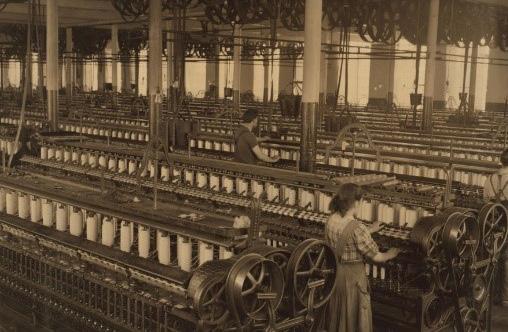


In terms of its decoys, the South Coast is, unfortunately, the most poorly documented of any region in Massachusetts.
The early decoy or hunting literature mentions almost nothing about this section of the coast that did, indeed, have a strong hunting tradition and was home to some very fine decoy carvers. Dr J.C. Phillips seems to have avoided the region entirely when researching his “Gunning Stands of Eastern Massachusetts”, and Doc Starr only discusses the area briefly in his “Decoys of the Atlantic Flyway”. He did make at least one trip to Padanaram Harbor, So Dartmouth when he visited with Capt. Arthur Fuller, and he does note the existence of the “Pequaw Honk” stand in Little Compton. The reason for this dearth of knowledge about the history of the area is relatively simple. For many years, travel from the cities to this section of the coast was, at best, difficult. In the 20th century, the infamous 1938 hurricane and
another important storm in 1954 literally obliterated large section of the immediate shore and many lives were lost. Boat houses, sheds, homes and camps that might have housed decoy rigs were annihilated and their contents tossed adrift, some never to be recovered. Early local collectors were very rare and they were a close-lipped group. Few of these individuals kept any sort of detailed records and, with their deaths, what little they had written was usually thrown away by the heirs.
As decoys began to grow in popularity (and price) pickers and dealers swept through the towns and acquired whatever birds they could with total disregard for history or attribution. At the time, if one had the choice of assigning a bird to “Westport” or Dartmouth” or “Cape Cod”, the Cape moniker inevitably won out, as these were considered far more valuable.



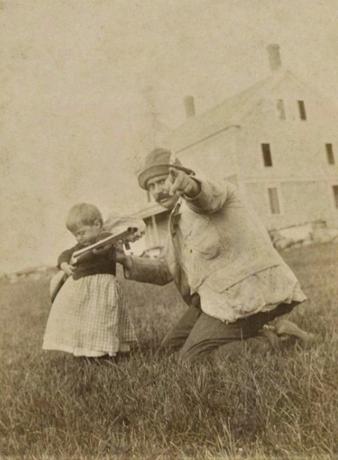

That the area attracted some affluent individuals and did enjoy some fine shooting is evidenced by the fact that the three Crowell “Dust Jacket” plovers that grace the cover of Delph’s “New England Decoys” were found adrift in the Westport River after the 1938 hurricane, and the wood duck on the same cover was also found in Westport. The very early Crowell dowitcher in the Harmon collection that dates to the late 1890’s is one of three that were once part of a small rig used on Allen’s Pond in Dartmouth. Well known private rigs by both Crowell and Lincoln can be traced to the South Coast, such as the Hinsdale rig from Mattapoisett and the Brayton rig from Westport, both of which were handled by the Harmon’s. Again, Crowell and Lincoln are well represented by large rigs of their decoys in both the Bixby and Pequaw Honk gunning stands on Quicksand Pond. The uniquely styled blackduck in the Harmon collection (erroneously attributed by some to the north shore) was part of a large rig from the Mattapoisett/Marion area, and the collection contains a fine shorebird attributed to Walter Savery from Wareham. Recent research has also identified a good number of other very talented carvers from every town along this section of the coast.

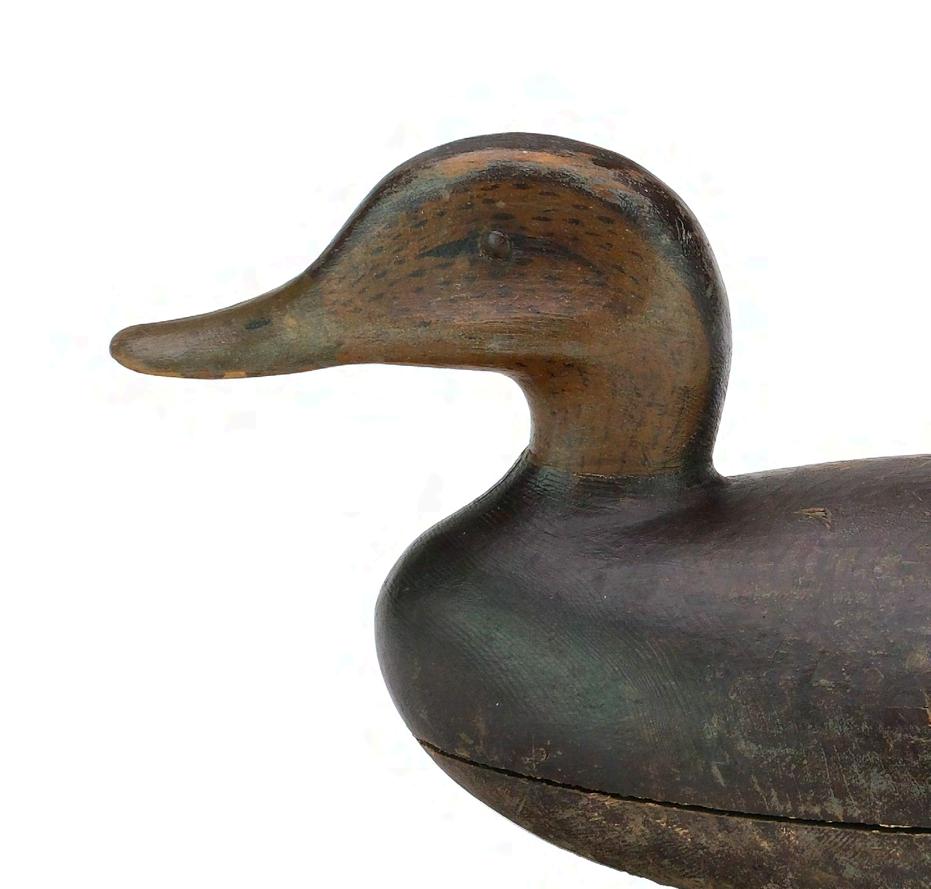

The area offered such excellent sport that it attracted sportsmen from outside the region to hunt and fish. “Shang” Wheeler repeatedly visited Westport and gifted a fine sleeping black duck to h is fishing guide, William (Bill) Head and he influenced his friend, Lou Rathmell to visit as well. Rathmell, in turn, also left behind some of his fine carvings as gifts to his hosts.
Four different gunning stands of varying sizes are known from Quicksand Pond, immediately adjacent to Westport. Two were owned by professionals from Fall River, one from Little Compton and one that was owned by a group of gentlemen from Boston. One of these (the Elms) included a comfortable guest house that catered to sportsmen from the Providence (RI) area. A number of doctors, lawyers, mill owners, bankers and businessmen from Providence, Fall River, New Bedford and beyond soon recognized the peaceful, rural character of the region, and many acquired large tracts of land for their summer residences or second homes. Private golf clubs and tennis courts appeared, and, in the Dartmouth/Westport area, fox hunts were popular. Fortunately, many of these properties have been protected by various restrictive easements, and large sections of the land remain today much as it did in the golden years of gunning.

1855 – 1936 | Wareham, Massachusetts
Walter’s father was a Civil Engineer in New York but, by 1860, he had moved the family to Wareham, MA and, by 1870, he chose to make a major career change to that of being an oysterman. In a classic case of “like father like son”, Walter would ultimately follow in that line of work.
For a period around 1880, Walter left the family home and was working in nearby Middleboro as a day-laborer on a farm. In 1884 he had moved back to Wareham, still employed in farming, and wed 20-year-old Ellen “Nellie” Francis. His life for the next 17 years, however, is somewhat of a blur. In 1897, his wife died in Tacoma Washington and, if Walter was also in Washington at the time, he was with another family. By 1900, he is found, once again, back in Wareham, widowed, and working as a market gardener.



He must have been relatively successful because he was living with his son and daughter, as well as a boarder and a housekeeper. In the 1910 census, he listed his occupation as a wholesale dealer in shellfish and he would remain in that field through at least 1928, where he appeared in the town directory as an “oyster grower and dealer” . From this point on, he became enveloped in his primary love – ornithology. He had no formal training in that field but, through serious self-education, he became friends with a number of noted regional authorities. His primary field of interest was oology (the collection and study of bird eggs and nests). He published multiple times in “The Oologist” as well as in the “Auk”, the prestigious publication of the American Ornithological Union and he collected throughout the country, including with J. M. Priour in Texas in 1927.
His time on the water as a shell fisherman would have kept him abreast of the yearly movement of waterfowl and shorebirds and, with his deep interest in avian life, it is no wonder that Walter sought to produce some notable decoys. What is uncertain is whether he was a hunter/sportsman or, did he pursue ducks and shorebirds purely as part of his ornithological and collecting interest?
Over his lifetime, he amassed an enviable, and well documented, collection of bird eggs. These are housed today, partially in the collections of Harvard University and, primarily, at Bristol County Agricultural School.


Occasionally, a group of wonderful, but anonymous, decoys becomes known to collectors, and they are simply referenced by where they were found. Such is the case with the “Pumpkin Farm “ rig. In the early 1980’s two hen whistlers and three black ducks that were previously unknown to the decoy community came up for sale at a small, weekly auction in Fall River, MA. A local collector purchased both whistlers and the best of the blacks. When he questioned the auctioneer about their origin, he was told that they “came from a picker in Westport (MA)”. Further digging indicated that they were found at “Pumpkin Farm”. Although long out of existence, this farm was located on the eastern shore of Allens Pond, a large salt pond, not in Westport, but in adjoining Dartmouth.

To add to the mystery, the unique design of both the whistlers and the blacks is very atypical, not only for the local decoys, but Massachusetts decoys in general. Ted Harmon, who ultimately owned one of the whistlers and one of the blacks, stated that he believed that, at least the blacks, showed a similarity to the work of the carving team of Gardner and Dexter of Little Compton, RI. In fact, the whistlers are upward gazing, a pose seen in other decoys from eastern Rhode Island and, finally, the hollow, round bottom design, and noticeable front to rear rocker are nearly identical to other birds strongly attributed to Little Compton.
Current thinking among local collectors is that the birds may have originated in Little Compton and, at some point, found their way to Allens Pond and into the Pumpkin farm rig.
Hopefully additional research may reveal the maker’s actual identity but, until that time, we must be satisfied with simply enjoying some of the most charming and very finest of the South coast decoys.

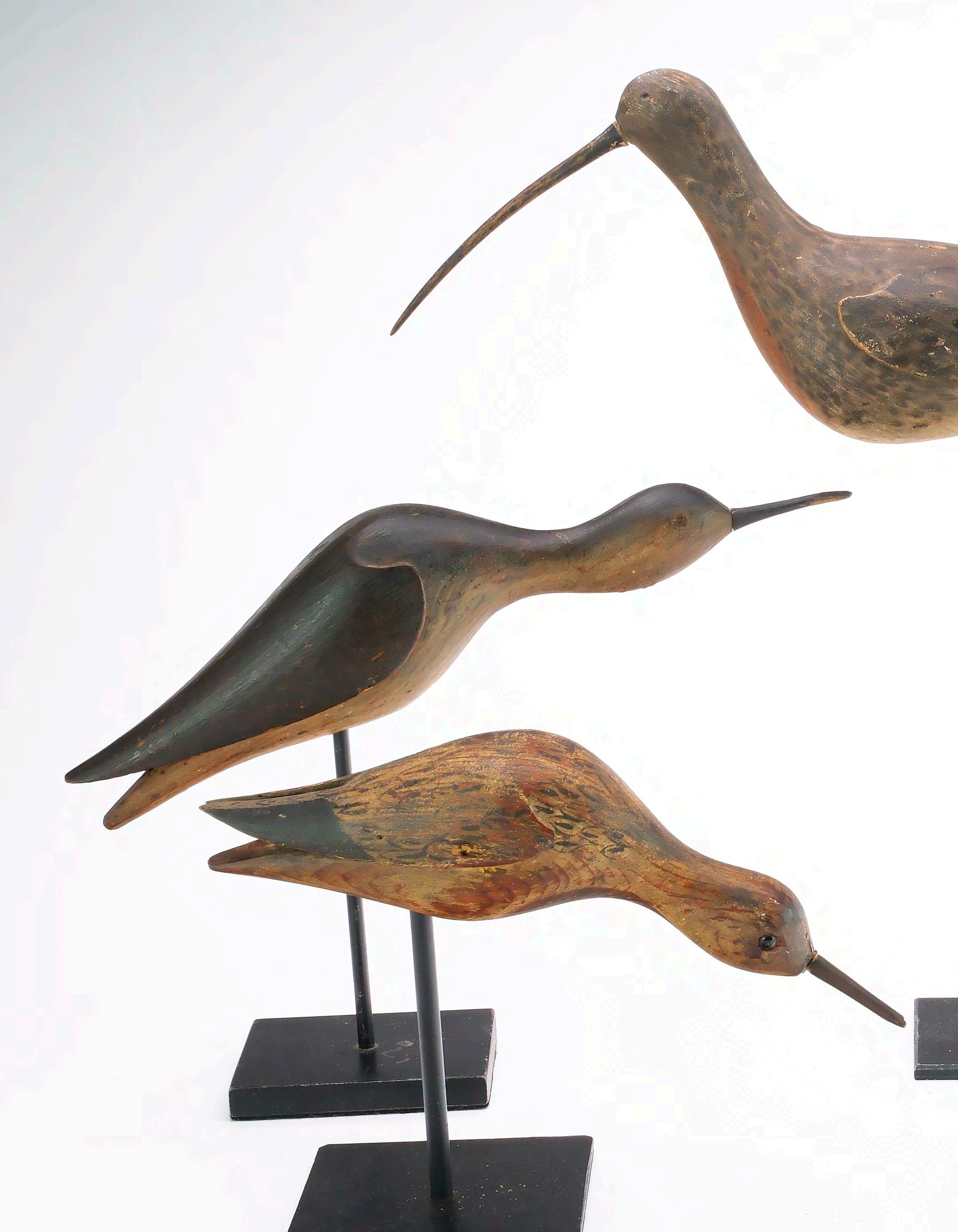
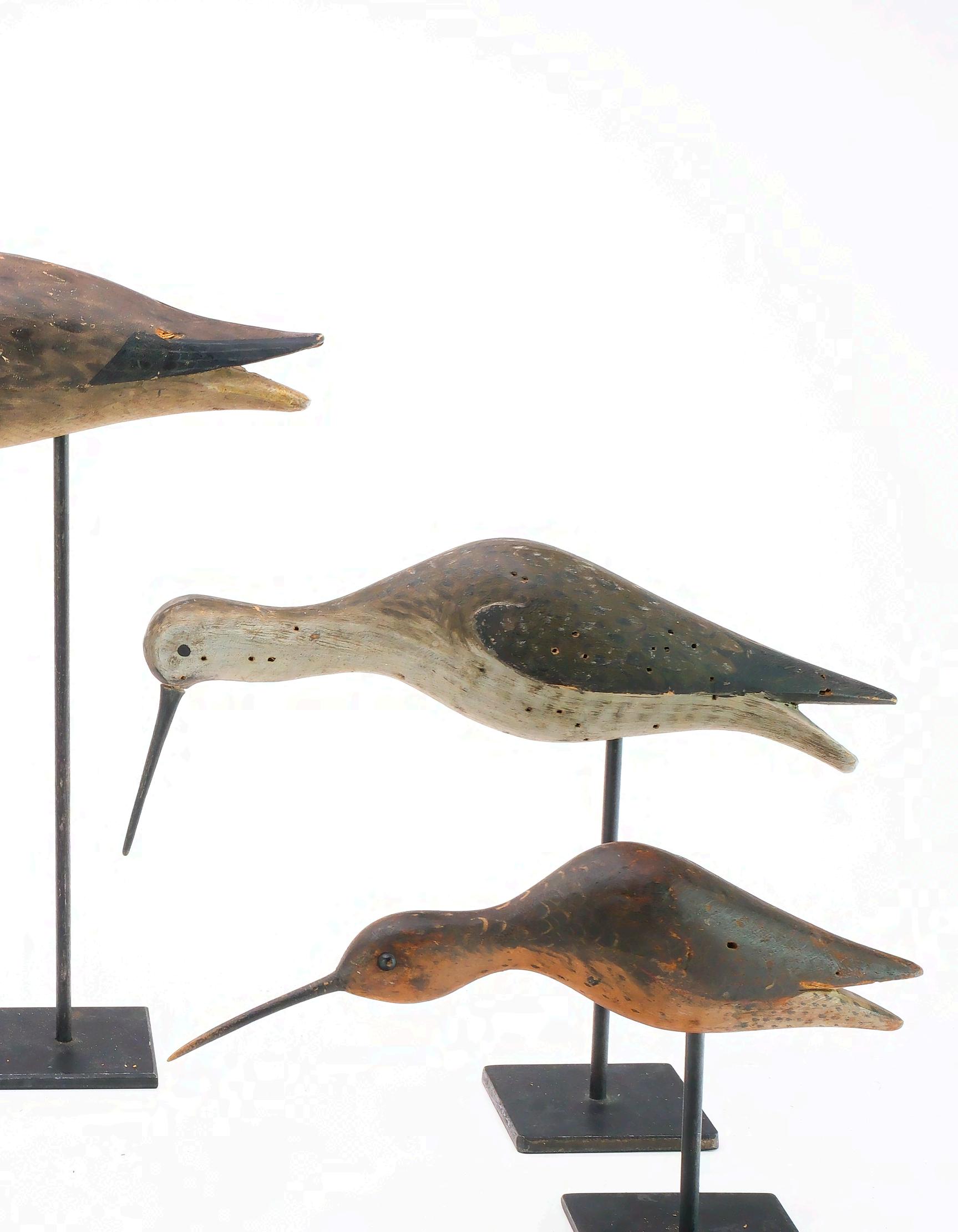


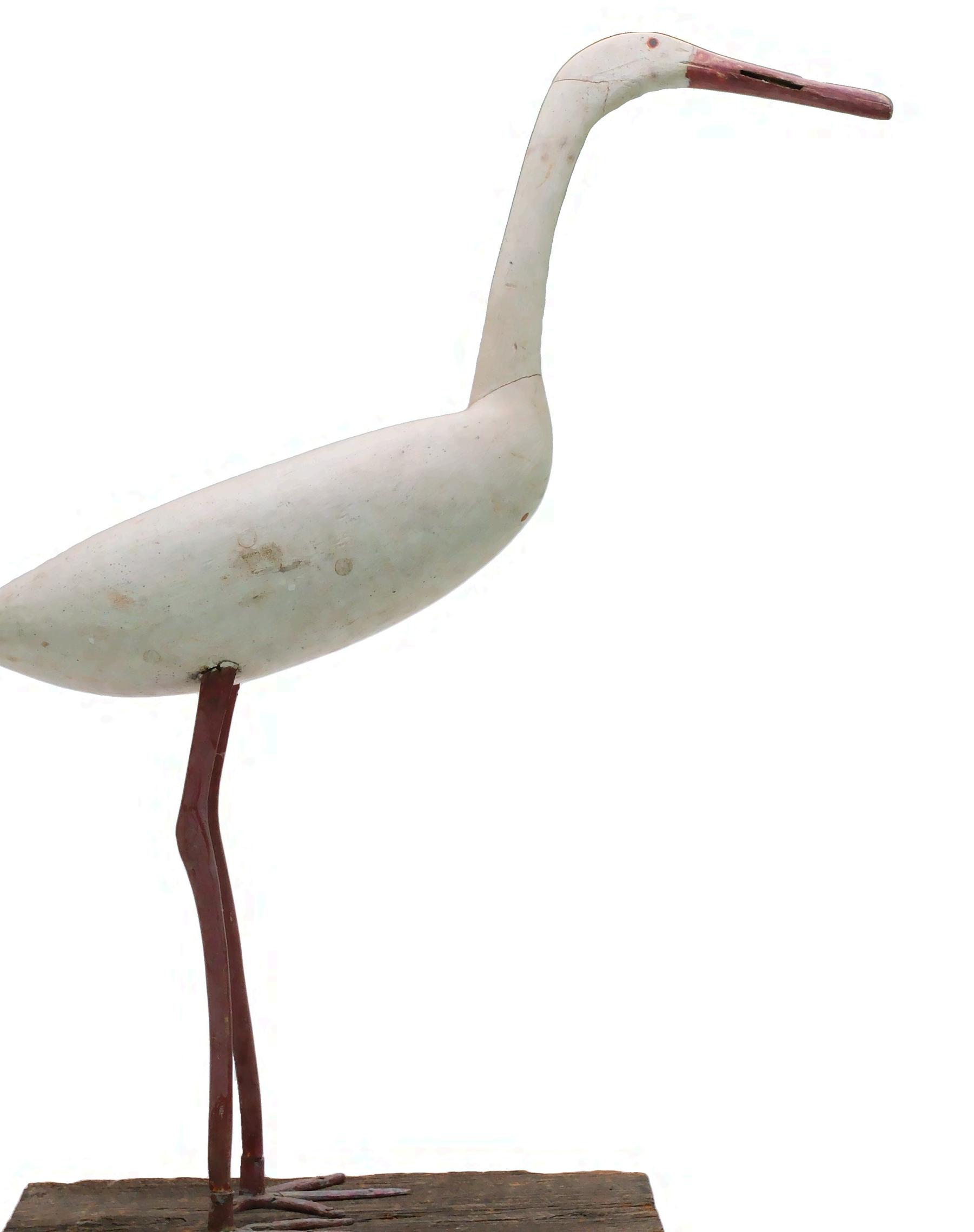
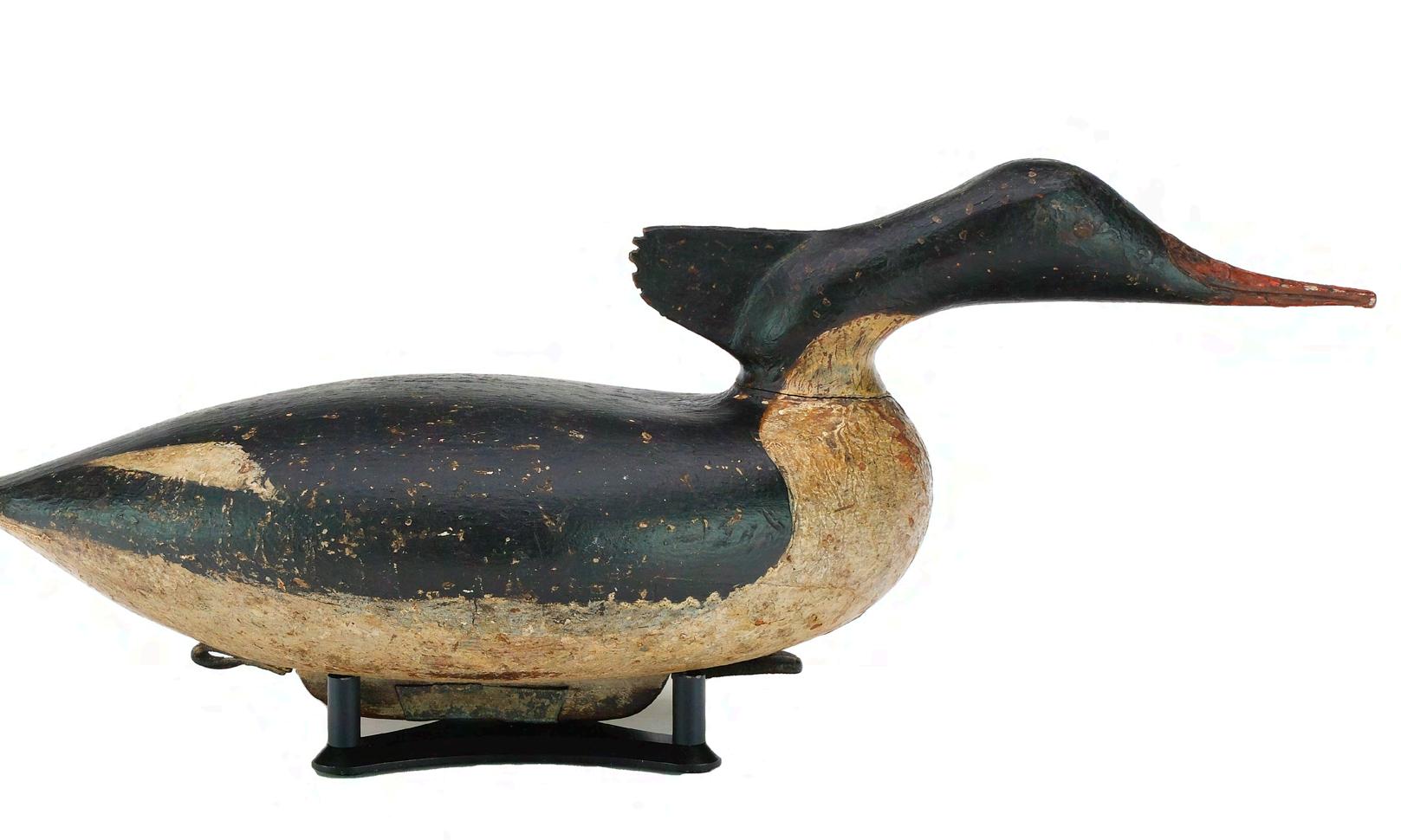
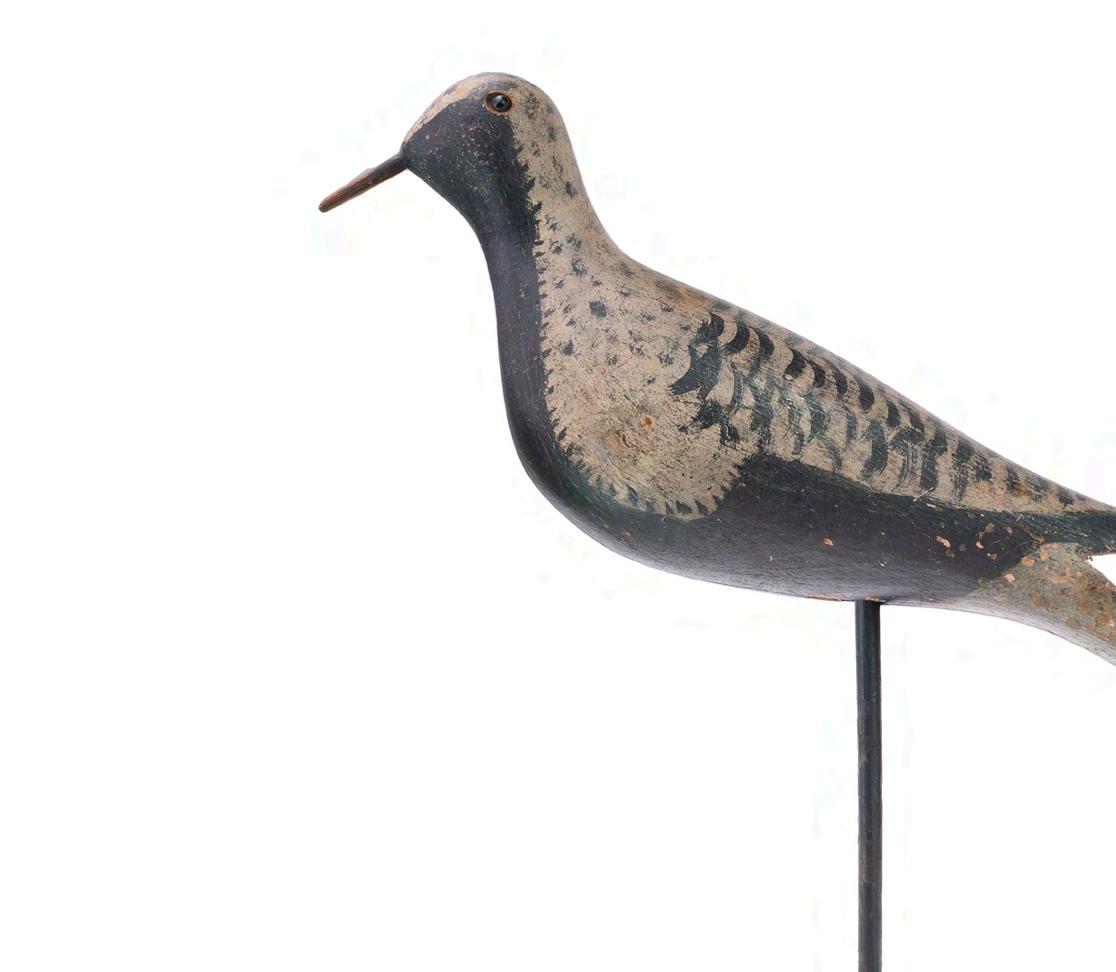
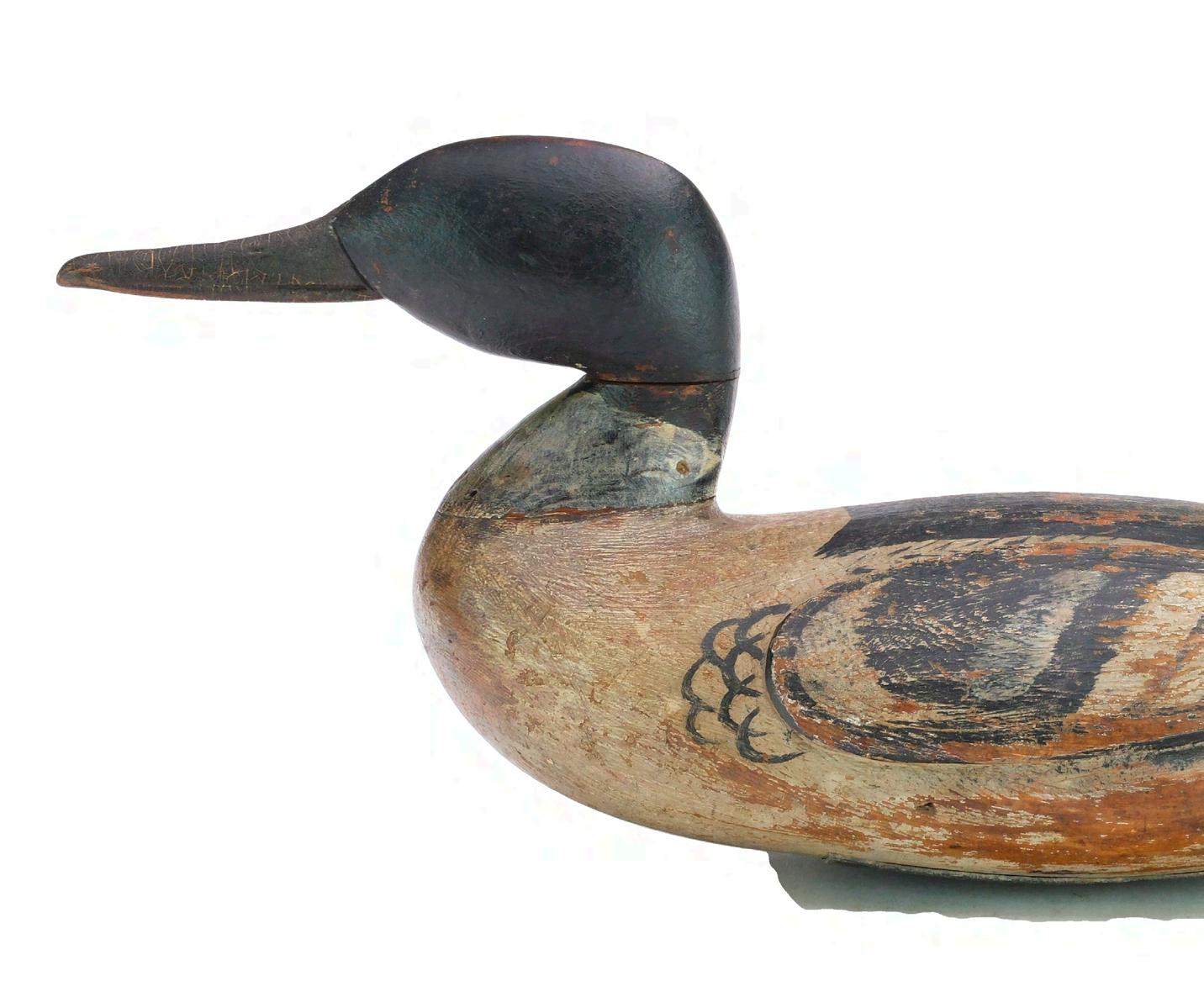
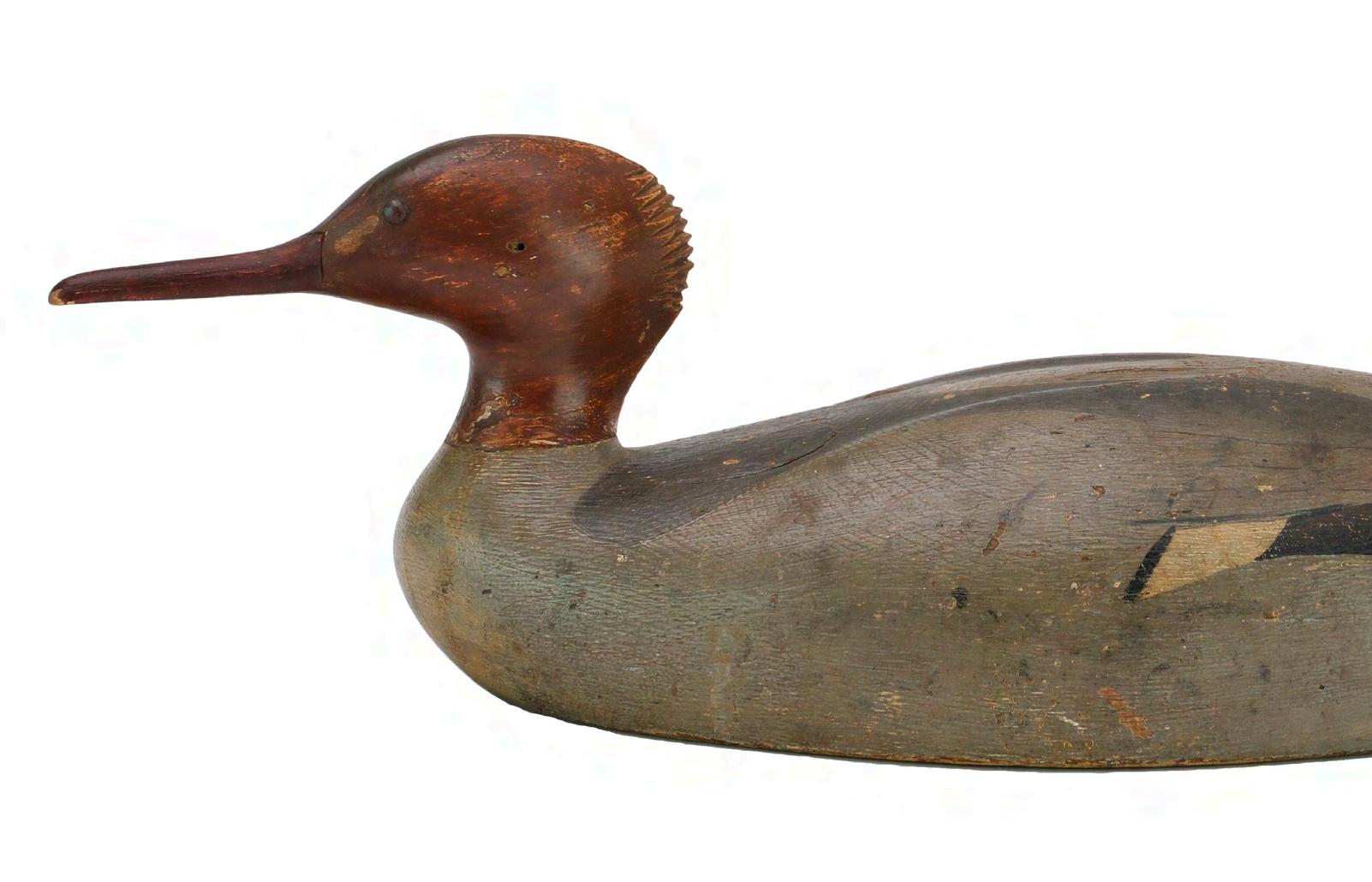
Introduction/Massachusetts
• https://www.audubon-prints.com/product/audubon-octavo-print-dusky-duck
• https://www.digitalcommonwealth.org/search/commonwealth:ft84ff436
• https://newenglandhistoricalsociety.com/wampanoag-indians-took-back-gay-head/
• https://www.nps.gov/nebe/learn/historyculture/whalingheritage.htm
• http://npshistory.com/brochures/nwr/monomoy-2005.pdf
• https://pubs.usgs.gov/gip/capecod/fig3.html
• https://www.town.dartmouth.ma.us/357/A-Brief-History
• https://www.loc.gov/item/today-in-history/february-05/#:~:text=He%20established%20 the%20settlement%20of,Several%20more%20towns%20soon%20followed.
The MA Sportsman/Naturalist/Conservationist
• MacKay, George Henery. 1929. “The Shooting Journal of George Henry Mackay” Privately printed. John C Phillips. Cambridge, MA.
• Mitchell, John M. 1996. “The Mothers of Conservation”. Sanctuary – The Journal of The Massachusetts Audubon Society, Jan/Feb. Lexington, MA.
• O’Brien, Stephen B and C. W. Olney 2019. “Elmer Crowell – Father of American Bird Carving”. Privately Printed Stephen O’Brien Jr. Fine Arts LLC. Hingham, MA.
• Packard, Winthrop. 1921. “The Story of the Audubon Society”. Bulletin of the Massachusetts Audubon Society for the Protection of Birds. Privately published. Boston, MA.
• Personal correspondence Mr. James Cullen
• https://art-now-and-then.blogspot.com/2016/09/frank-weston-benson.html
• https://blog.response.restoration.noaa.gov/rachel-carson-biologist-writer-role-model
• https://www.britannica.com/biography/Henry-David-Thoreau
• https://collections.countway.harvard.edu/onview/exhibits/show/this-abominable-traffic/ agassiz-and-polygenisml
• https://www.history.com/this-day-in-history/henry-david-thoreau-walden-published
• https://www.massaudubon.org/about/history
• https://www.nasonline.org/publications/biographical-memoirs/memoir-pdfs/minot-charles. pdf
• https://nuttallclub.org/history/
• https://www.outdoors.org/resources/library-and-archives
• https://sora.unm.edu/sites/default/files/journals/auk/v056n03/p0221-p0226.pdf J.C.
Shorebirds
• Bridges, Colton H. ______. “Quick A wing Ye Shorebirds Flew” Ducks Unlimited Magazine.
• Carpenter, Charles H Jr and M.G. Carpenter. 1987. “The Decorative Arts and Crafts of Nantucket”. Dodd, Mead and Co. New York, NY
• Forbush, Edward H. 1912. “Game Birds, Wildfowl and Shorebirds”. Massachusetts State Board of Agriculture. Boston, MA.
• Lyell, Anne M (ed). “Nonquit – A Summer Album, 1872 – 1985”. Barekneed Publishers. South Dartmouth, MA.
• Marr, A. Earl. 1906. “On the Sands of Cape Cod”. The Outing Magazine, Dec. Boston, MA.
• Personal correspondence Mr. Jim Parker
• https://www.digitalcommonwealth.org/search/commonwealth-oai:h989tz06s
• https://www.historicnewengland.org/explore/collections-access/gusn/197255
• https://www.historicnewengland.org/explore/collections-access/gusn/272115
• https://nha.org/
Coot Shooting/The Canvas Covered Decoy
• Barber, Joel. 1937. “Wild Fowl Decoys”. Garden City Publishing. Garden City, NY.
• Bent, Arthur Cleveland. 1925. “Life Histories of North American Wild Fowl”. Smithsonian Institution. United States National Museum Bulletin 130. Washington, DC.
• Bigelow, E. Victor 1898. “A Narrative History of the Town of Cohasset”. Privately printed by the Town. Cohasset, MA.
• Bruette, Dr William. 1934. “American Duck, Goose & Brant Shooting”. Charles Scribner ’s Sons. London and NY.
• Forbush, Edward, Howe. 1929. “Birds of Massachusetts and Other New England States, Vol 1- Water Birds, Marsh Birds and Shore Birds”. Privately published, Massachusetts Department of Agriculture. Boston, MA.
• Grinell, George, Bird. 1901. “American Duck Shooting” Willis McDonald & Co. New York, NY.
• Heilner, Van Campen. 1939. “A Book on Duck Shooting- Down Barnstable Way”. Penn Publishing Co. Philadelphia, PA.
• Rich, Walter H. 1907. “Feathered Game of the Northeast”. Thomas Y Crowell & Co. New York, NY.
• Starr, George R Jr, M.D. 1974. “Decoys of the Atlantic Flyway”. Winchester Press. New York, NY.
• https://www.biodiversitylibrary.org/partpdf/90201
• https://scalar.usc.edu/works/inside-decoys-from-shelburne-museum/white-winged-scotercanvas-decoy-1952-192257?path=canvas-decoys
• Bigelow, E. Victor 1898. “A Narrative History of the Town of Cohasset”. Privately printed by the Town. Cohasset, MA.
Clubs Large & Small
• Bosworth, Janet (curator). 1980. “Cuttyhunk Island and Striped Bass 1883 – 1897”. Privately printed. Cuttyhunk Historical Center. Cuttyhunk, MA.
• Bosworth, Janet. 1993. “Cuttyhunk and The Elizabeth Islands – From 1602”. Privately printed. Cuttyhunk Historical Society. Cuttyhunk, MA.
• Cuttyhunk Historical Society. 2002. “Cuttyhunk and the Elizabeth Islands (Images of America series)”. Arcadia Publishing Charleston, SC.
• Hopkins, Gwladys. “Massachusetts Masterpieces – The Decoy as Art”. Privately Printed. Museum of American Bird Art. Mass Audubon, Lexington, MA.
• MacKay, George Henry. 1929. “Shooting Journal of George Henry MacKay, 1865 – 1922”. Privately printed. John C Phillips. The Cosmos Press. Cambridge, MA.
• Meyer, Alfred M (ed). 1883. “Sport With Rod and Gun”. The Century Co. New York, NY
• Weare, Nancy. 1993. “Plum Island – The Way It Was”. Newbury Press. Newbury, MA.
• https://www.chathambarsinn.com,
• https://cuttyhunkfishingclub-bb.com/home
• https://www.digitalcommonwealth.org/search/commonwealth:tq57px917
• https://www.historichotels.org/us/hotels-resorts/chatham-bars-inn/history.php
• https://littlecompton.org/
• https://onthewater.com/bass-stands
• https://openarchives.umb.edu/digital/collection/p15774coll6/id/7341
• https://www.orleanshistoricalsociety.org/blackduckcamp
• https://wpthistory.org/east-beach-before-the-1938-hurricane/
Gunning Stands
• Bryant, Nelson. 1967. “Some Musings on Lost and Useless Art of Training Geese As Live Decoys” New York Times, New York, NY
• Foster, Otis. 1906. “Ancient History of Oldham Pond”. Massachusetts Waterfowlers Association. Unpublished manuscript.
• Hazelton, William. 1916. “Duck Shooting and Hunting Sketches”. Privately printed. Chicago, IL.
• Jones, Fred B. ________. “Jones’ Birch Point Decoys (Advertising pamphlet)”. Privately printed. Brocton, MA.
• Lones, Mrs. Fred. 1976. “Birch Point Gunning Club at Canton Reservoir”. North American Decoys, Fall. Hillcrest Publications. Spanish Fork, UT.
• Jones, Mrs Fred. 1976. “Birch Point Gunning Club – At Canton Resevoir”. North American Decoys Magazine, Fall ed. Hillcreast Publications. Spanish Fork, UT.
• Murphy, Stanley. 1978. “Martha’s Vineyard Decoys”. David R. Goodine Pub. Boston, MA.
• Nye, William Scudder 1895. “Scientific Duck Shooting in Eastern Waters” Independent Press. Falmouth, MA.
• https://www.historicnewengland.org/explore/collections-access/gusn/173402
• https://sailsinc.omeka.net/items/show/1409
The Brant Clubs of Monomoy/Marlborough Club
• Nickerson, Joshua, A.1981. “The Monomoy Branting Club”. Unpublished manuscript. Chatham, MA.
• Phillips, John C. 1932. “Fluctuations in Numbers of the Eastern Brant Goose”. The Auk, Vol XLIX.
• Sullivan, Lou. 2012. “Room With A View”. Cape Cod Life Magazine, July Mashpee MA.
• Wade, Joseph (ed). 1882. “Branting at Monomoy”. The Ornithologist and oologist, Vol 7 No19”. Norwich, CT.
• Webster, Frank, (ed). 1890. “A Few Spring Notes From Monomoy Island, Mass, 1890”. The Ornithologist and Oologist, Vol XV, No 5. Boston, MA.
• ________.1862. “Journal – Monomoy Branting Club”. Unpublished manuscript. Chatham Historical Society. Chatham, MA.
• https://www.fws.gov/refuge/monomoy/about-us
• https://www.fws.gov/sites/default/files/documents/Monomoy%20NWR%20Hunt%20 Plan%20CD-EA%20FINAL.pdf
The North Shore
• Weare, Nancy V. 1993. “Plum Island – The Way it Was”. Newburyport Press. Newbury, MA.
• https://www.ebay.com/itm/255920125678
• https://www.fws.gov/refuge/parker-river/about-us parker river
• https://historicipswich.net/history-of-plum-island/
• https://historynewburyport.com/clam-shacks/
• https://schooner-adventure.org/history/schooner-adventure/dory-fishing-on-adventure-1926-1953/
Frederick William Baumgartner
• Cullen, Jim. 2014. “New England Canada Goose Decoys – Charles Safford, Frederick Baumgartner and George Boyd”. Hunting and Fishing Collectibles Magaziner, July/ Aug. Lawsonville, NC.
• Hopkins, Gigi. 2009. “Charles A Safford and His Canada Goose Decoys”. Decoy Magazine, May/June. Lewes, DE.
• Williamson, Jay S. 1999. “Decoys of the Newburys, Plum Island and Surrounding Communities”. Privately printed. The Historical Society of Old Newbury Newburyport, MA.
Charles Howard Hart
• Eaton, Allen H. 1949. Handicrafts of New England. Harper and Bros Publishers. New York
• Oakes, Donald. 1991. “Charles Hart – North Shore Massachusetts Carver”. Decoy Magazine, July/Aug 1991. Lewes DE.
• _________. 1903. Gloucester, Massachusetts City Directory. Gloucester, MA.
• __________. 2021. “Guyette and Deeter Inc.– North American Decoys at Auction”. April 30 & May 1. Privately printed. St Michaels, MD.
• www.ancestry.com
• https://www.britannica.com/biogrphy/Richard-E-Byrd
• https://capepondice.com/cape-pond-ice-history-photos/
• https://daily.jstor.org/polar-expedition-or-publicity-stunt/
• http://galleries.apps.chicagotribune.com/chi-130725-byrd-explorer-snow-cruiser-pictures/
• https://naples.floridaweekly.com/articles/charles-harts-articulated-decoys-continue-tofascinate/
• https://www.wardmuseum.org/artists/charles-hart/
• Engers, Joe.1990. “The Great Book of Wildfowl Decoys”. Chapter on Massachusetts by Jackson Parker. Thunder Bay Publishing. San Diego, CA.
• Lindsey, Benjamin J. 1981. (reprint) “Old Marblehead Sea Captains and the Ships They Sailed On”. Marblehead Historical Society. Marblehead, MA.
• Moir, Rob. 1990. “Massachusetts Waterfowl Decoys 1840 – 1940”. Massachusetts Wildlife Magazine. Summer 1990.
• Shaw, Robert. 2010. “Bird Decoys of North America – Nature, History, and Art”. Sterling Publishing. New York and London.
• https://accessgenealogy.com/massachusetts/sea-captains-fabens-samuel-to-freeto-francis. htm
• http://shop.old-maps.com/massachusetts/towns/essex-co-ma-1872-town/marbleheadvillage-massachusetts-1872-old-town-map-reprint-essex-co/
Thomas Cooper Wilson Jr.
• Hopkins, Gwladys. 2016. “Massachusetts Masterpieces – The Decoy as Art”. Massachusetts Audubon, Museum of American Bird Art. Privately printed.
• Paff, Adam E.F 1929. “Etchings and Drypoints By Frank W. Benson. Houghton Mifflin Co. Riverside Press, Cambridge, MA.
• Phillips, John C. 1929. “Shooting Stands of Eastern Massachusetts”. Privately printed. Cambridge, M.
• Weare, Nancy V. 1993. “Plum Island – The Way it Was”. Newburyport Press Pub. Newbury, MA.
• Williamson, Jay S. 1999. “Decoys of the Newburys, Plum Island and Surrounding Communities”. Privately printed. Historical Society of Old Newbury. Newburyport, MA
• _________. 1936. “Thomas C Wilson’s Body is Recovered”. Boston Globe Newspaper, March 18, 1936. Boston, MA.
• https://historicipswich.org/2021/03/09/history-of-great-neck/
• https://historicipswich.net/2022/12/23/the-ipswich-town-farm-1817-1928/
Fredrick Melville Nichols
• Hopkins, Gwlady’s. 2016. ”Massachusetts Masterpieces – The Decoy as Art”. Massachusetts Audubon Museum of American Bird Art. Privately printed.
• http://www.lynnma.gov/about/history.shtml
• https://www.mapsofthepast.com/lynn-massachusetts-ma-city-map-walling-1871.html
• https://massbird.org/ecoc/
• Personal correspondence Judy Harmon
Melvin Gardner Lawrence
• Harmon, Ted 1997. “Snipe Hunt – Identifying the Shorebirds of Melvin Gardner Lawrence”. Decoy Magazine May/June. Lewes, DE.
• Hopkins, Gwladys. 2016.“Massachusetts Masterpieces – The Decoy as Art”. Museum of American Bird Art at Mass Audubon. Privately Printed. Massachusetts Audubon Society. Lincoln, MA.
• Starr, George Ross Jr M.D. 1974, “Decoys of the Atlantic Flyway”. Winchester Press. New York, NY.
• https://www.massmoments.org/moment-details/revere-beach-opens.html
Boston & Boston Harbor
• Bixby camp papers, private collection
• Cullen, Jim. 2009. “Finely Carved and Nicely Painted”. Privately published, Jim Cullen, Rye, NH.
• Forbush, Edward H. 1912. “Game Birds, Wildfowl and Shorebirds”. Massachusetts State Board of Agriculture. Boston, MA.
• MacKay, George Henery. 1929. “The Shooting Journal of George Henry Mackay” Privately printed. John C Phillips. Cambridge, MA.
• Sullivan, C John Jr. 2014. “Swan Island Club 1872 – A History – 2014, Currituck, North Carolina”, Privately published C John Sullivan Jr.
• https://www.communityadvocate.com/2023/06/18/westboroughs-edward-howe-forbushdedicated-his-life-to-birds/
• Thomas, Joseph D. 1990. “Cranberry Harvest – A History of Cranberry Growing in Massachusetts”. Spinner Publications. New Bedford, MA.
• https://www.cardcow.com/458745/duxbury-massachusetts-old-cove/
• https://mynorthwest.com/2611456/all-over-the-map-vanished-shipyards-connect-pacificnorthwest-boston/
Joseph Whiting Lincoln
• Phillips, John C. 1929. “Shooting Stands of Eastern Massachusetts”. Privately printed. Cambridge, MA.
• Vinal, Cap. 2002. “Joseph W. Lincoln – Accord, Massachusetts – 1/26/1859 – 2/16/1938”. Privately printed. Rockland, MA.
Gordon Mann
• Cann, Donald and J Galluzzo. 2003. “Images of Rockland”. Acadia Publishing.
• Starr, George Ross Jr M.D.1974. “Decoys of the Atlantic Flyway”. Winchester Press. New York, NY.
• __________.1899. “Mann – Dill (wedding announcement)”. The Boston Globe, Dec 6. Boston, MA.
• __________. 1958. “Gordon Mann (obituary)”. The Rockland Standard, May 29. Rockland, MA.
• https://en.wikipedia.org/wiki/Hanover_Branch_Railroad_(Massachusetts)
• Personal correspondence Ms Madeline Meryash
• Bailey, Sarah Y. 1920. “The Story of Jones River in Pilgrim Plymouth, 1620 – 1726 Which in the Latter Year Became Kingston, Massachusetts”. Pub by Kingston Branch of Alliance of Unitarian Woman. Kingston, MA.
• Hopkins, Gwladys. 2016. “Massachusetts Masterpieces – The Decoy as Art”. Massachusetts Audubon Society
• Shaw, Robert. 1994. “Bird Decoys of North America – Nature, History, and Art”. Sterling Publishers.
• Starr, Dr George Ross. 1974. “Decoys of the Atlantic Flyway”. Winchester Press. New York, NY.
• https://accessgenealogy.com/massachusetts/history-of-kingston-massachusetts.htm
• https://www.digitalcommonwealth.org/search/commonwealth:fj236c420
• https://jonesriver.org/drew-heritage-house/
• http://www.oldmaps.com/z_bigcomm_img/ma/town/PlymouthCo/1903/Duxbury_Kingston_1903_web.jpg
• Hopkins, Gwladys. 2016. “Massachusetts Masters – The Decoy as Art”. Privately published. Museum of American Bird Art, Mass Audubon. Lincoln, MA.
• Starr, George Ross Jr, M.D. 1974. “Decoys of the Atlantic Flyway”. Winchester Press, New York, NY.
• Mosher, Bob. 2004. “The Burr Family of Hingham”. Decoy Magazine, May/June 2004. Lewes, DE
• https://outofthearchives.org/tag/elisha-burr/
• Bradford, Lawrence. 1902. “Historic Duxbury in Plymouth County, Massachusetts”. Fish Printing. Boston, MA.
• Goodspeed, Weston A. 1907. “History of the Goodspeed Family”. W.A. Goodspeed Pub. Chicago IL
• Starr, George Ross Jr. M.D. 1974. “Decoys of the Atlantic Flyway”. Winchester Press. New York, NY.
• __________. 1908. “Massachusetts Yearbook for1908”. F.S. Blanchard & Co. Worchester, MA.5
• 1908. “Annual Report of the Town Officers and Committees of the Town of Duxbury For the Year Ending Dec. 31, 1907”. The Memorial Press. Plymouth, MA.
• 1915. “City Directory For the Town of Duxbury”
• https://www.digitalcommonwealth.org/search/commonwealth:cn69mw14c
• http://shop.old-maps.com/massachusetts/towns/plymouth-co-ma-1879-town/duxbury-andpowder-point-village-massachusetts-1879-old-town-map-reprint-plymouth-co/
Capt. Ichabod Clarence Bailey
• Kangas, Gene.2021. “Man of the Sea – Capt. Clarence Baileys Global Adventures and Inspirations”. Decoy Magazine, Jan/Feb. Lewes, DE.
• Starr, George Ross Jr. M.D. 1974. ‘Decoys of the Atlantic Flyway”. Winchester Press.
• ________.1915. “Twenty-Third Annual Report of the Commissioners of the Massachusetts Nautical School”. Boston, MA.
• ________.1913. “Handbook of the Port of Boston – 1913”. Boston Chamber of Commerce.
• https://www.ibiblio.org/hyperwar/OnlineLibrary/photos/images/i02000/i02010.jpg
• http://nehemiahgibson.com/shipsNehemiahGibson.htm
• https://www.shipsnostalgia.com/media/boston-pilot-boat-c1921.50081/
• https://en.wikipedia.org/wiki/America_(1897)
• https://commons.wikimedia.org/wiki/File:Summer_Street,_Post_Office,_Kingston,_MA.jpg
Cape Cod/Nantucket/Martha’s Vineyard
• Carpenter, Charles H Jr. and M.G. Carpenter. 1987. “The Decorative Arts and Crafts of Nantucket”. Dodd, Mead and Co. New York, NY (Section by Donal O’Brien)
• Dunwiddie, Peter W. 1992. “Changing Landscapes – A Pictorial Field Guider To A Century Of Change On Nantucket”. Privately printed. Nantucket Conservation Foundation, Nantucket Historical Assoc and Mass Audubon Society Nantucket, MA.
• Murphy, Stanley. 1978. “Martha’s Vineyard Decoys”. David Godine Pub. Boston, MA.
• https://www.antiquesandthearts.com/nantucket-historical-association-acquires-georgeinness-painting/
• https://www.capecod.com/about-cape-cod/cape-cod-history/
• https://www.frommers.com/destinations/cape-cod-nantucket-and-marthas-vineyard/indepth/history
• https://www.geographicus.com/P/AntiqueMap/nantucketewer-swain-1886
• https://www.historicnewengland.org/explore/collections-access/gusn/175404
• https://mapsofantiquity.com/products/old-cape-cod-reproduction-walling-and-gray-rep014
• https://www.mvcma.org/history-1
• https://mvmagazine.com/news/2017/07/01/look-circa-1900
• https://www.mvtimes.com/2018/04/11/this-was-then-the-deerly-departed/
• https://www.mvy.com
• https://www.nantucket-ma.gov/1608/About-Nantucket
• https://nantucketatheneum.org/kendall-whaling-museum/
• https://www.nelights.com/blog/tag/cape-cod-rescues/#gsc.tab=0
• https://www.nps.gov/nebe/index.htm
• https://www.sandwichmass.org/
• https://www.smithsonianmag.com/history/nantucket-came-to-be-whaling-capital-ofworld-180957198/
• https://www.town.orleans.ma.us/1309/The-Land-Called-Nauset
Anthony Elmer Crowell
• Beckerman, Kate. 2018. “Celebrating Cape Cod’s Master Carver”. Antiques and the Arts Weekly, August 7. Newtown, CT
• Connett, Eugene V (ed). 1947. “Duck Shooting Along The Atlantic Tidewater”. 1952. William Morrow and Co Inc. (Chapter on “Cape Cod Memories” by Elmer Crowell). New York, NY
• Cullity, Brian (curator).1992. “The Songless Aviary – The World of A. E. Crowell & Son”. Privately printed, Heritage Plantation of Sandwich. Sandwich, MA.
• duMont, John S. 1987. “Elmer Crowell’s Decoys”. Reprinted in “The John S duMont Collection”. Privately printed. Northeast Auctions. Portsmouth, NH.
• Lincoln, Joseph C and H Brett. 1935. “Cape Cod Yesterdays”. Little Brown and Co. Boston, MA.
• _________. 1952. “A Elmer Crowell – Famous Wood Carver Succumbs at 89 on Cape”. Boston Globe, Jan 2. Boston, MA.
The Chipman Brothers
• Lovell, R.A. Jr. 1984. “Sandwich – A Cape Cod Town”. Privately published. Sandwich Archives and Historical Center. Sandwich, MA.
• https://freepages.rootsweb.com/~barbpretz/genealogy/ps03/ps03_007.htm
• https://newenglandhistoricalsociety.com/sandwich-glass-builds-a-cape-cod-town/
• https://sandwichglassmuseum.org/the-collection/
• https://sandwichhistory.org/wp-content/uploads/2021/07/1858-Barnstable-Co-SANDWICH-v2-scaled.jpg
• Personal correspondence Mr. Jim Parker, Sandwich, MA.
Preston Allan Wright
• Earnest, Adele. 1965. “The Art of the Decoy – American Bird Carvings”. Clarkson N Potter Pub. New York, NY
• Hopkins, Gwladys. 2016. “Massachusetts Masterpieces – The Decoy as Art”. Privately printed Massachusetts Audubon Society Lincoln, MA.
• https://www.digitalcommonwealth.org/search/commonwealth-oai:pn89f1528
Luther Moody Nickerson
• Ted Harmon papers
• https://www.barnstablepatriot.com/story/entertainment/2013/06/30/from-chatham-nickerson-name-went/33113918007/
• https://research.frick.org/directory/detail/3570
• https://wardmaps.com/collections/cape-cod-maps/products/cape-cod-and-vicinity-massachusetts-1909
The A Gordon Fox Rig
• Clayton, John (curator). 2010. “Massachusetts Masters: Decoys, Shorebirds, and Decorative Carvings”. Ward Museum of Waterfowl Art. Salisbury, MD.
• Forbush, Edward H. 1912. “A History of the Game Birds, Wildfowl and Shorebirds of Massachusetts and Adjacent States”. Massachusetts State Board of Agriculture. Boston, MA.
• Hopkins, Gwladys. “Massachusetts Masterpieces – The Decoy as Art”. Massachusetts Audubon Museum of American Bird Art. Privately printed. Canton, Ma.
• Phillips, Dr. John C. 1926. “Wenham Lake Shooting Record and the Farm Bag, 1897 –1925”. Privately Printed.
• Starr, Dr George Ross. 1974.“Decoys of the Atlantic Flyway”. Winchester Press. New York, NY.
• _______. 2011. “Summer Auction 2011”. Decoys Unlimited Inc. Privately printed. Barnstable, MA.
• _______. 2017. “The Winter Sale 2017”. Copley Fine Art Auctions. Privately printed
The Folgers of Nantucket
• Forbush, Edward H. 1912. “Game Birds, Wild-fowl and Shore Birds”. Massachusetts Board of Agriculture. Wright and Potter Printing. Boston, MA.
• MacKay, George Henry. 1929. “The Shooting Journal of George Henry MacKay, 1865 –1922”. Privately printed by John C. Phillips. Cosmos Press, Cambridge, MA.
• https://bostonraremaps.com/tag/william-c-folger/
• https://www.findagrave.com/memorial/10904442/peter-folger
• https://nha.org/
• https://nha.org/research/nantucket-history/histories-of-historic-sites/folger-franklin-memorial-history/
• https://stephenhgrant.com/folgers-and-nantucket-anniversary-year/
Charles Frederick Coffin
• Carpenter, Charles H. and M.G Carpenter. 1987. “The Decorative Arts and Crafts of Nantucket”. Dodd, Mead and Co. New York, NY
• https://bostonraremaps.com/inventory/north-pasture-nantucket-division-1821/
• https://www.crwflags.com/fotw/flags/us~nawhl.html#cf
Franklin Folger Webster
• Carpenter, Charles H. and M.G. Carpenter. 1987. “The Decorative Arts and Crafts of Nantucket”. Dodd Mead and Co. New York, NY
• Copley Fine Art Auctions, Feb. 15, 2020. “The Peter J. Muller Jr Collection of American Bird Decoys”. Hingham, MA.
• Doyle Auction Galleries Catalog. April 15, 1981. New York, NY
• Parker, Jackson. 1982. “O’Brien Classic Decoys on Display at Museum of American Folk Art’. North American Decoys. Summer 1982. Hillcrest Pub. Spanish Folk, UT
• Shaw, Robert. 1992. “Call to the Sky – The Decoy Collection of James M. McClery, M.D.”
Houston Museum of Natural Science. Gulf Pub. Co. Houston, TX.
• Sheehan, Lawrence and C.S. Sheehan and K George. 1992. “The Sporting Life – A Passion for Hunting and Fishing”. Clrkson Potter Pub. New York, NY
• Southeby’s. Auction. 2000. “American Waterfowl Decoys – The Distinguished Collection of Dr. James M. McCleery”. New York.
• Weiller, Milton C. 1971. “Classic Shorebird Decoys – A Portfolio’. Winchester Press. NY
• Bourne auction Gallery, Hyannis MA. July 1983 and March 1987.
Henry Keyes Chadwick
• Hopkins, Gwladys. 2016. “Massachusetts Masters – The Decoy as Art”. Privately printed. Museum of American Bird Art. Mass Audubon. Lincoln, MA.
• Murphy, Stanley. 1975. “Keyes Chadwick, Decoy Carver”. Duke County Intelligencer. Dukes County Historical Society, Inc. Pub.
• Lee, Linsey. 2012. Historical Perspective: Waterfowling was once a Way of Life. Martha’s Vineyard Times, Nov 27. Marthas Vineyard, MA.
Benjamin Warren Pease
• Burroughs, Polly. 1972. “Zeb – A Celebrated Schooner Life”. Chatham Press, Riverside CT.
• Murphy, Stanley. 1978. “Martha’s Vineyard Decoys” David Godine Pub. Boston, MA
• Vineyard Gazette. 1938. “Son of Chappaquiddick, Benjamin W. Pease dies” (obituary)
• https://www.historicnewengland.org/explore/collections-access/gusn/225266/
• http://history.vineyard.net/pease.htm
• https://chappyferry.com/chappaquiddick/
Benjamin D. Smith
• Murphy, Stanley. 1978. “Martha’s Vineyard Decoys”. David Goodine Publishers. Boston, MA.
James Look
• Murphy, Stanley. 1978. “Martha’s Vineyard Decoys” David Godine Pub. Boston, MA
• https://www.digitalcommonwealth.org/
• https://www.linkedin.com/posts/mvhospital_womenshistorymonth-activity7176653816660922368-Ai4c
• https://mapsofantiquity.com/products/marthas-vineyard-island-sold-new-england-map-col-parker-mas1546
• https://www.mvlandbank.com/properties/short-cove-preserve
• https://www.mvtimes.com/2018/09/05/james-lees-speedboat/
The South Coast
• Deplh, Shirley and John. ____. “New England Decoys” Schiffer Pub. Exton, PA.
• Phillips, Dr. John C. 1929. “Shooting Stands of Eastern Massachusetts”. Privately printed. The Riverside Press. Boston, MA.
• Starr, Dr. George Ross Jr M.D. 1974. “Decoys of the Atlantic Flyway”. Winchester Press. New York, NY
• Private correspondence/collection
• https://collections.whalingmuseum.org/
• https://explorenewbedford.org/history/
• https://littlecompton.org/
• https://phayemuss.wordpress.com/category/mills-and-factories/
Walter Burgess Savary
• _________. 1936. “Walter B Savery (obituary)”. The Courier – News, Jan 8. Bridgewater, NJ
• Personal correspondence: Mr. Brien Basterache, Bristol County Agricultural School, Natural Resource Management Dept Head.
• https://guides.library.harvard.edu/c.php?g=310650&p=2072487
• https://ufdcimages.uflib.ufl.edu/UF/00/00/01/11/00001/00694.txt
The Pumpkin Farm Rig
• https://www.savebuzzardsbay.org/news/largest-land-conservation-project-in-bays-historywill-forever-protect-allens-pond/
Back Cover
• National Geographic, VOL. 164, NO. 5, November 1983, Humble Masterpieces: DECOYS, By George Reiger, Photographs by Kenneth Garrett, Pages 638 - 663
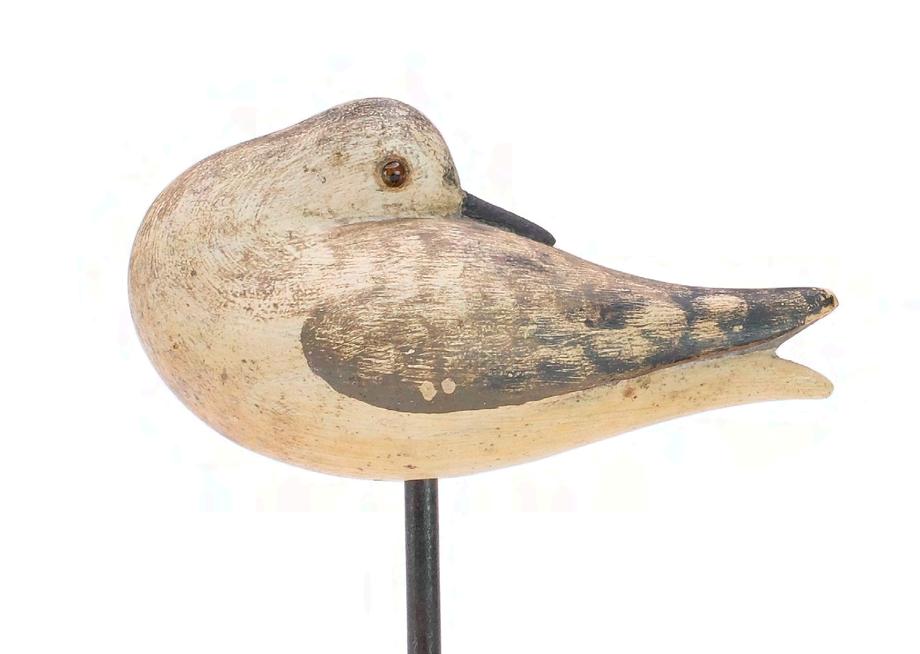





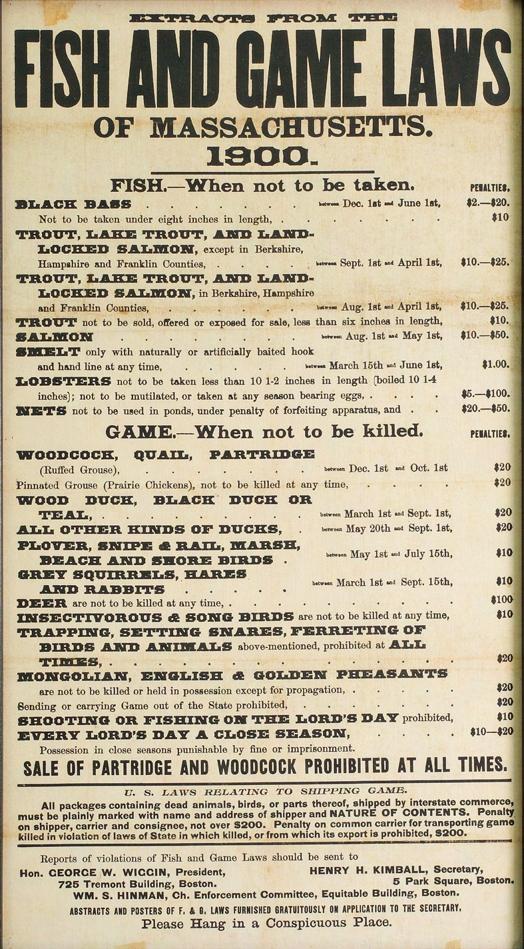


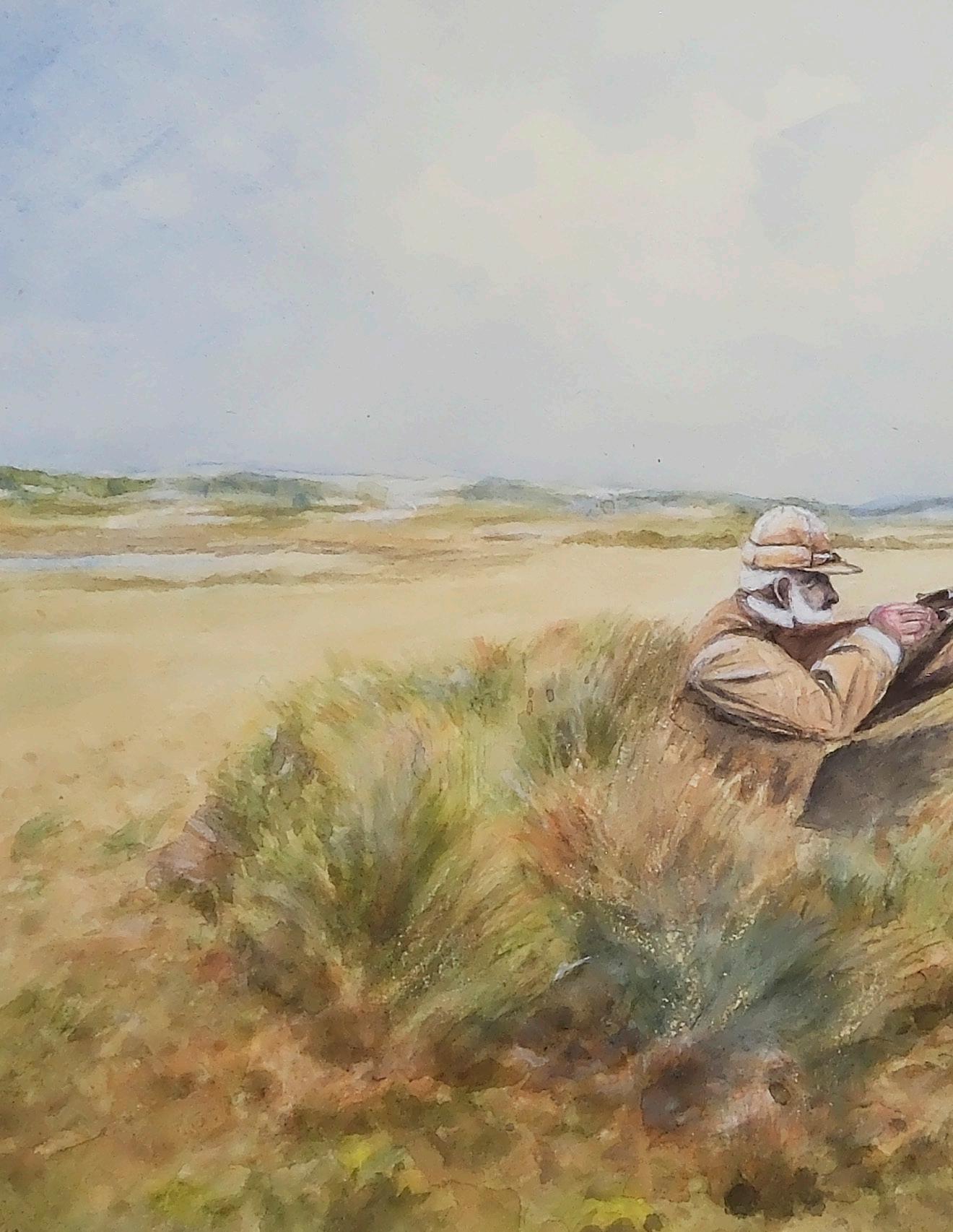
Dr E. R. Sisson (1828 – 1919) self portrait, Shorebird Hunting, Westport, MA.
